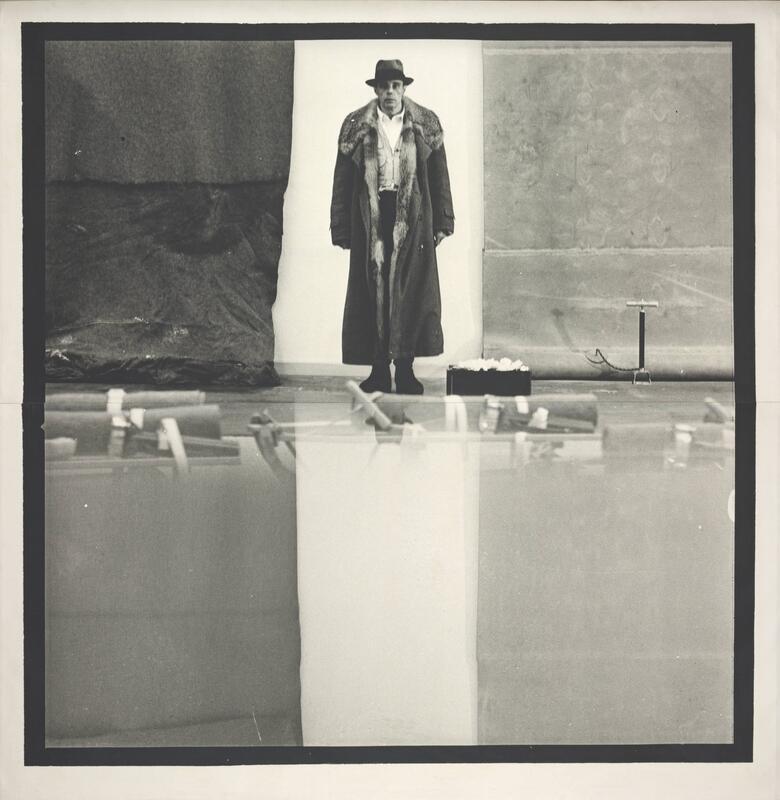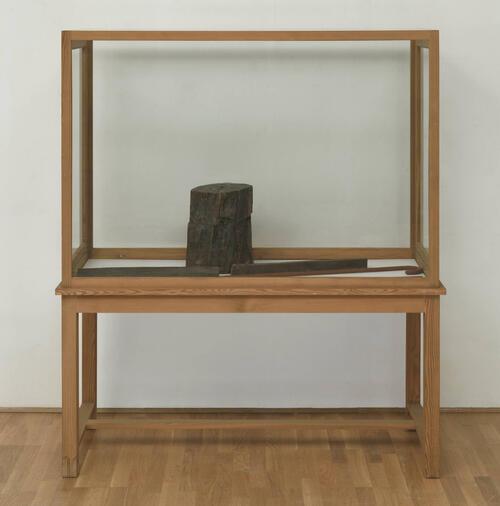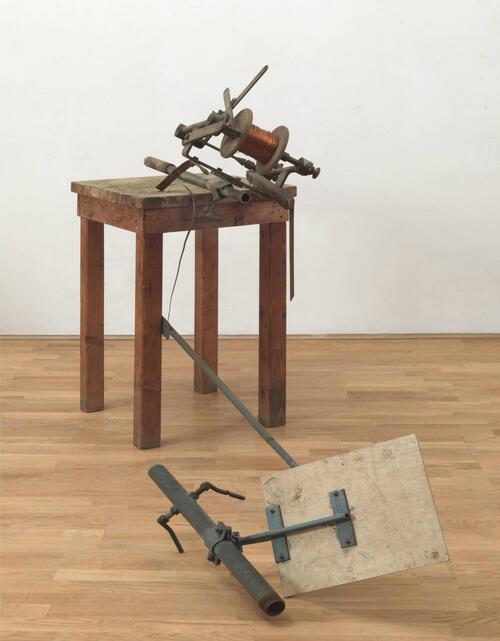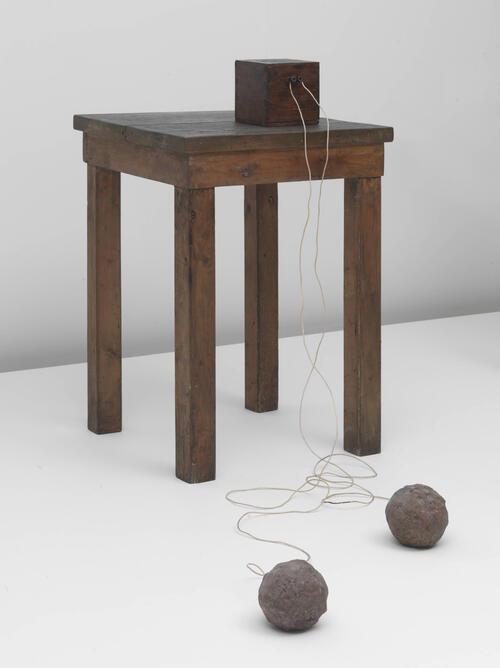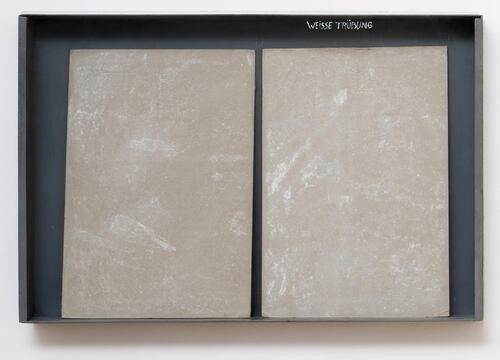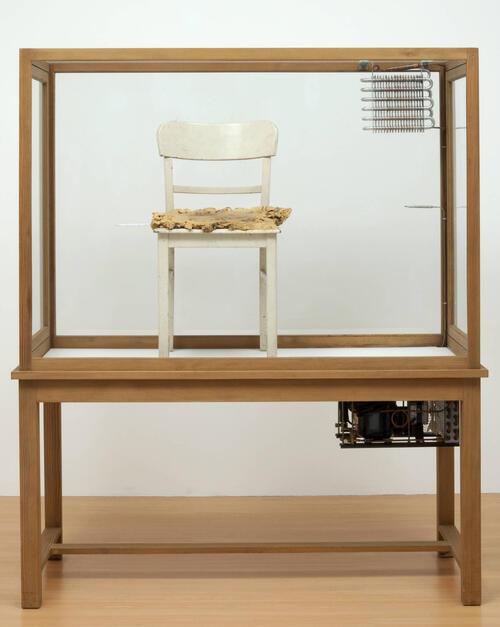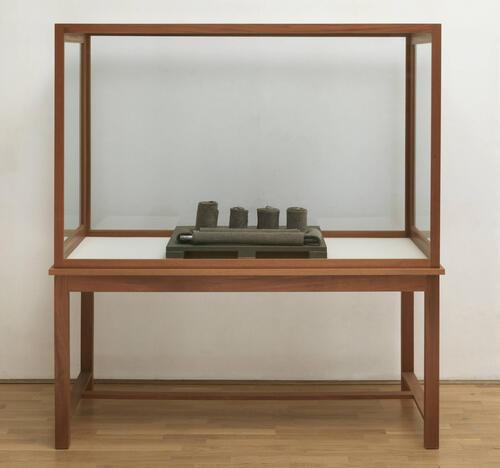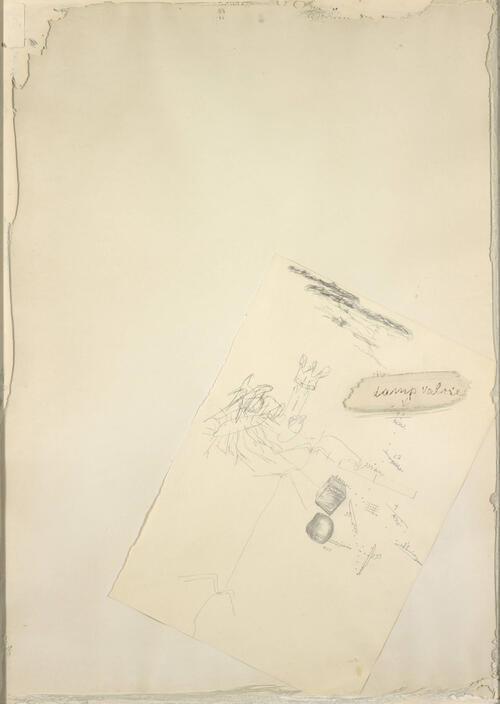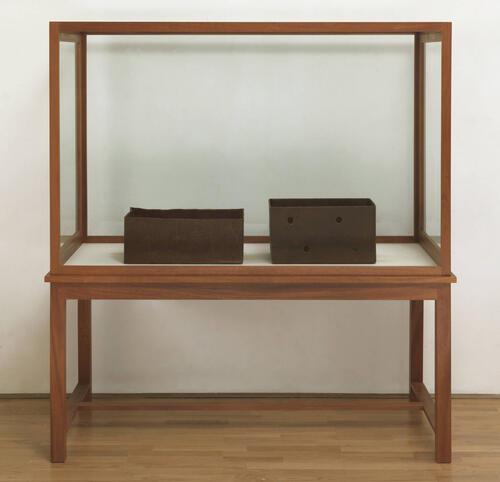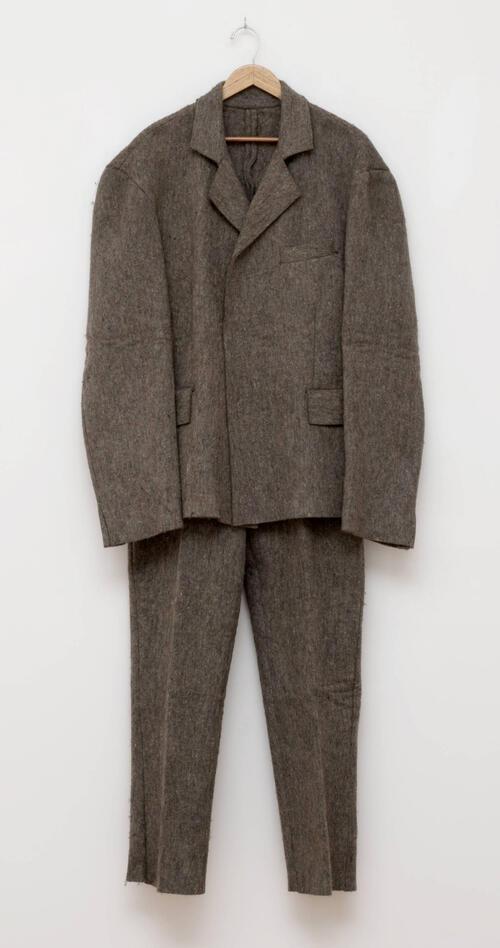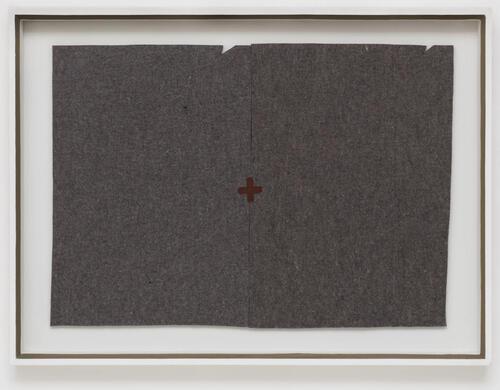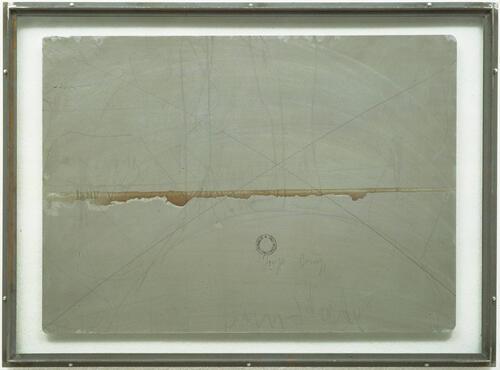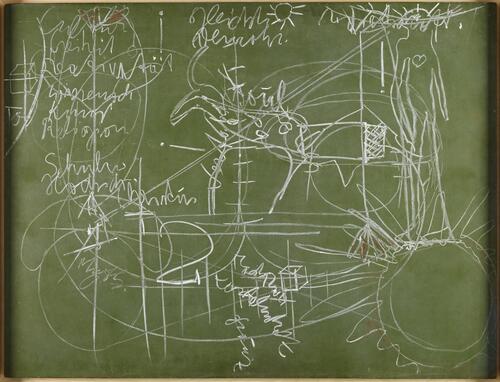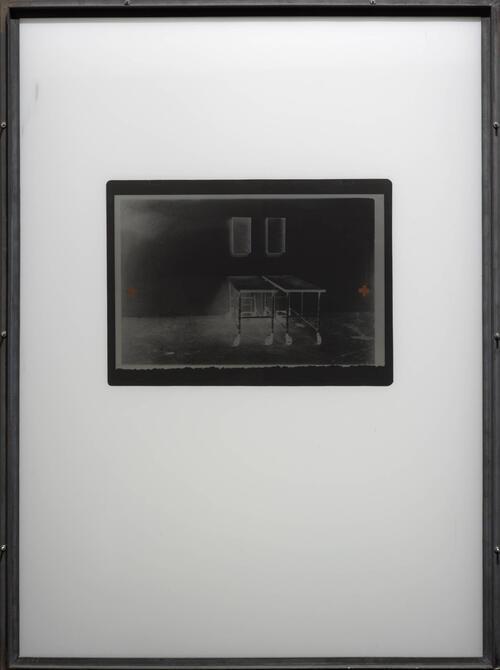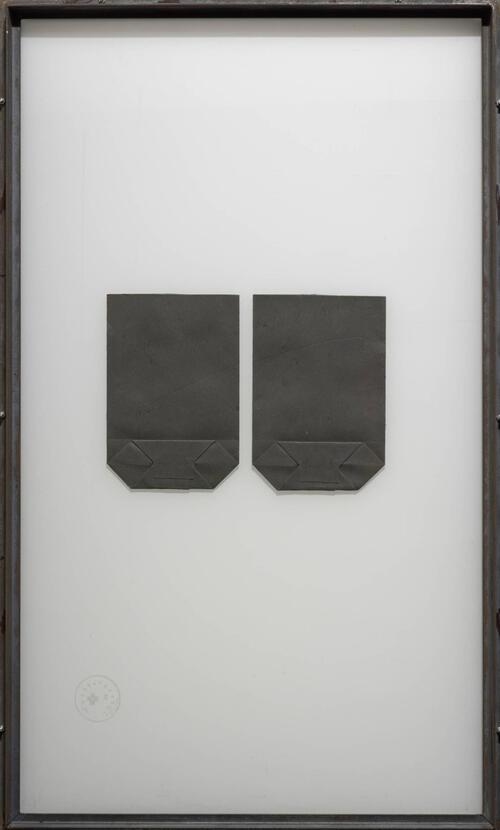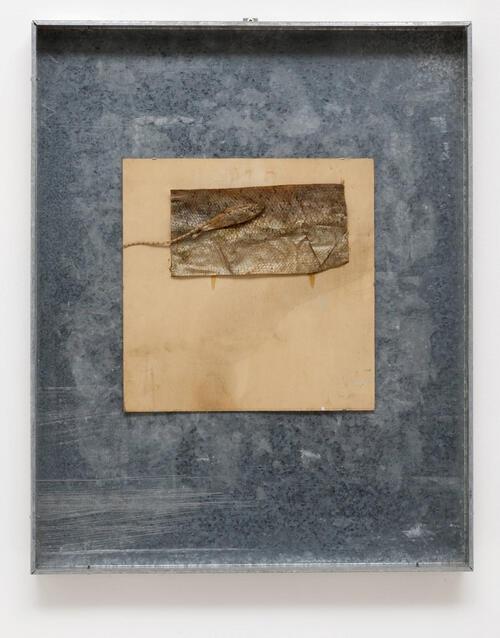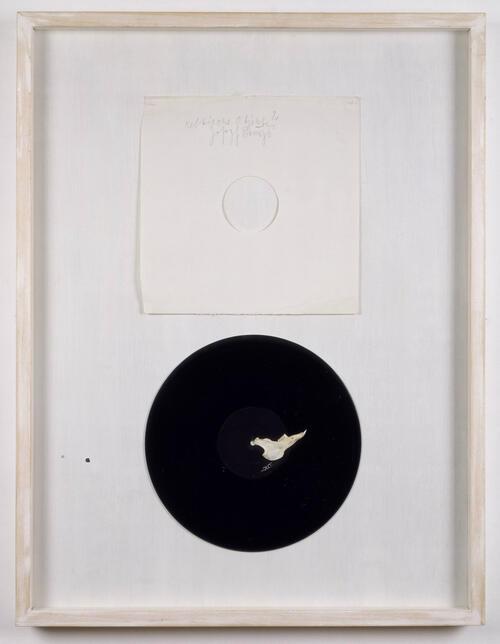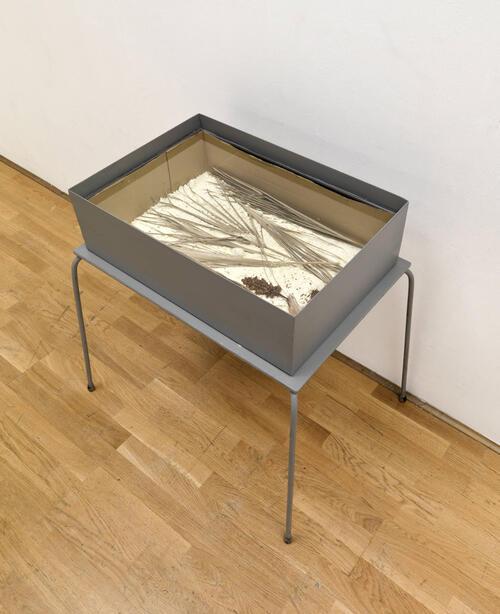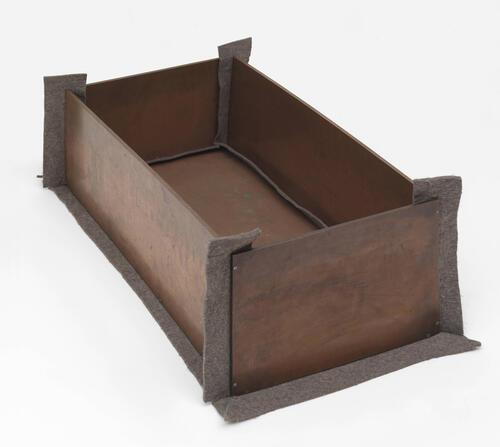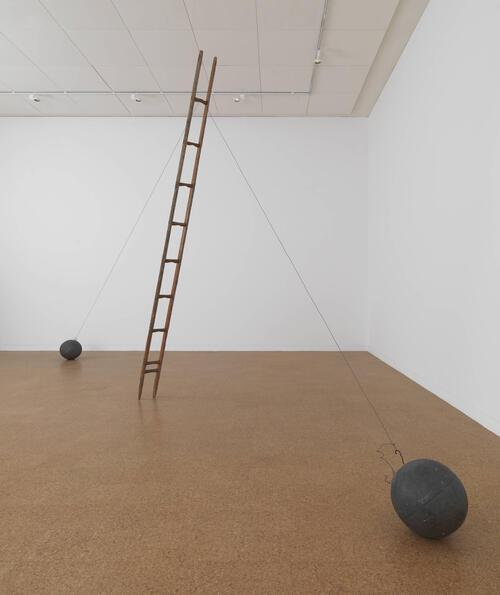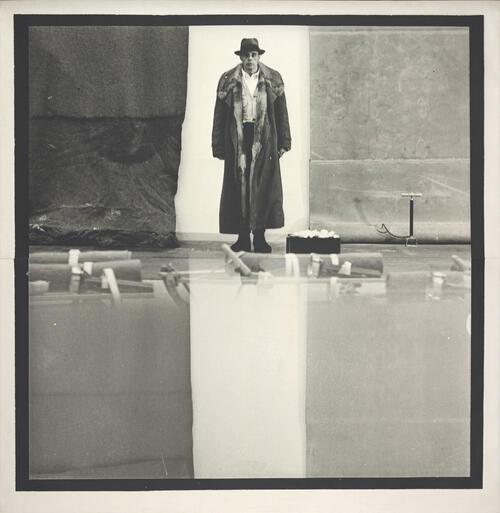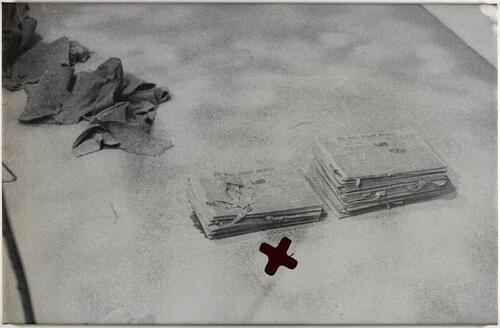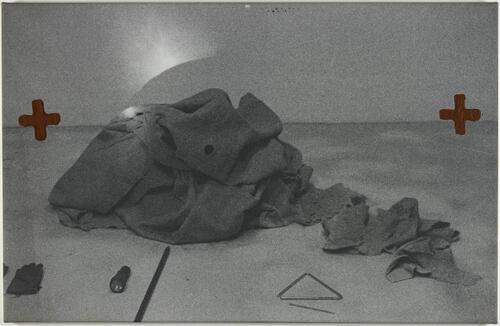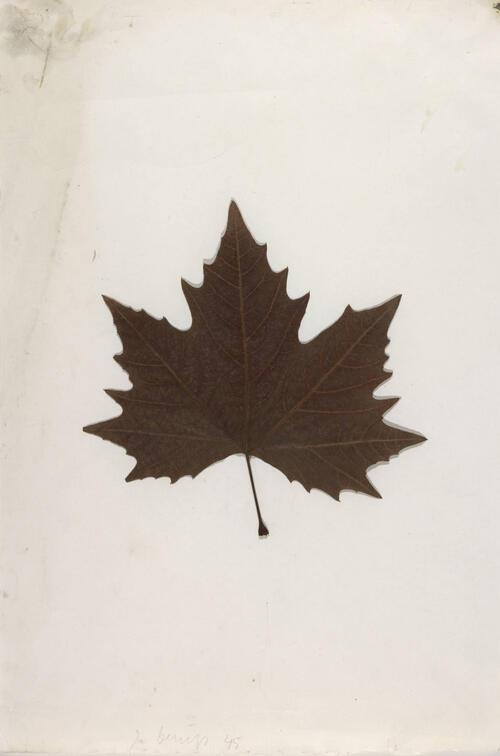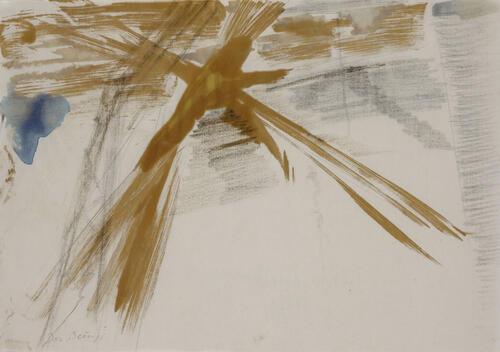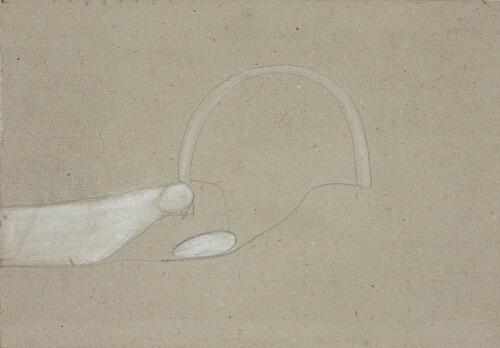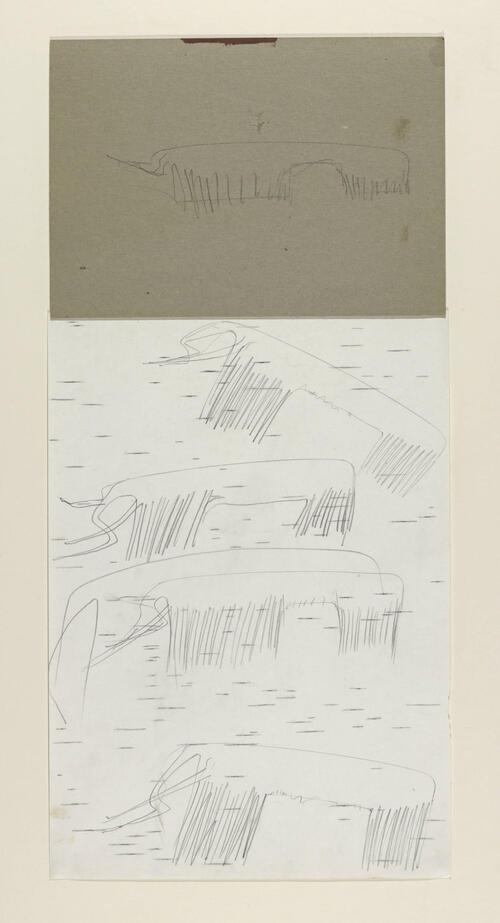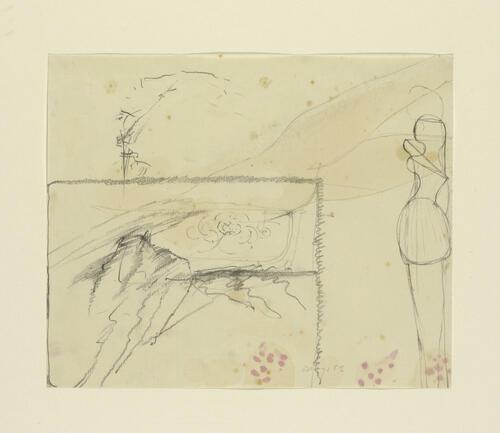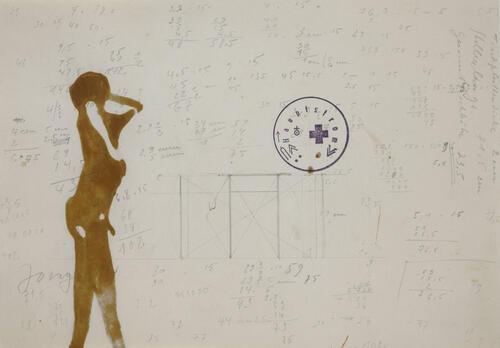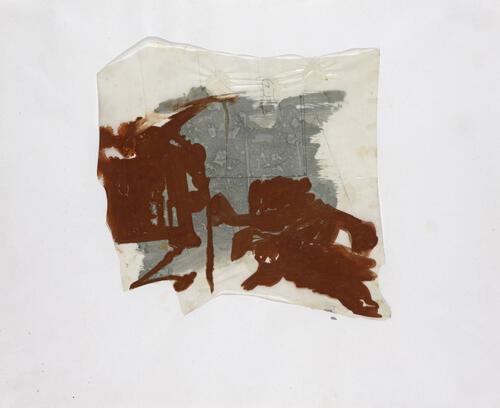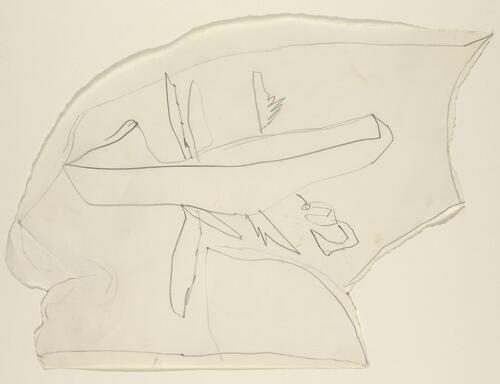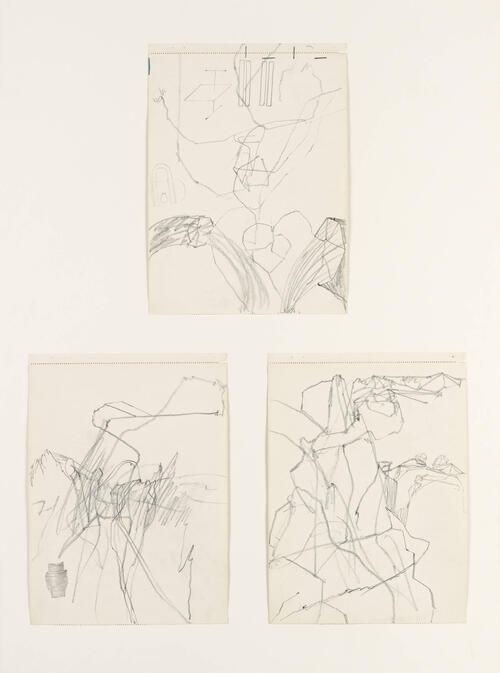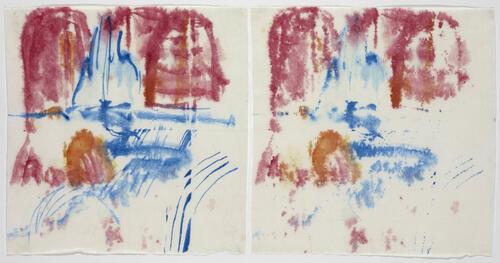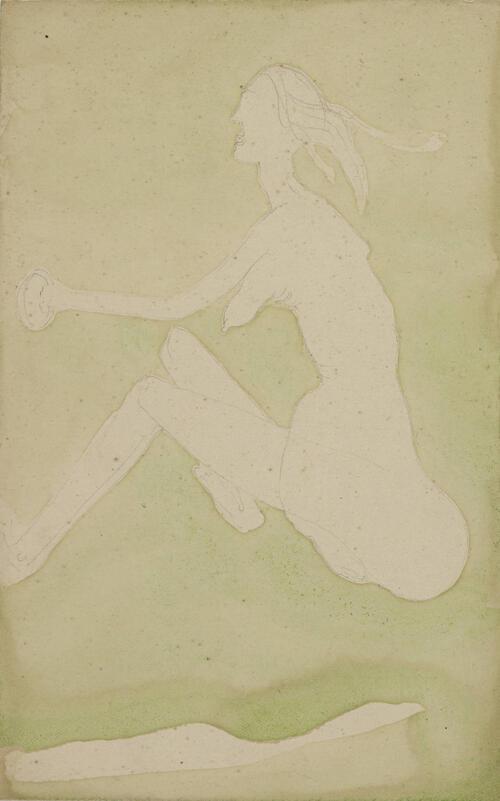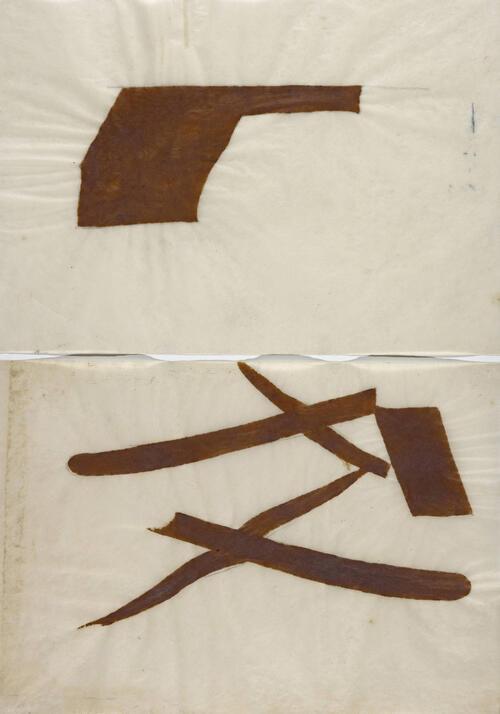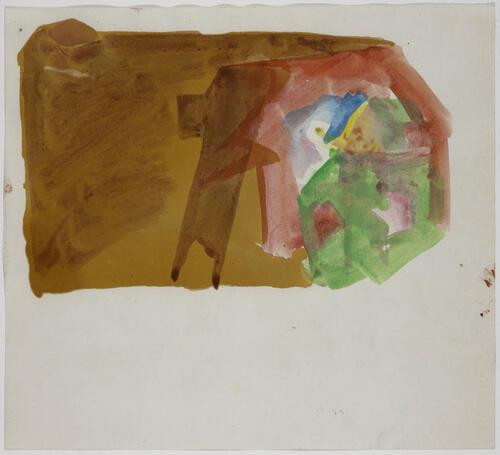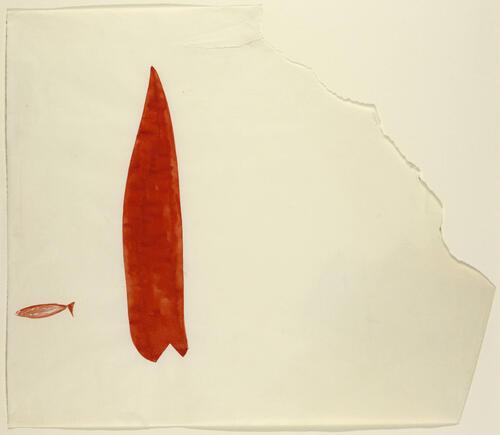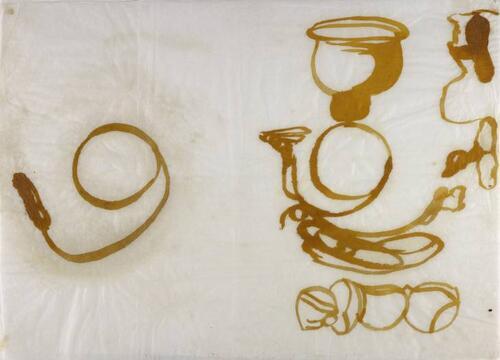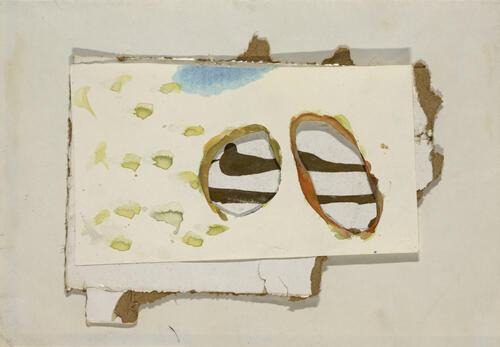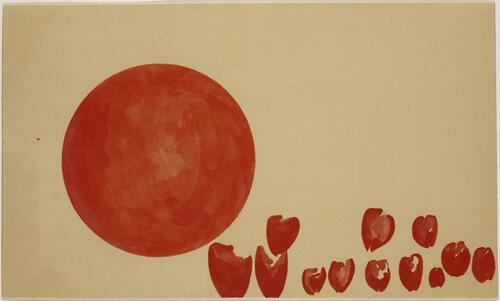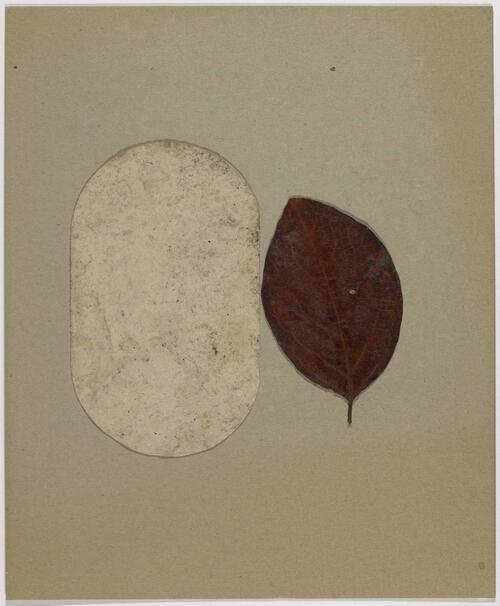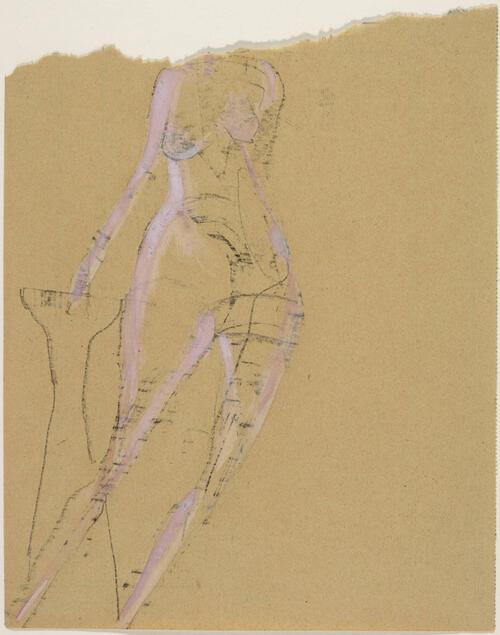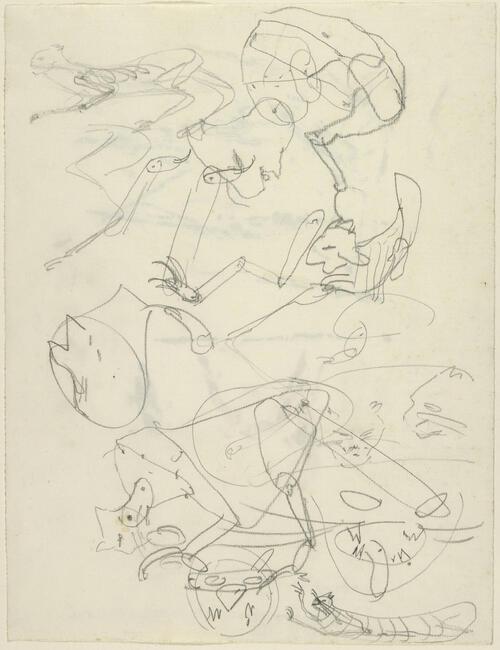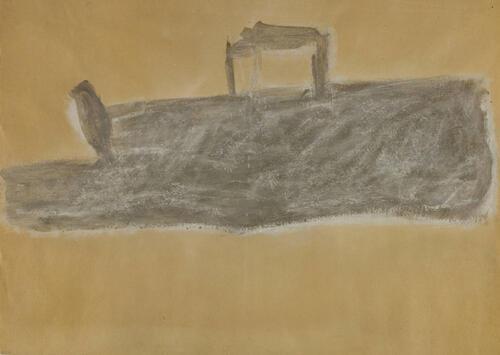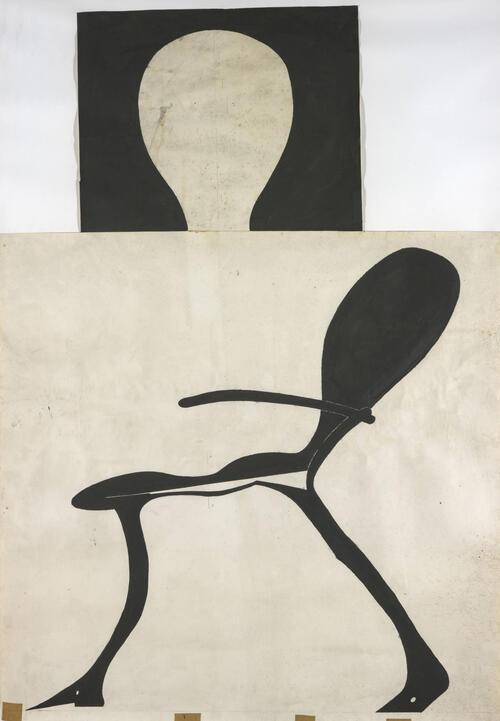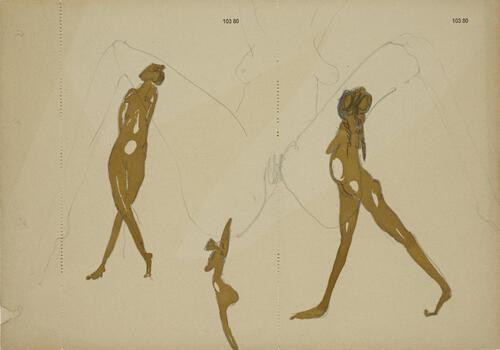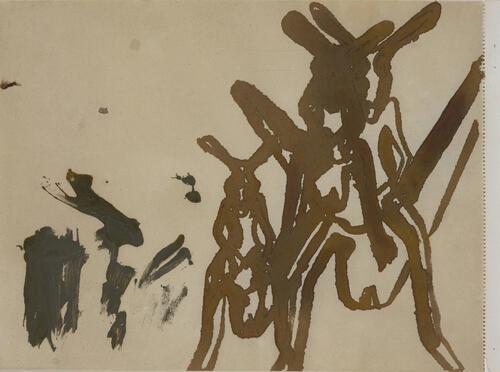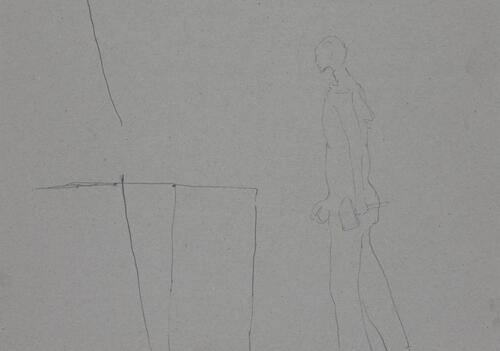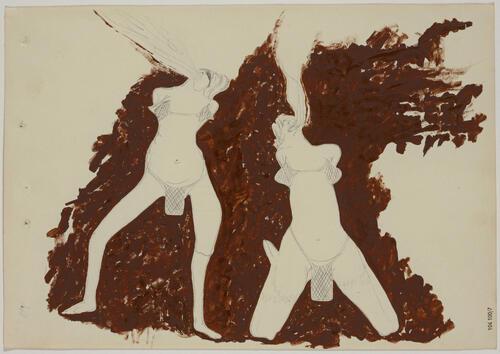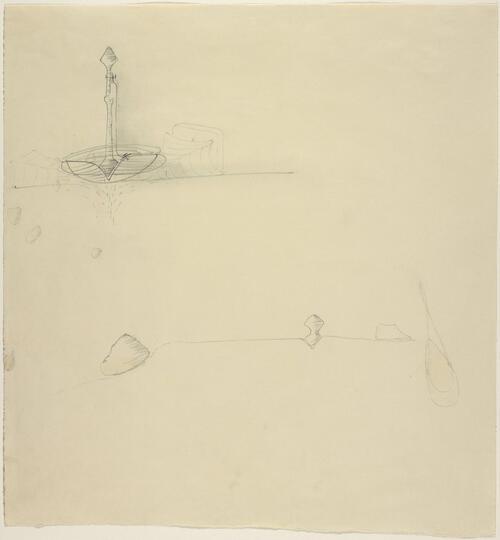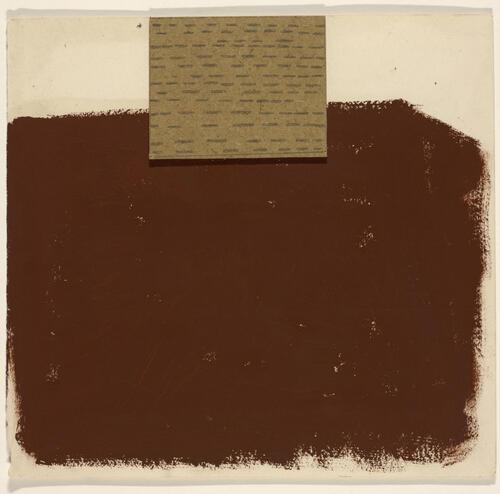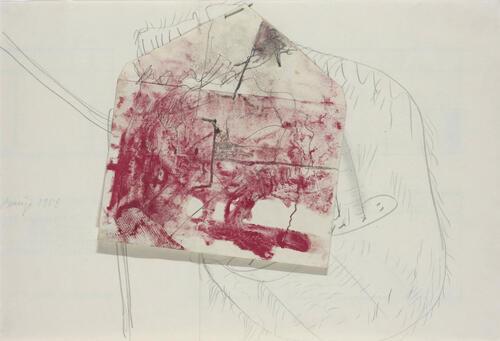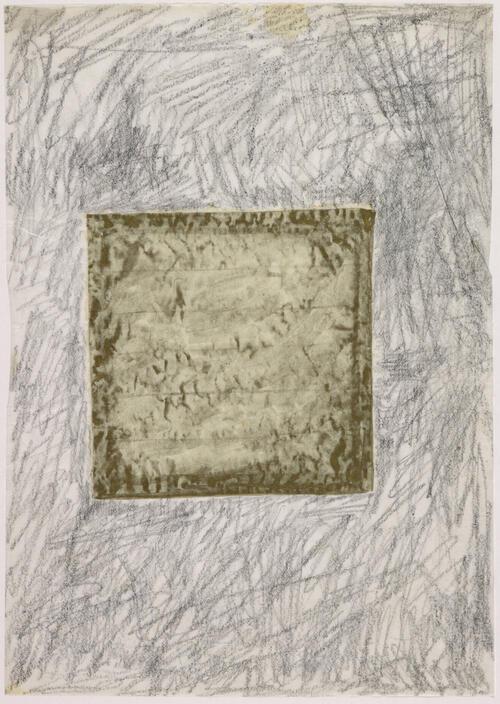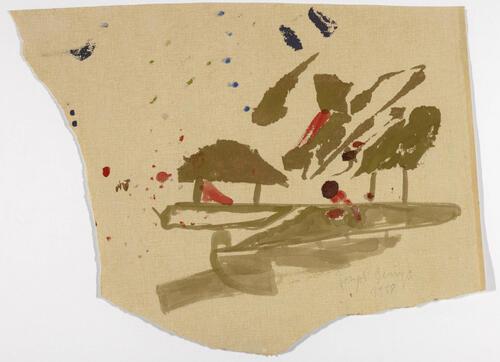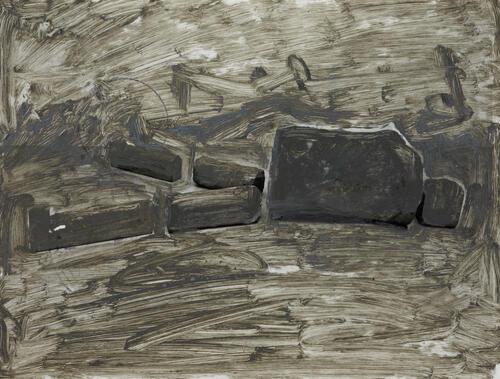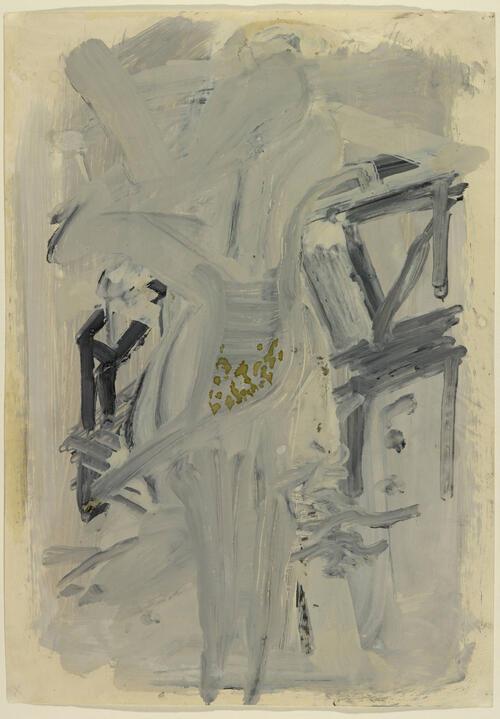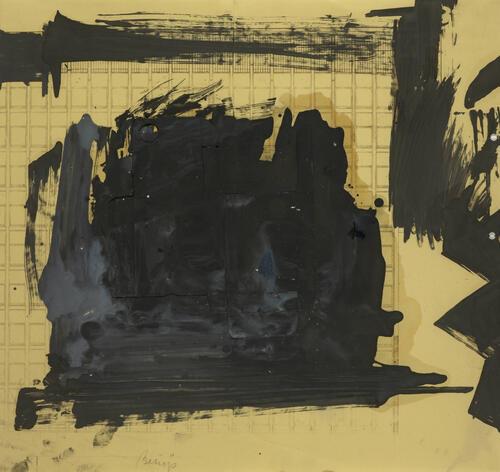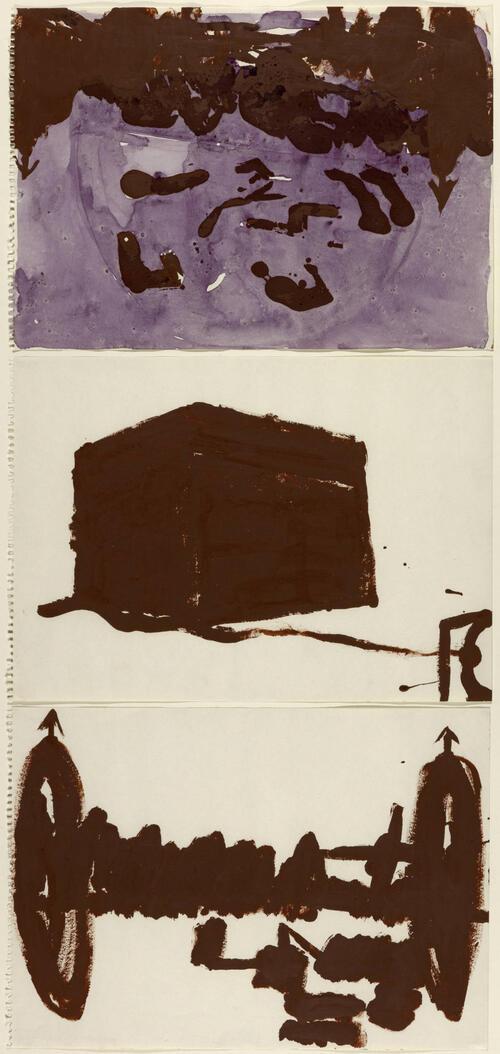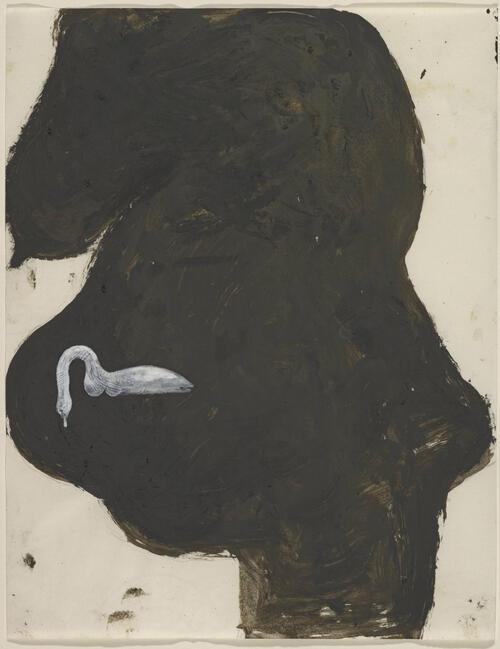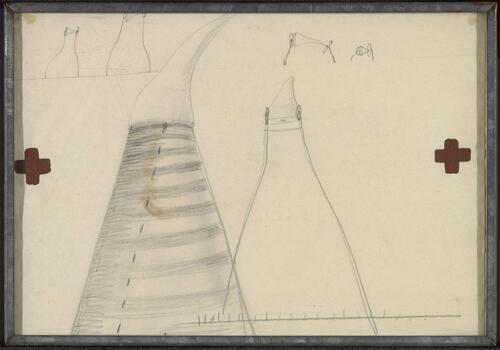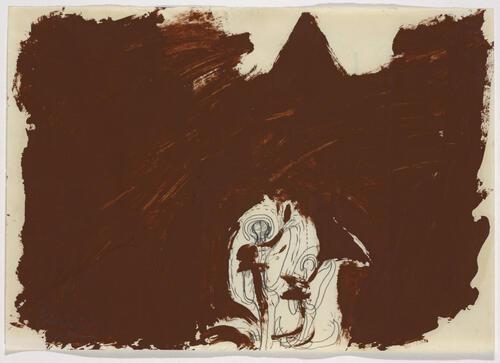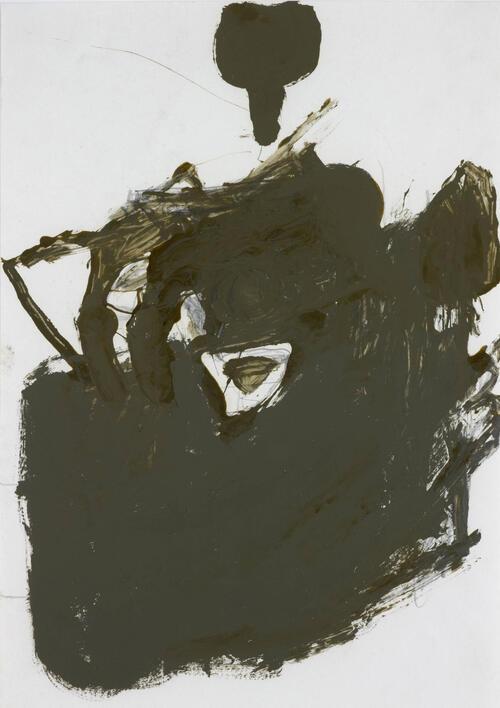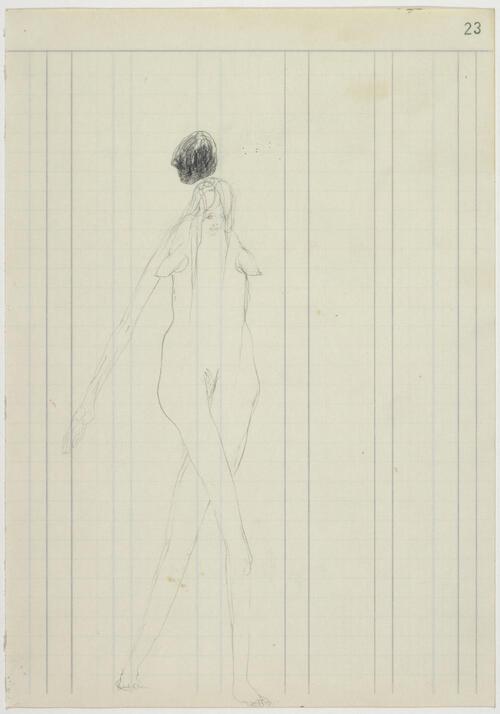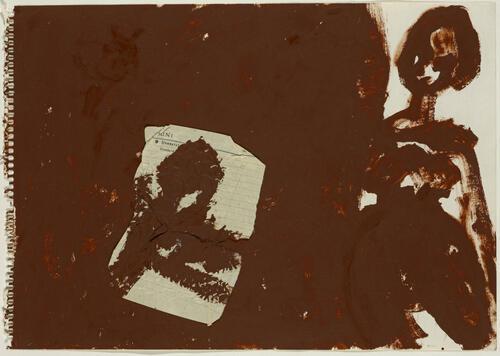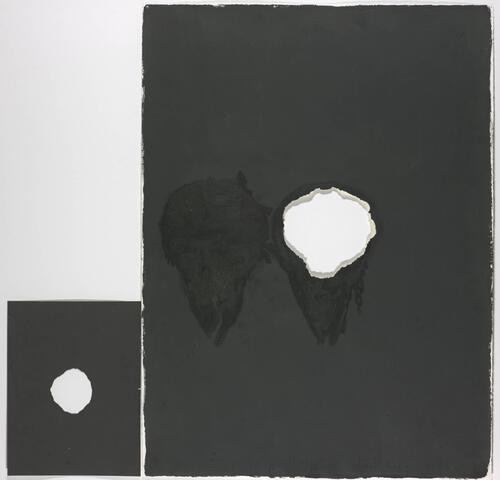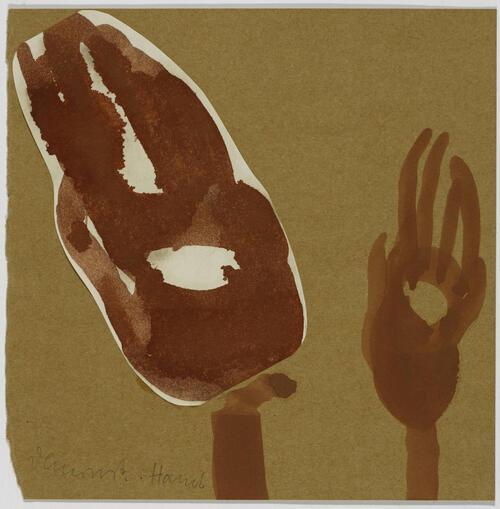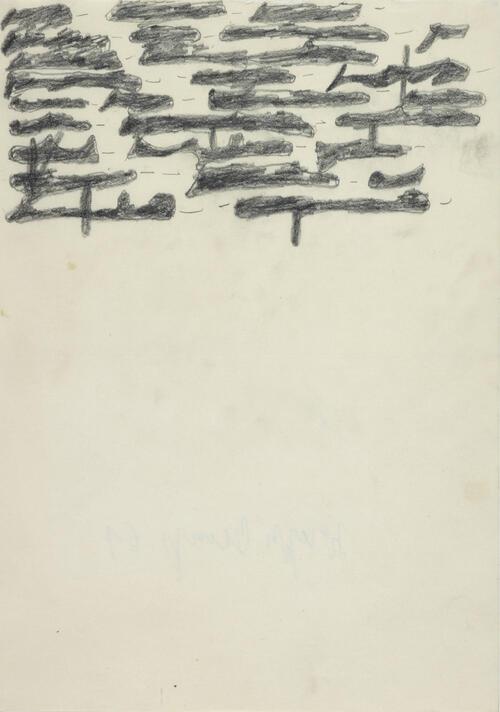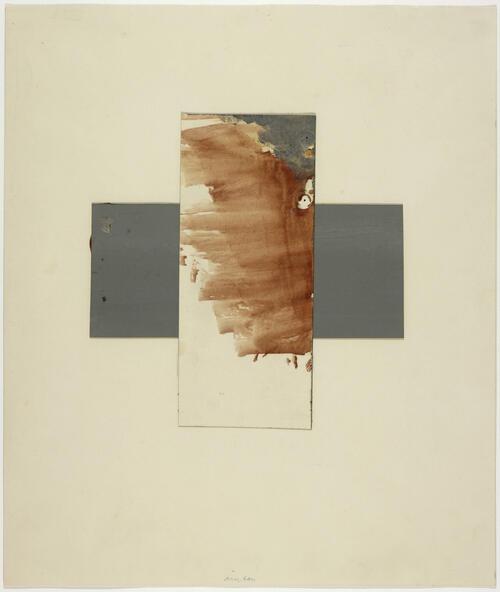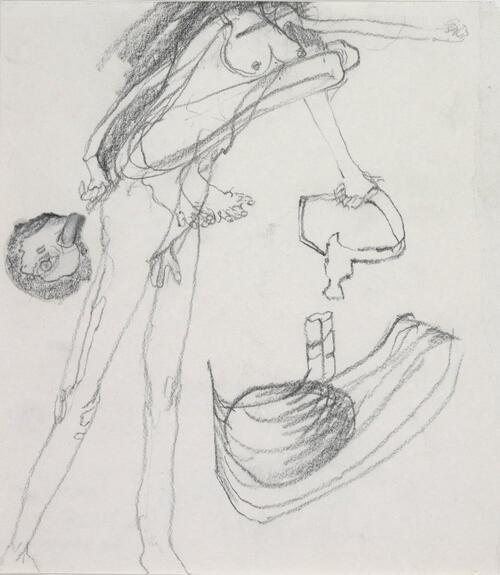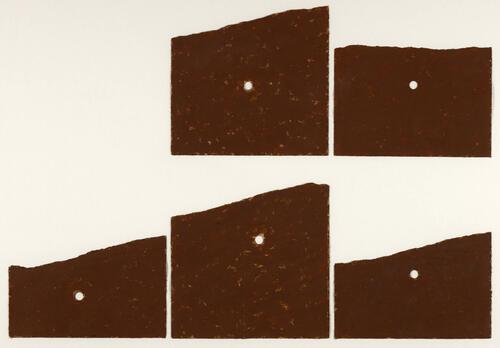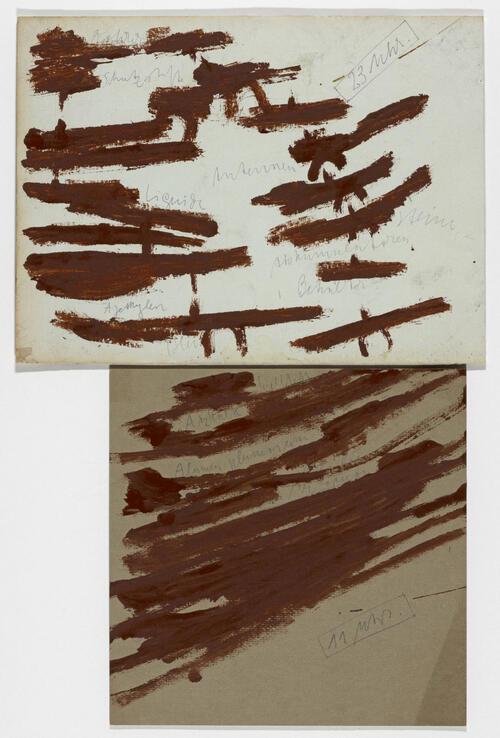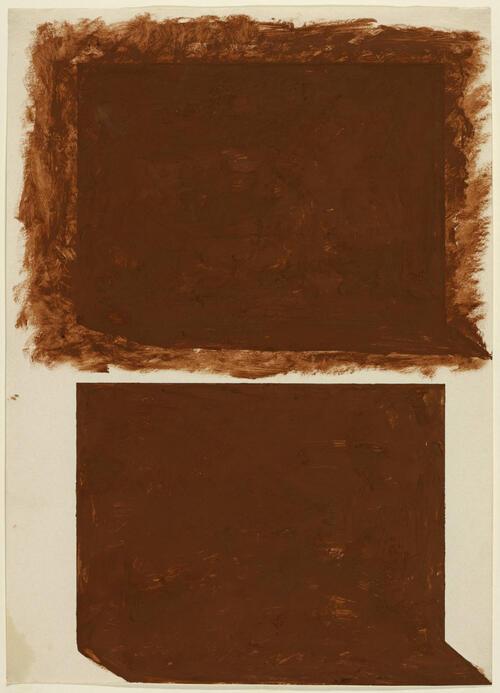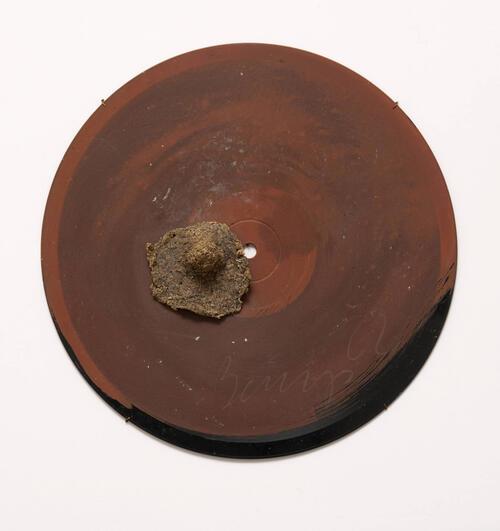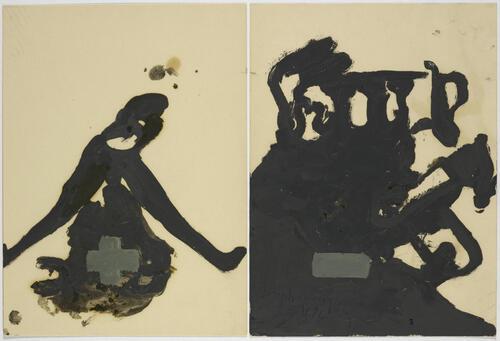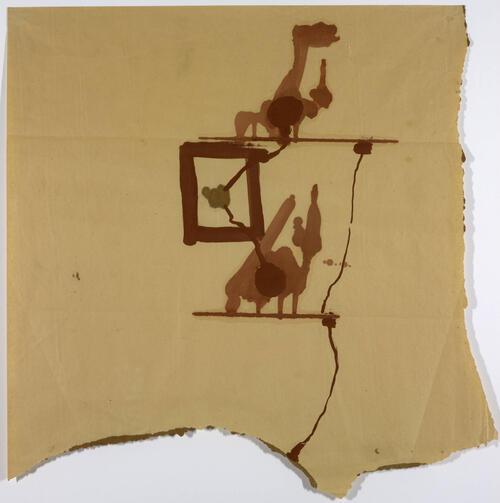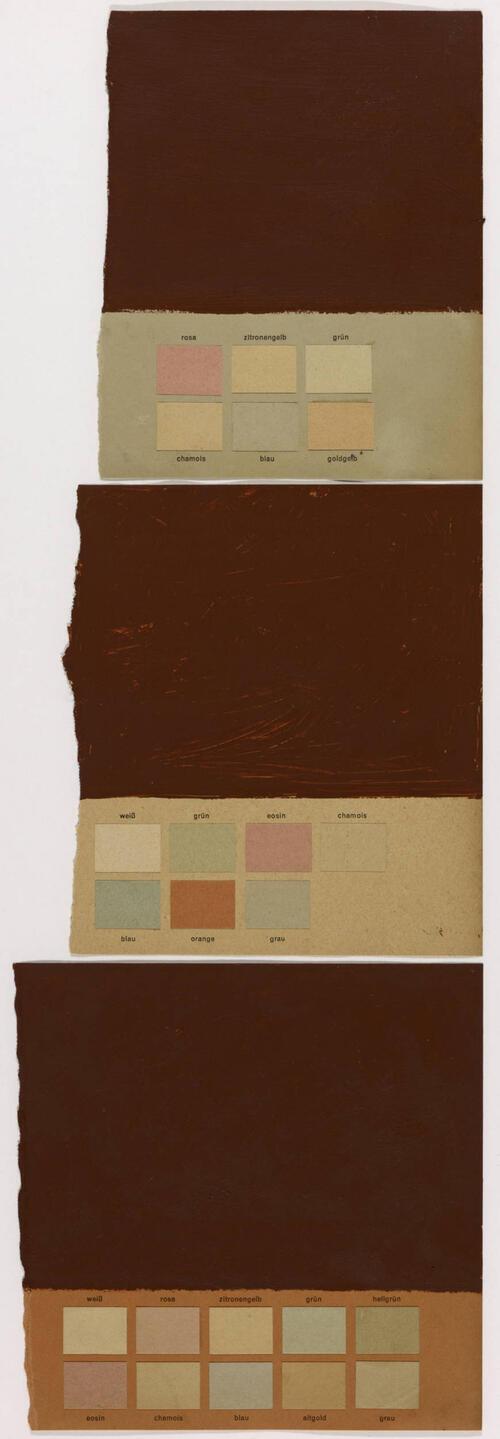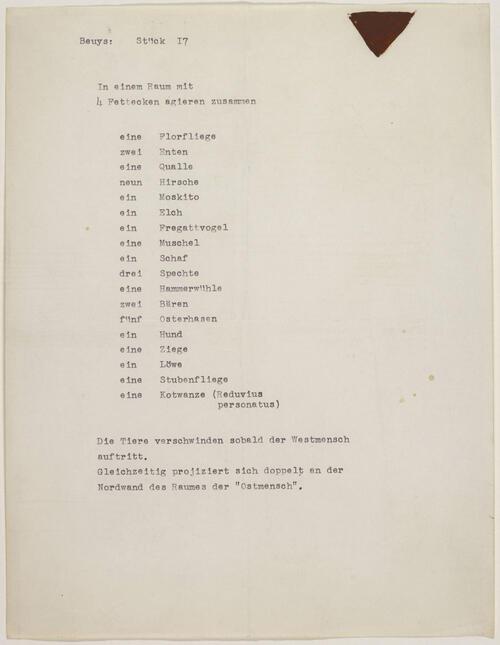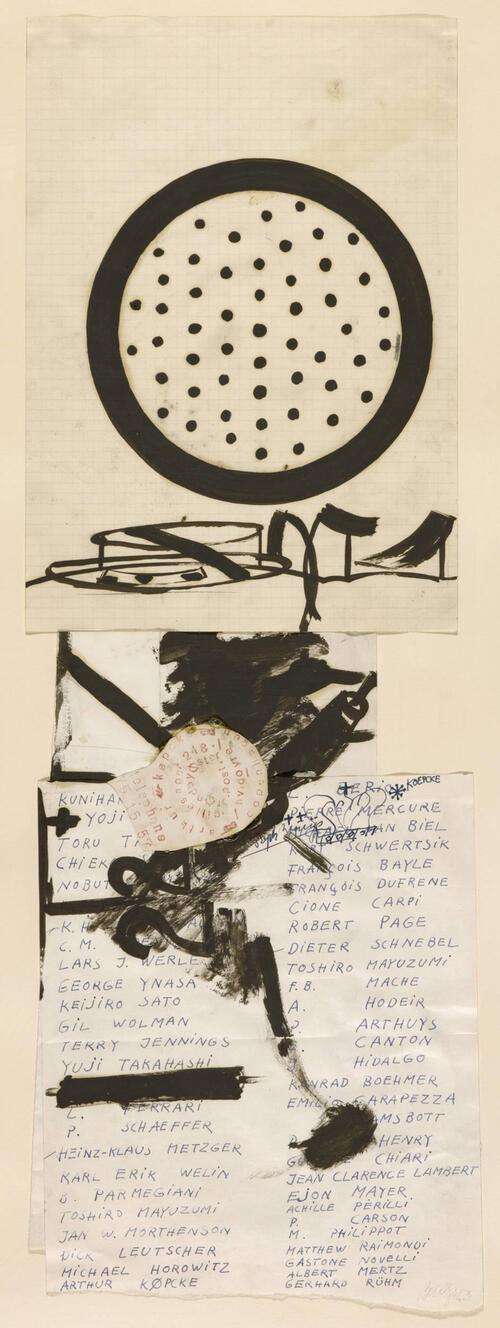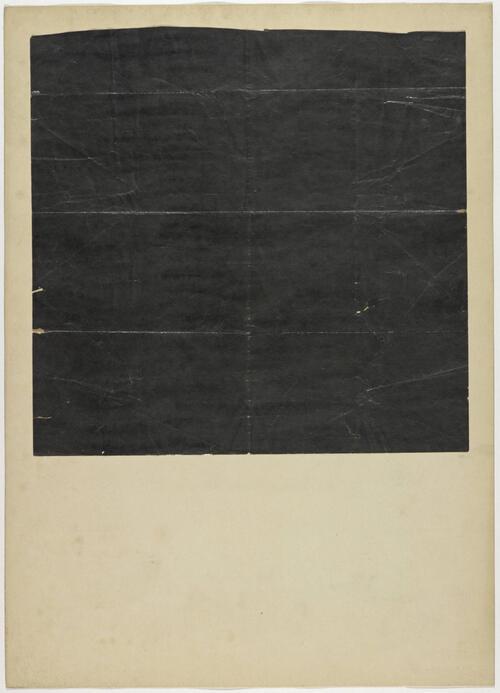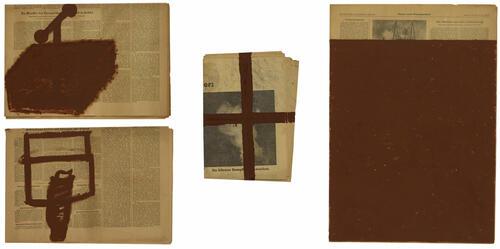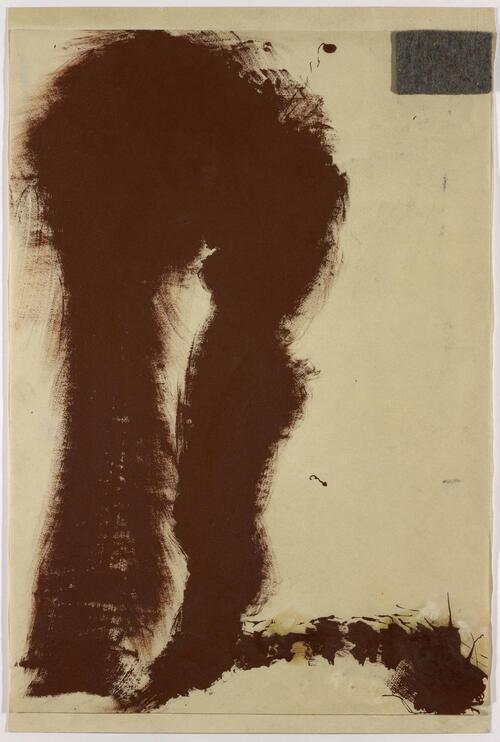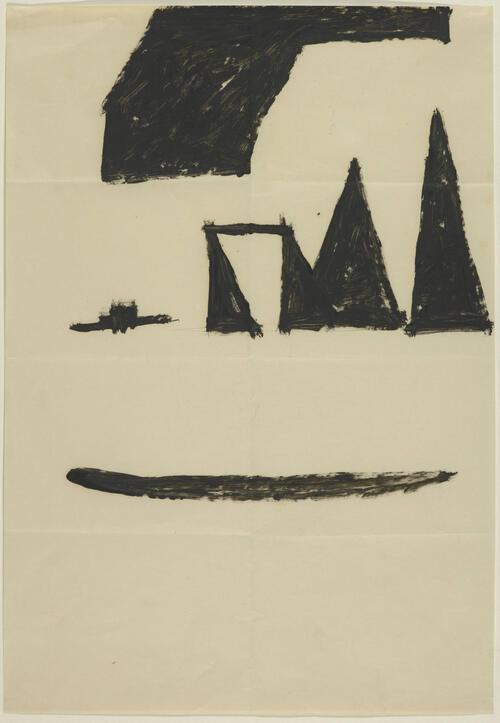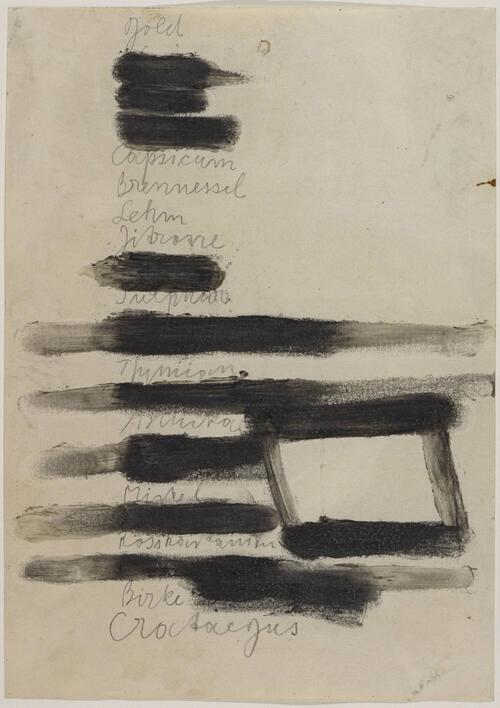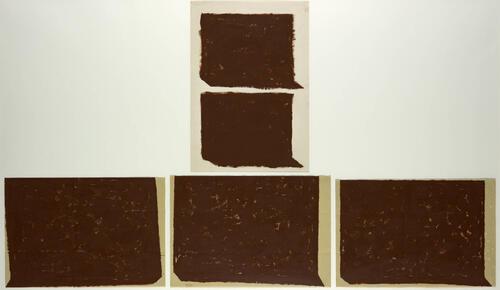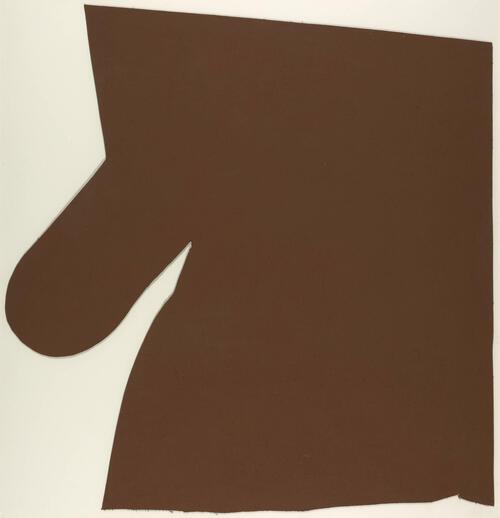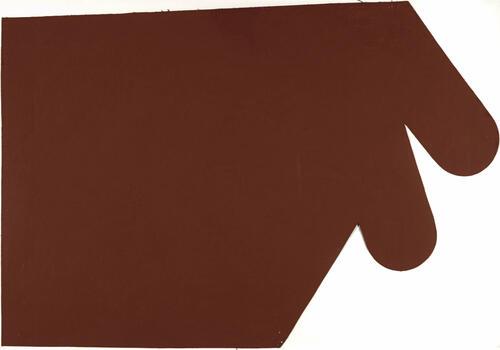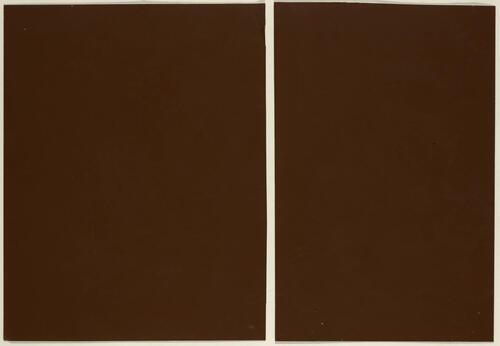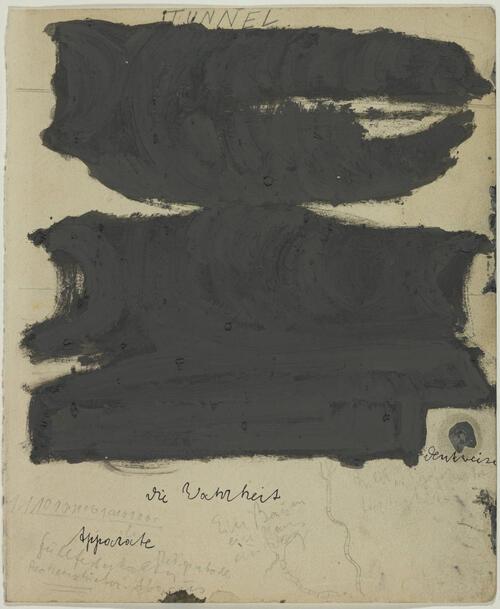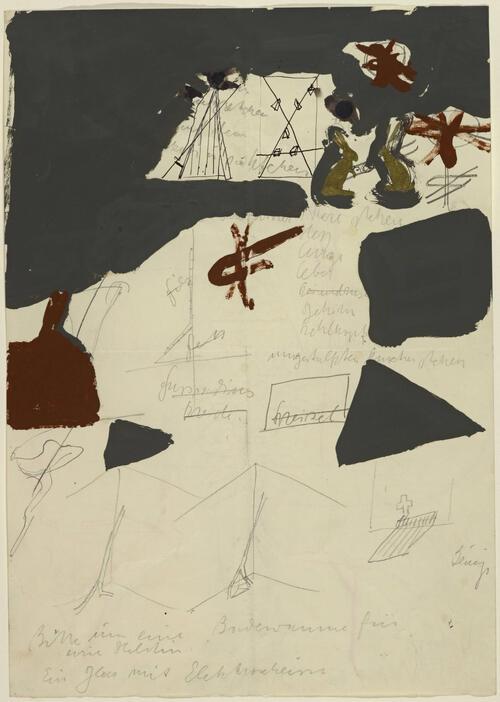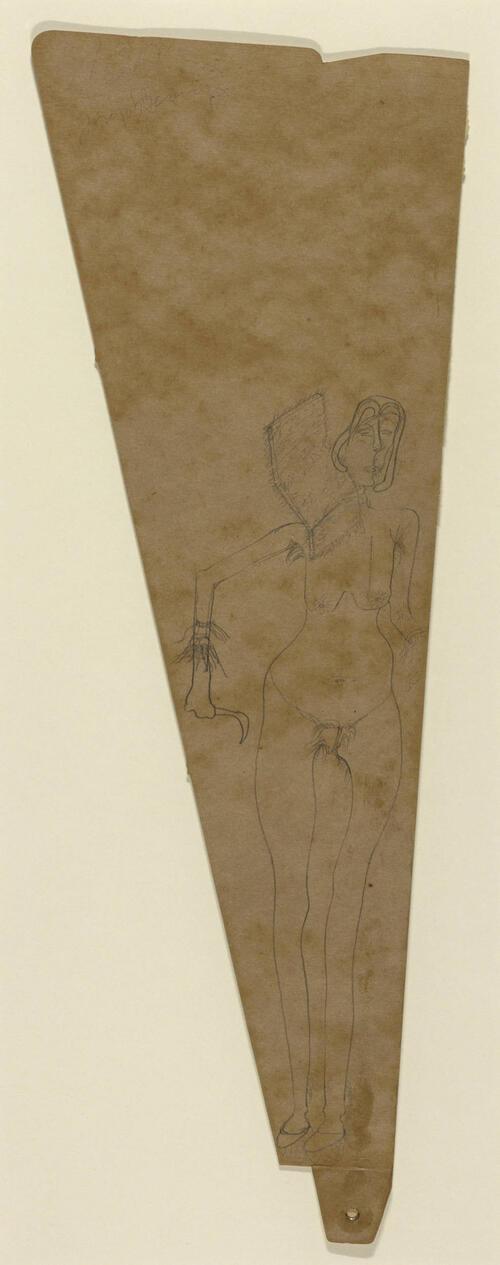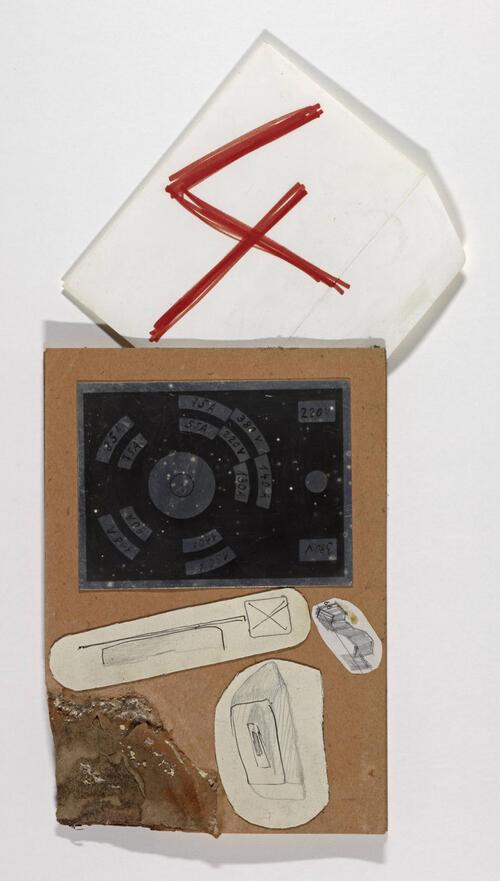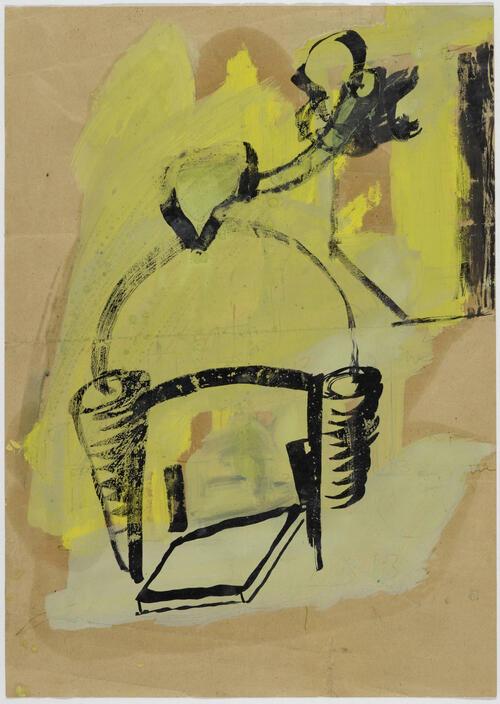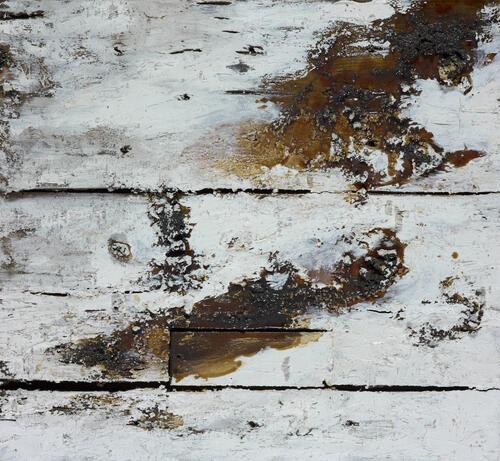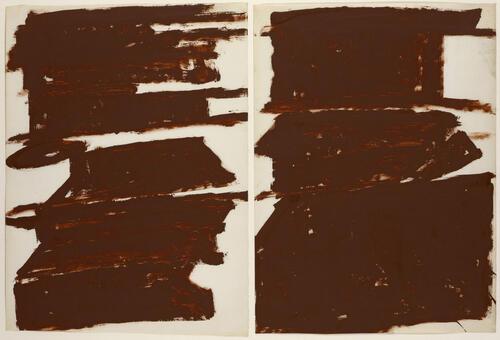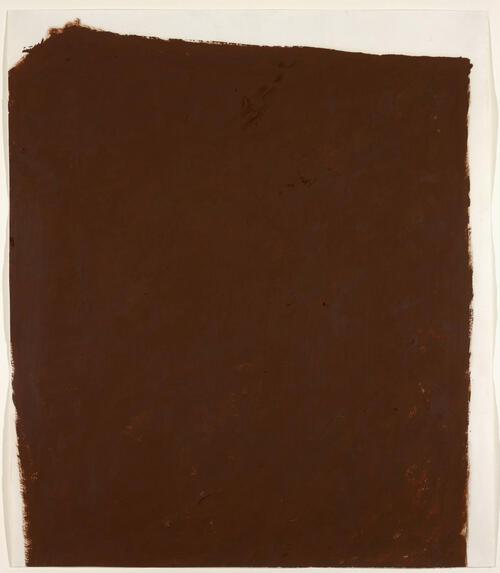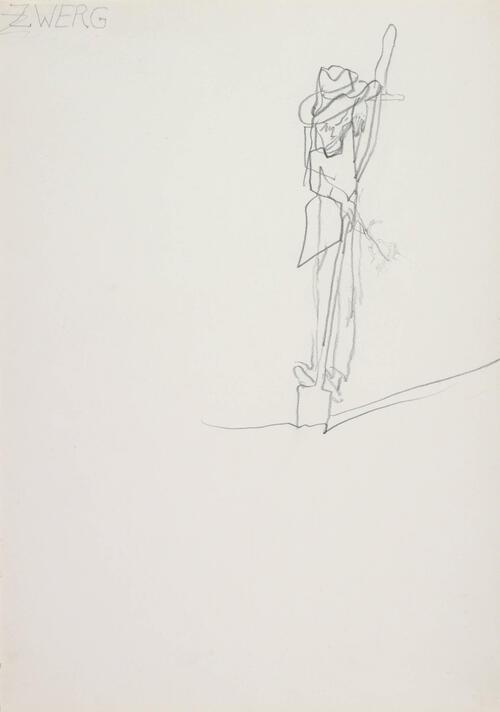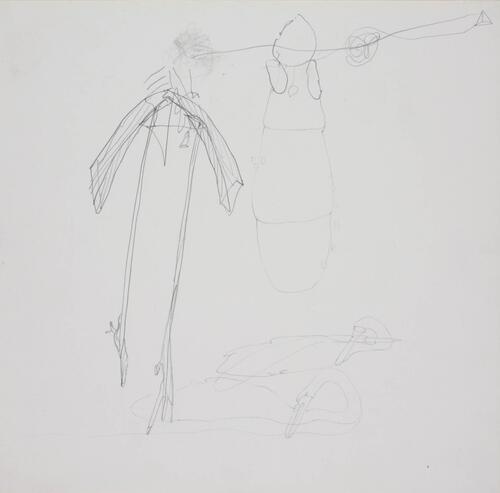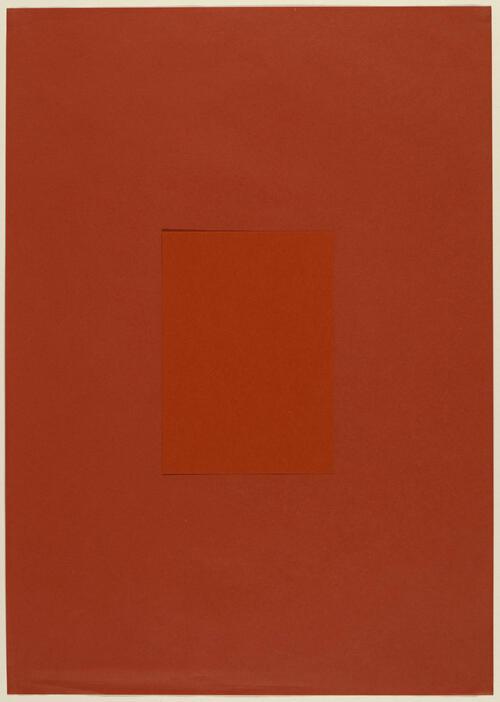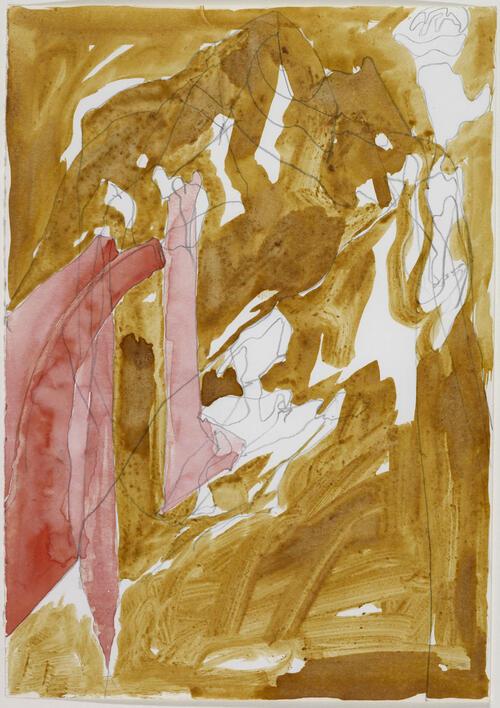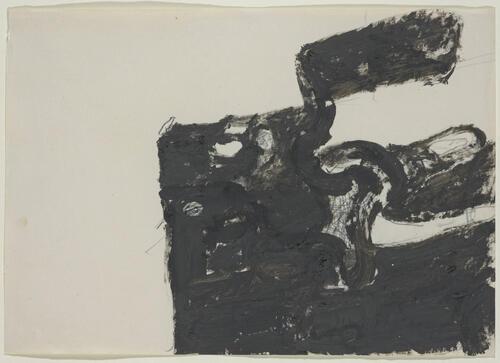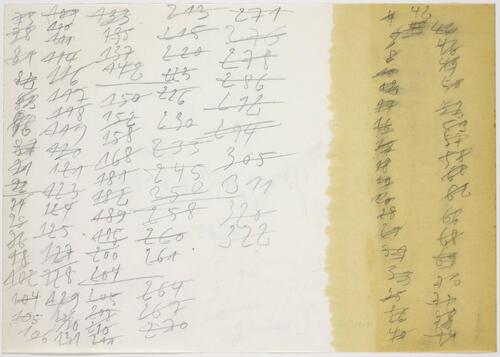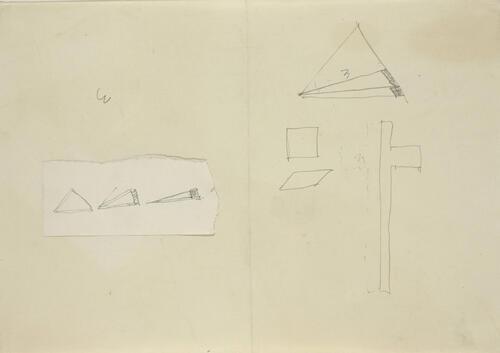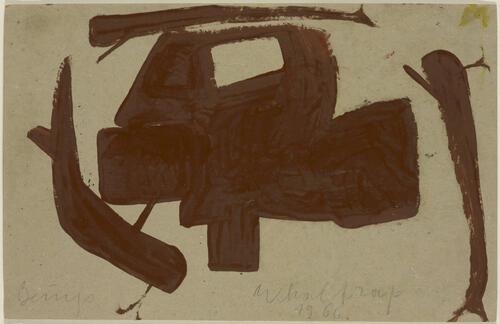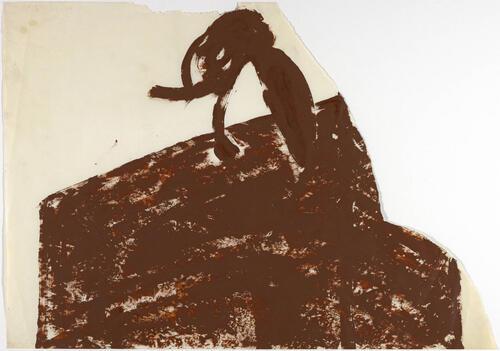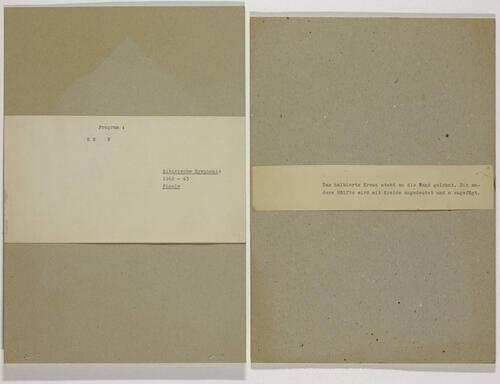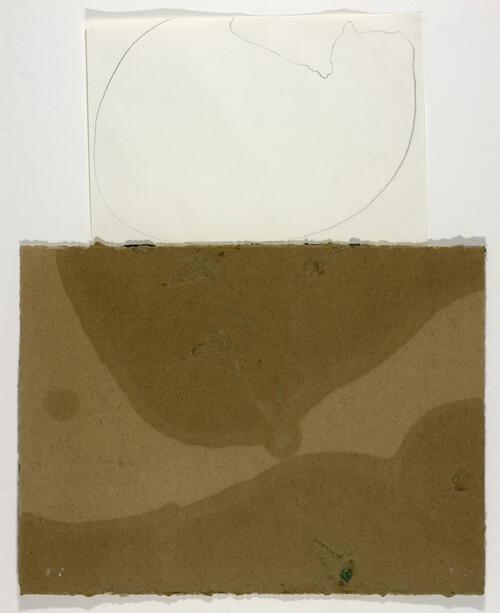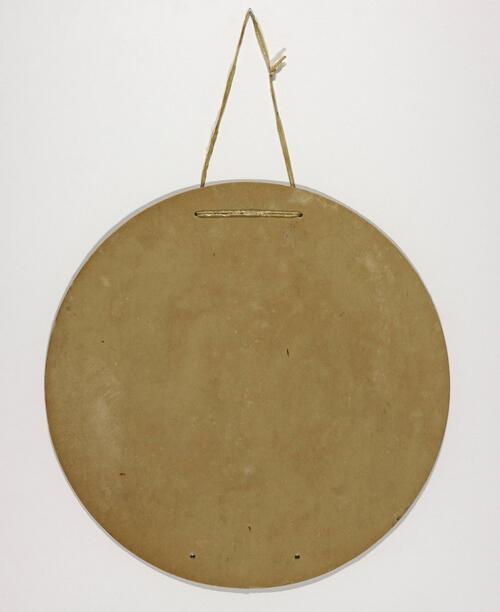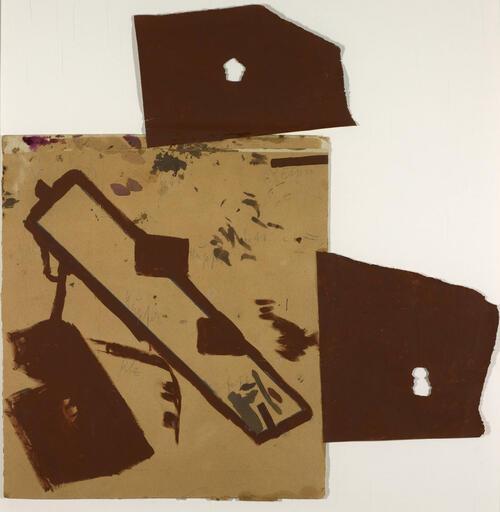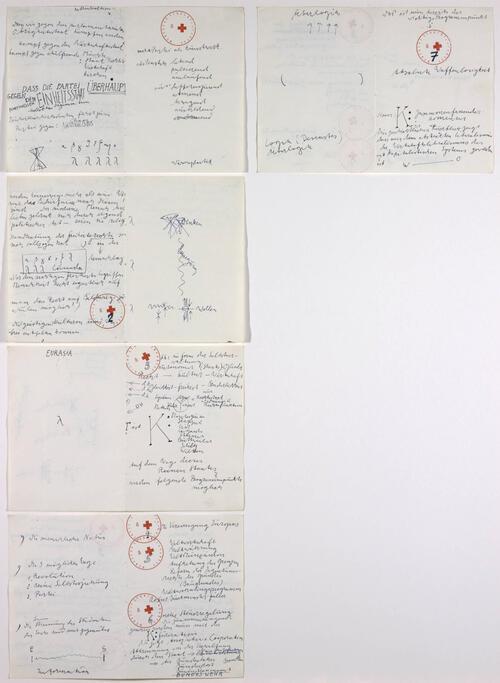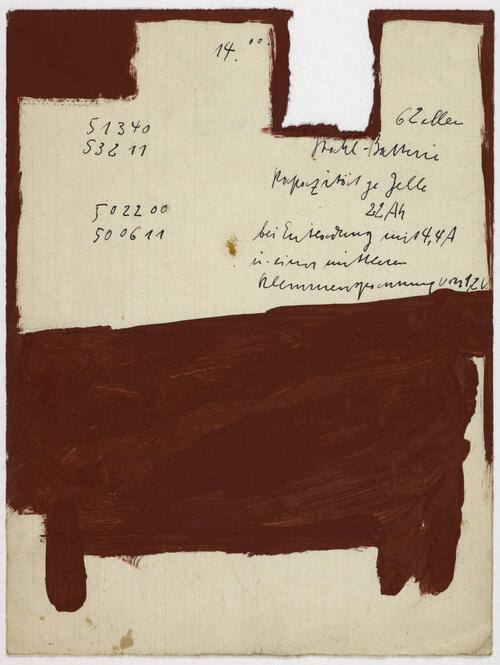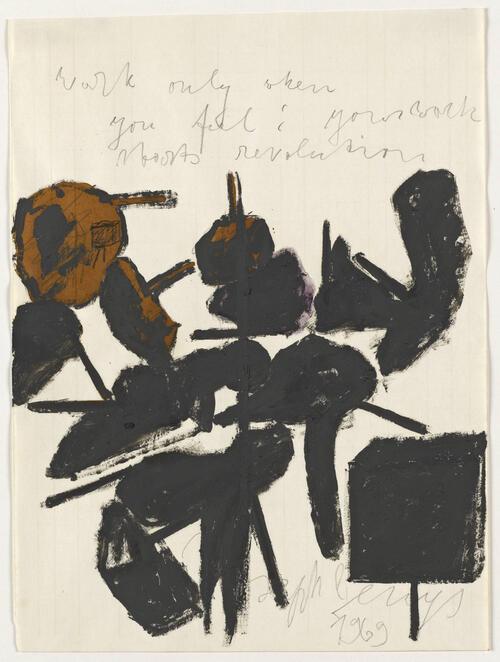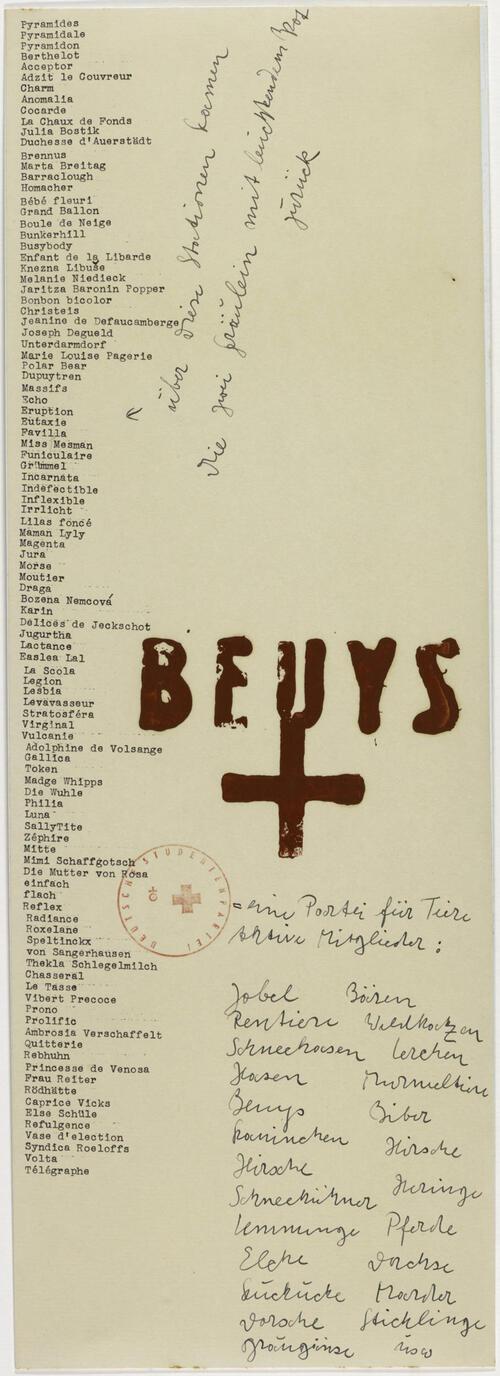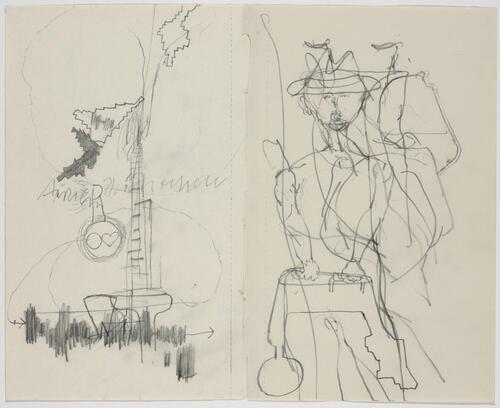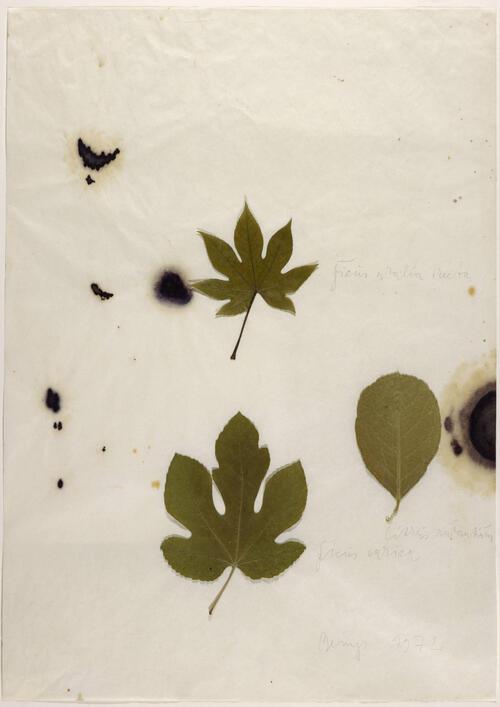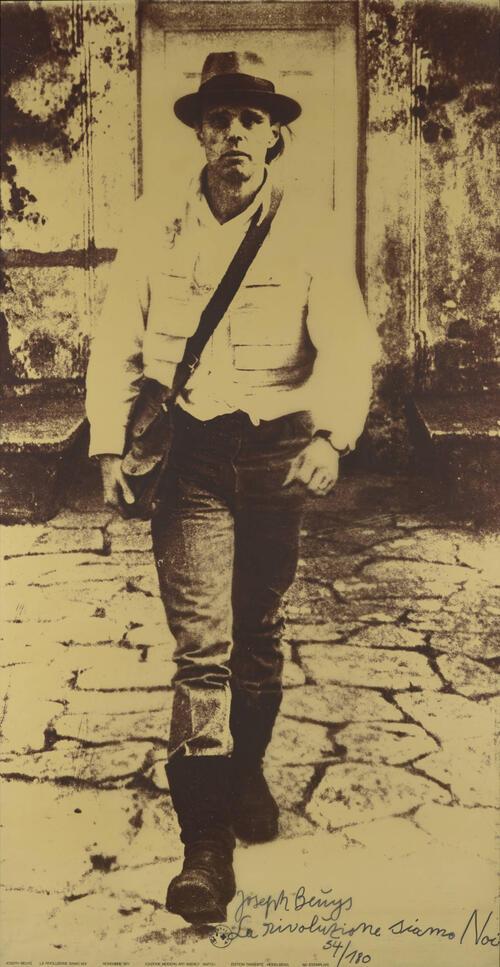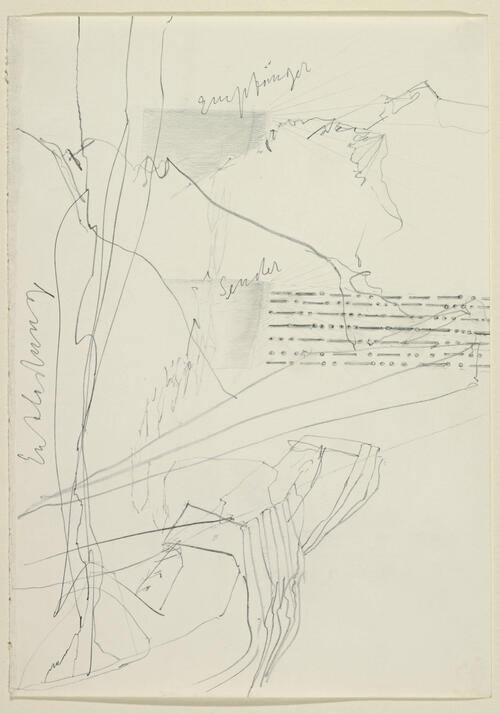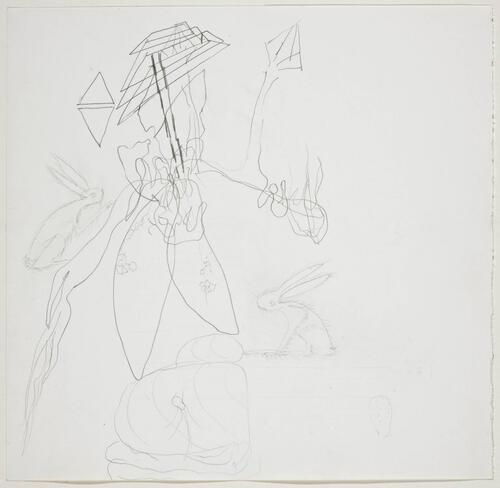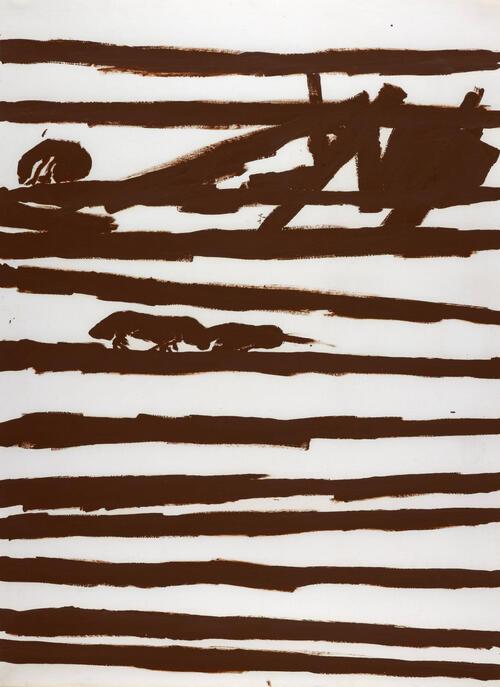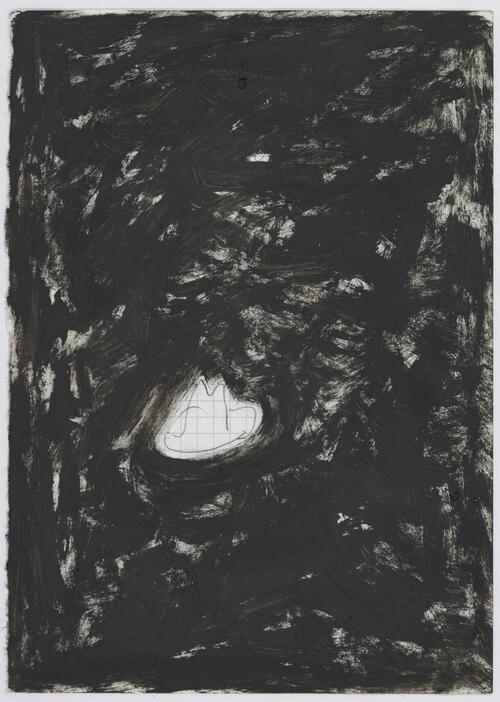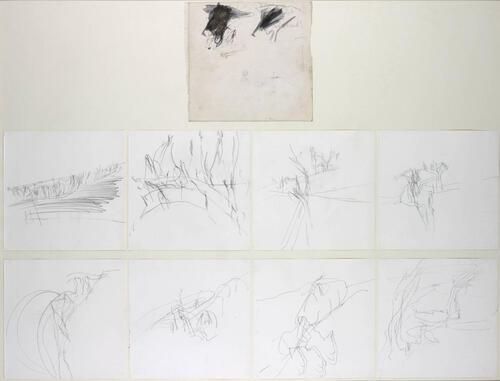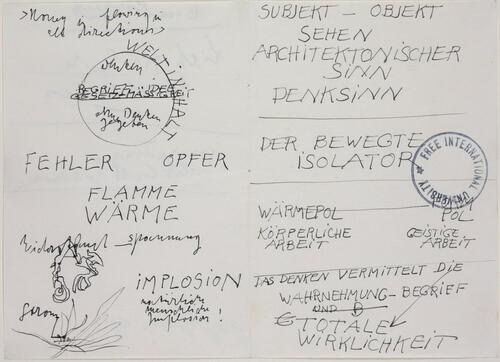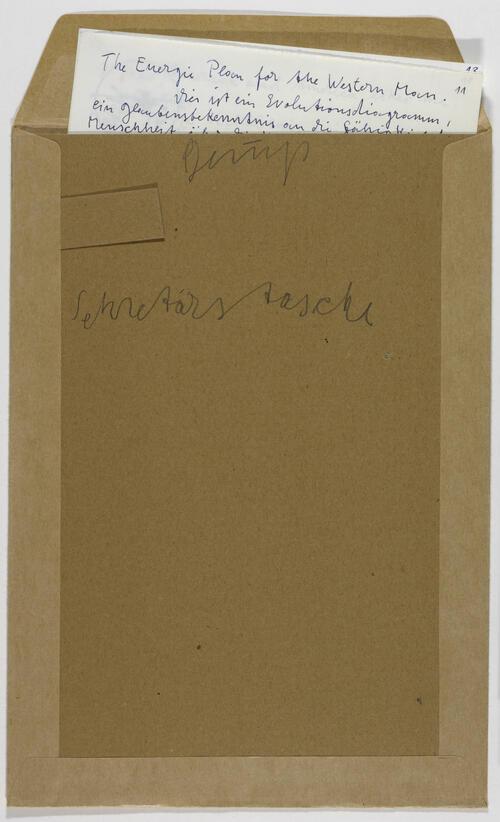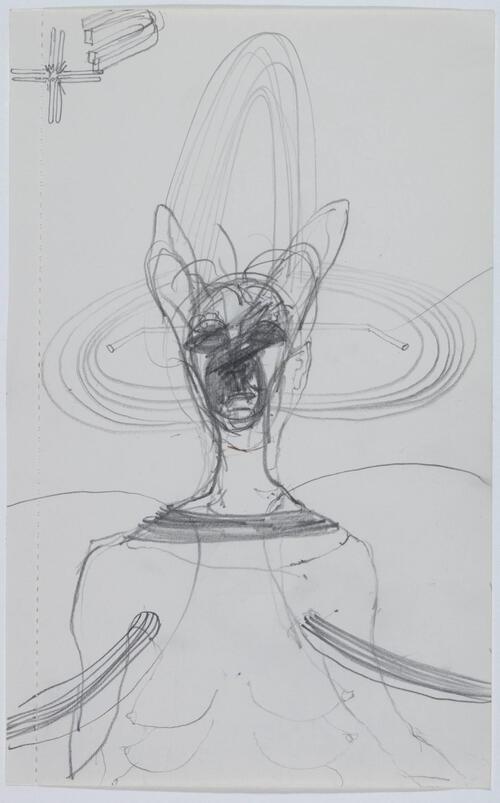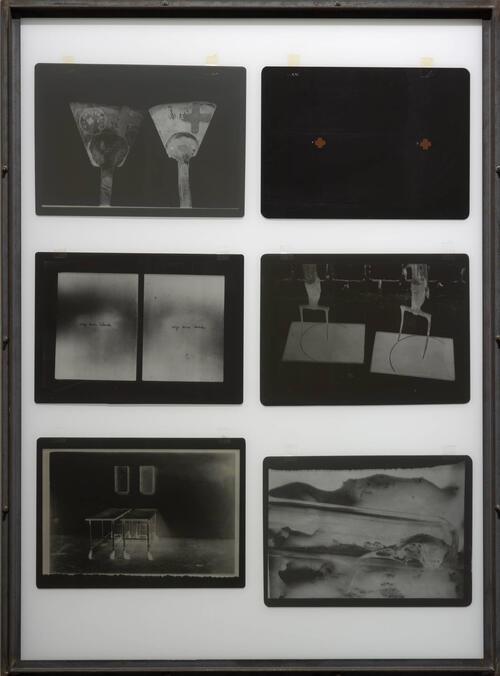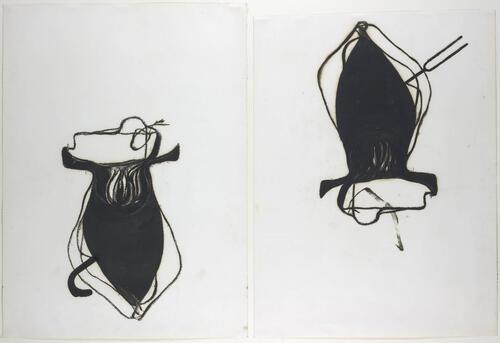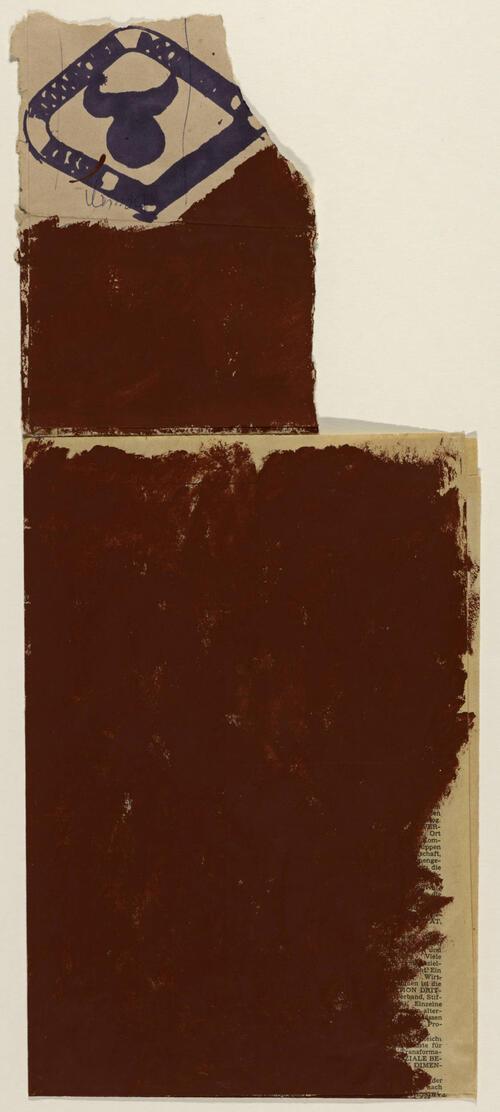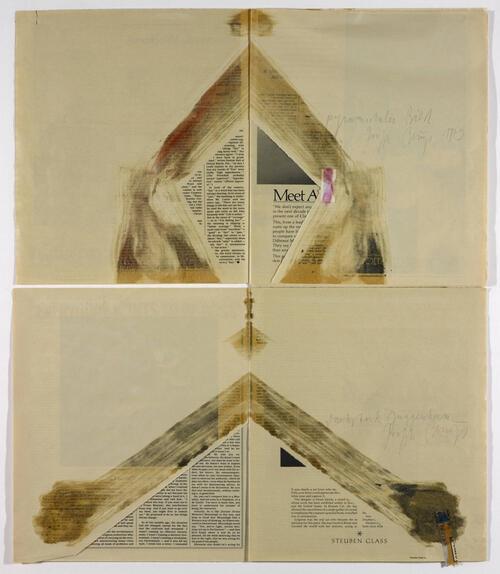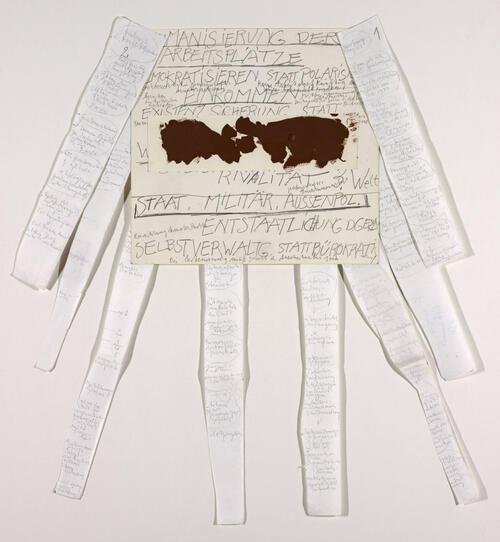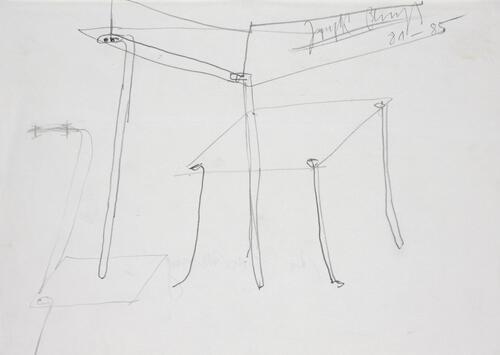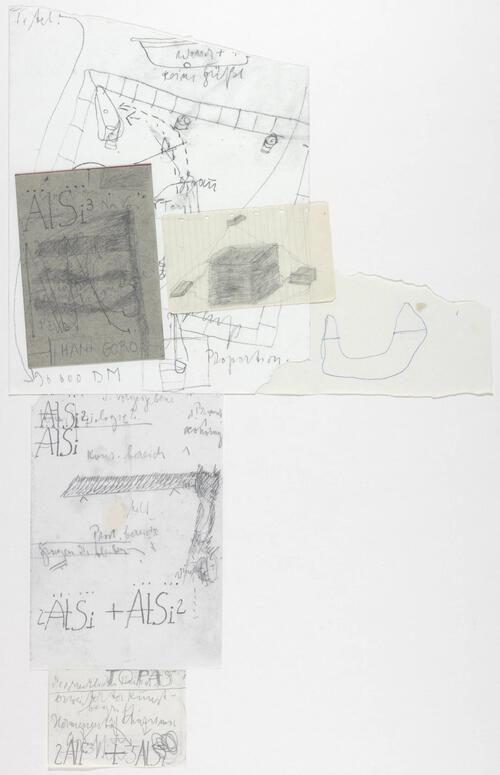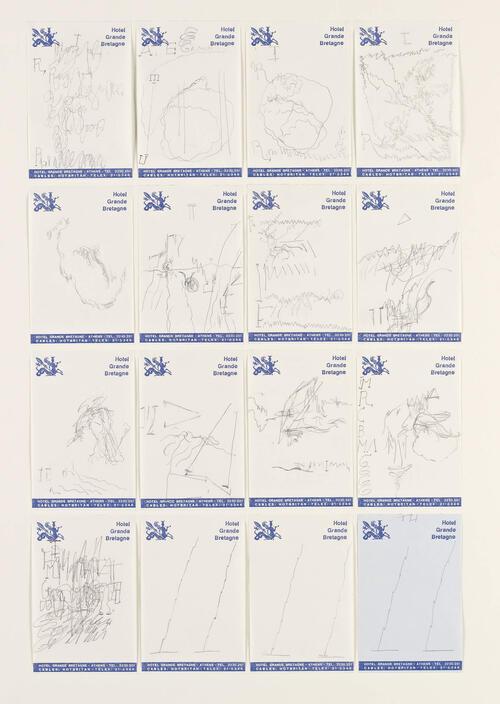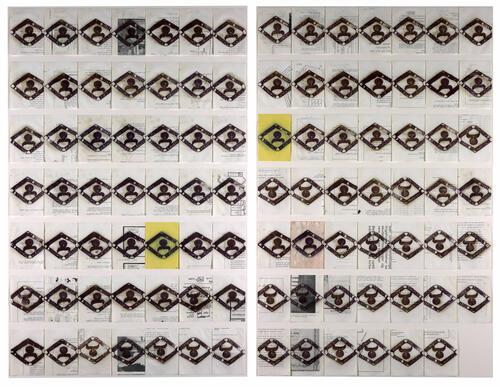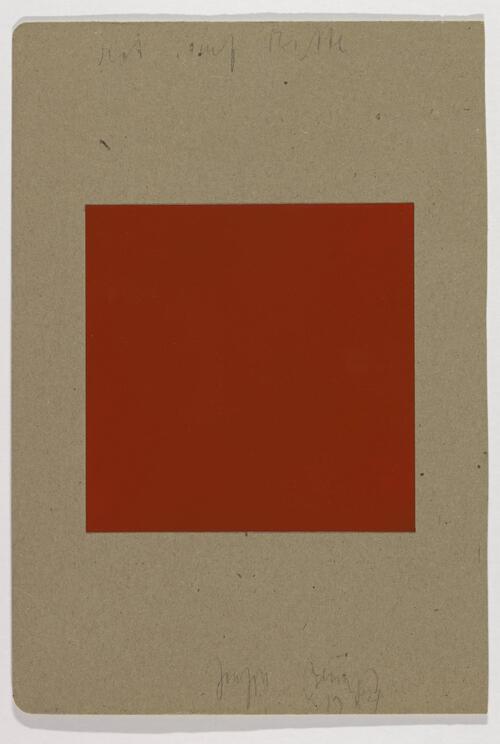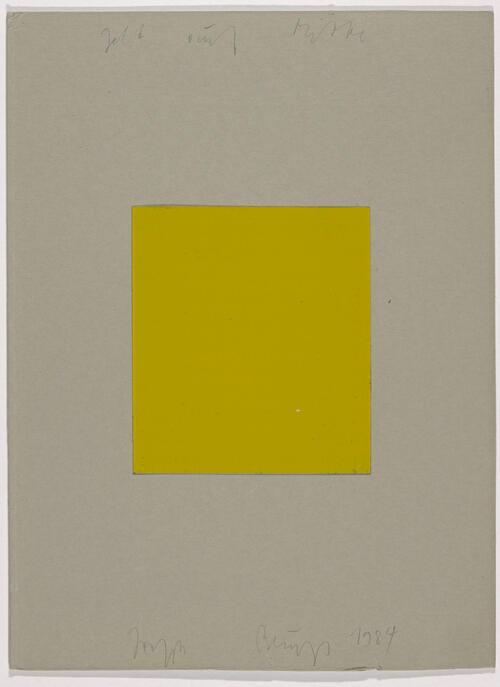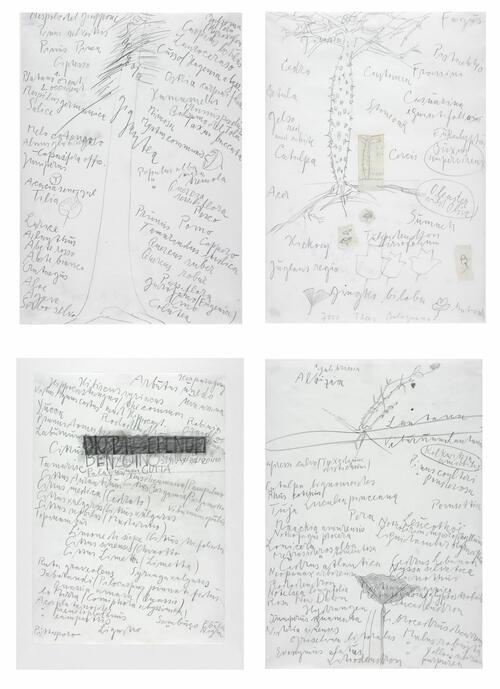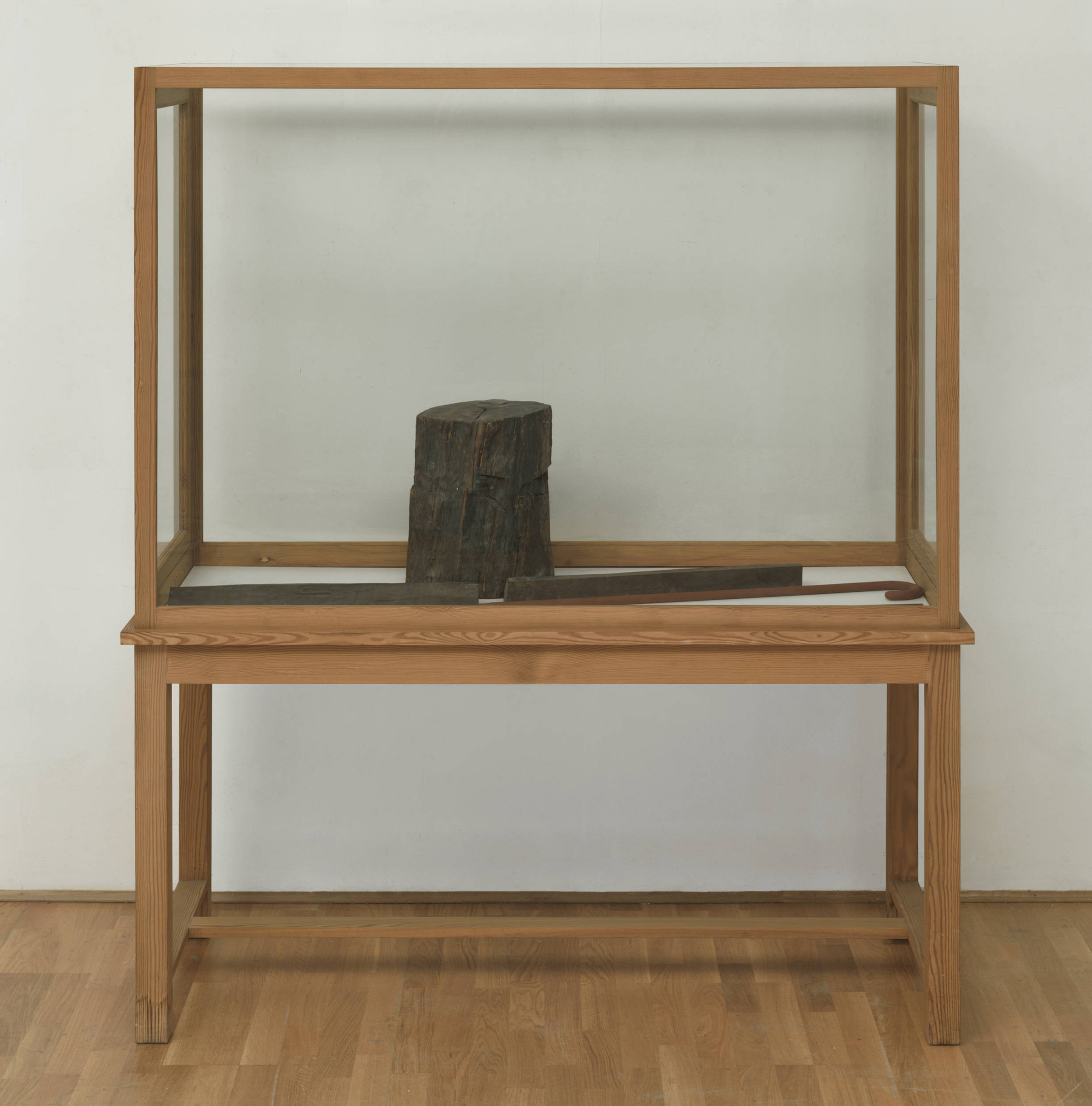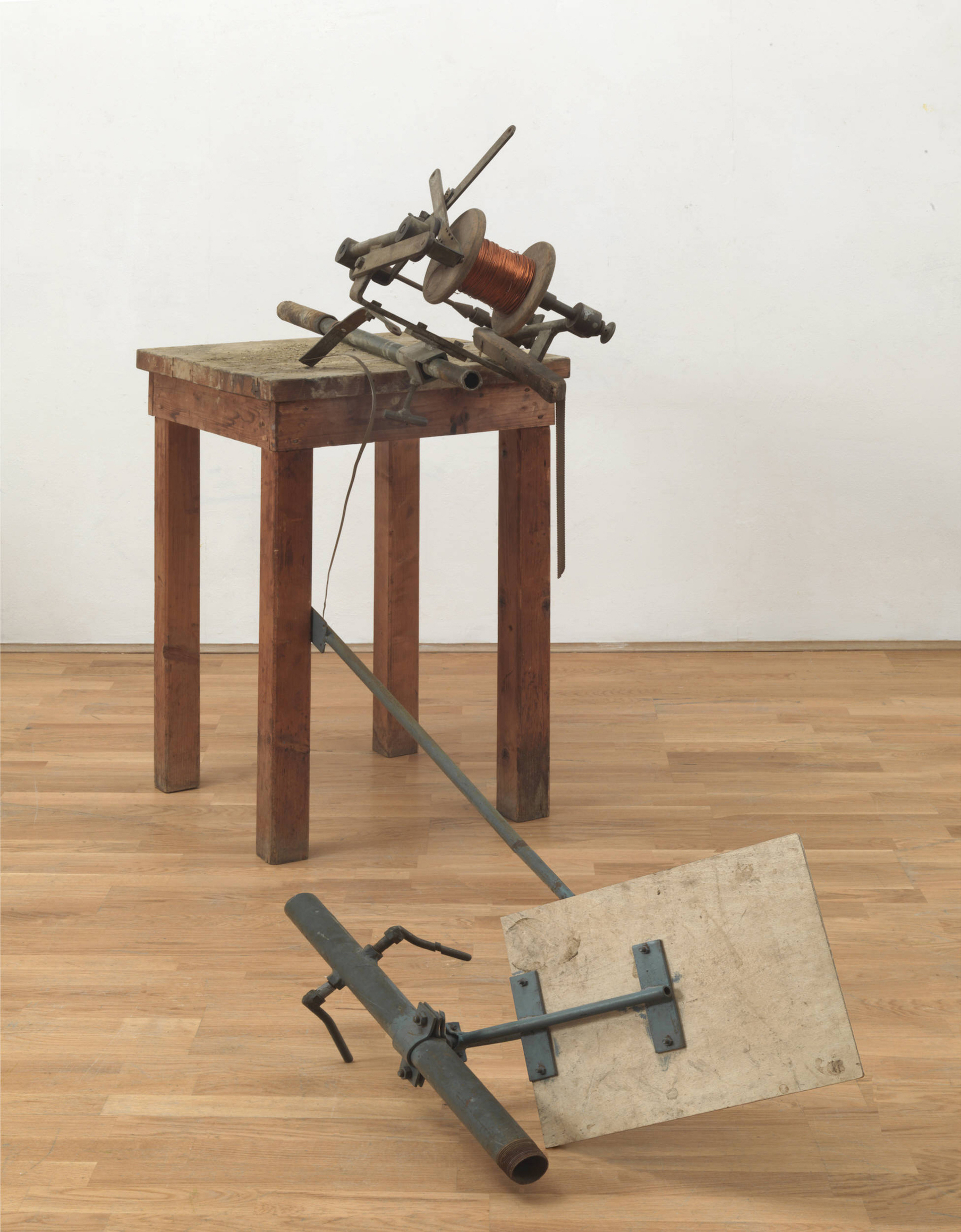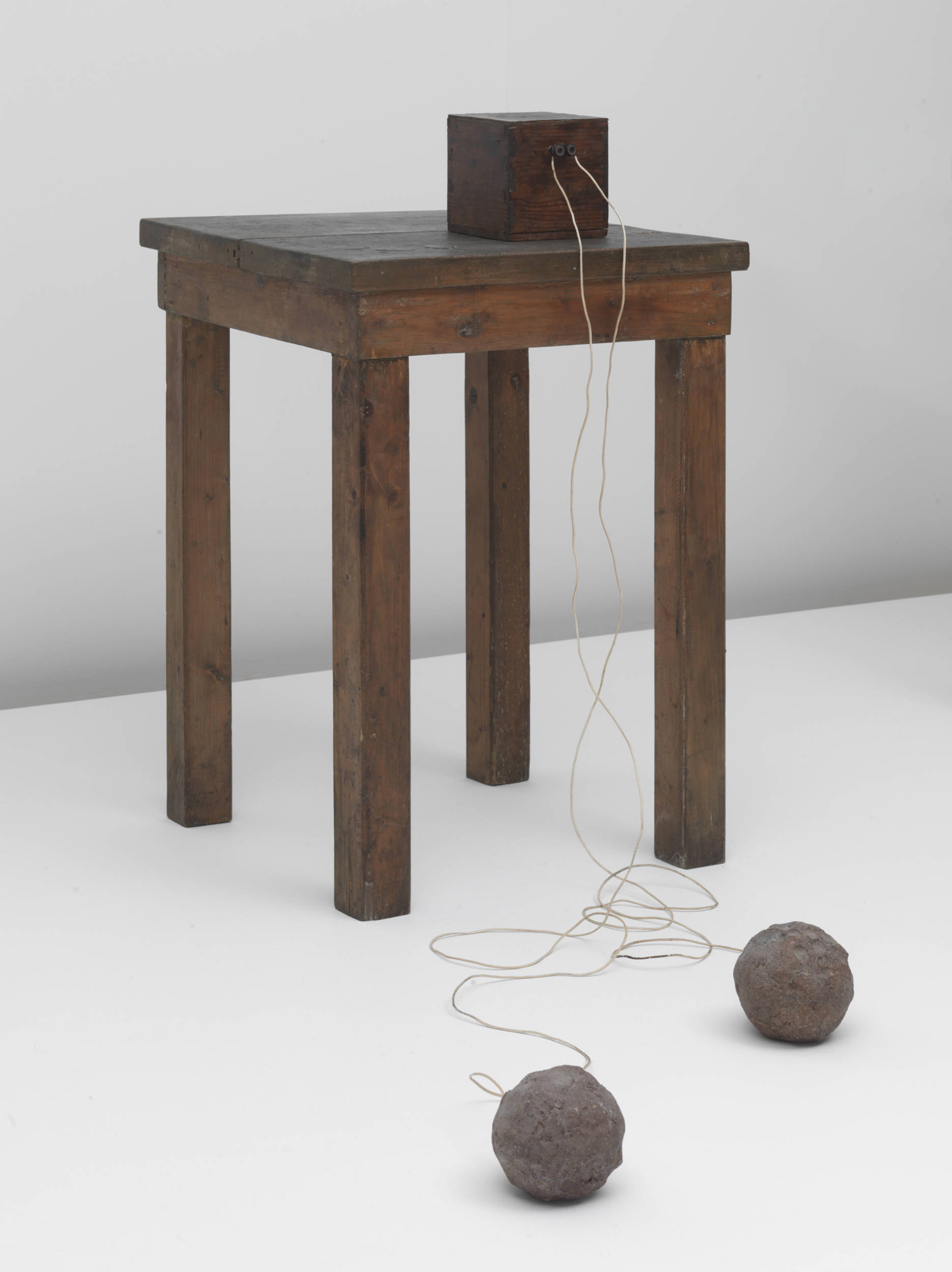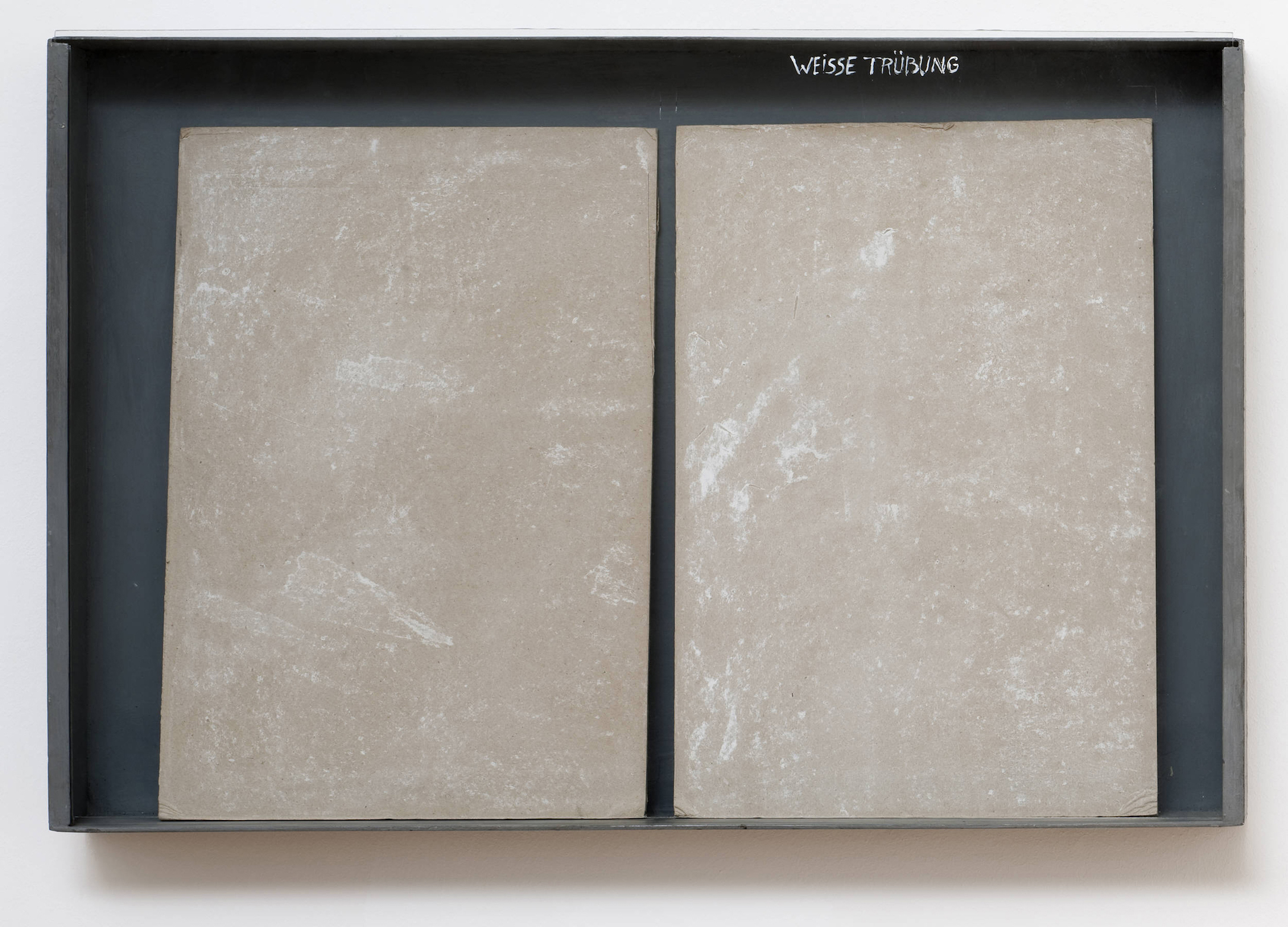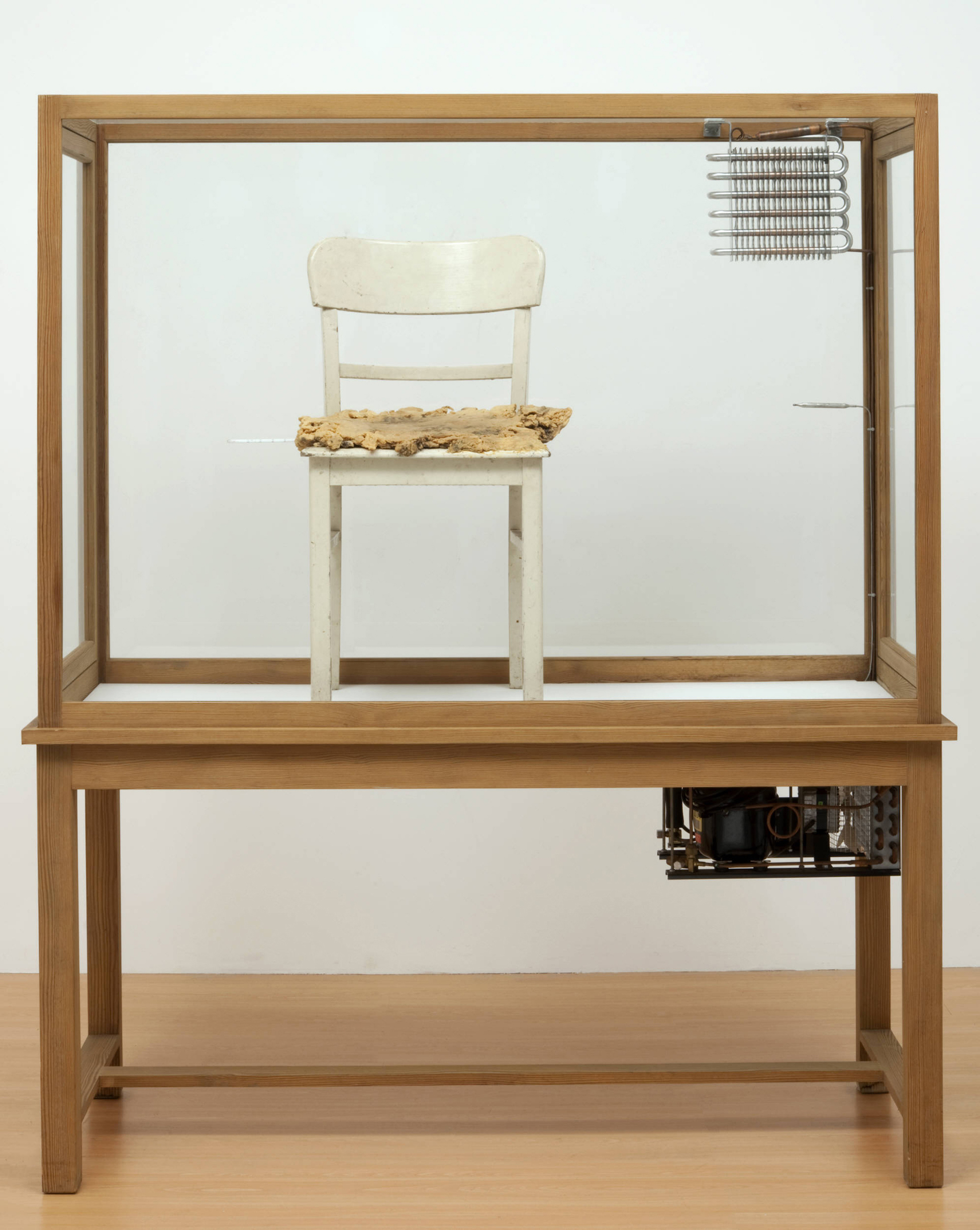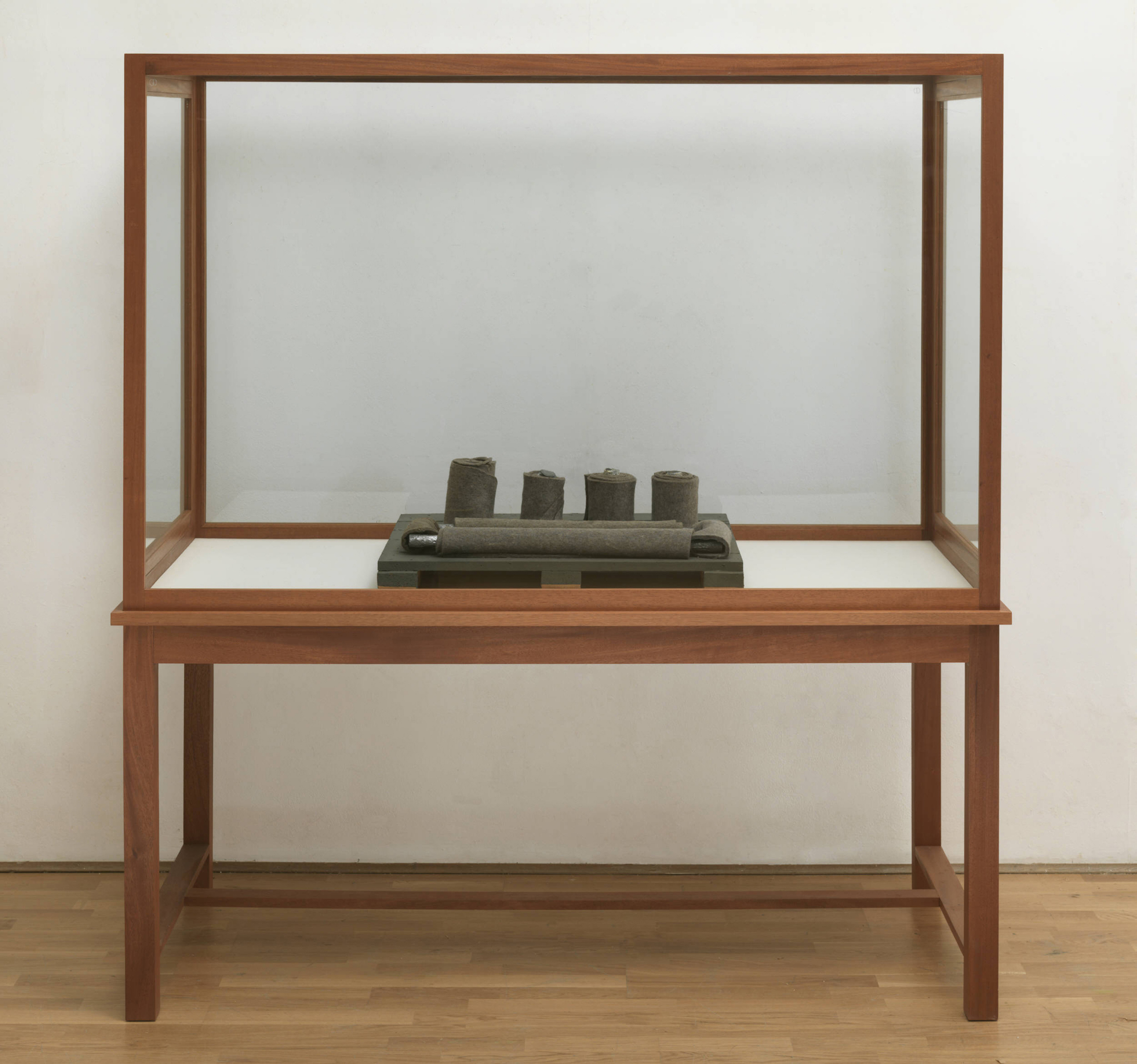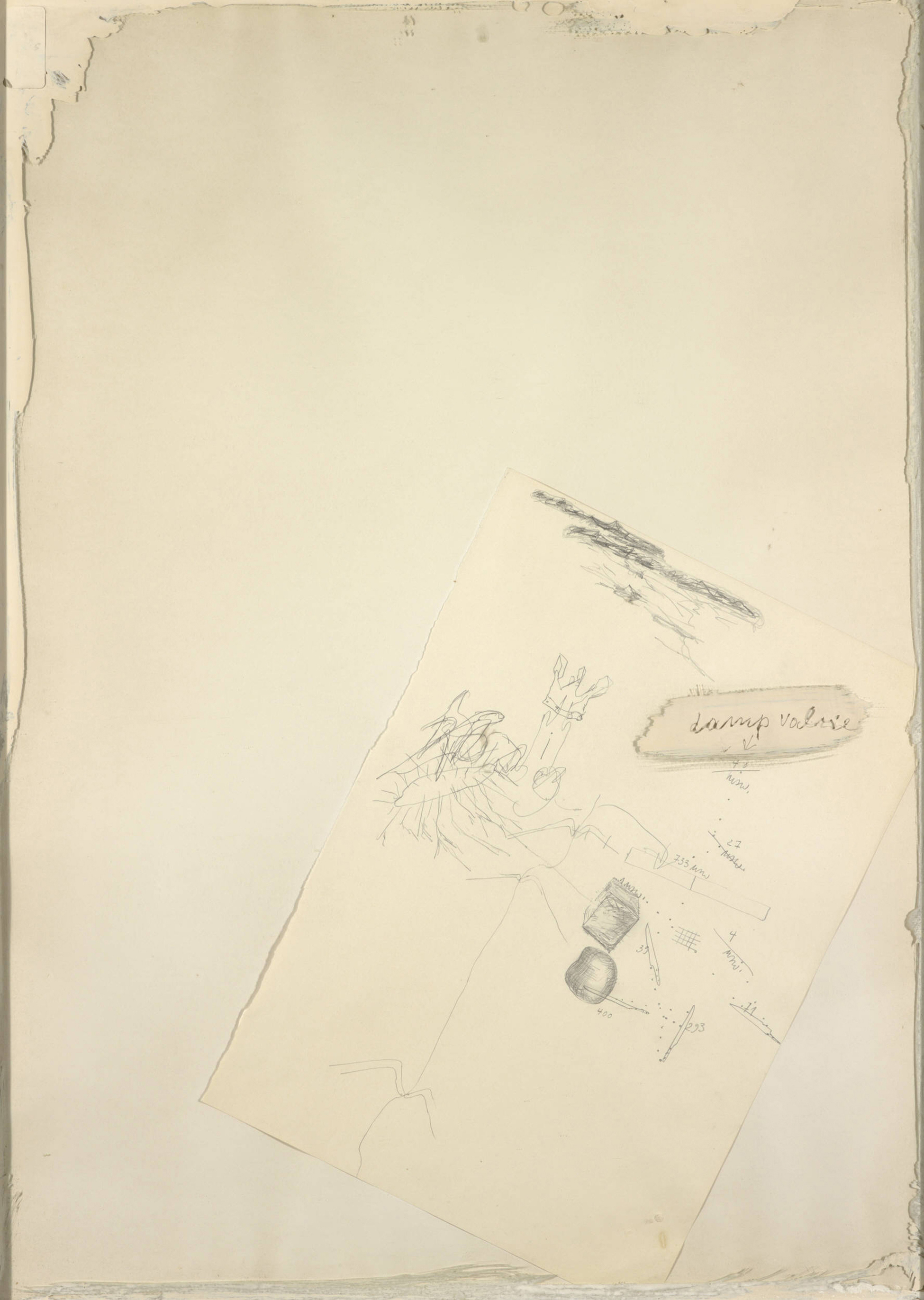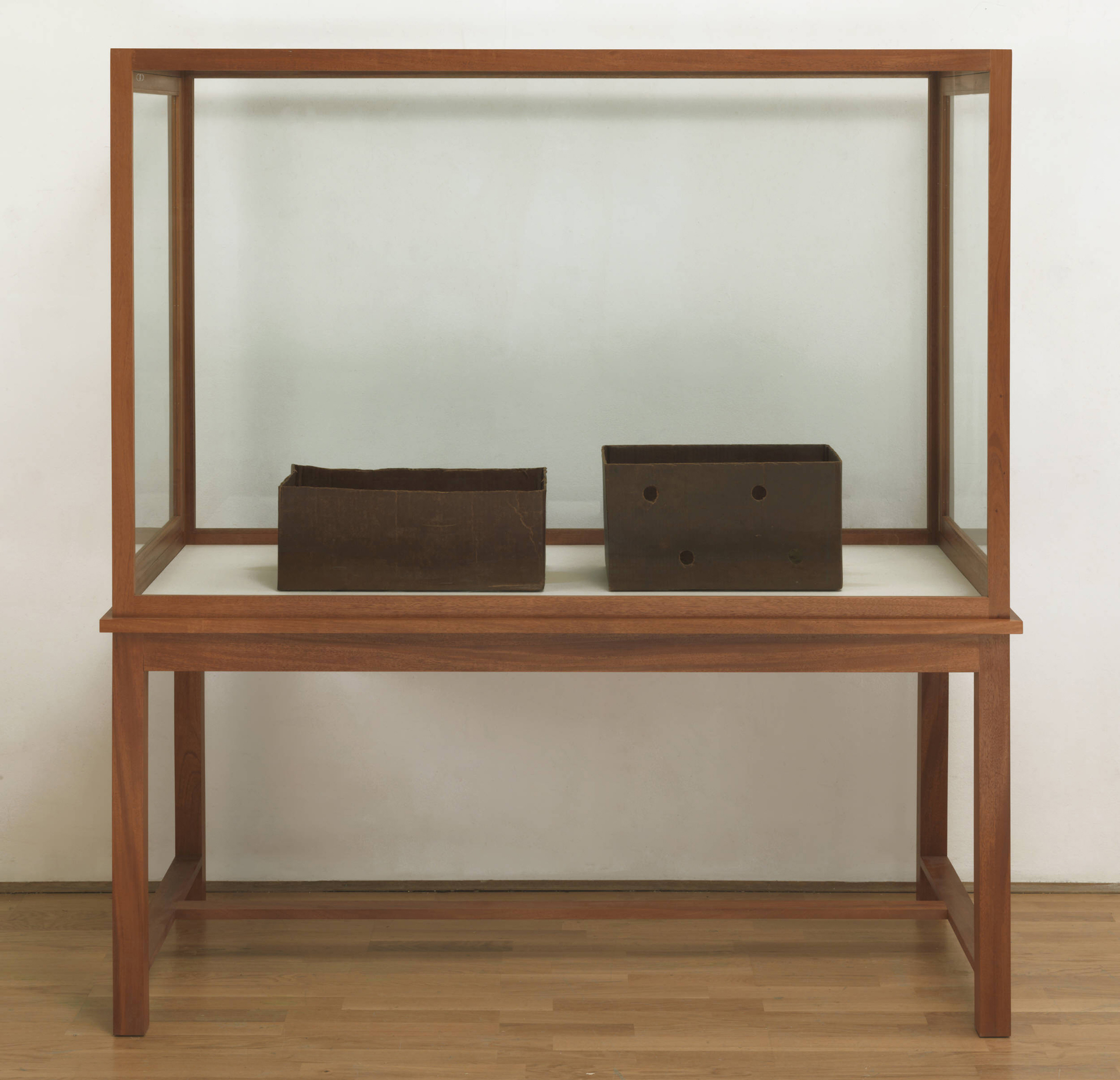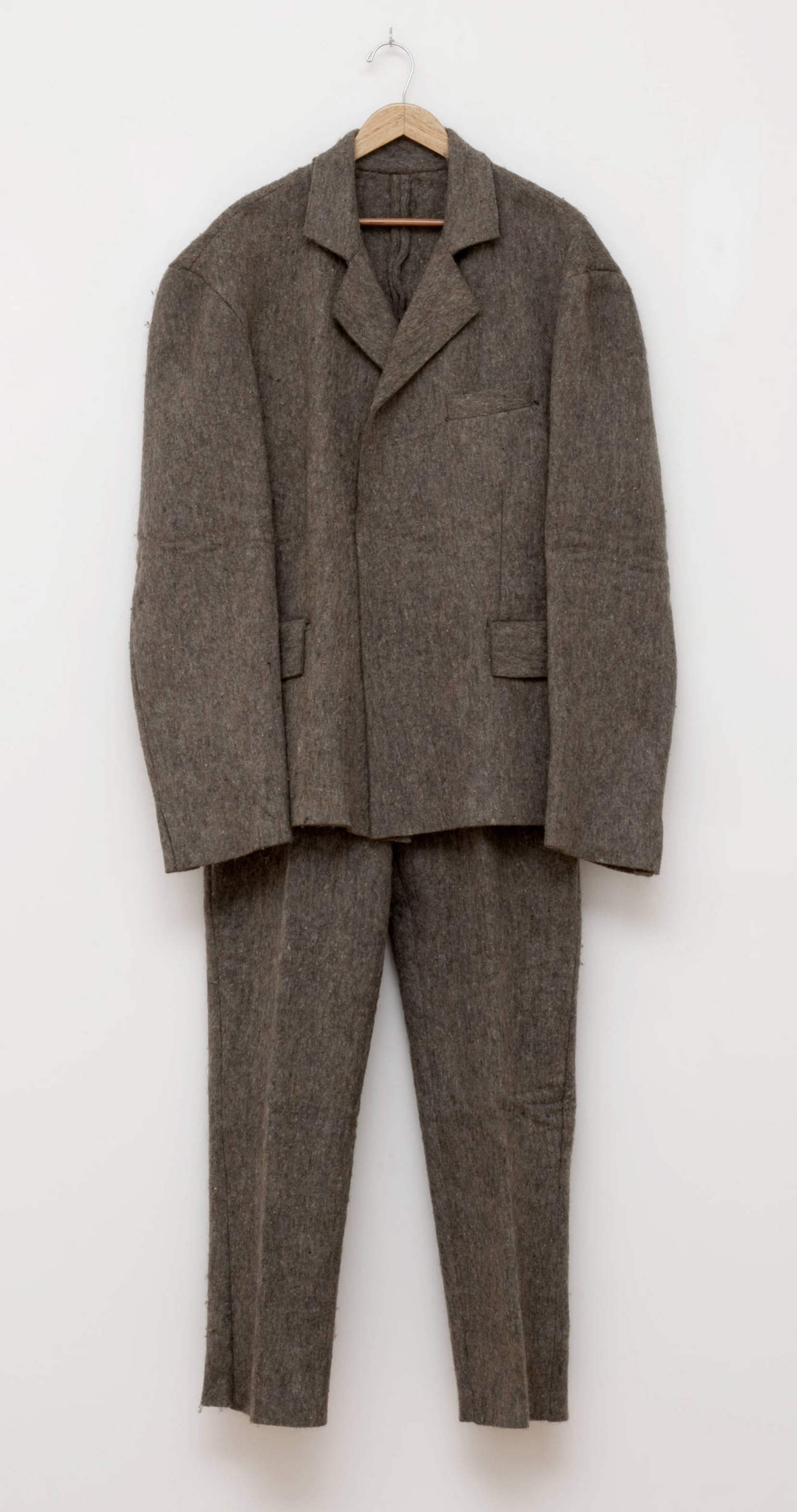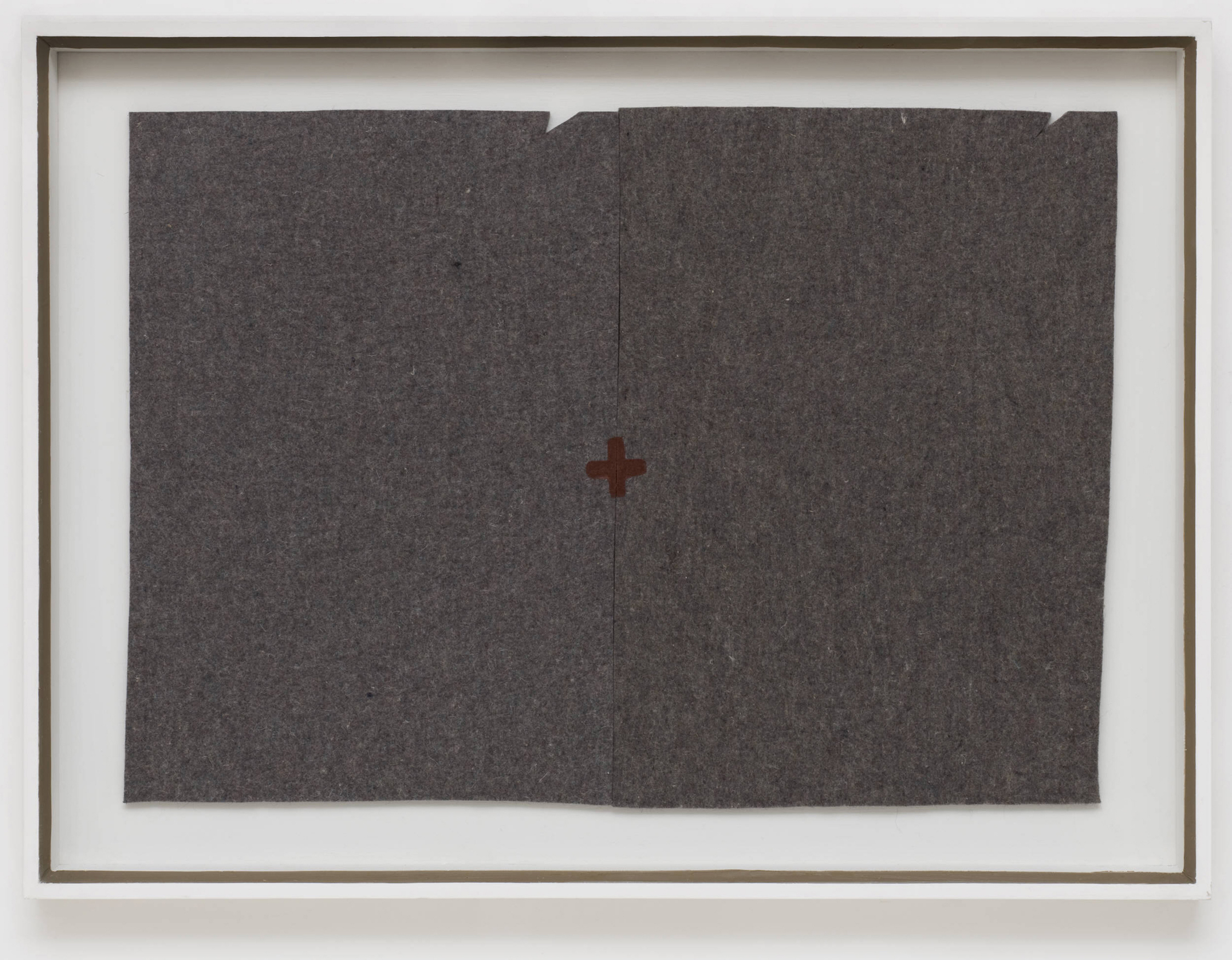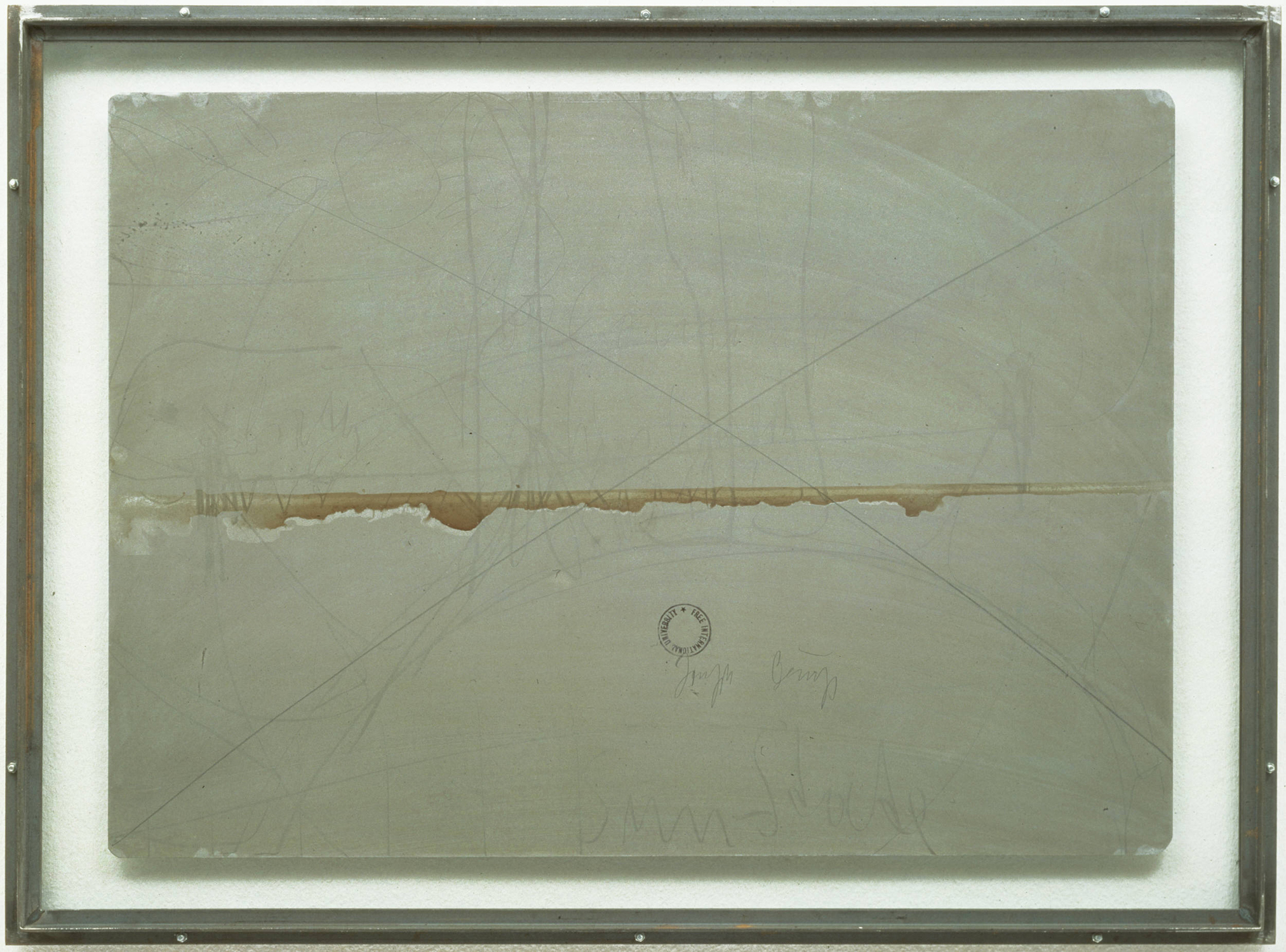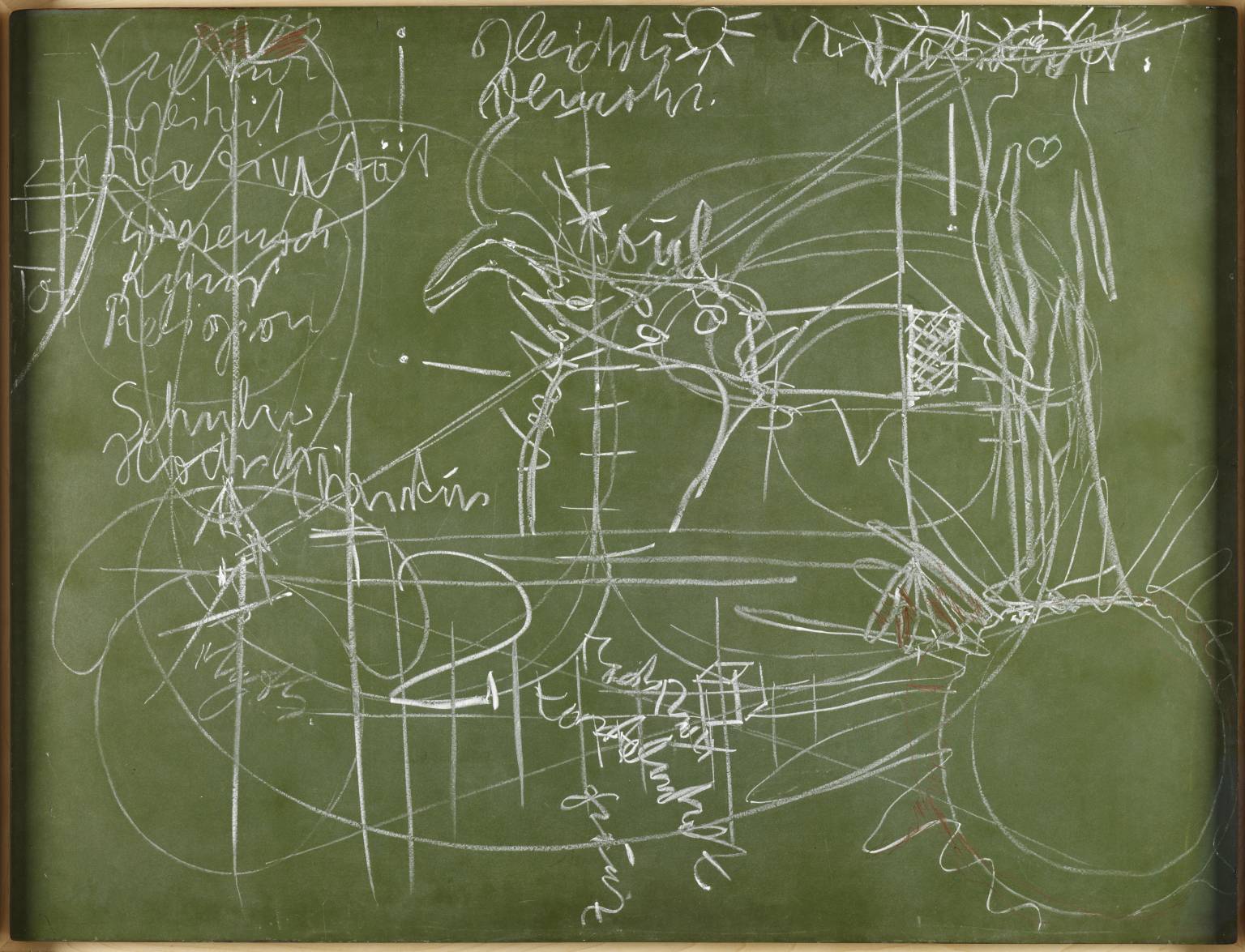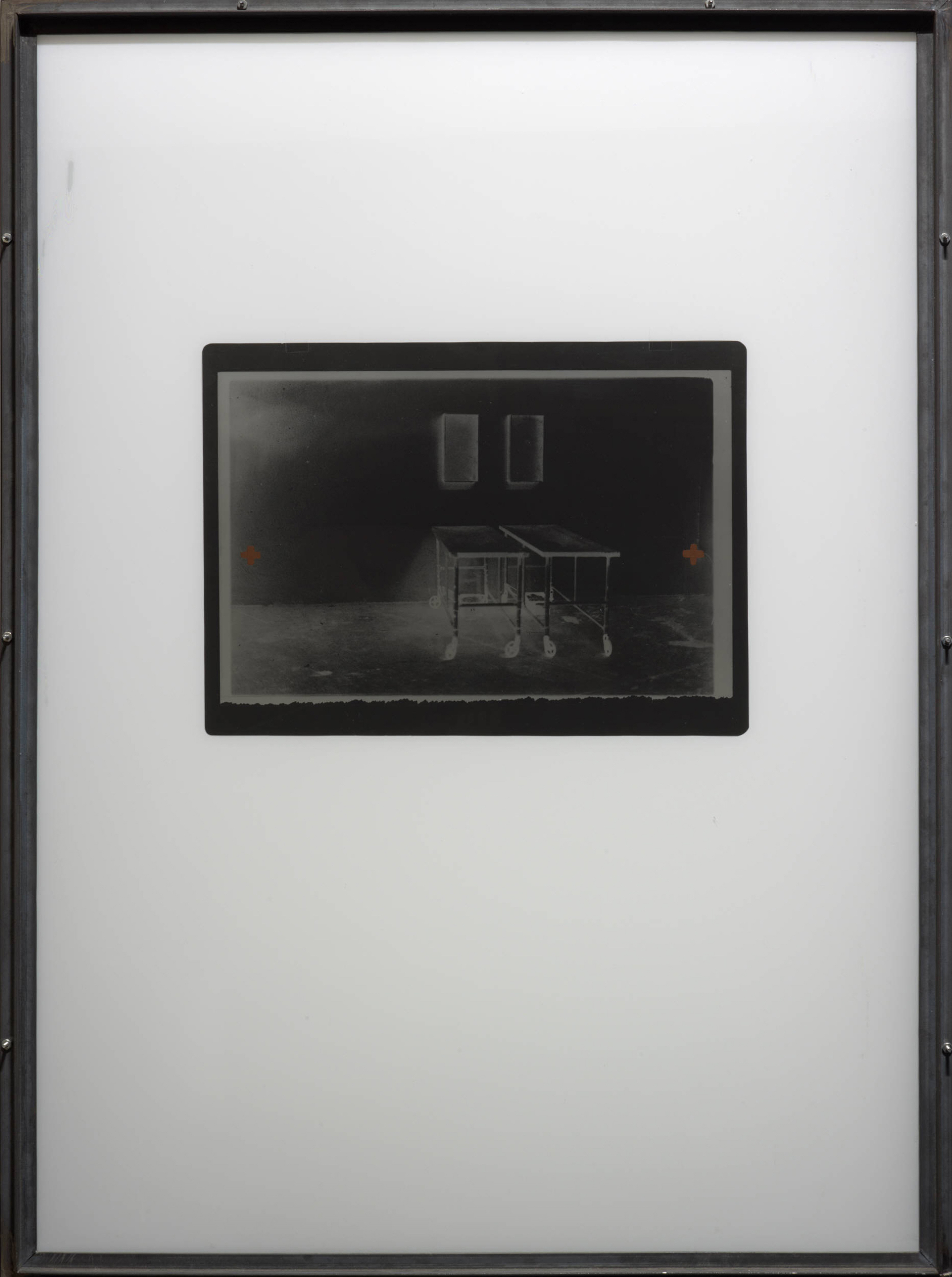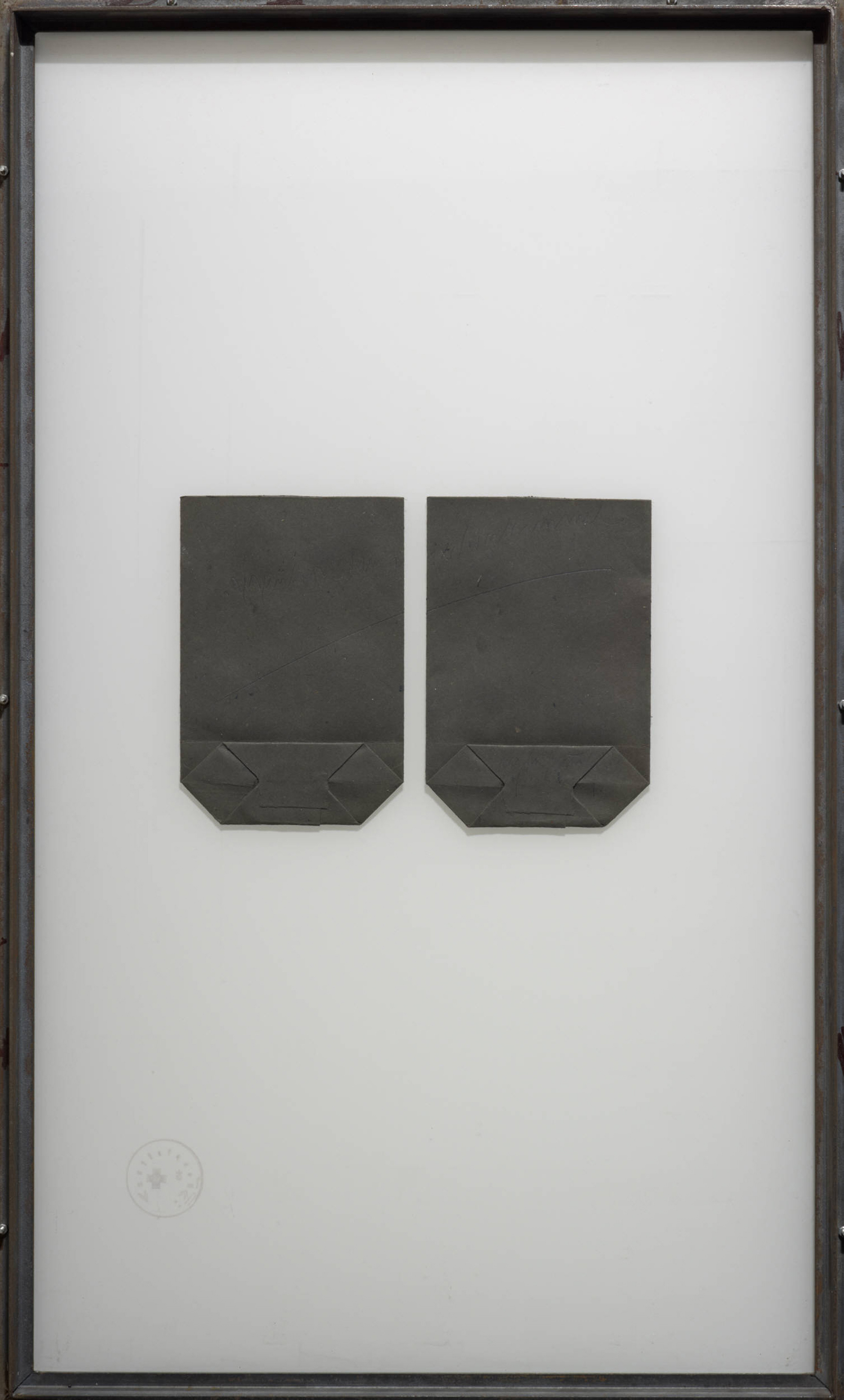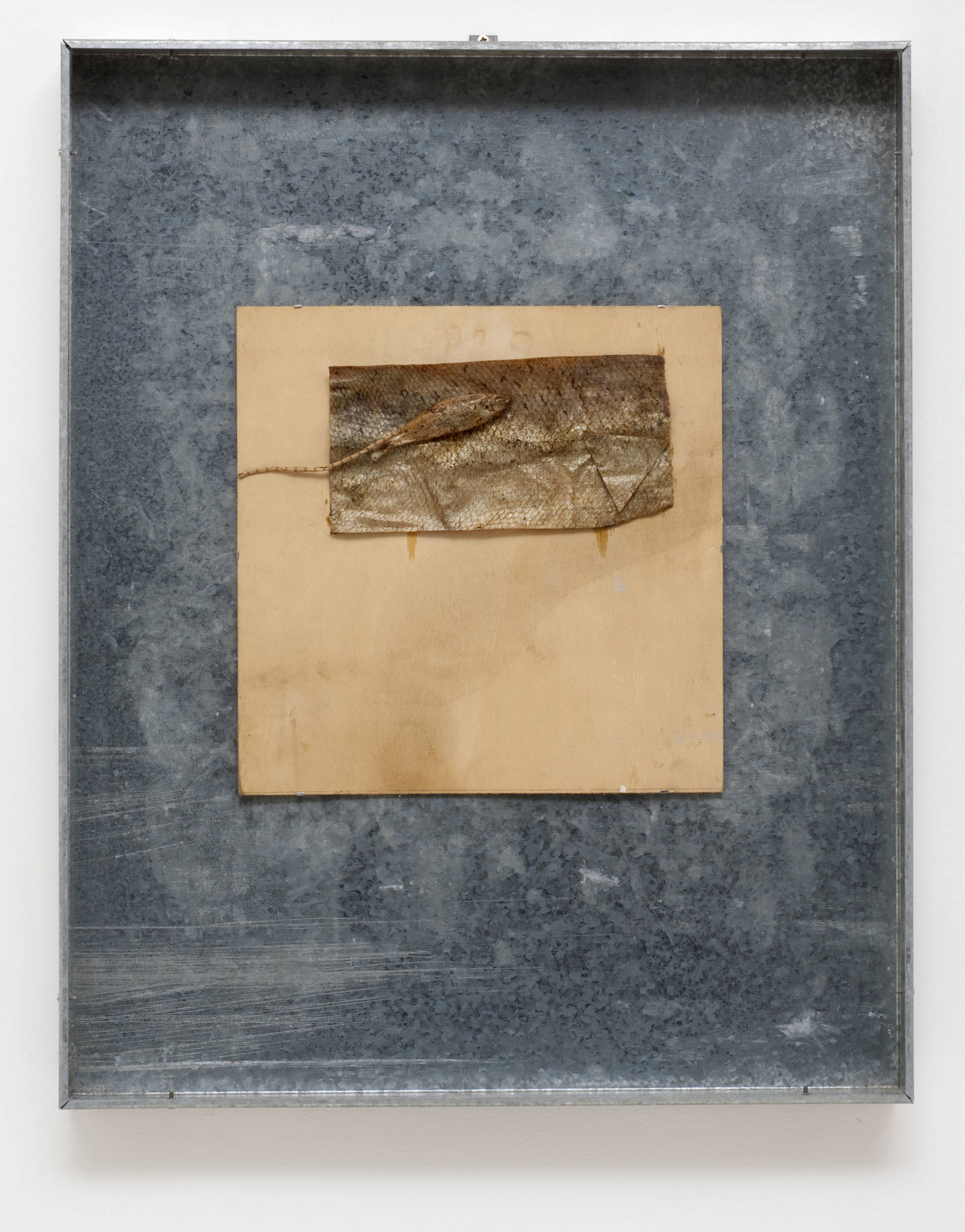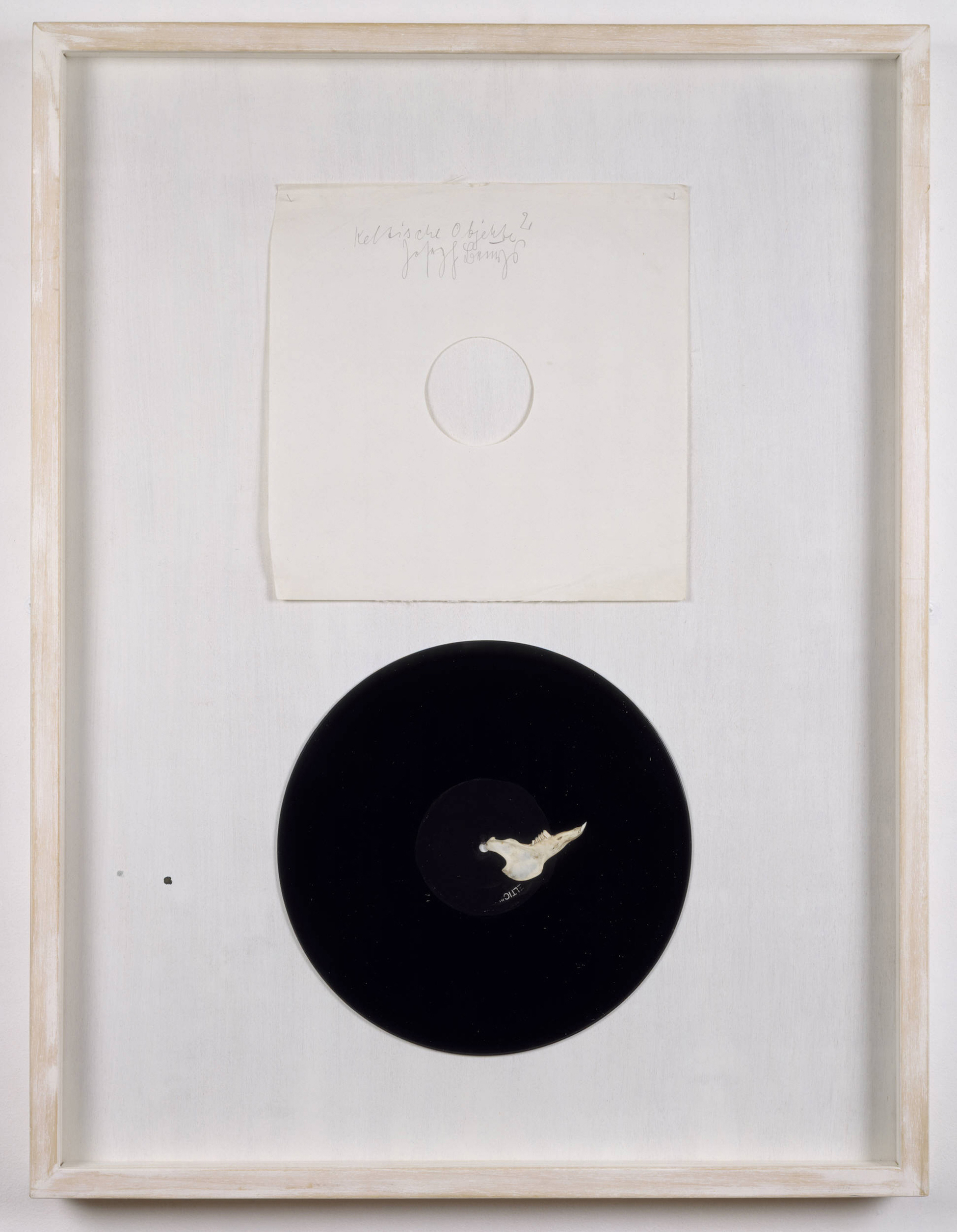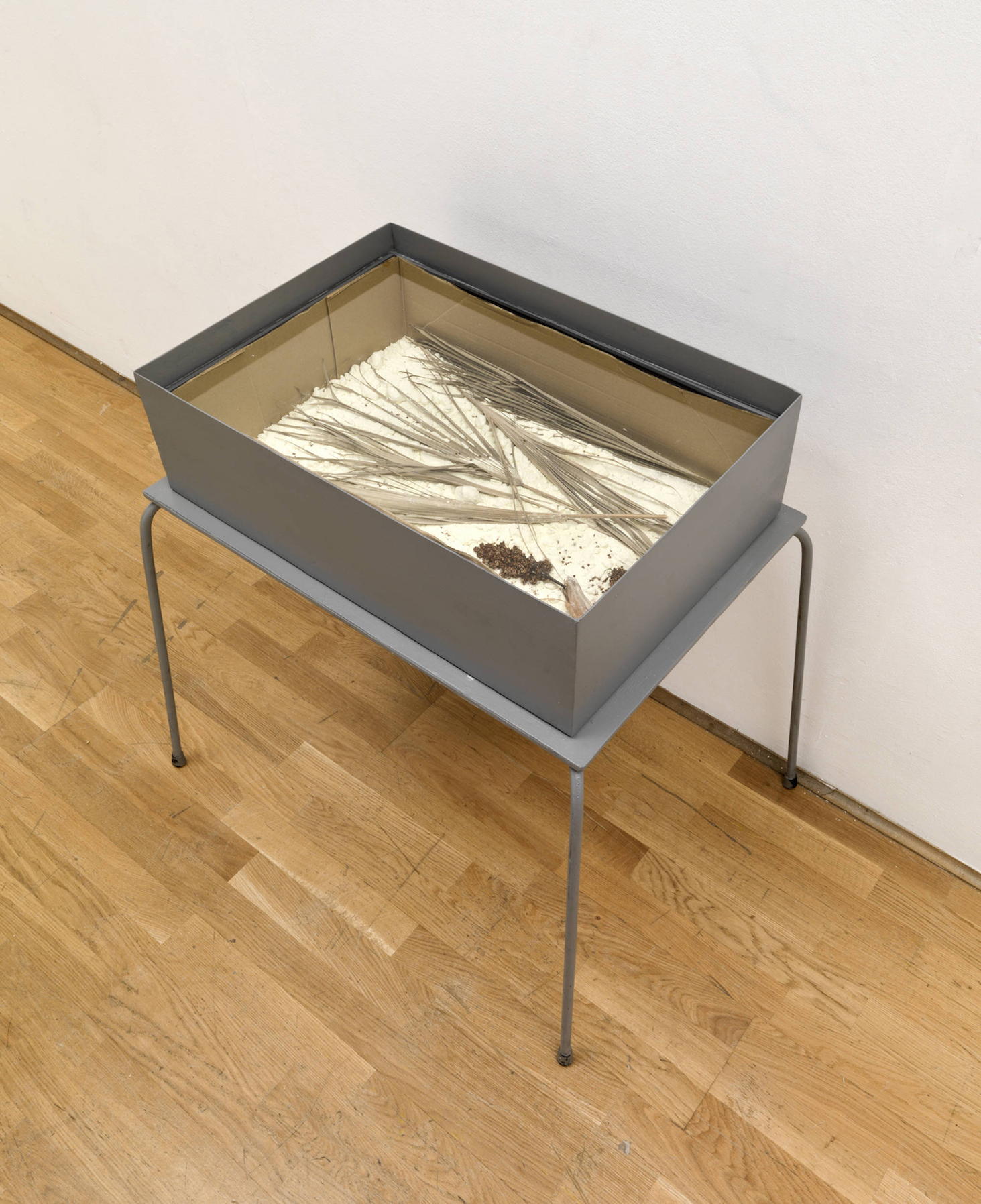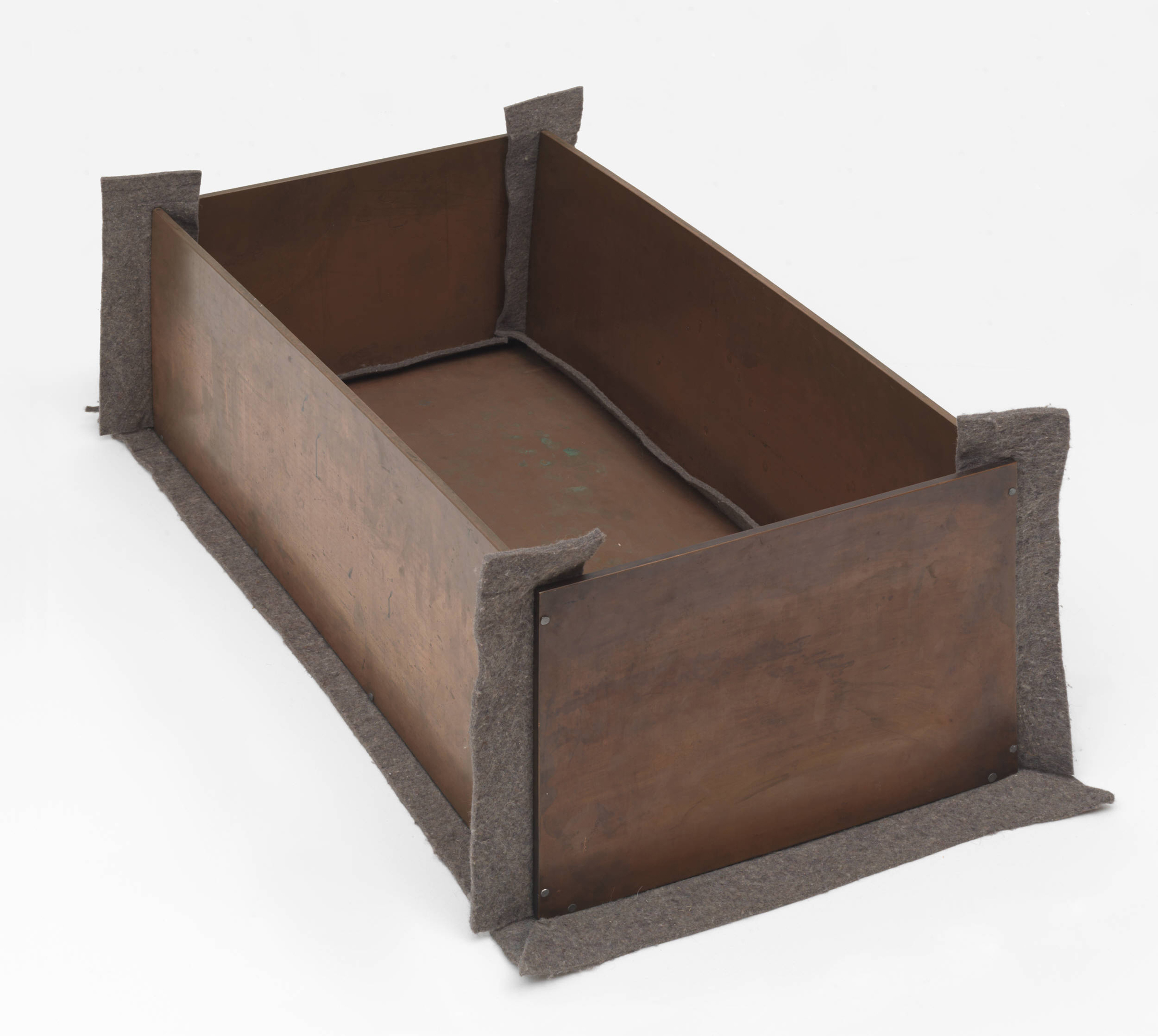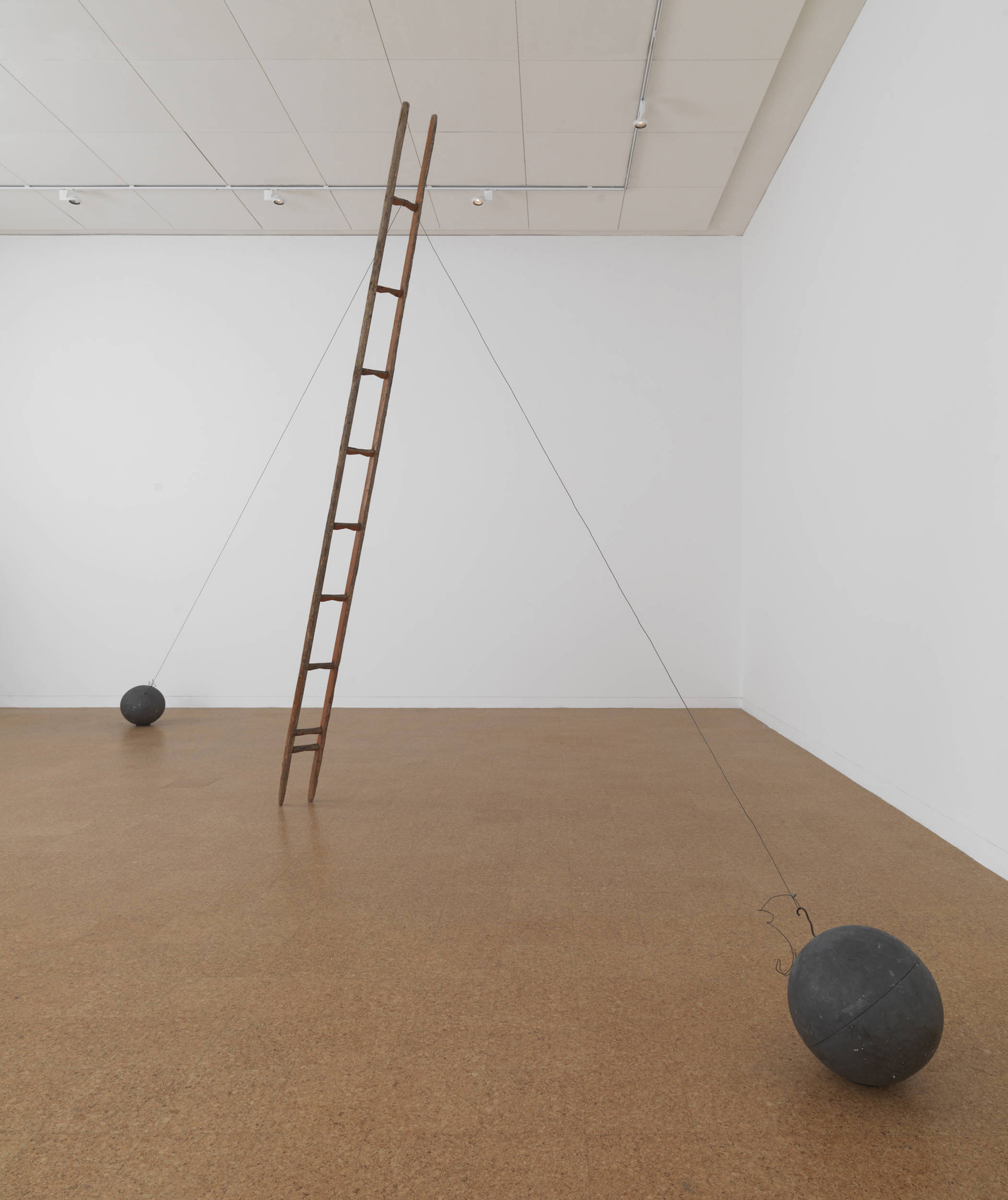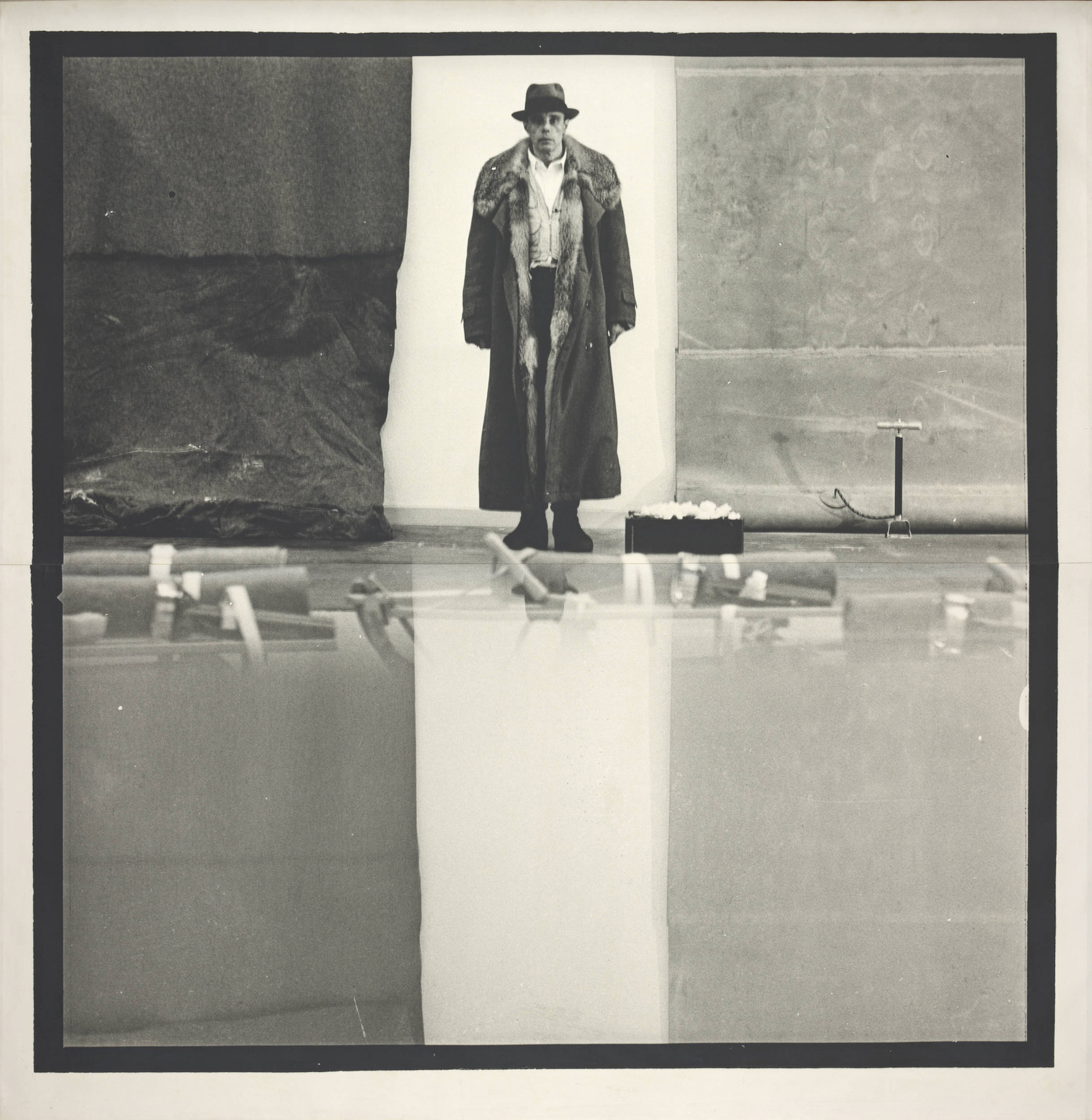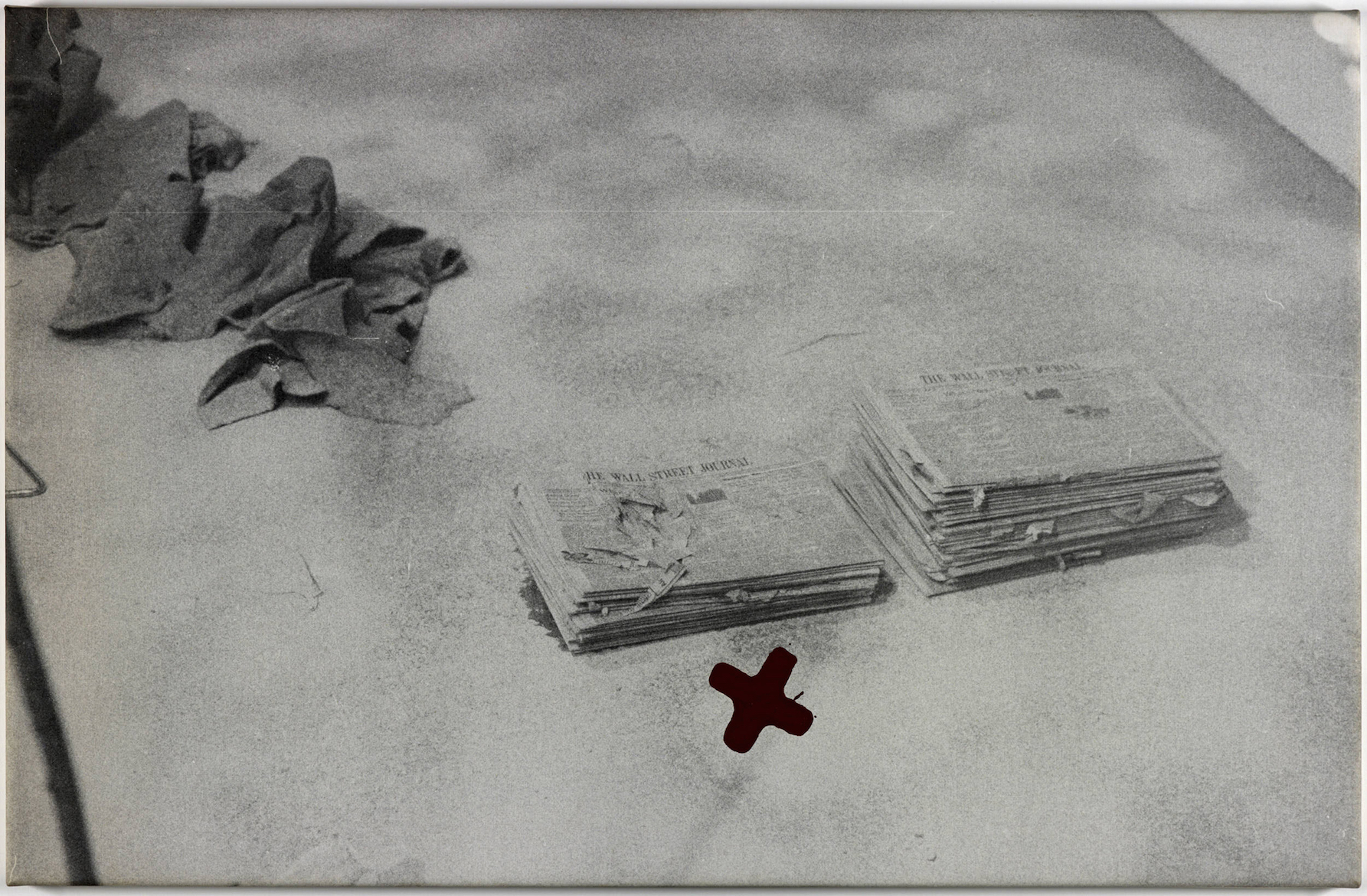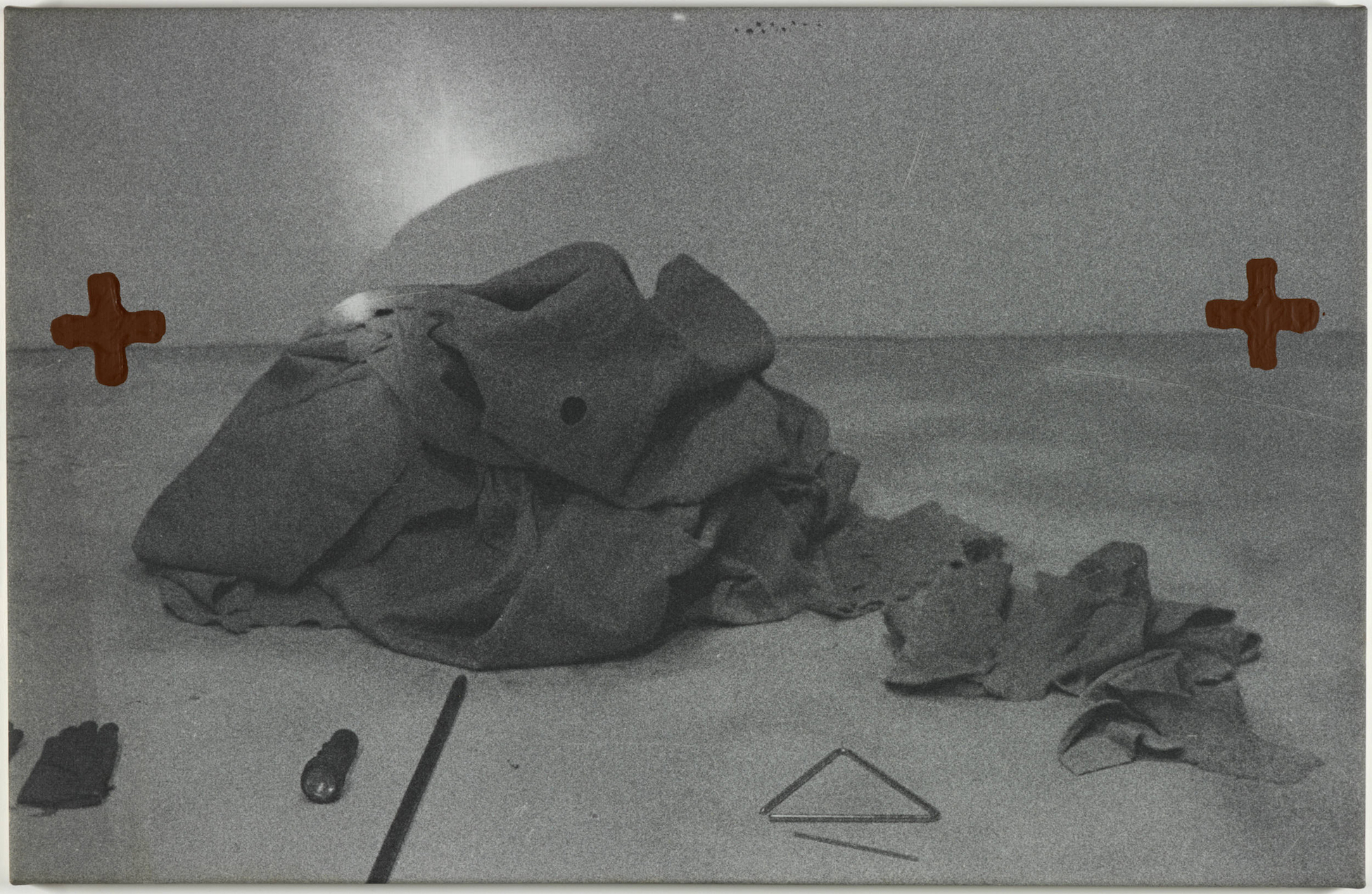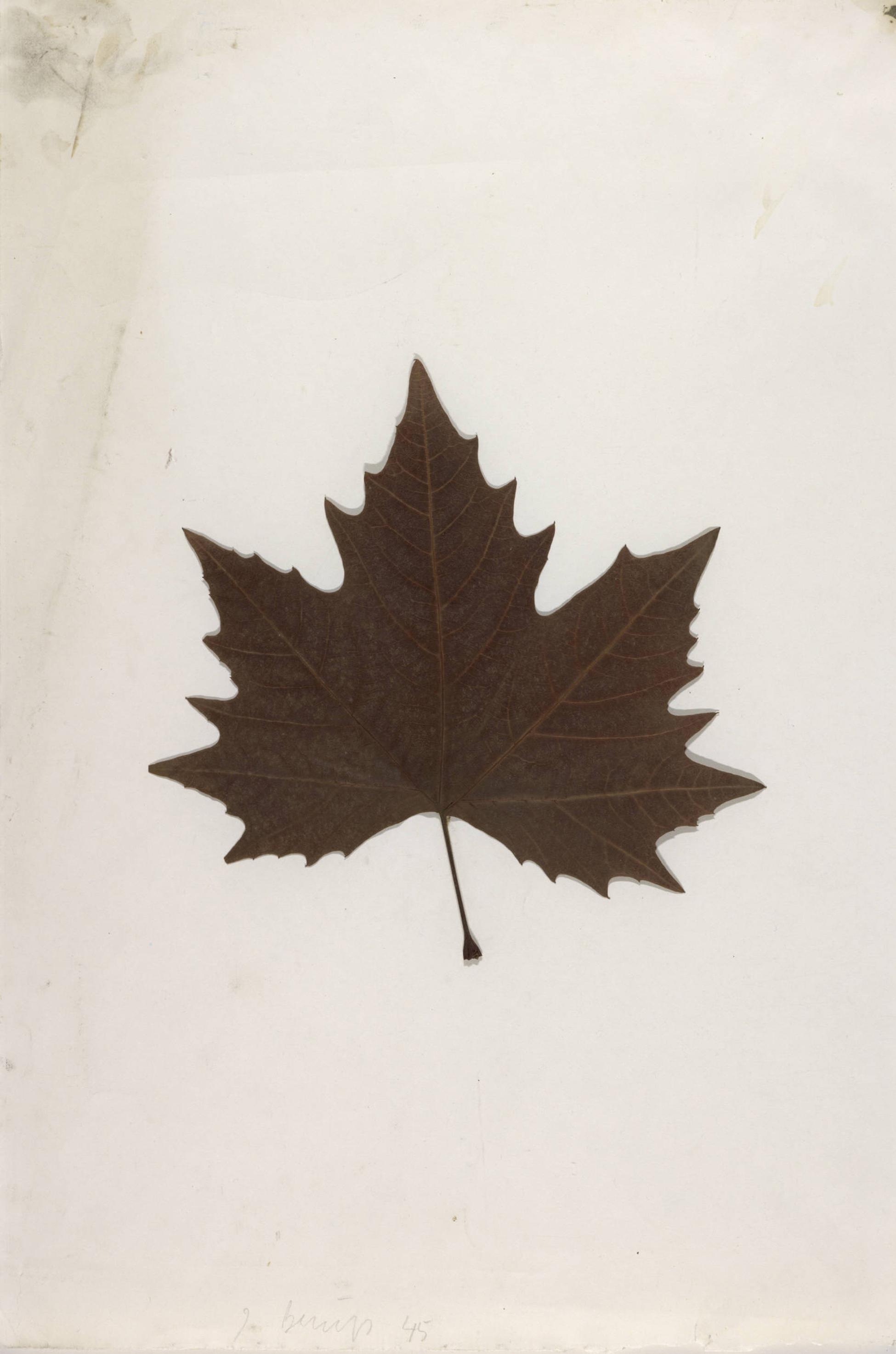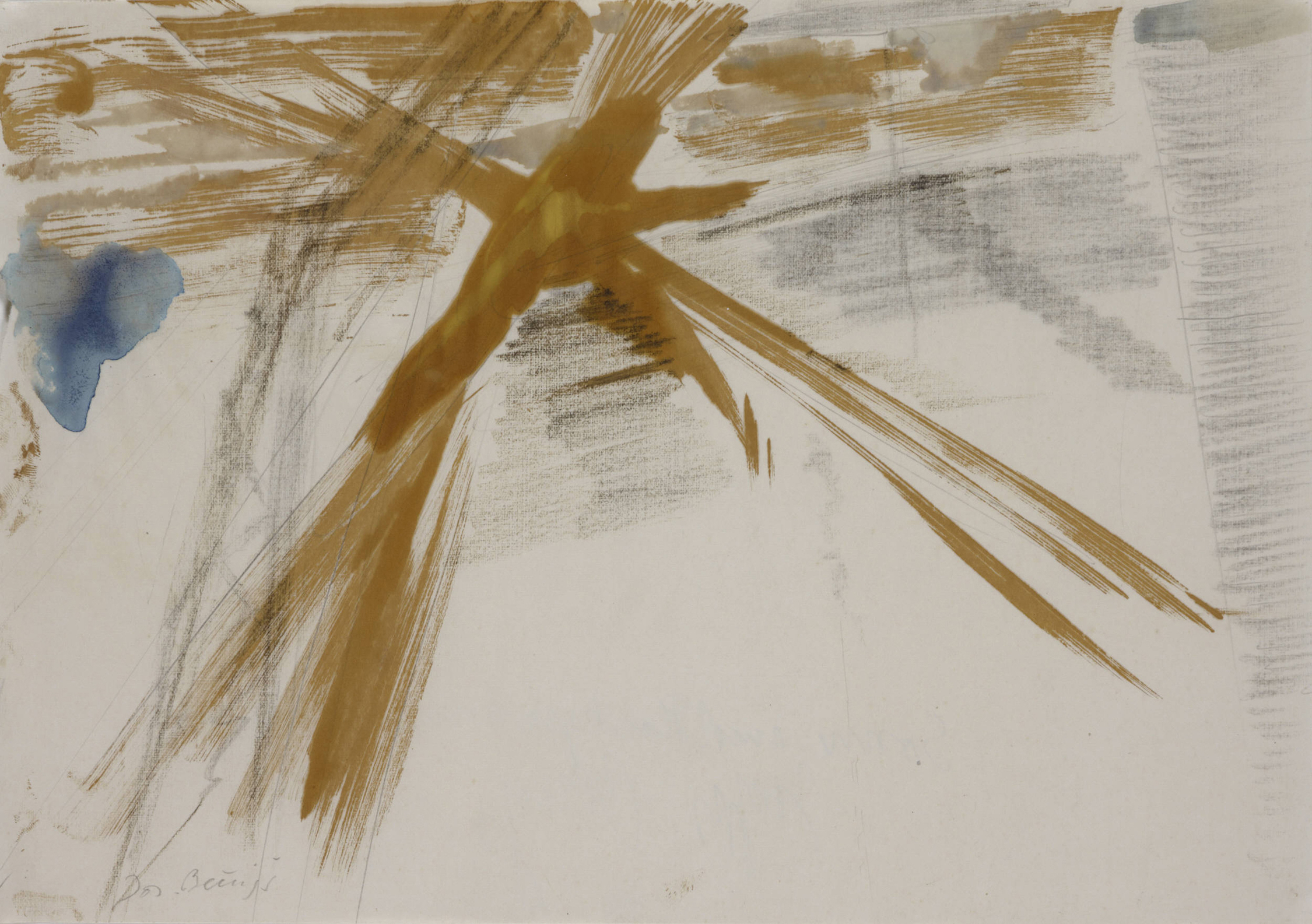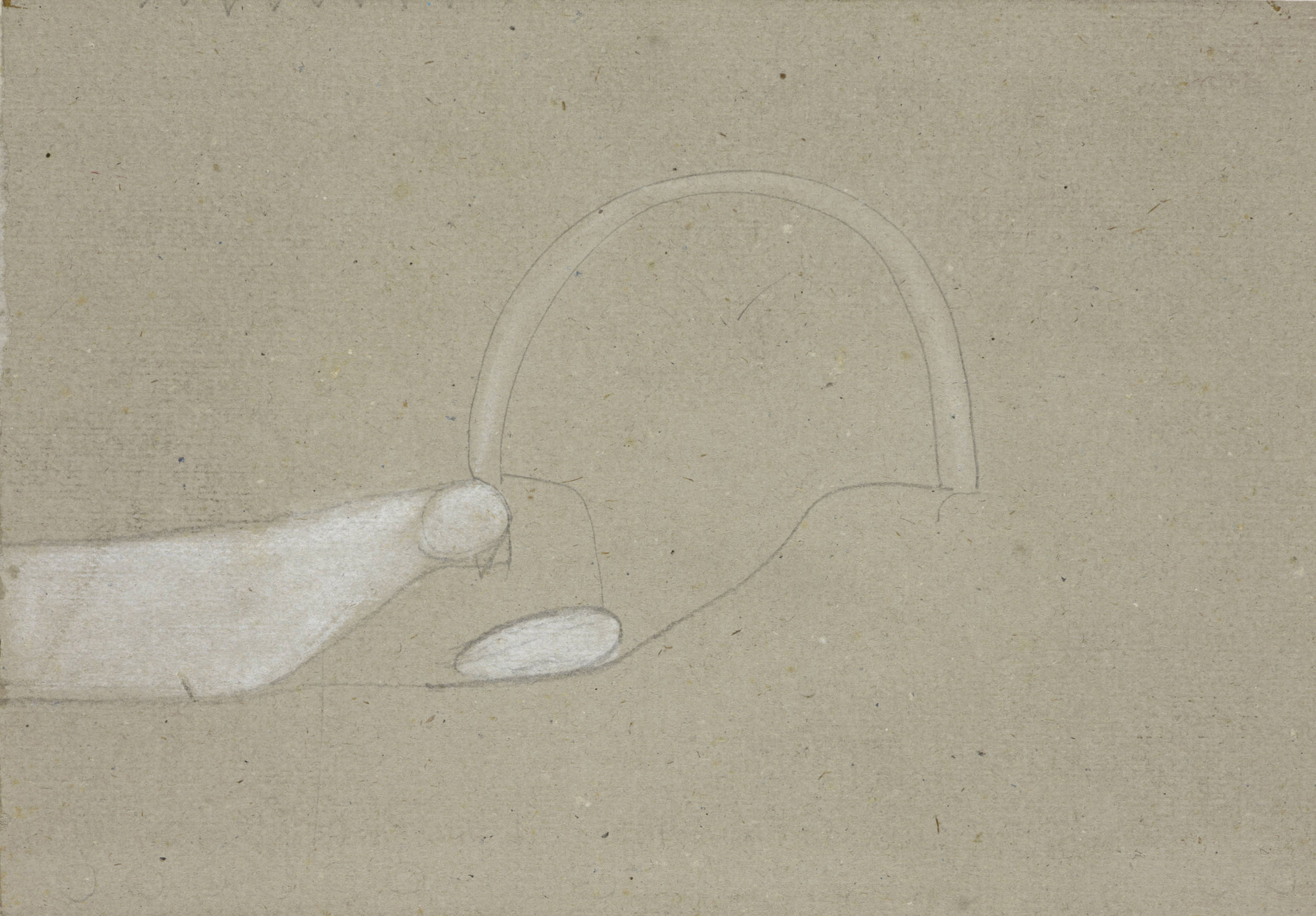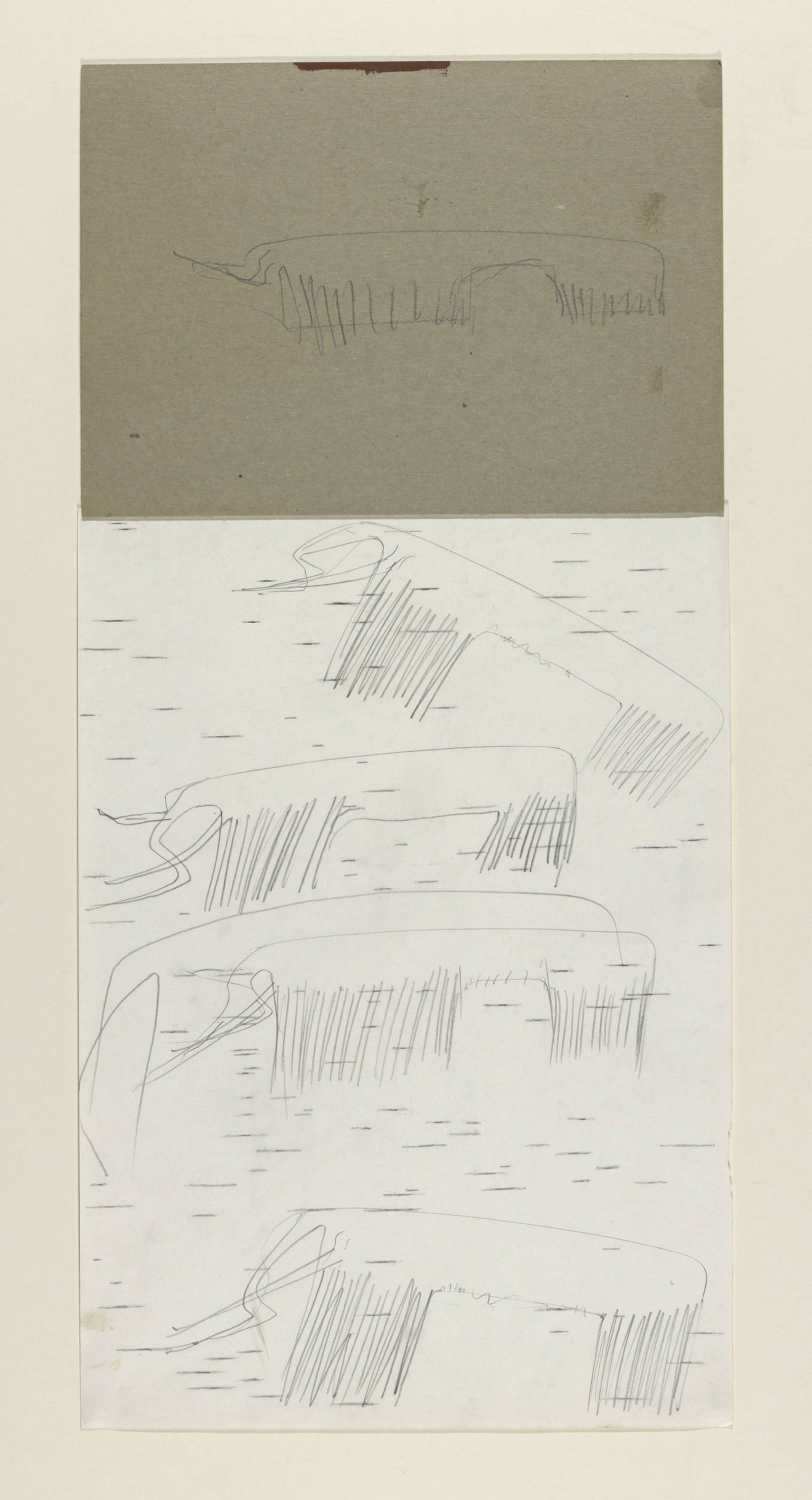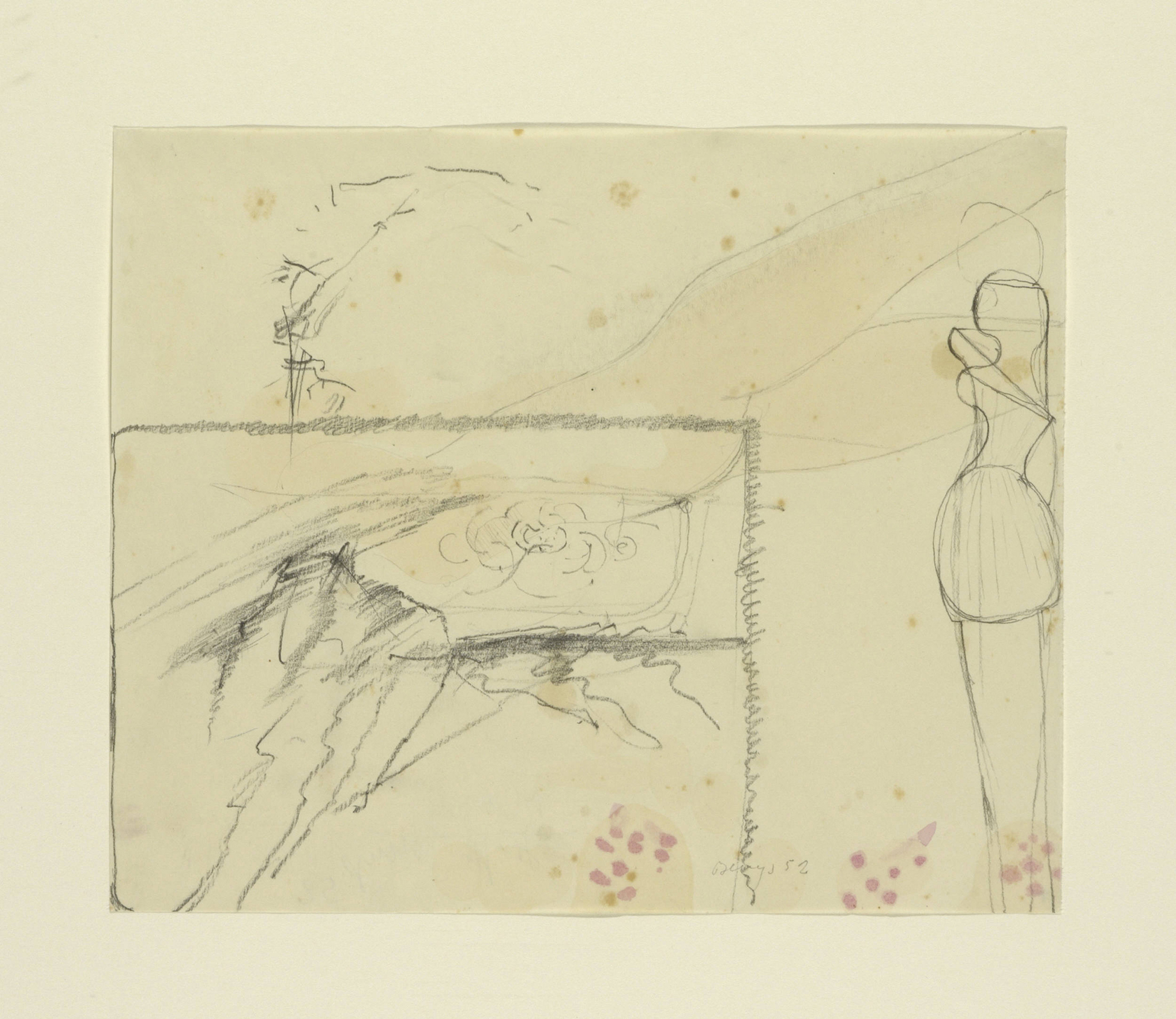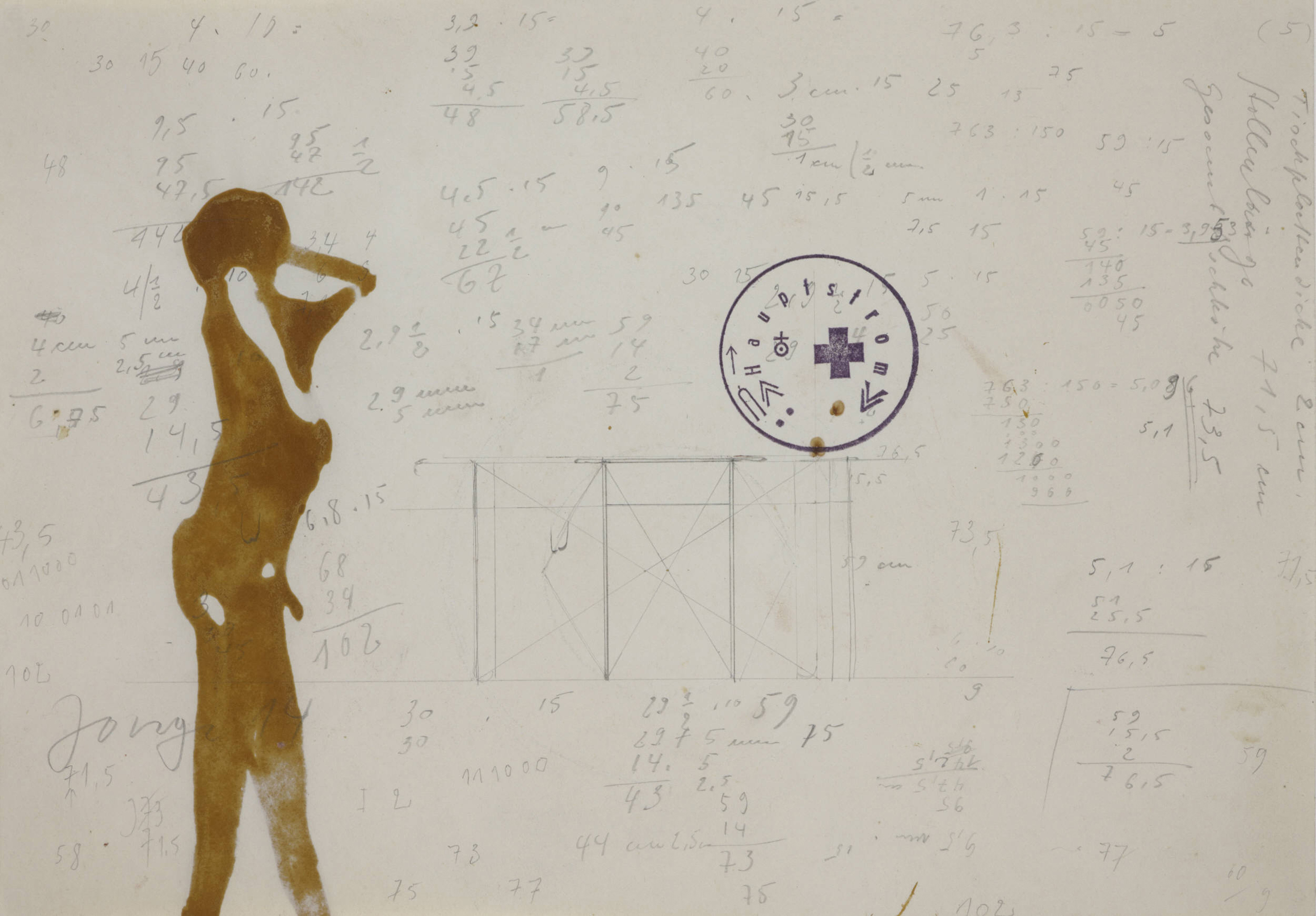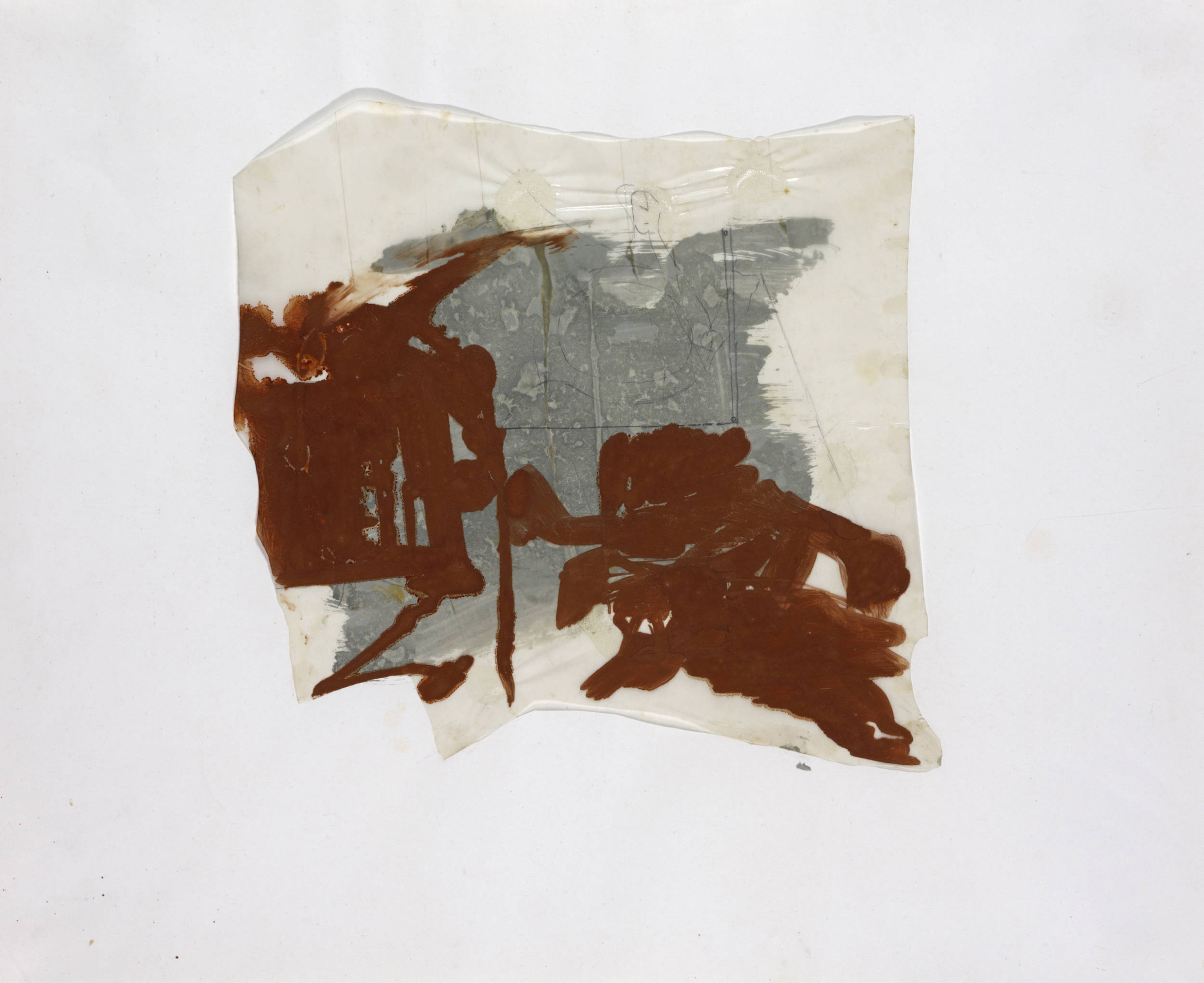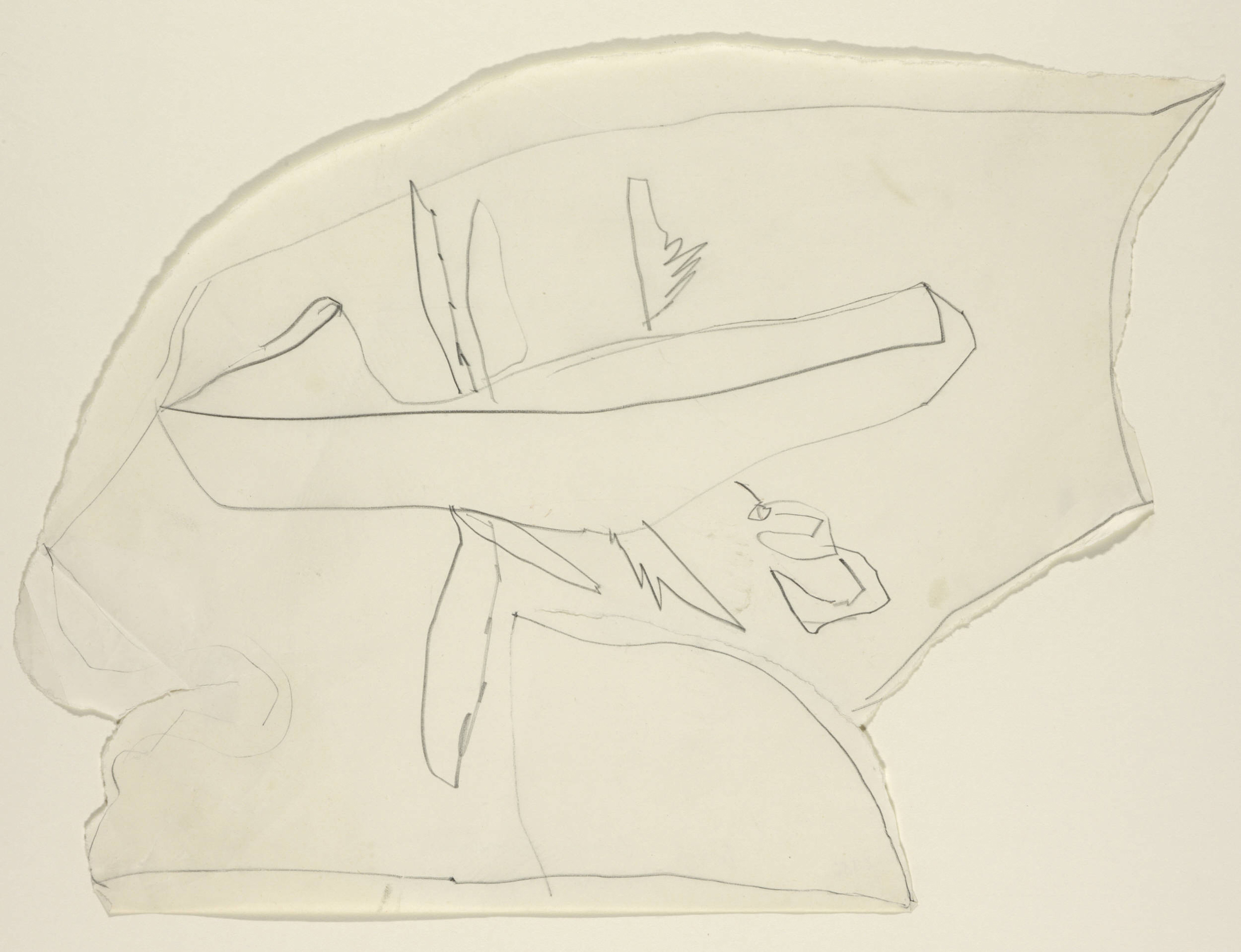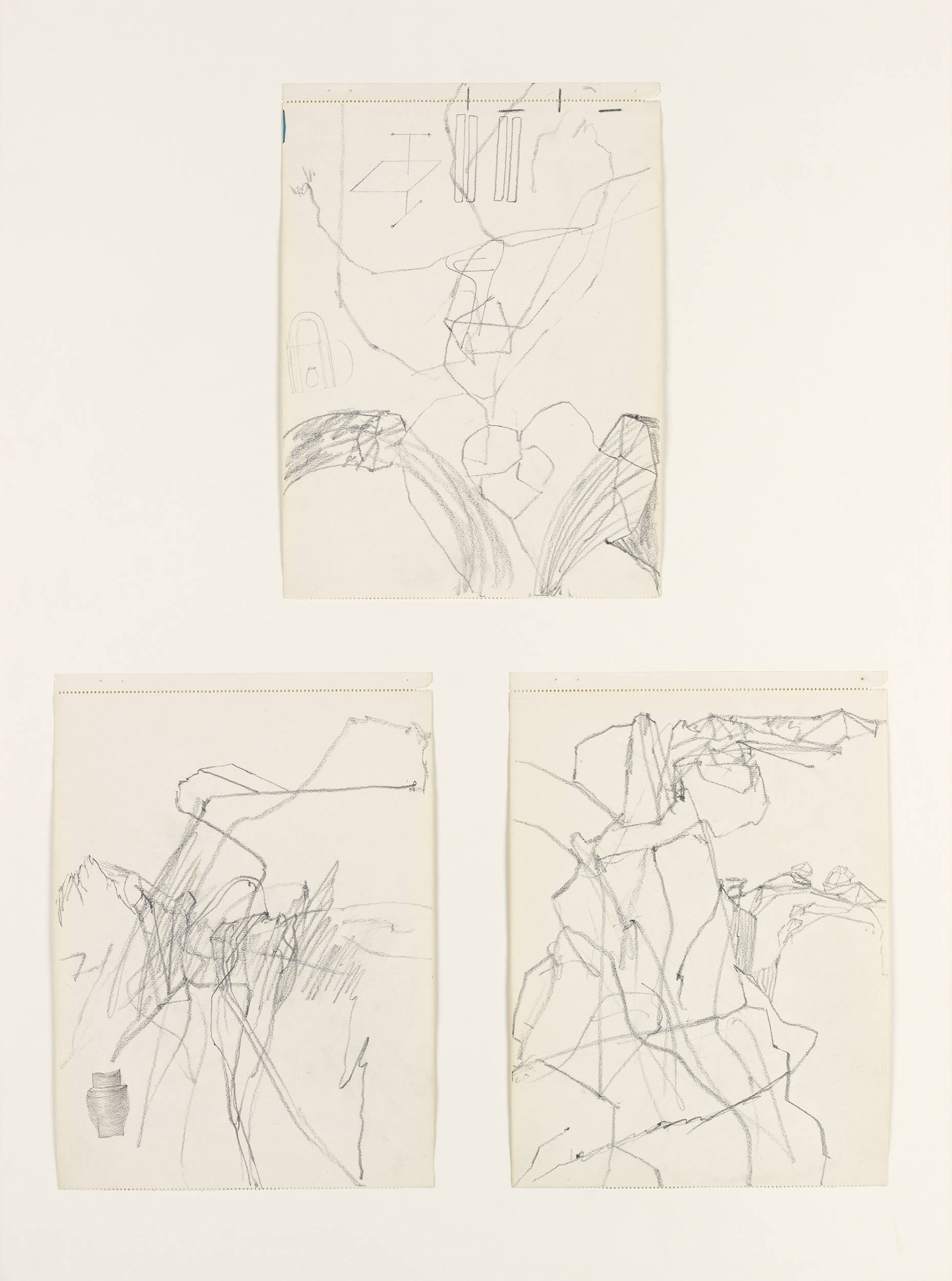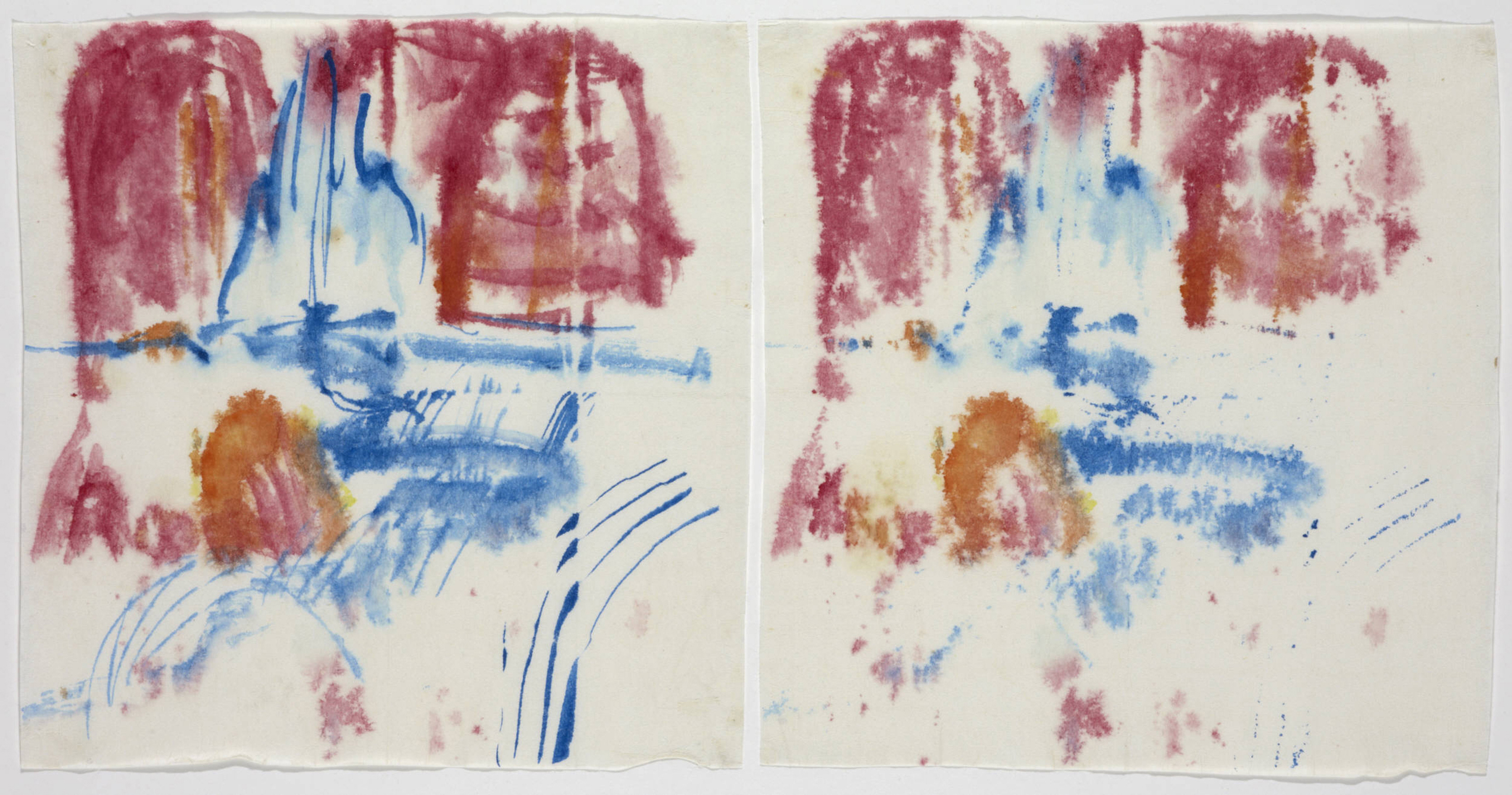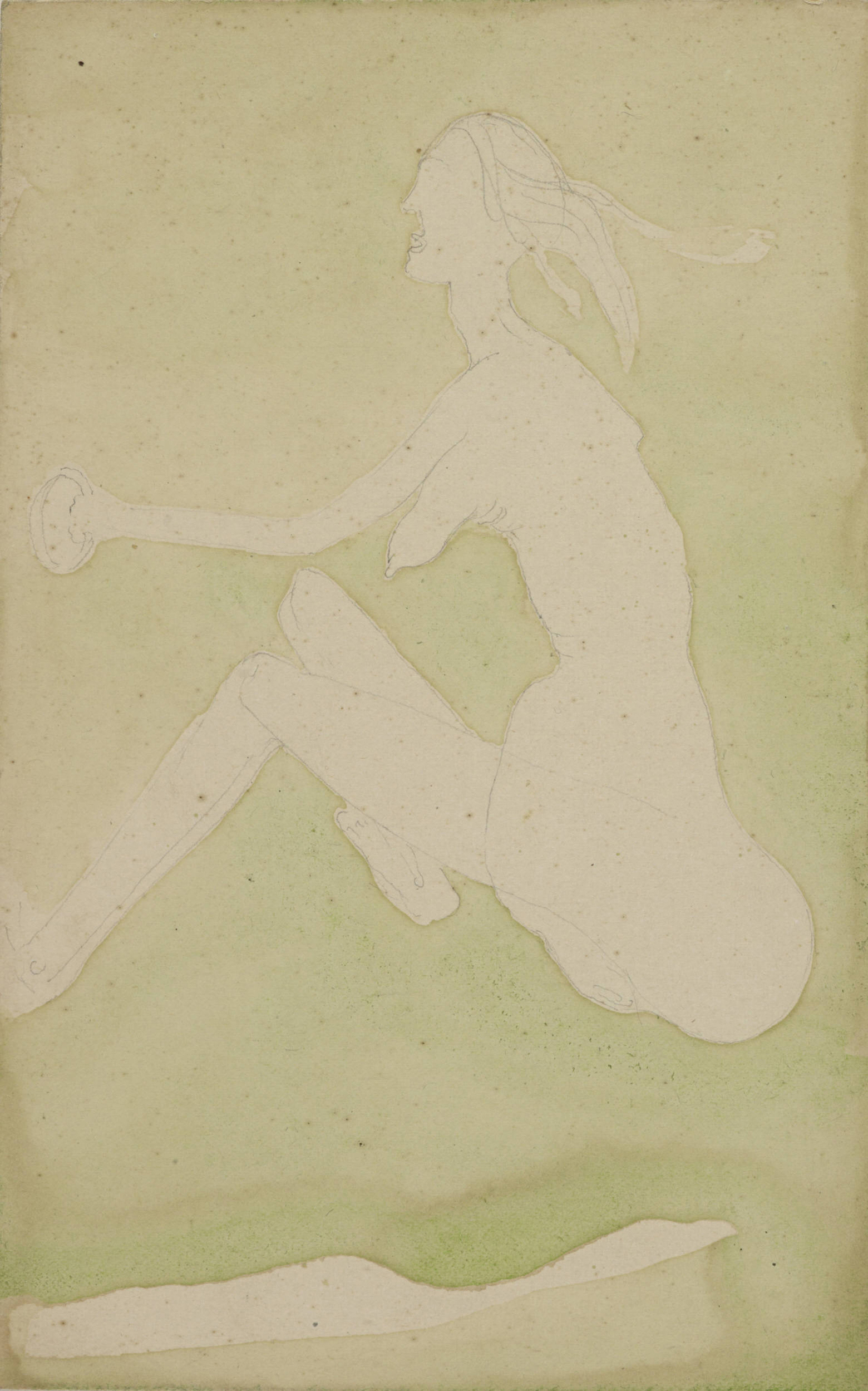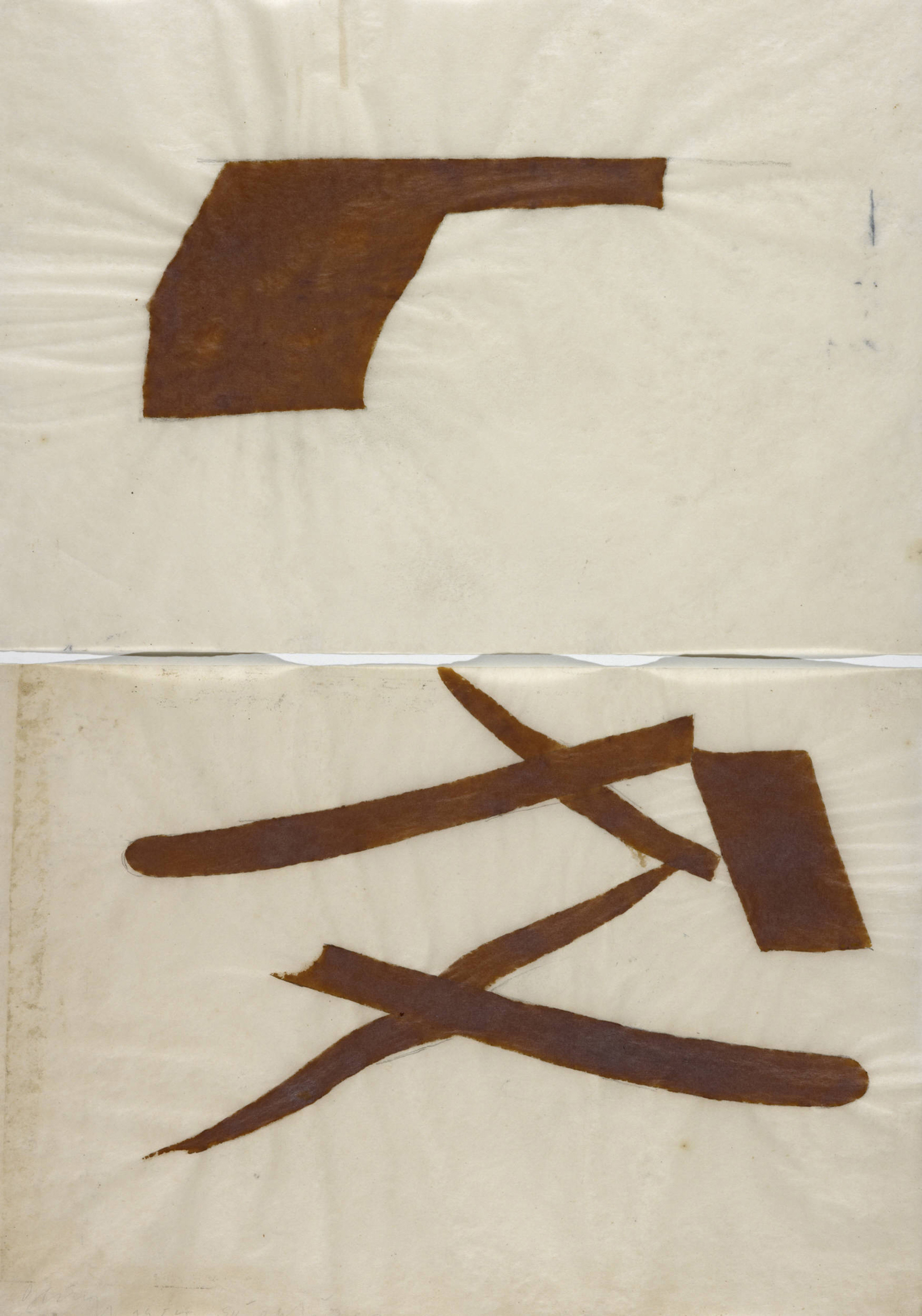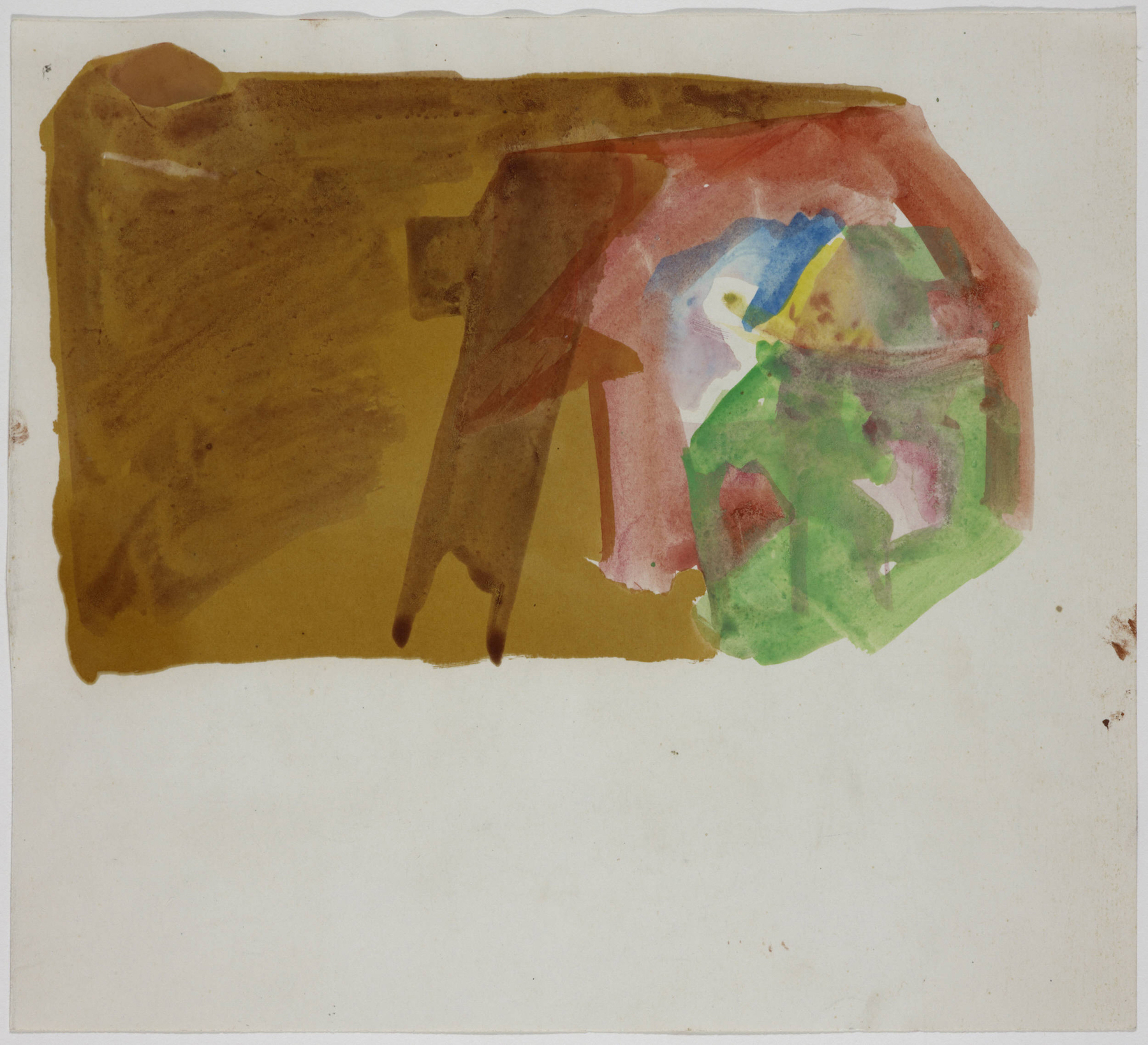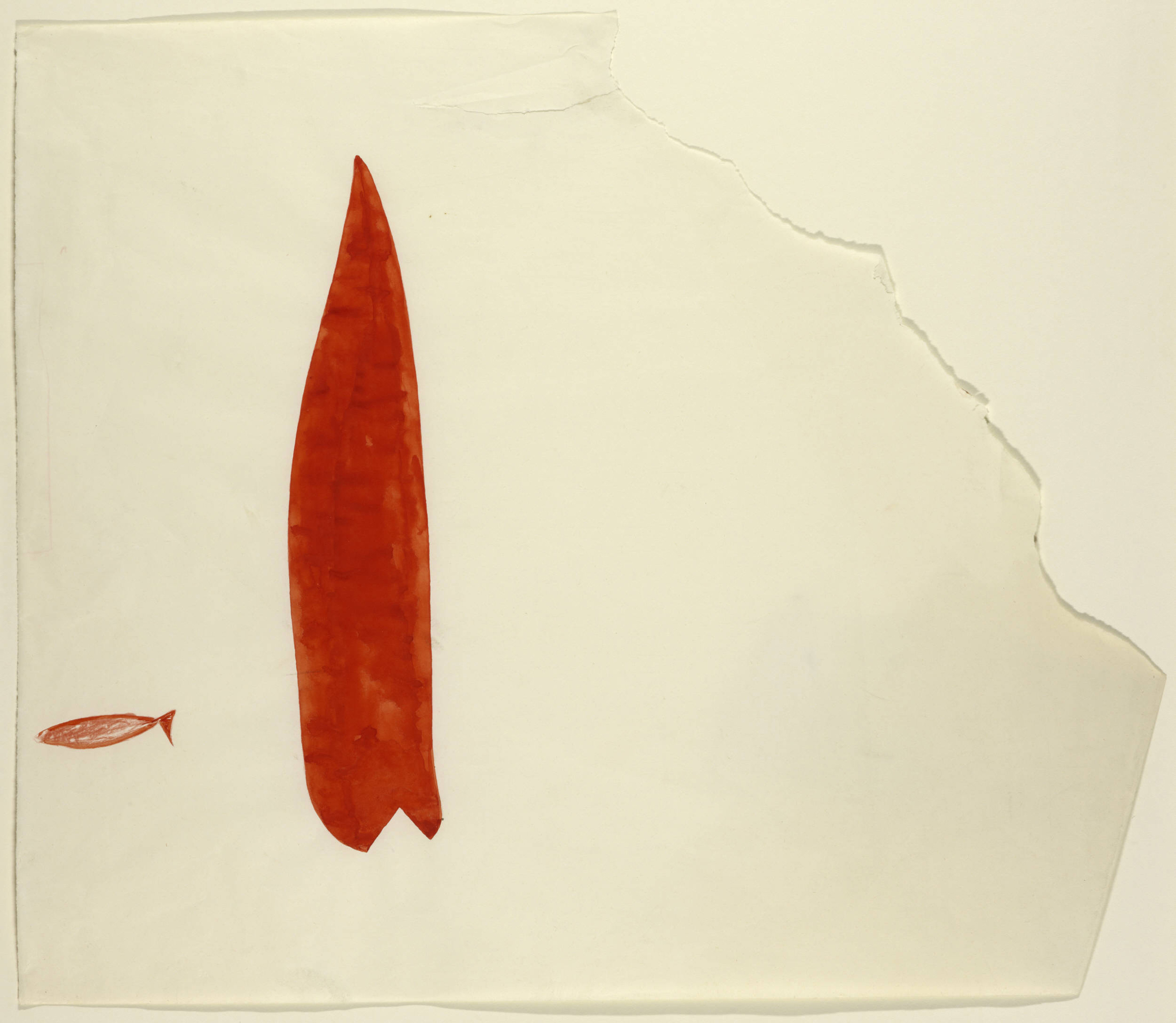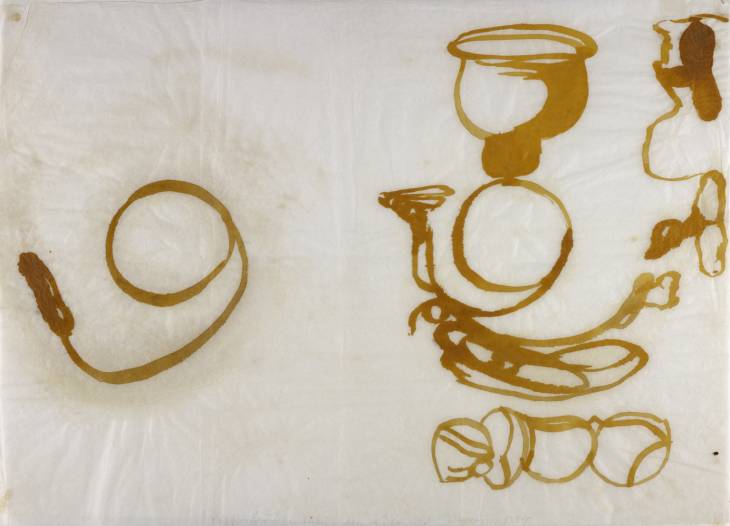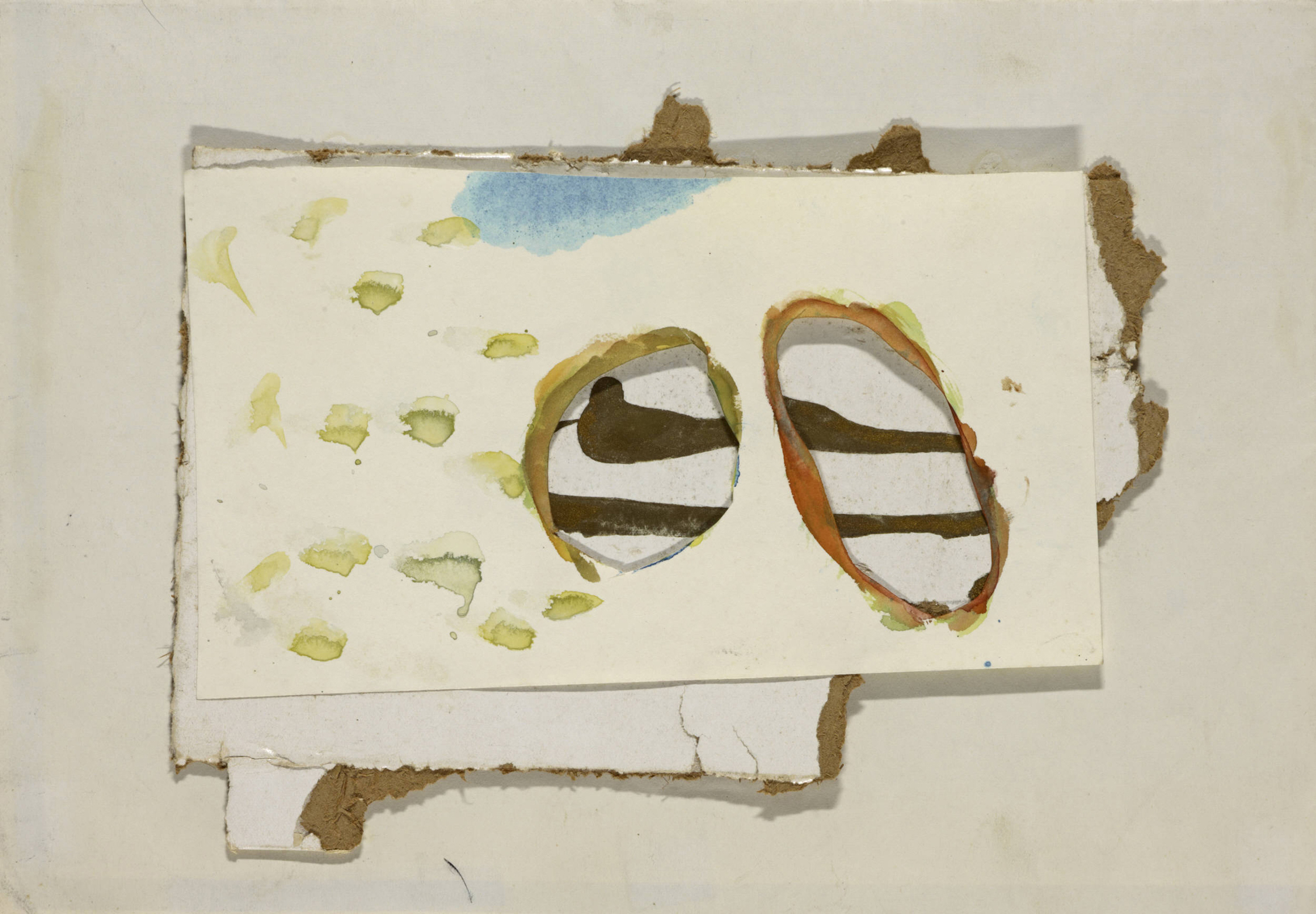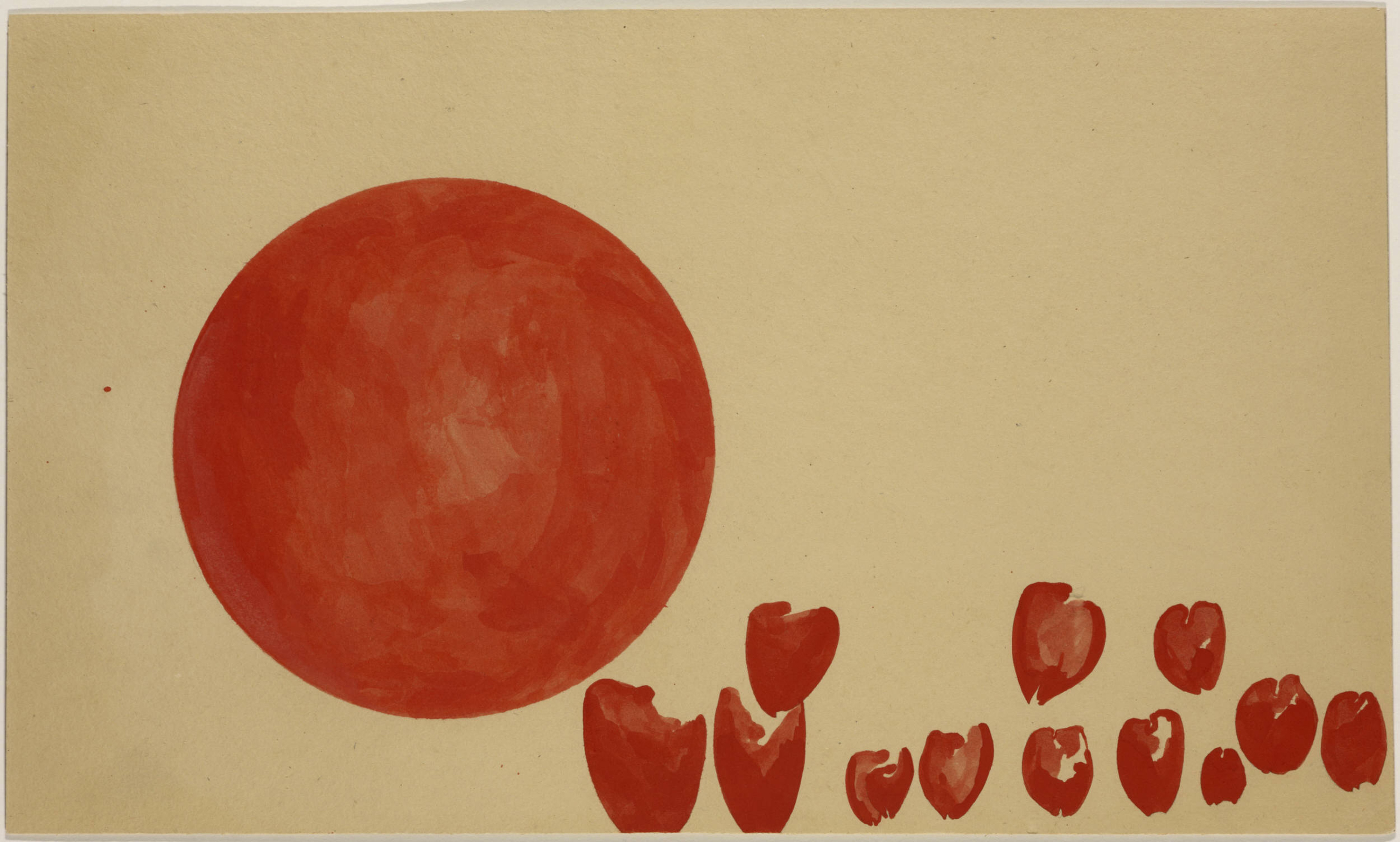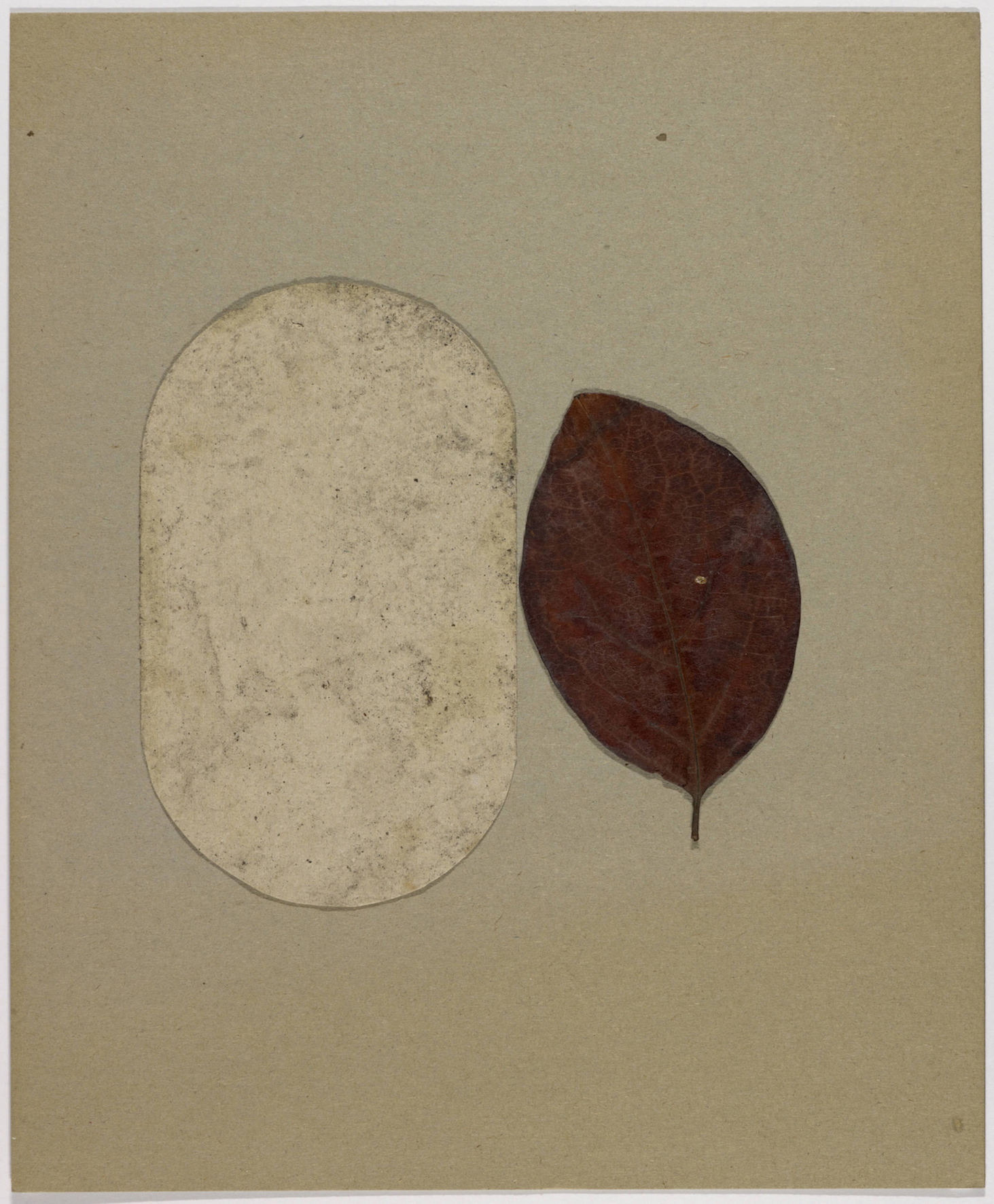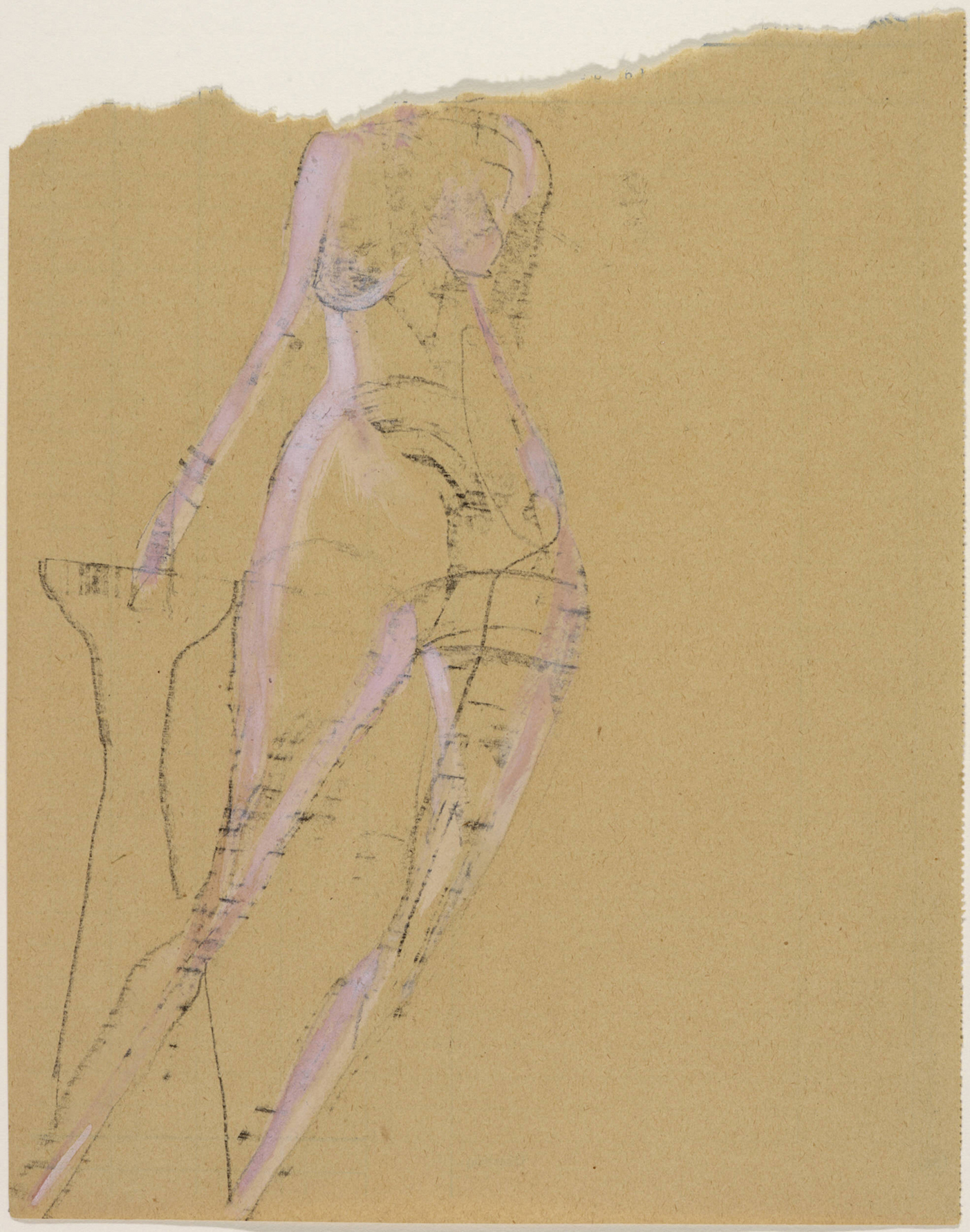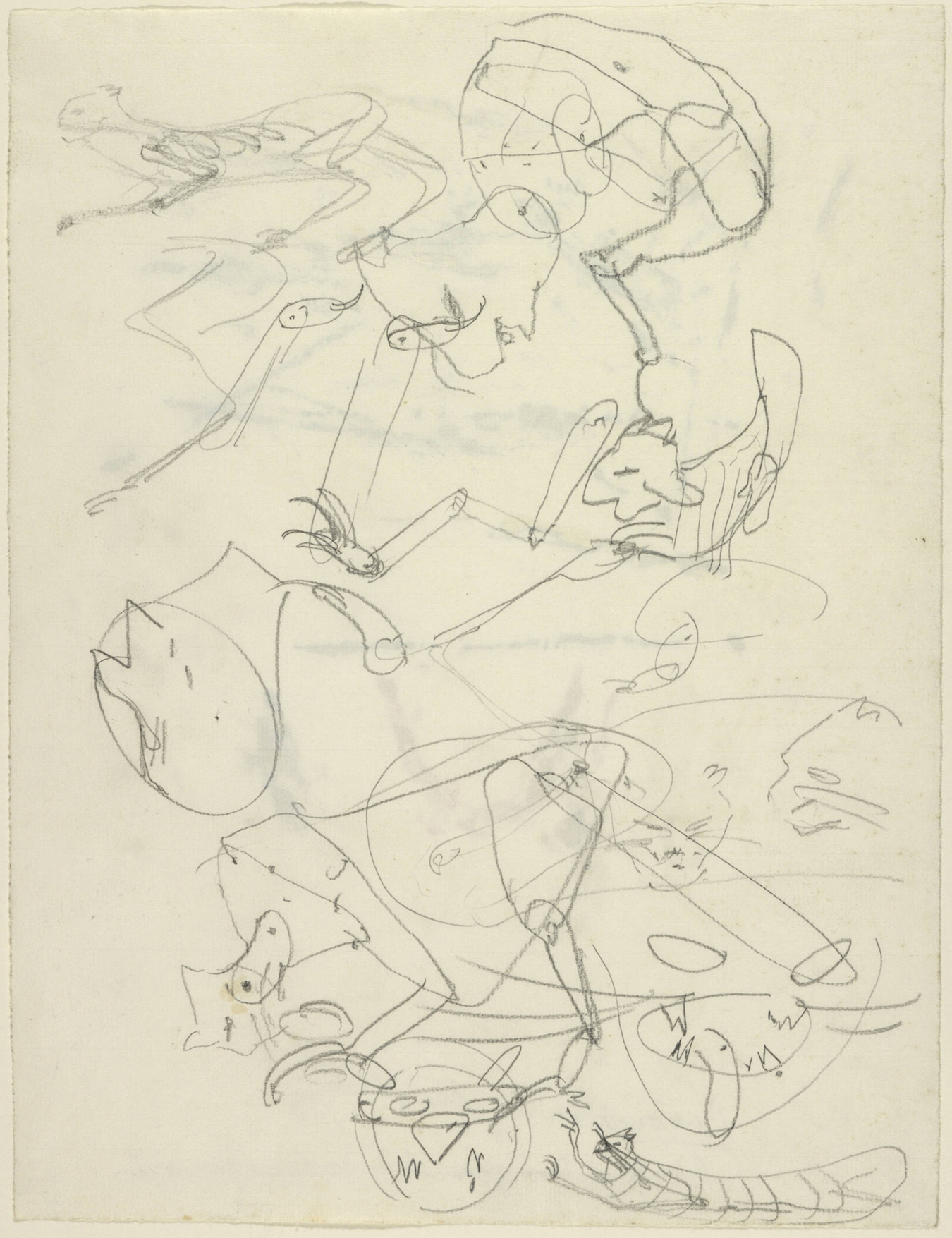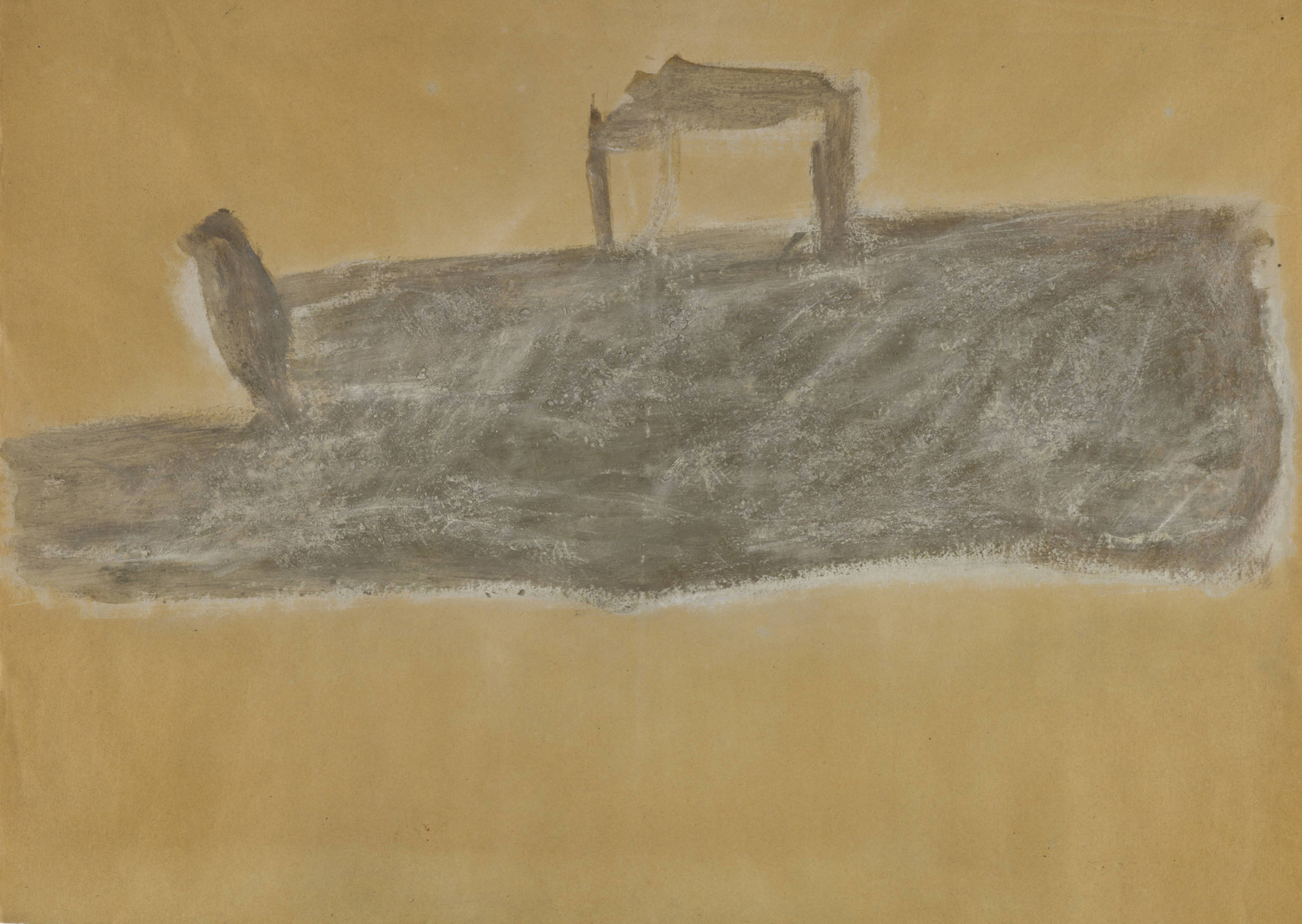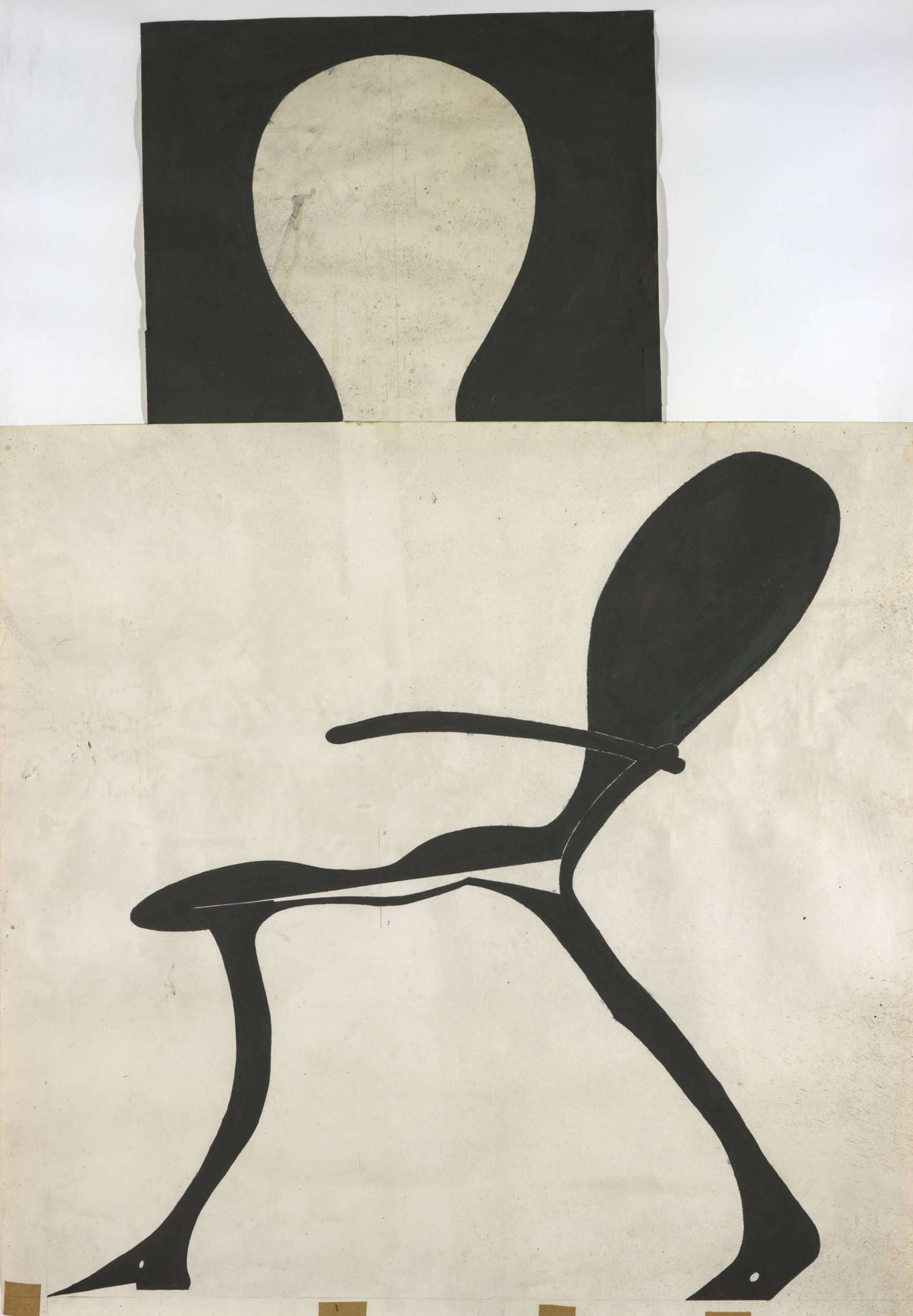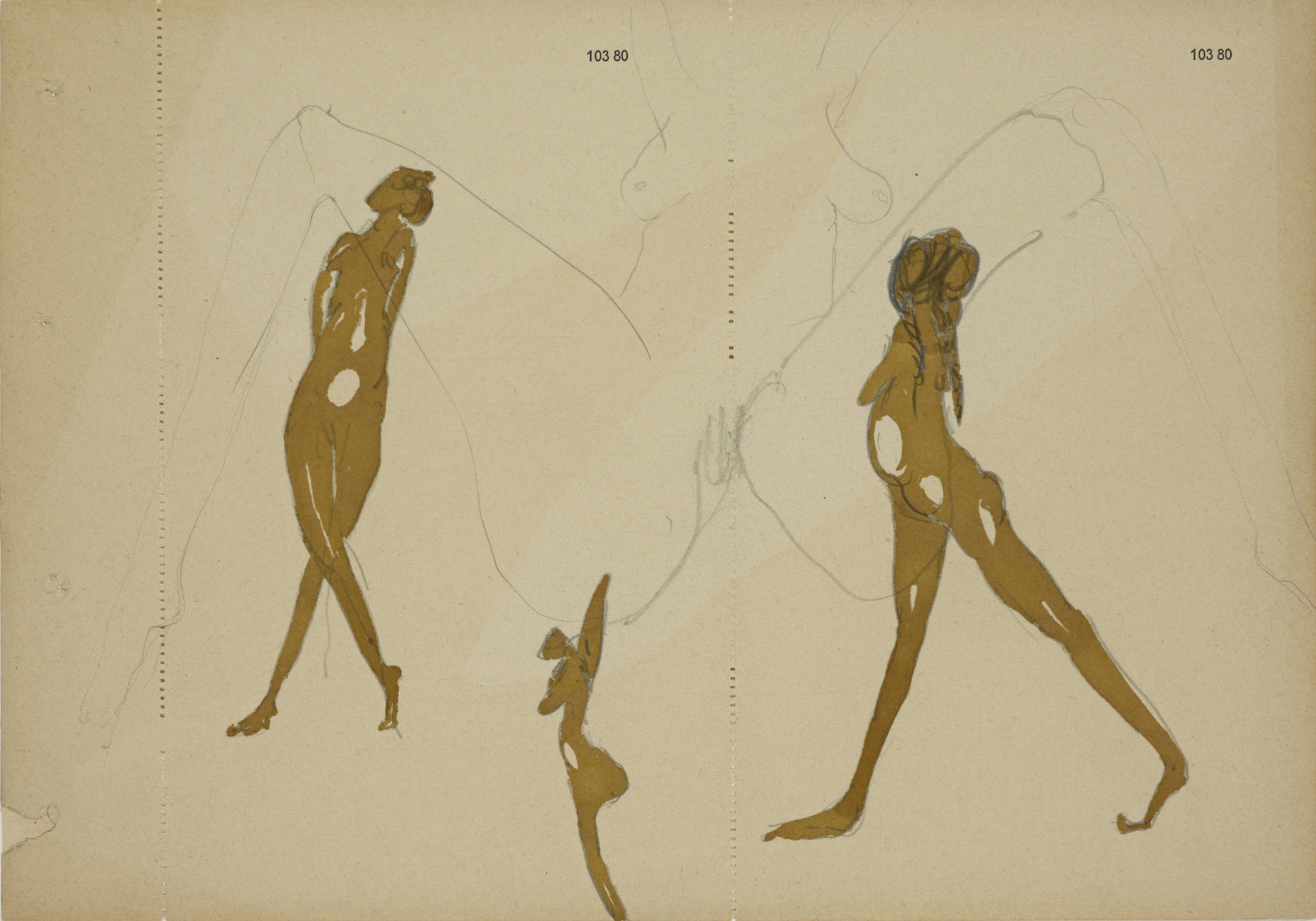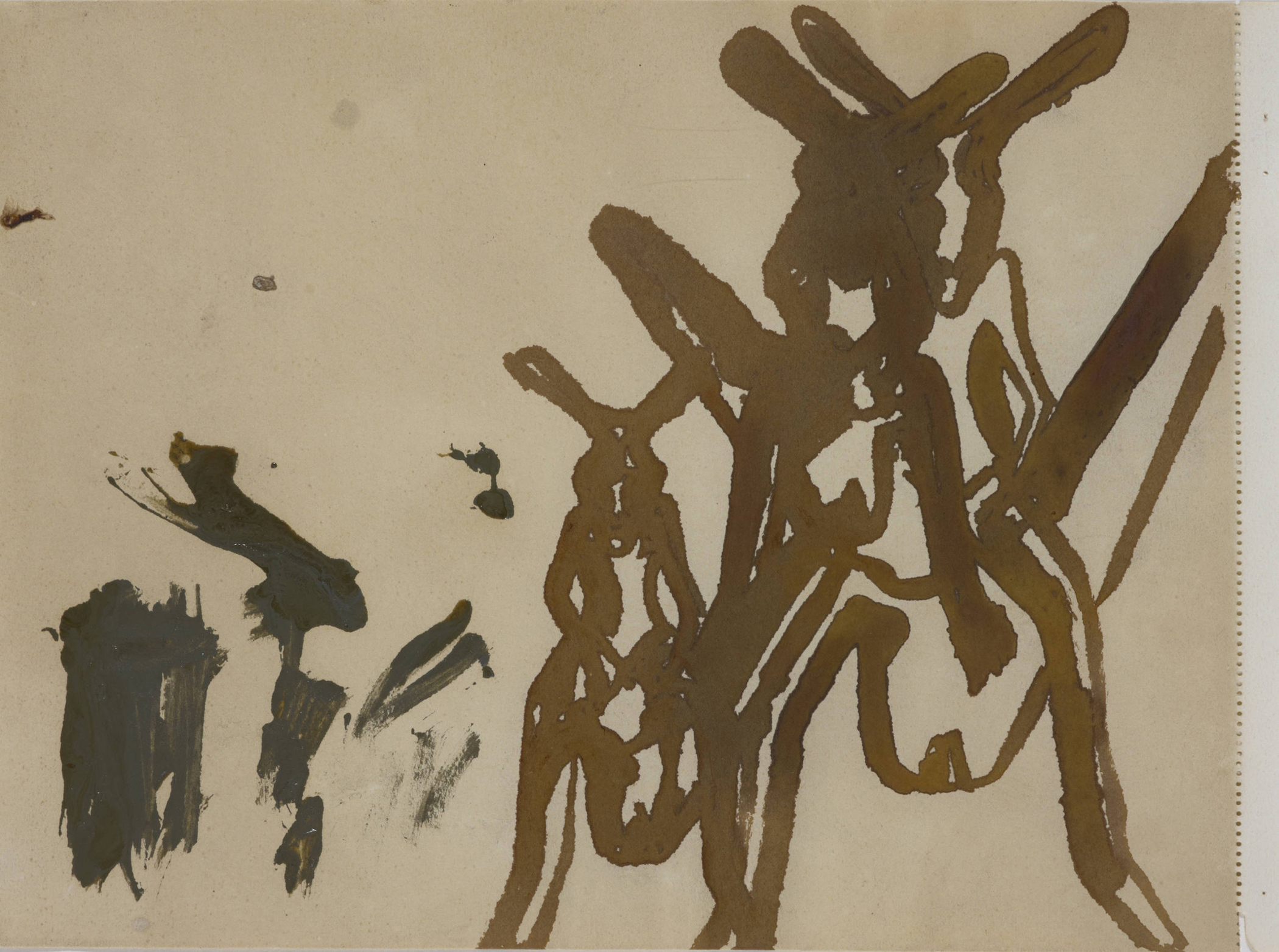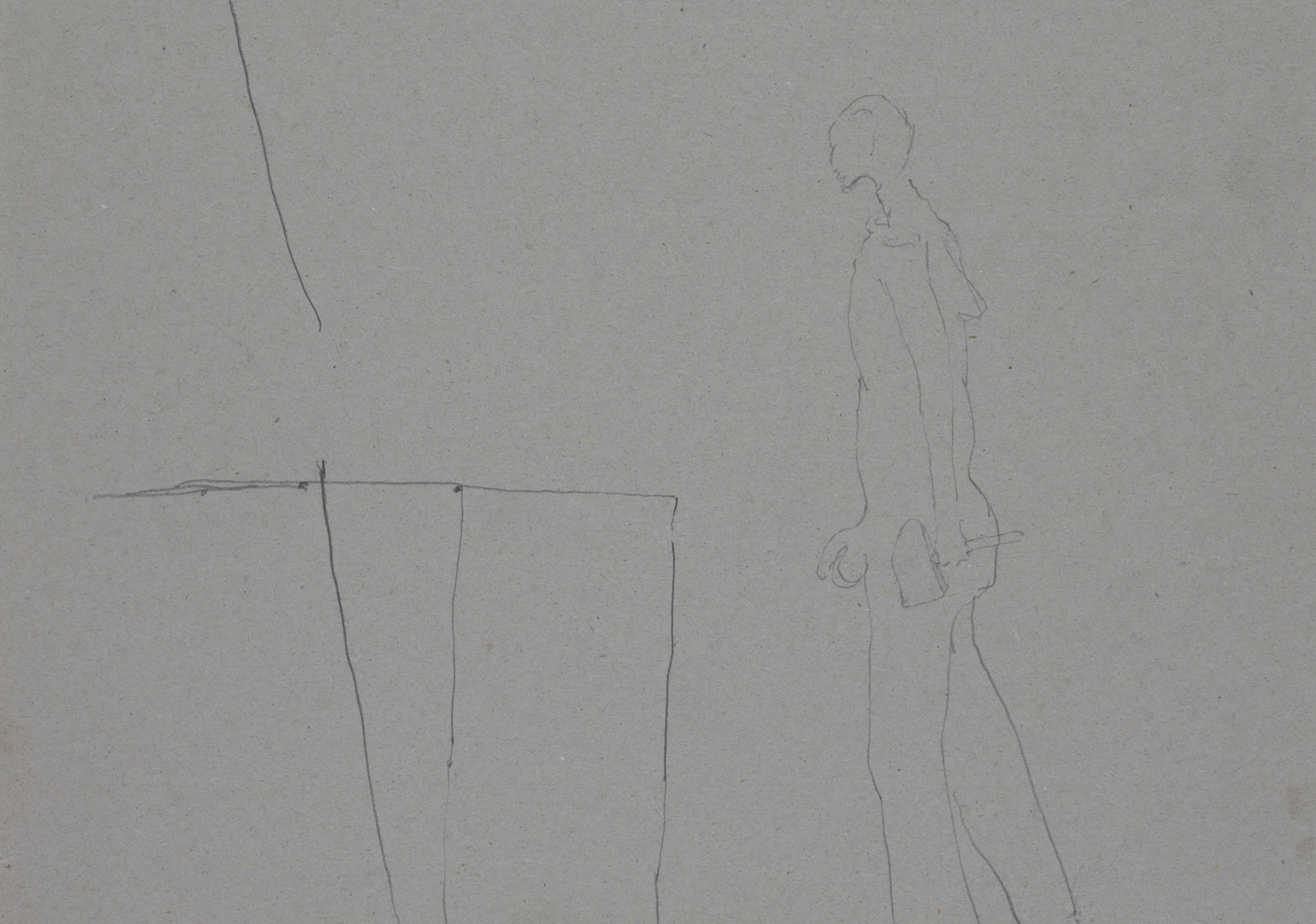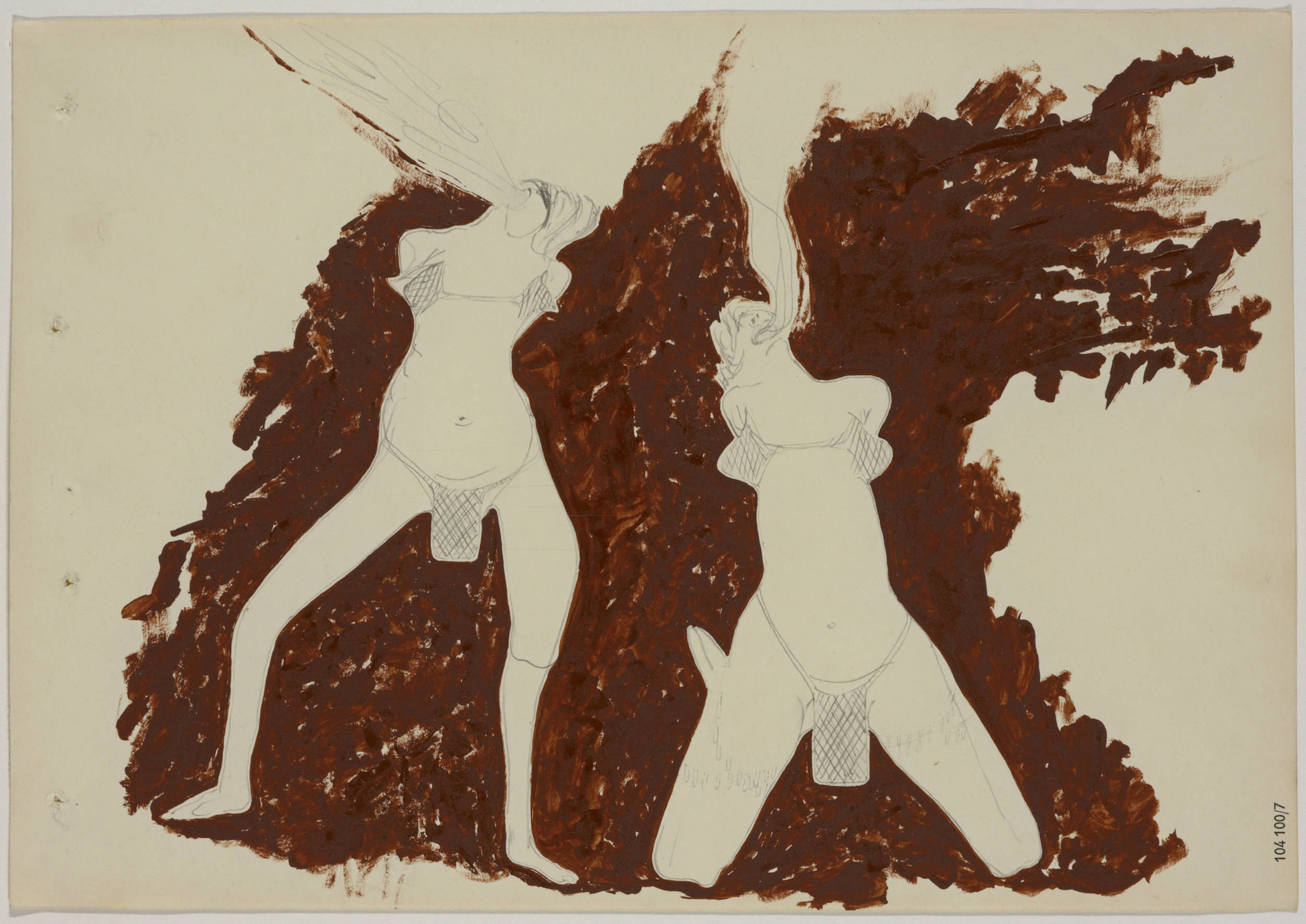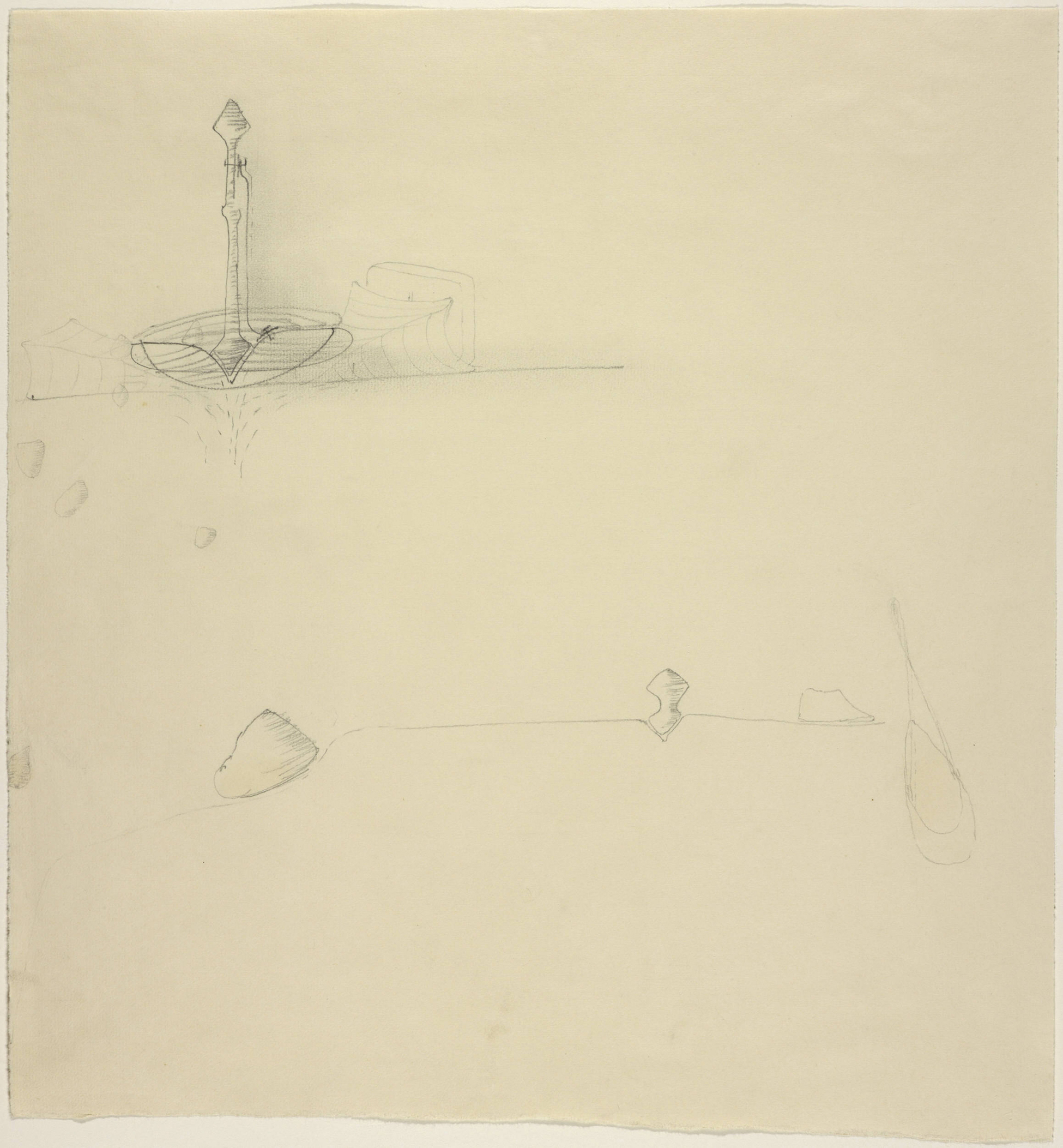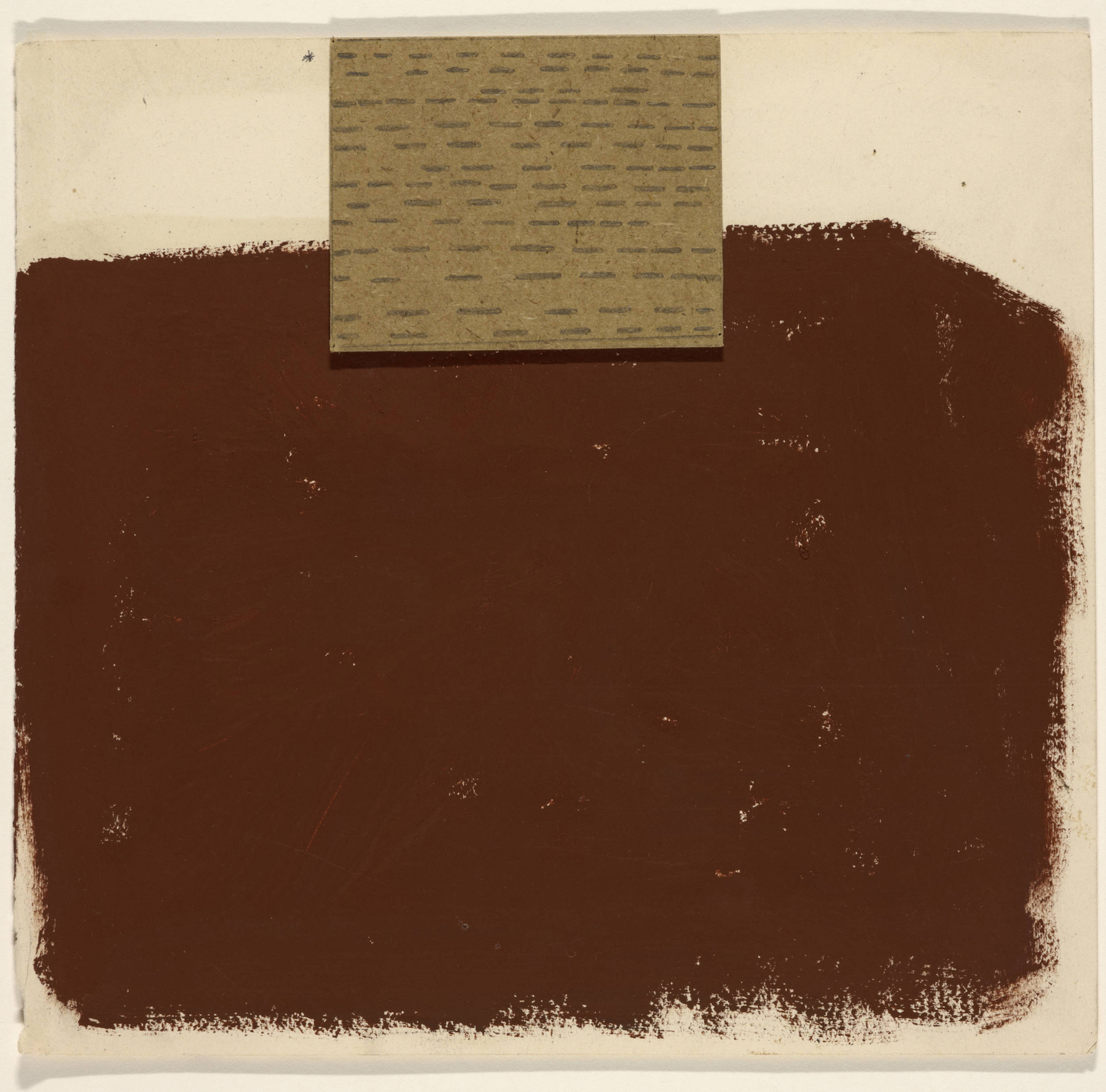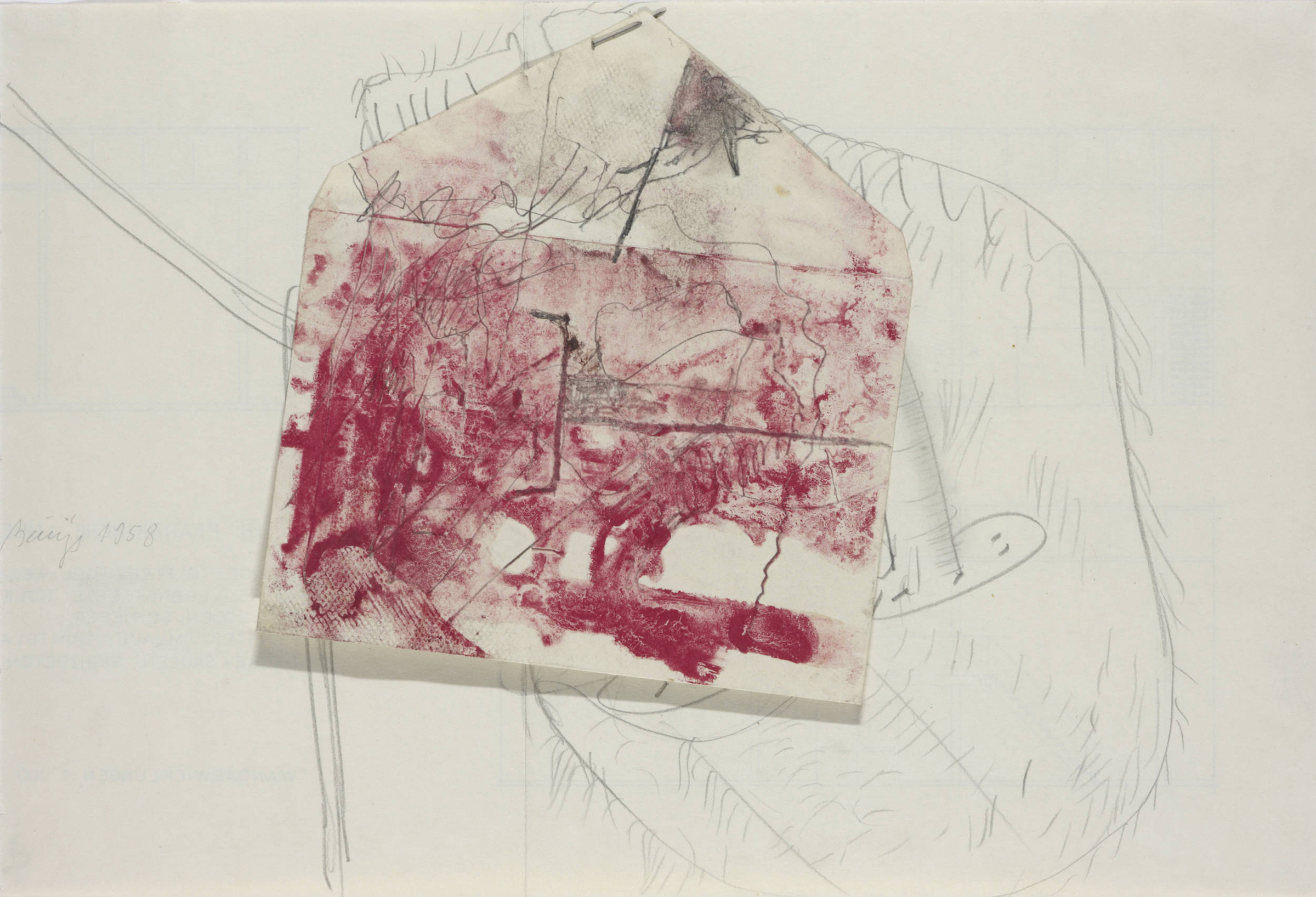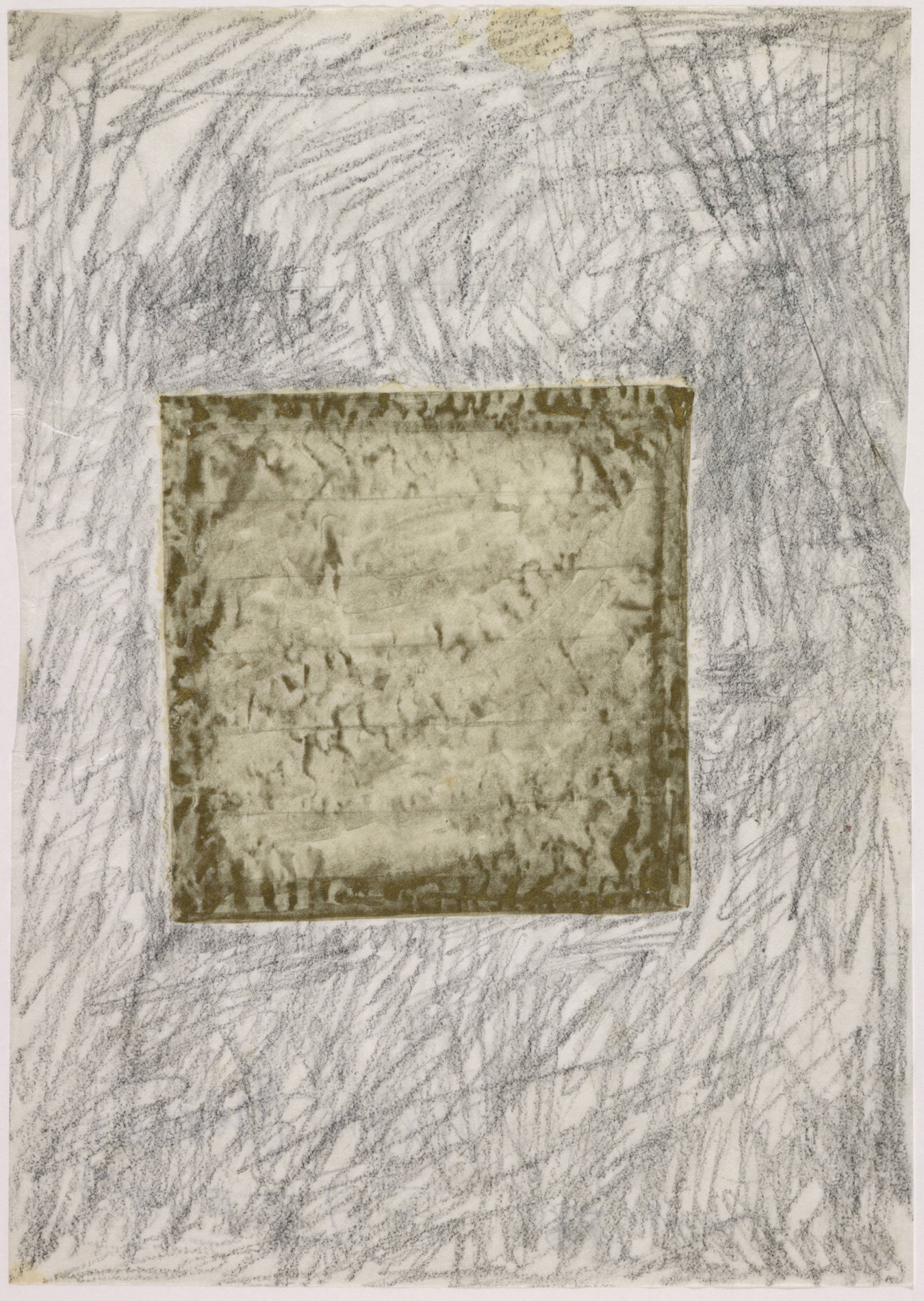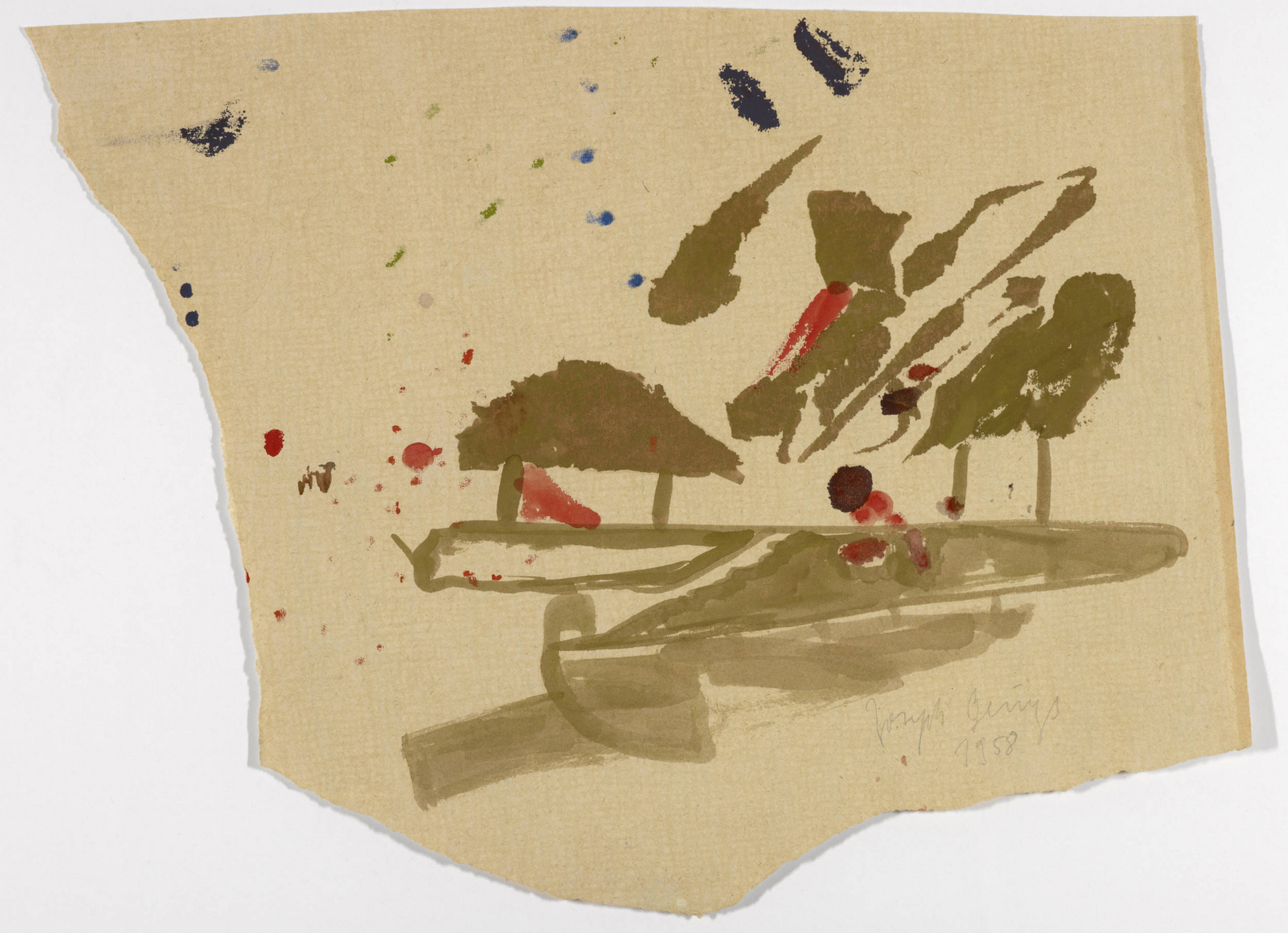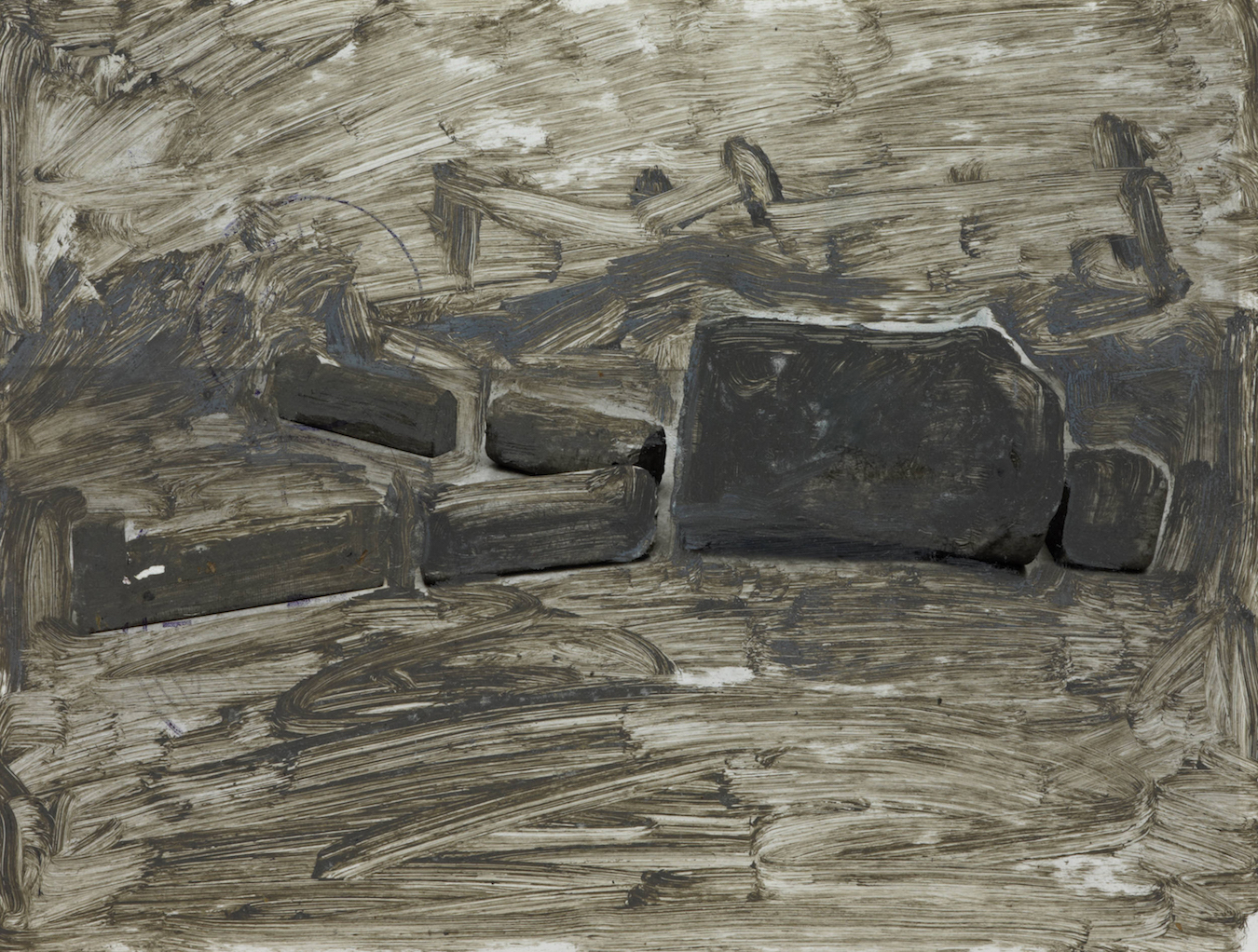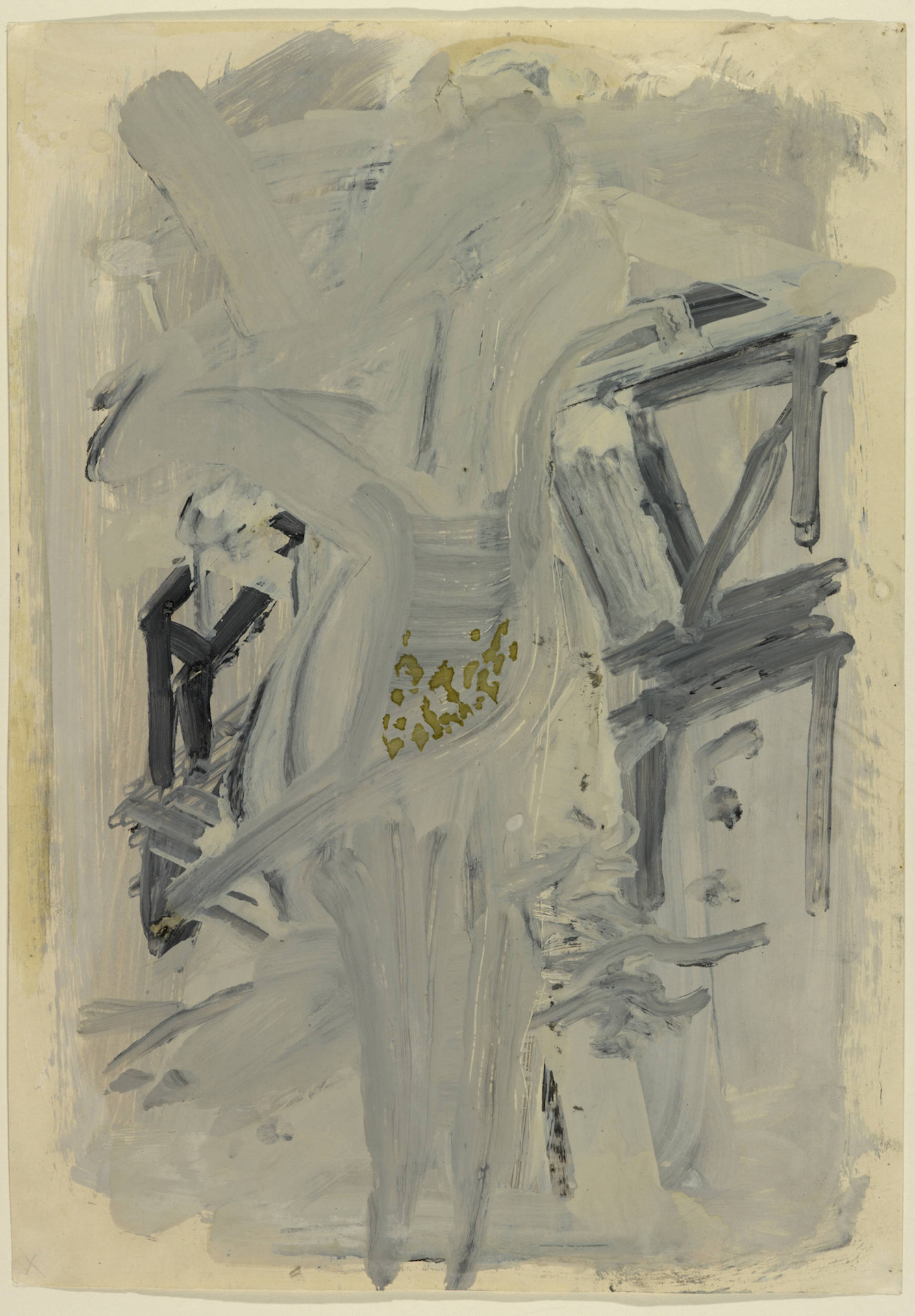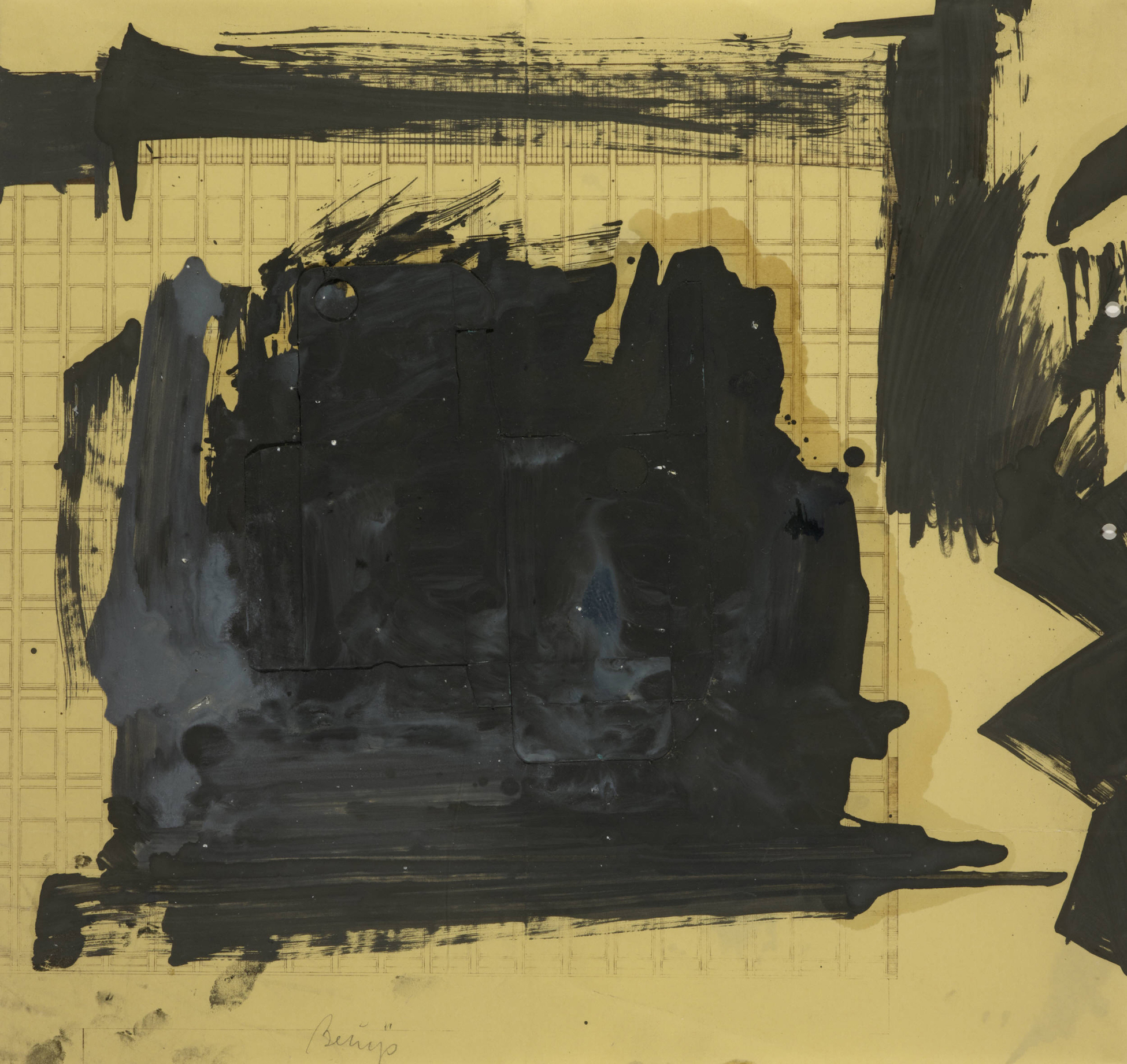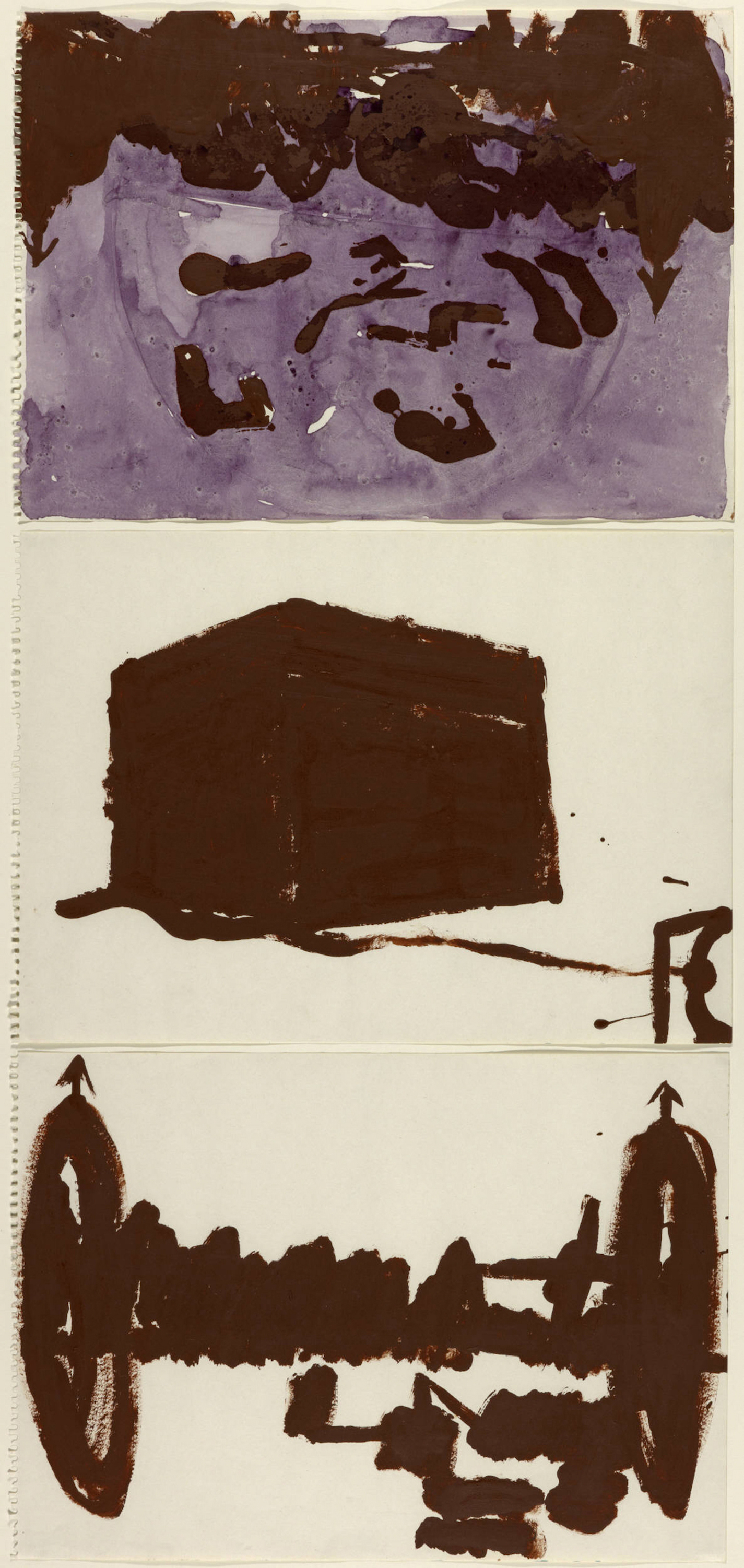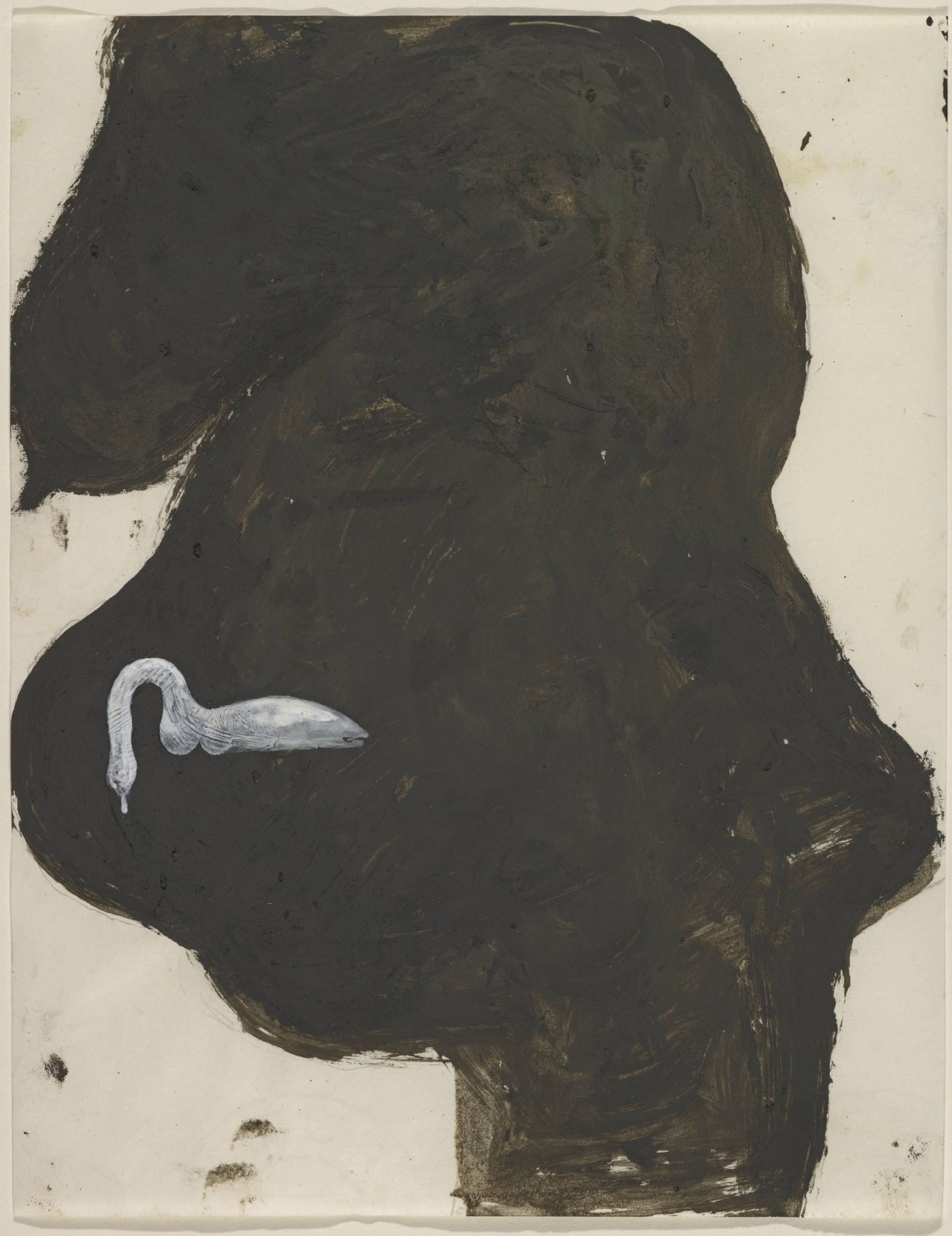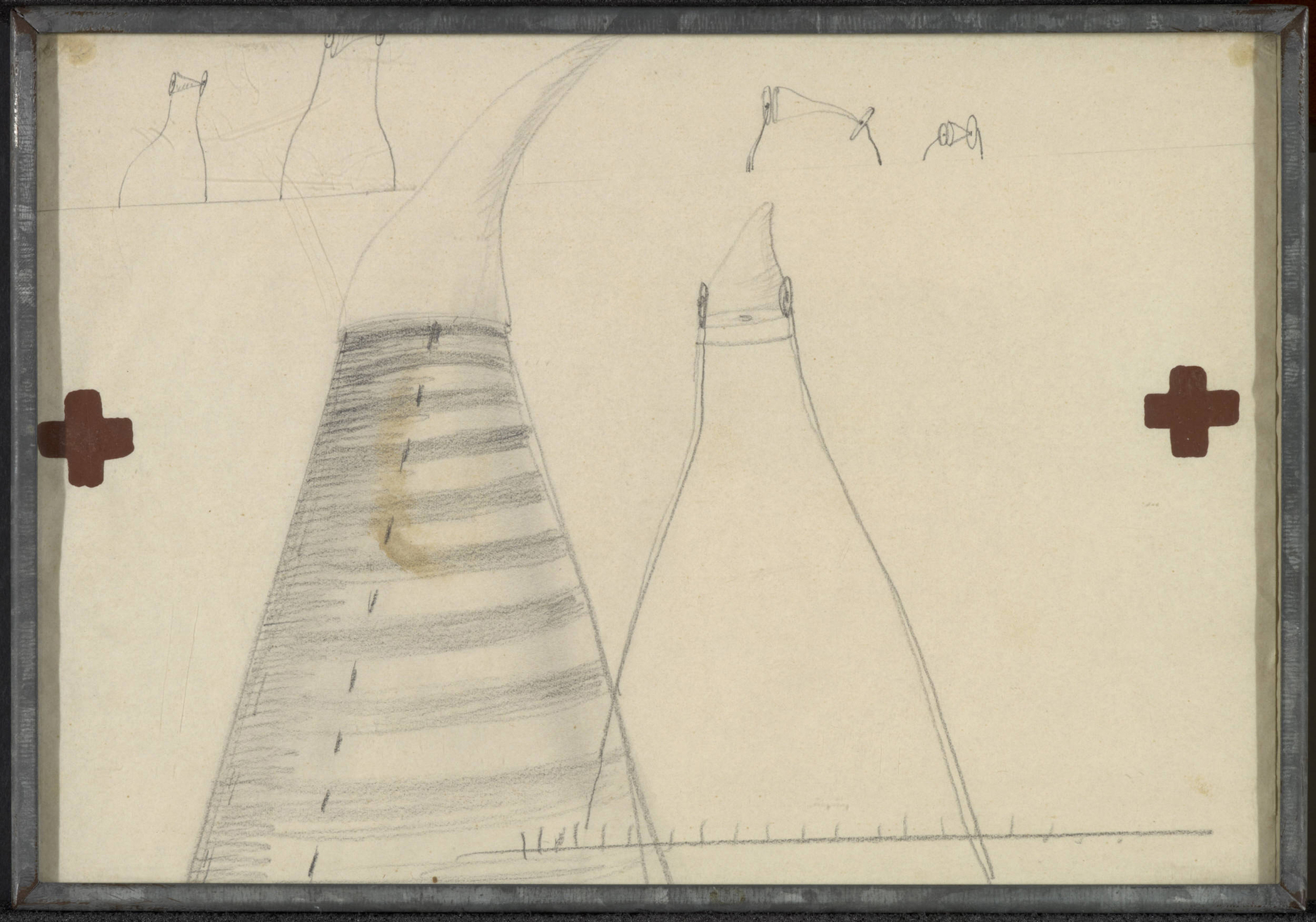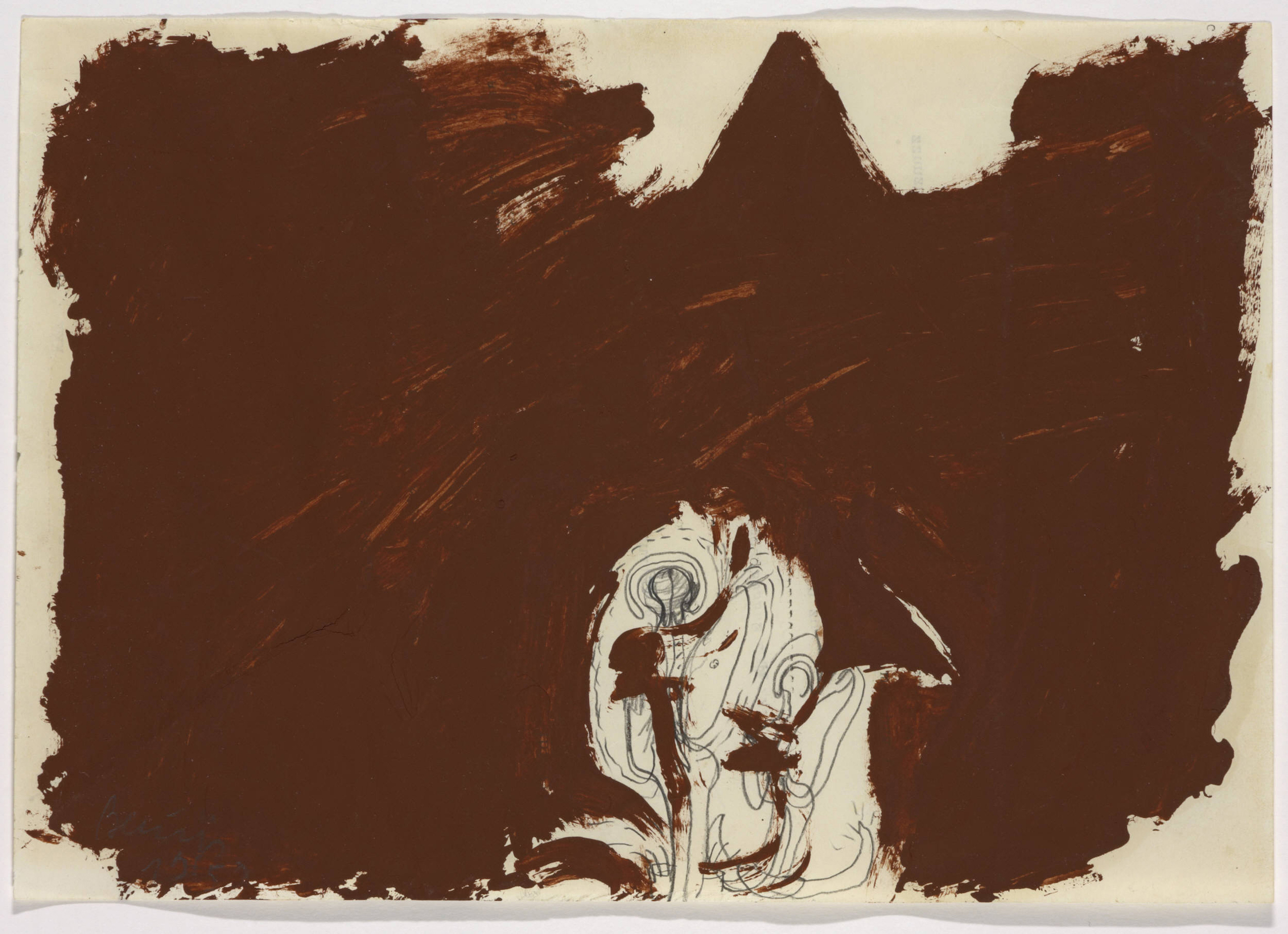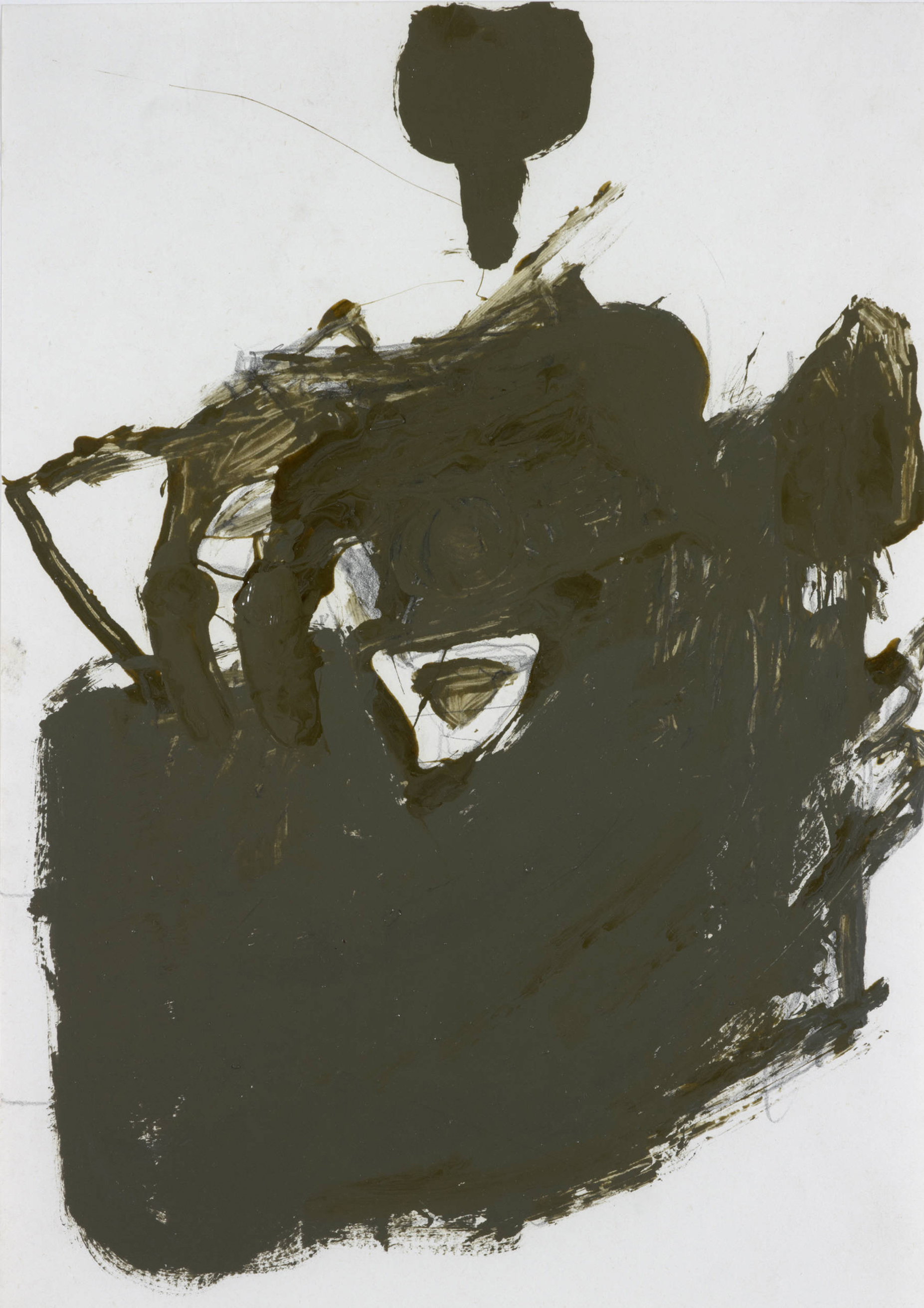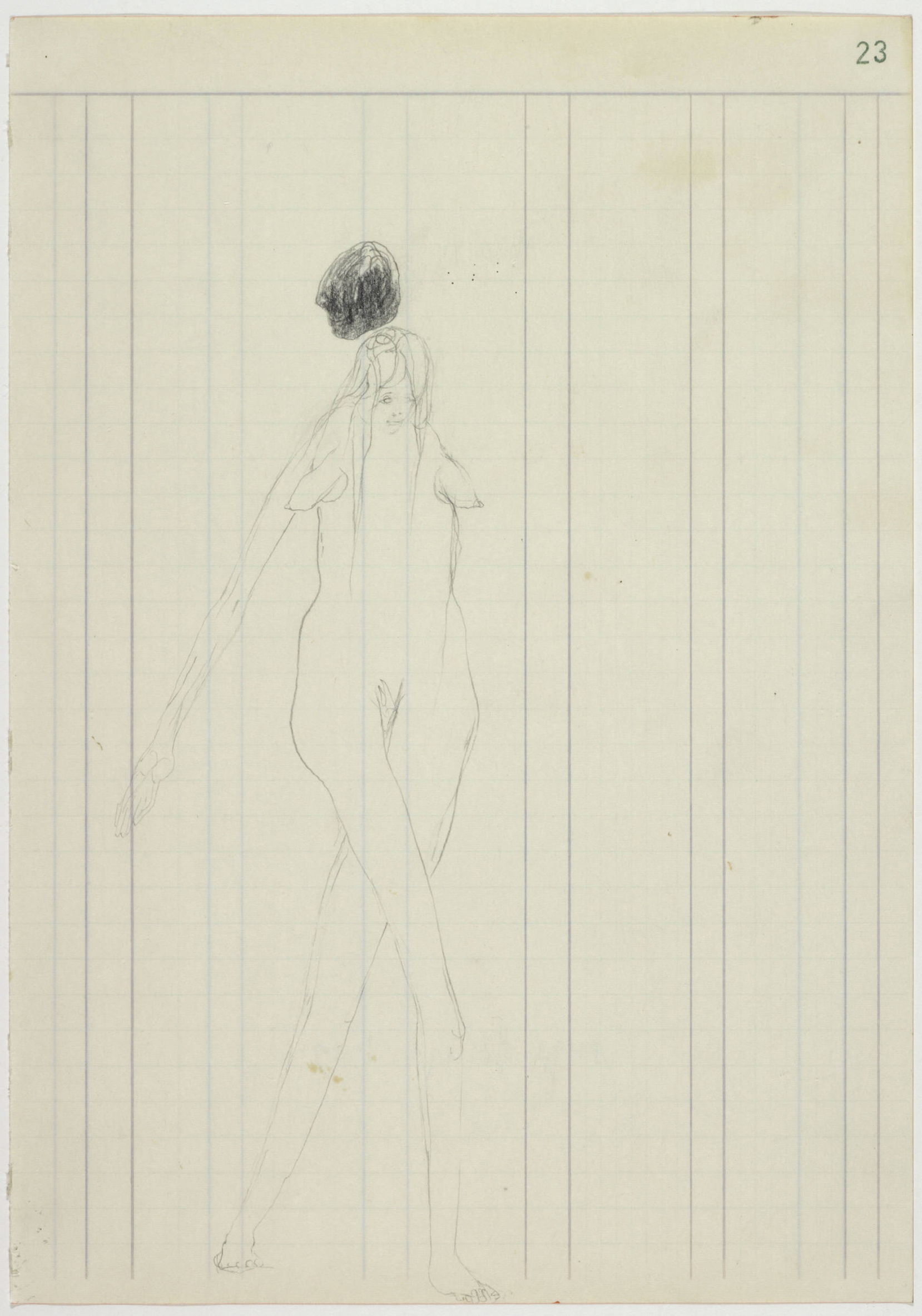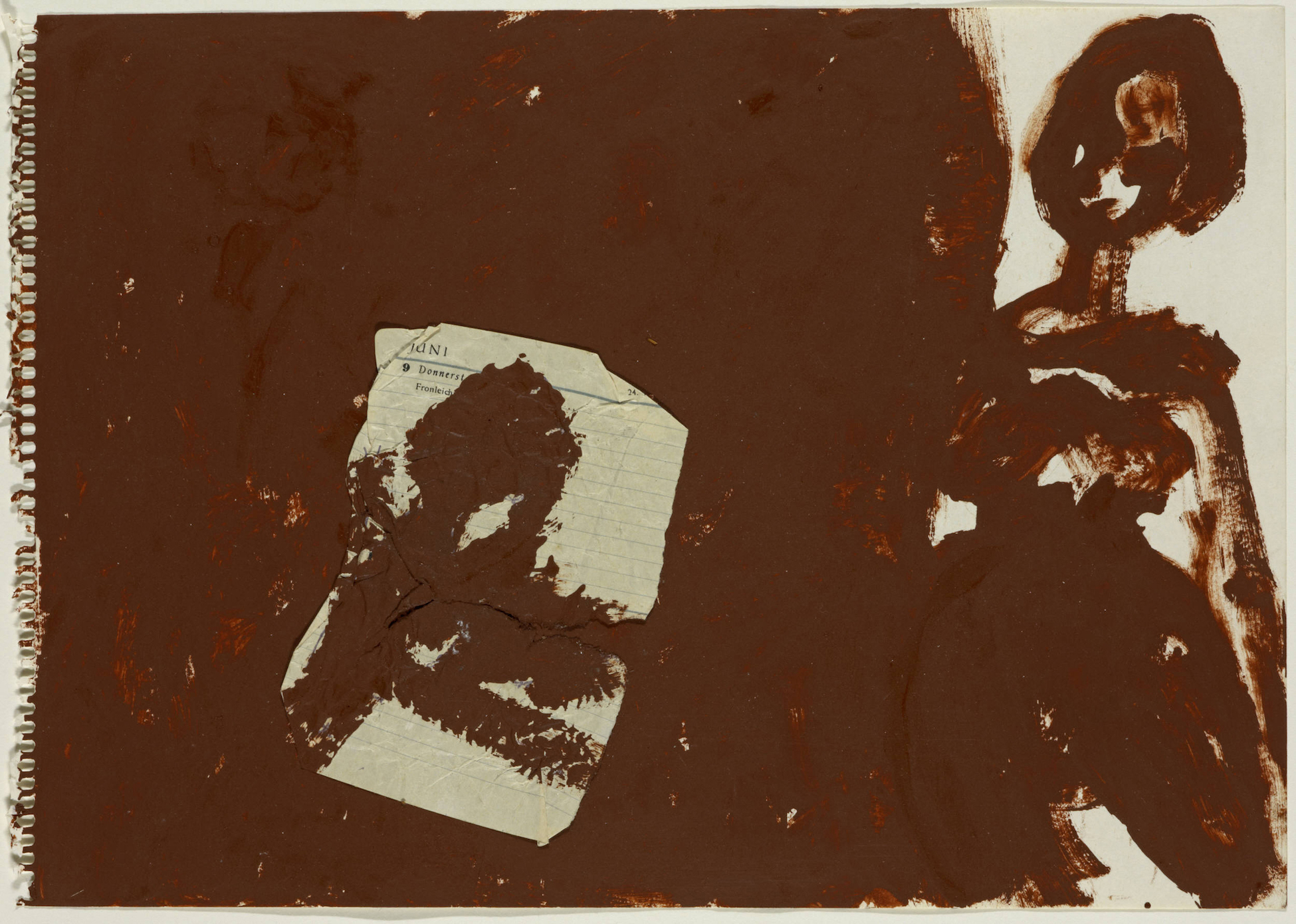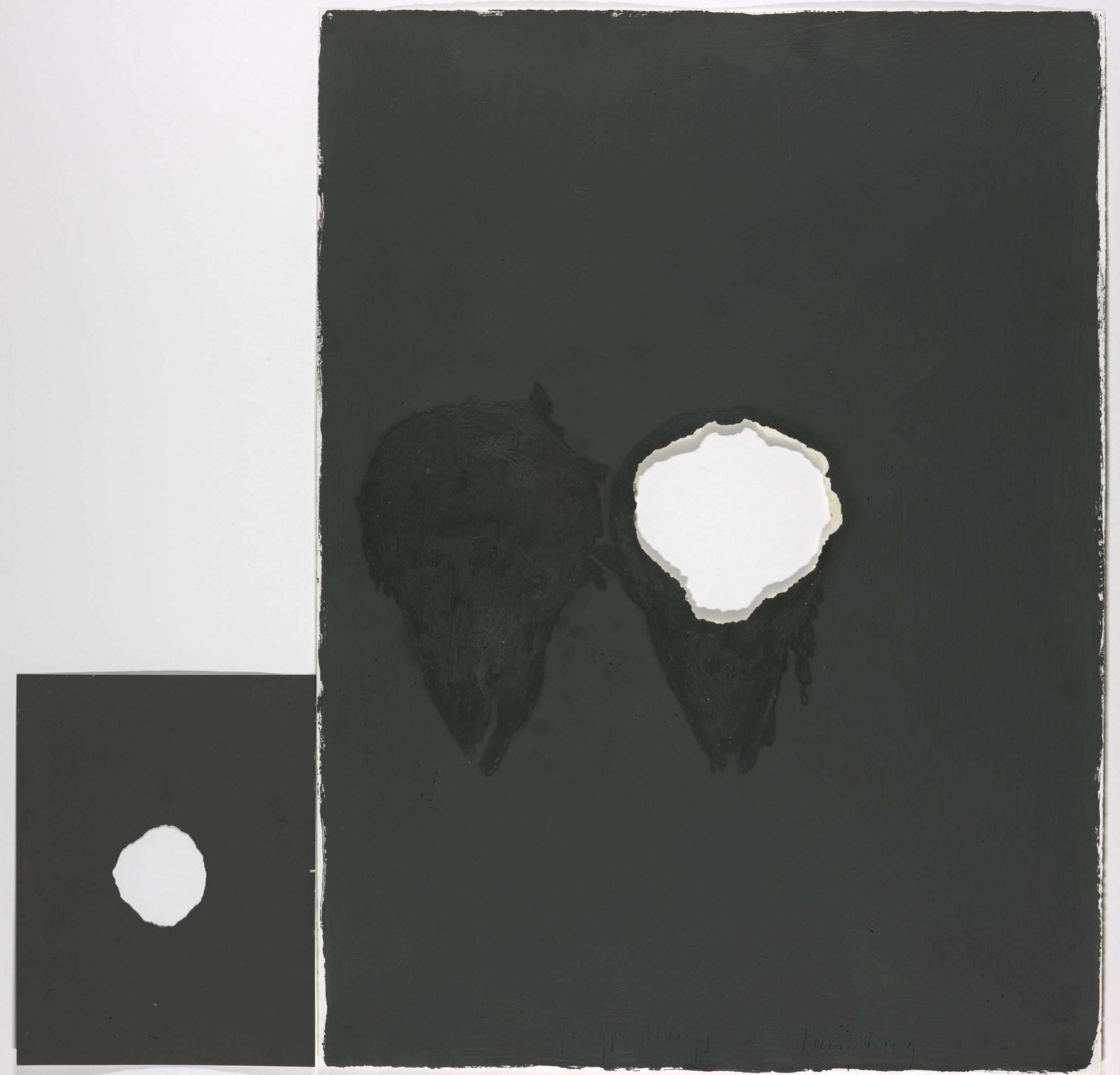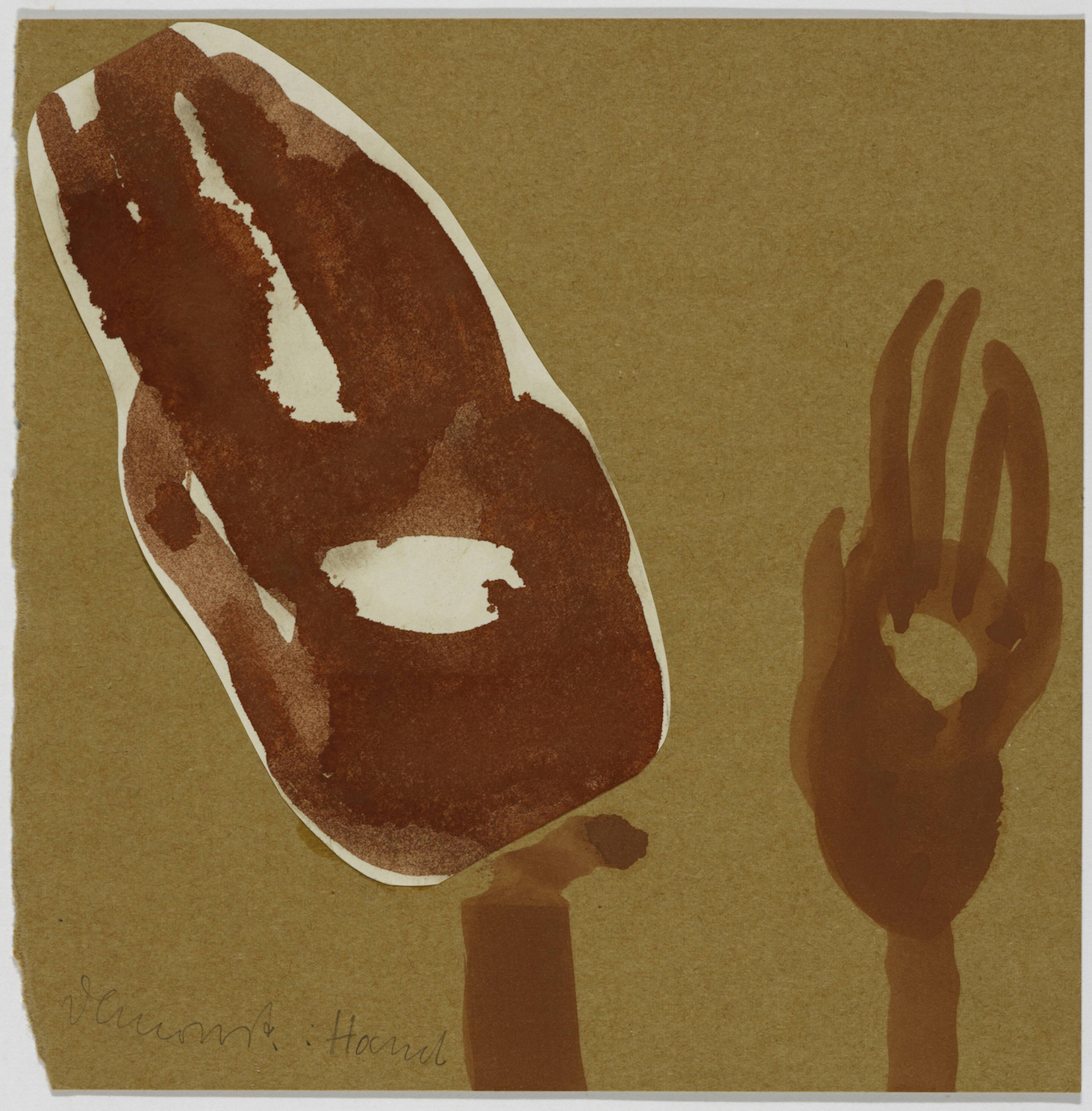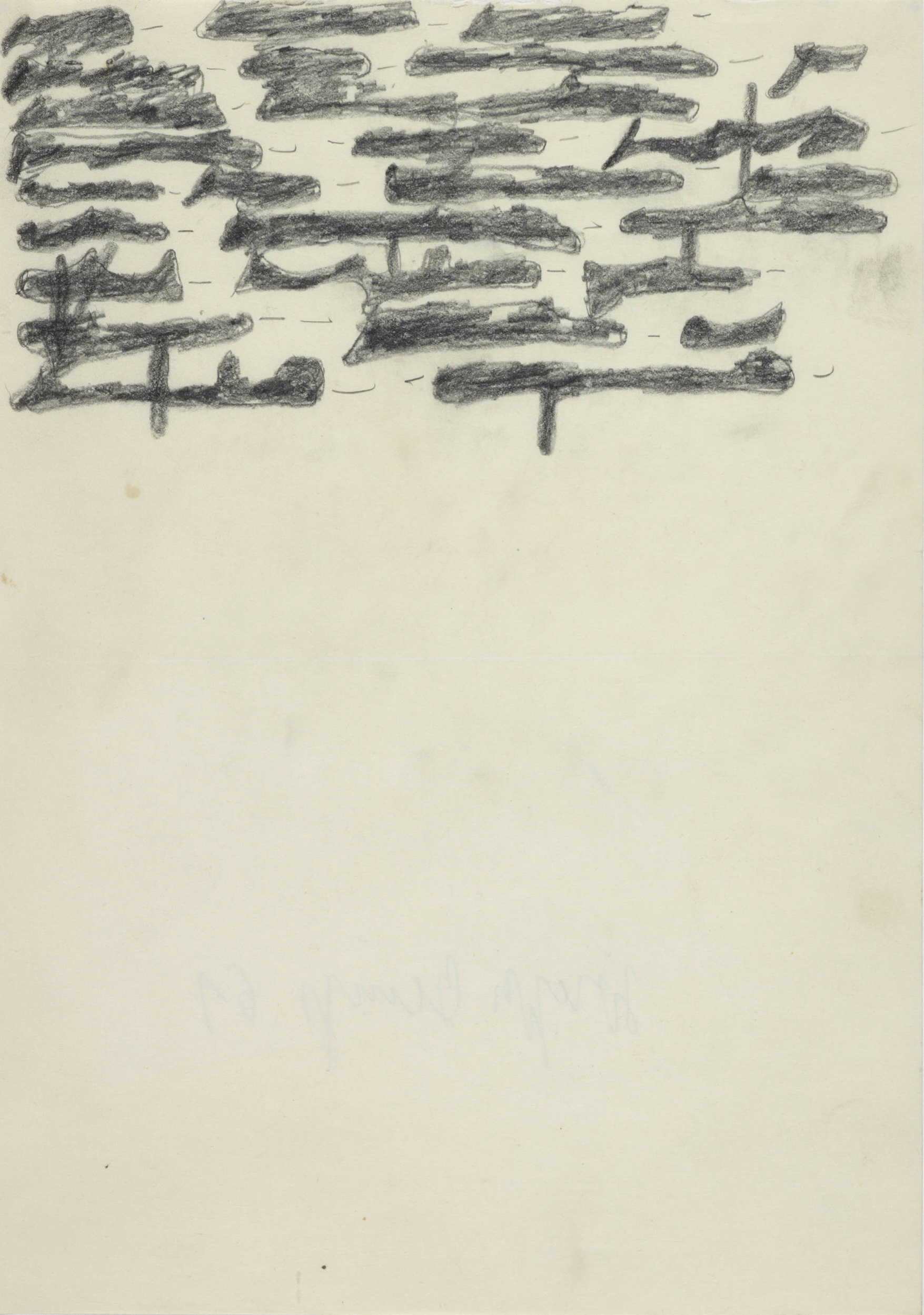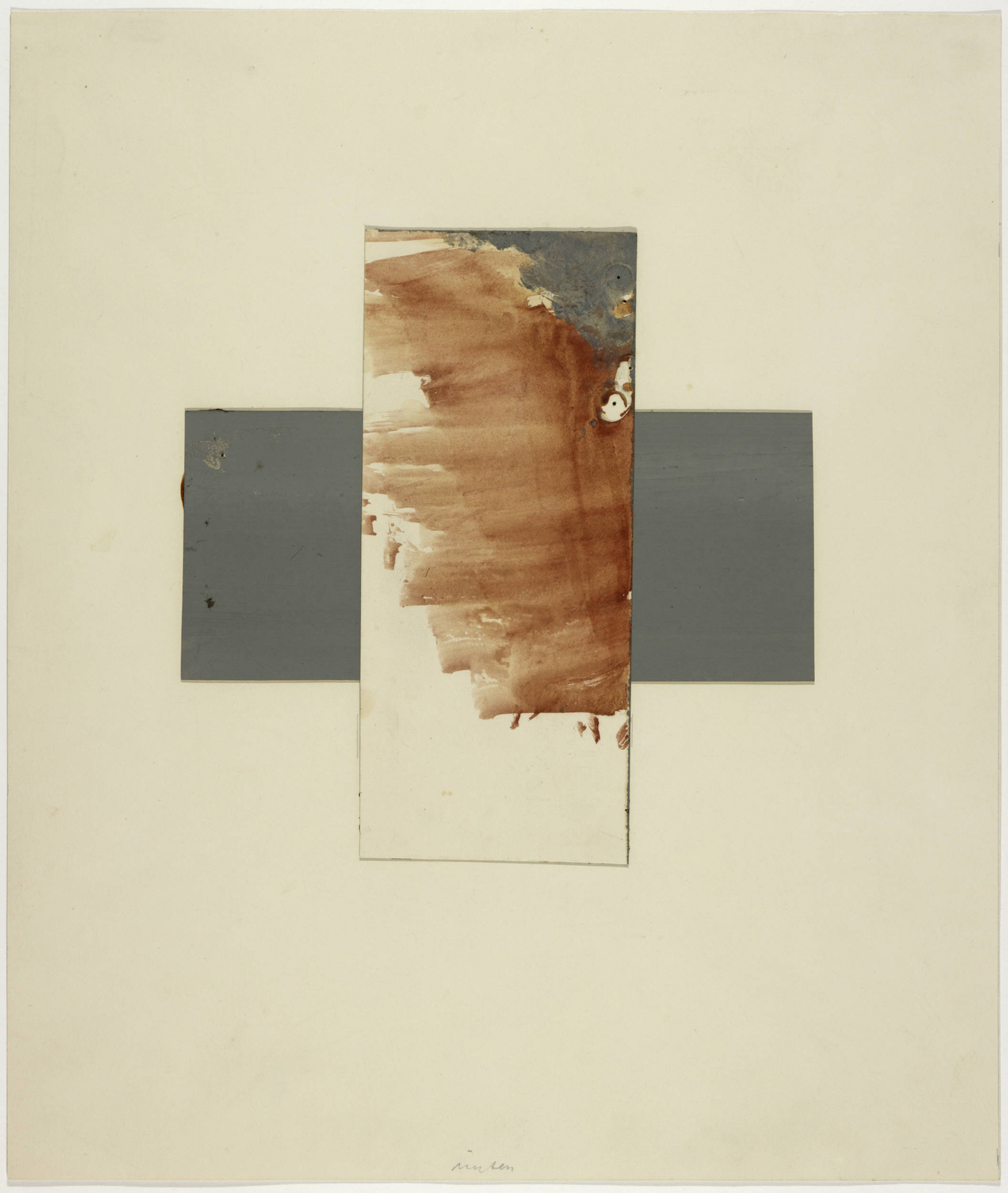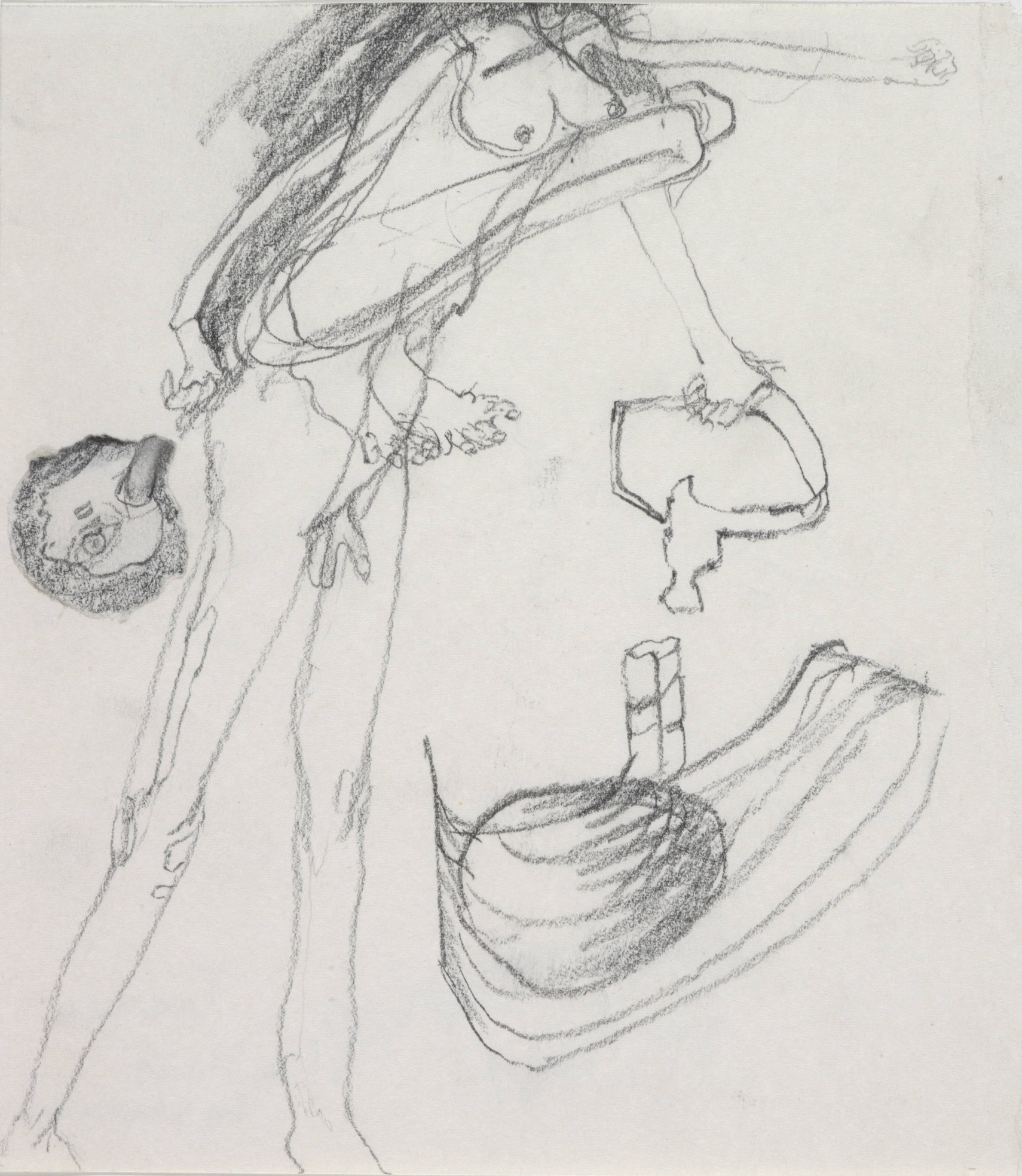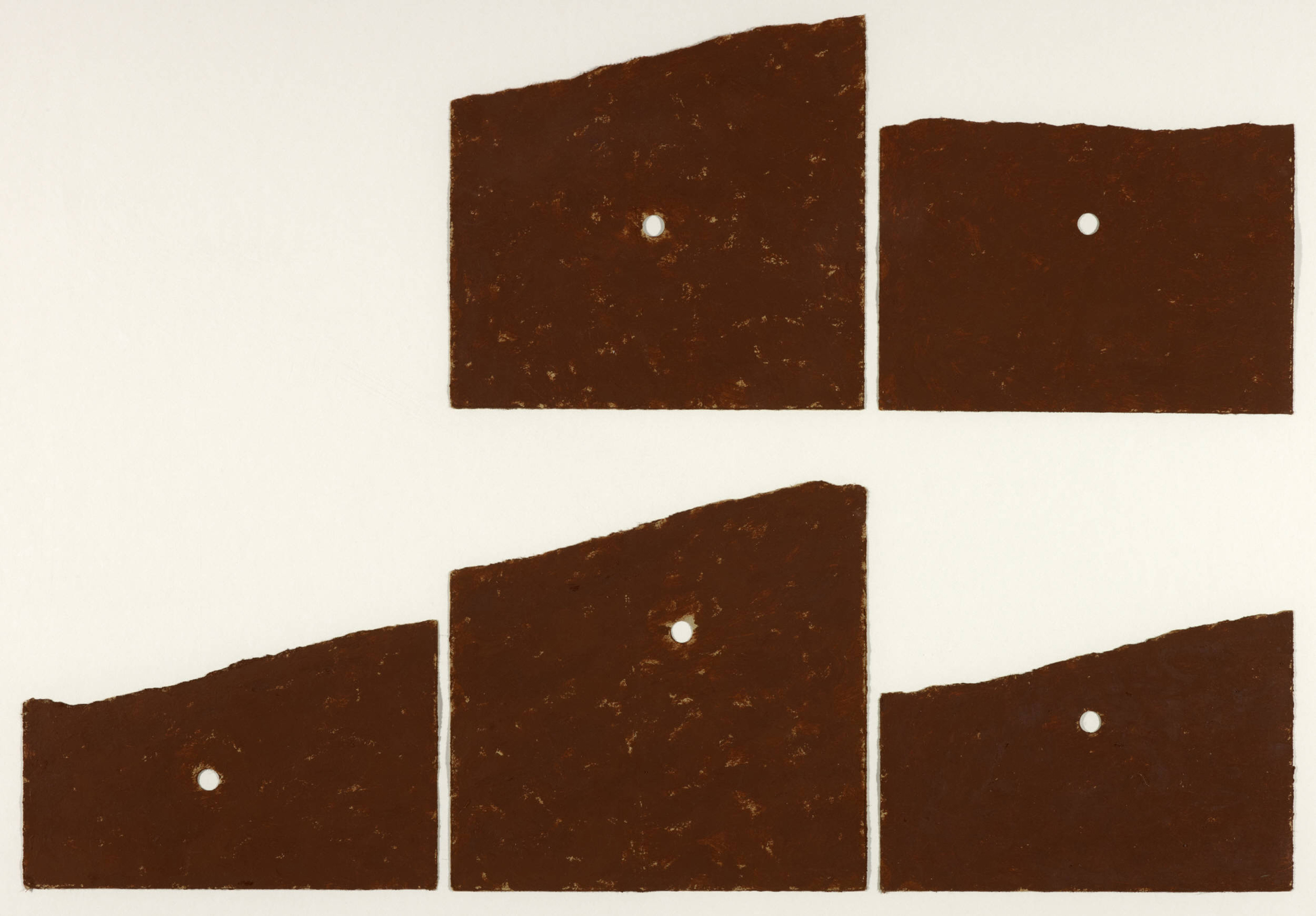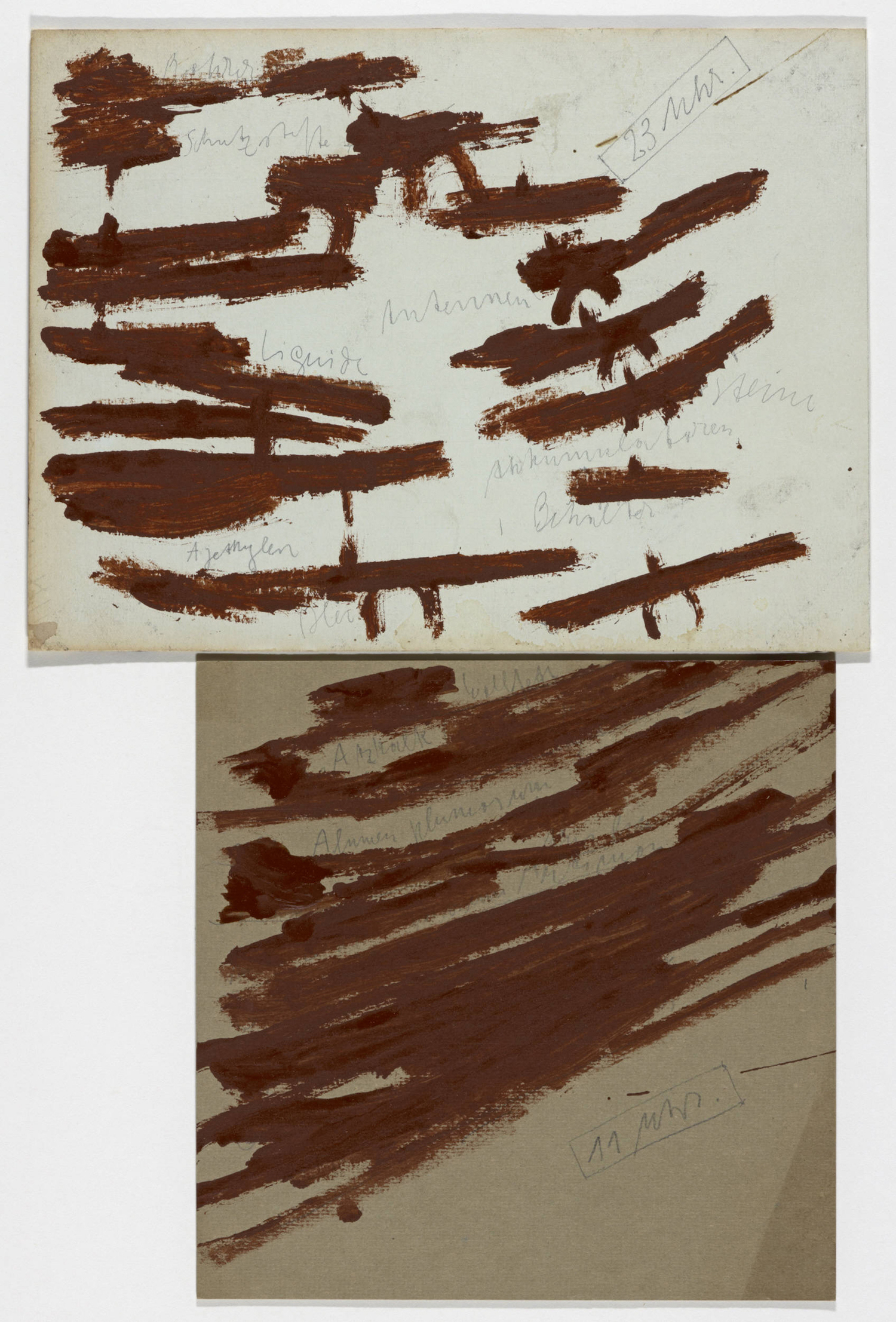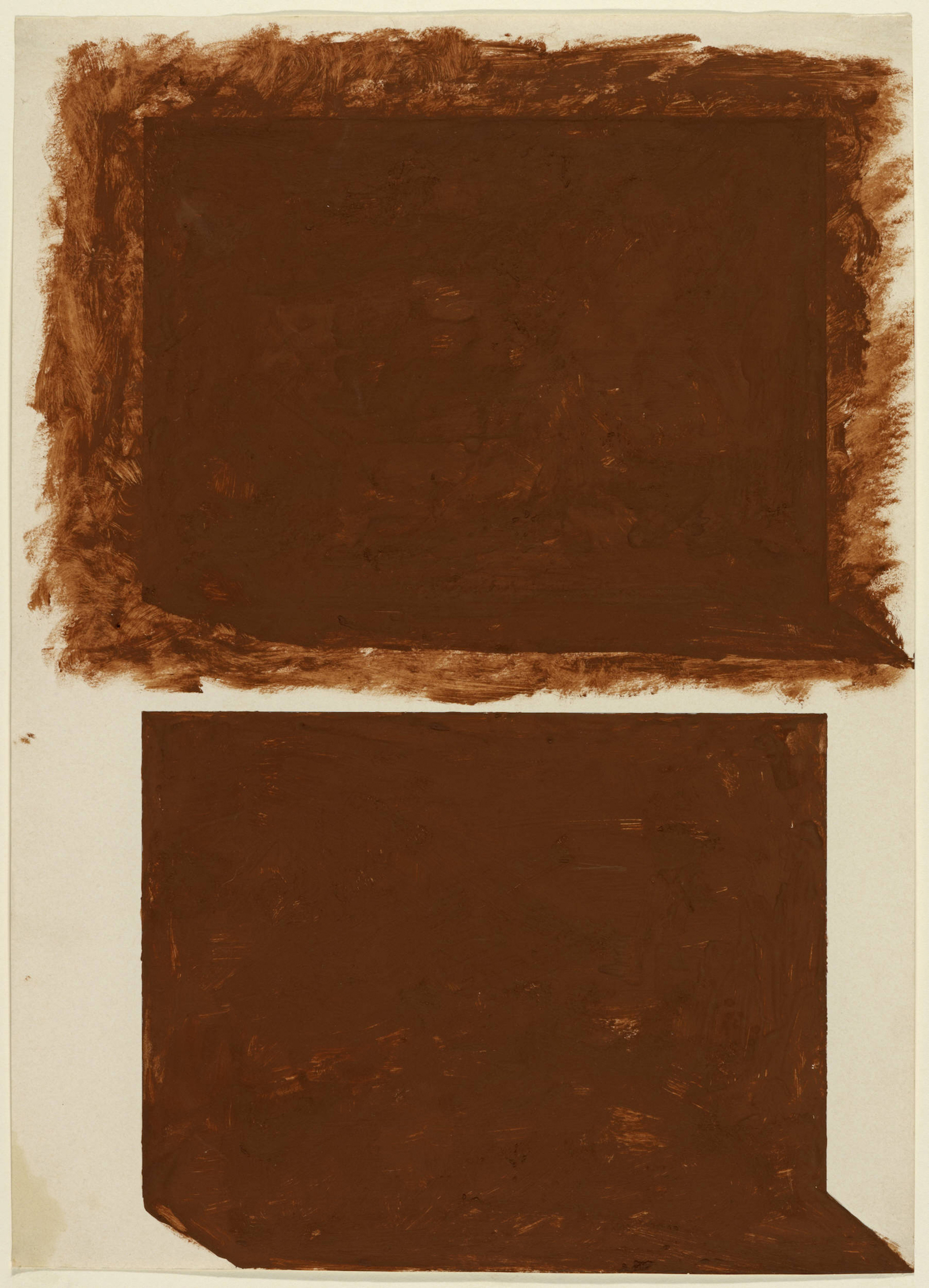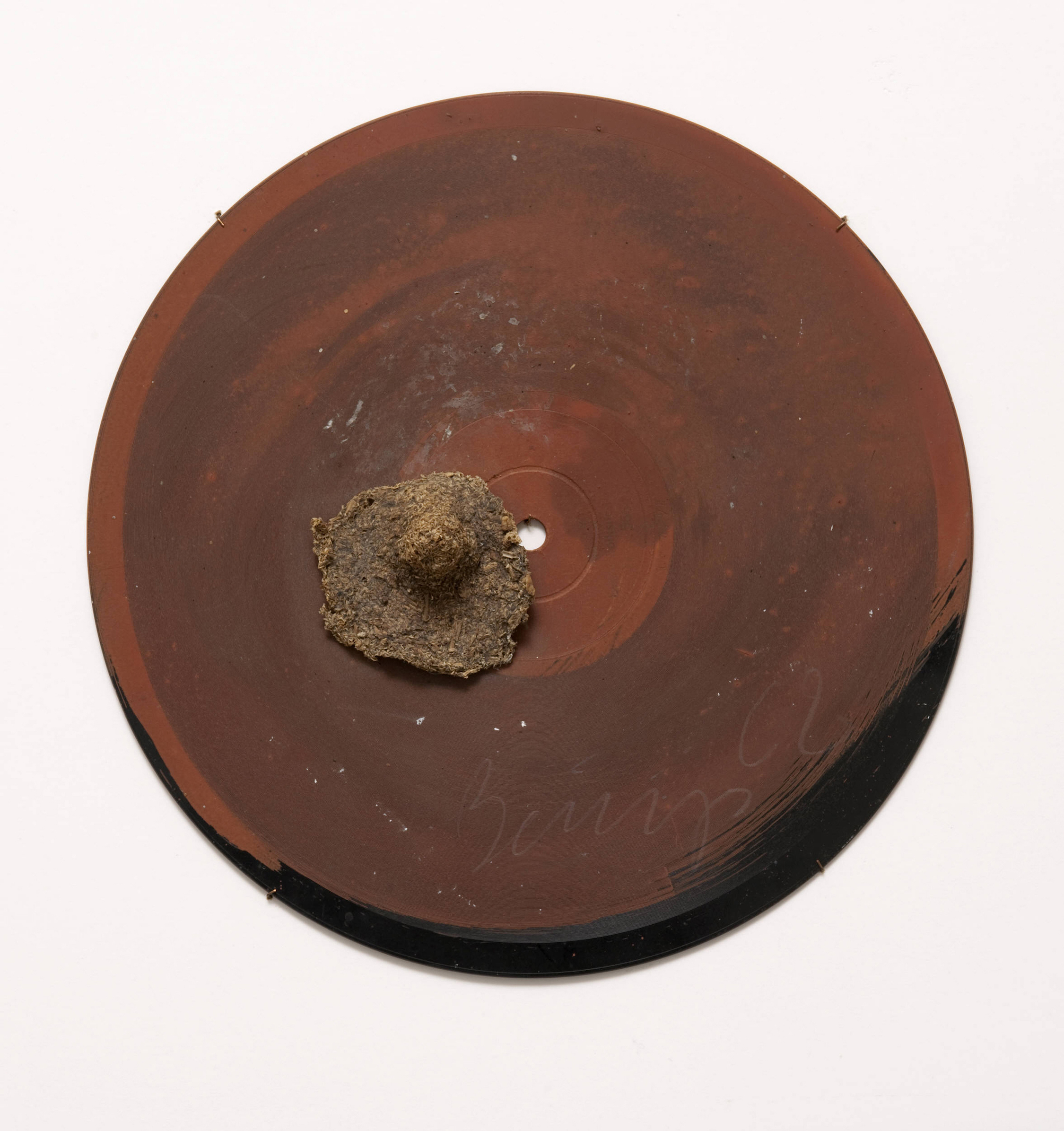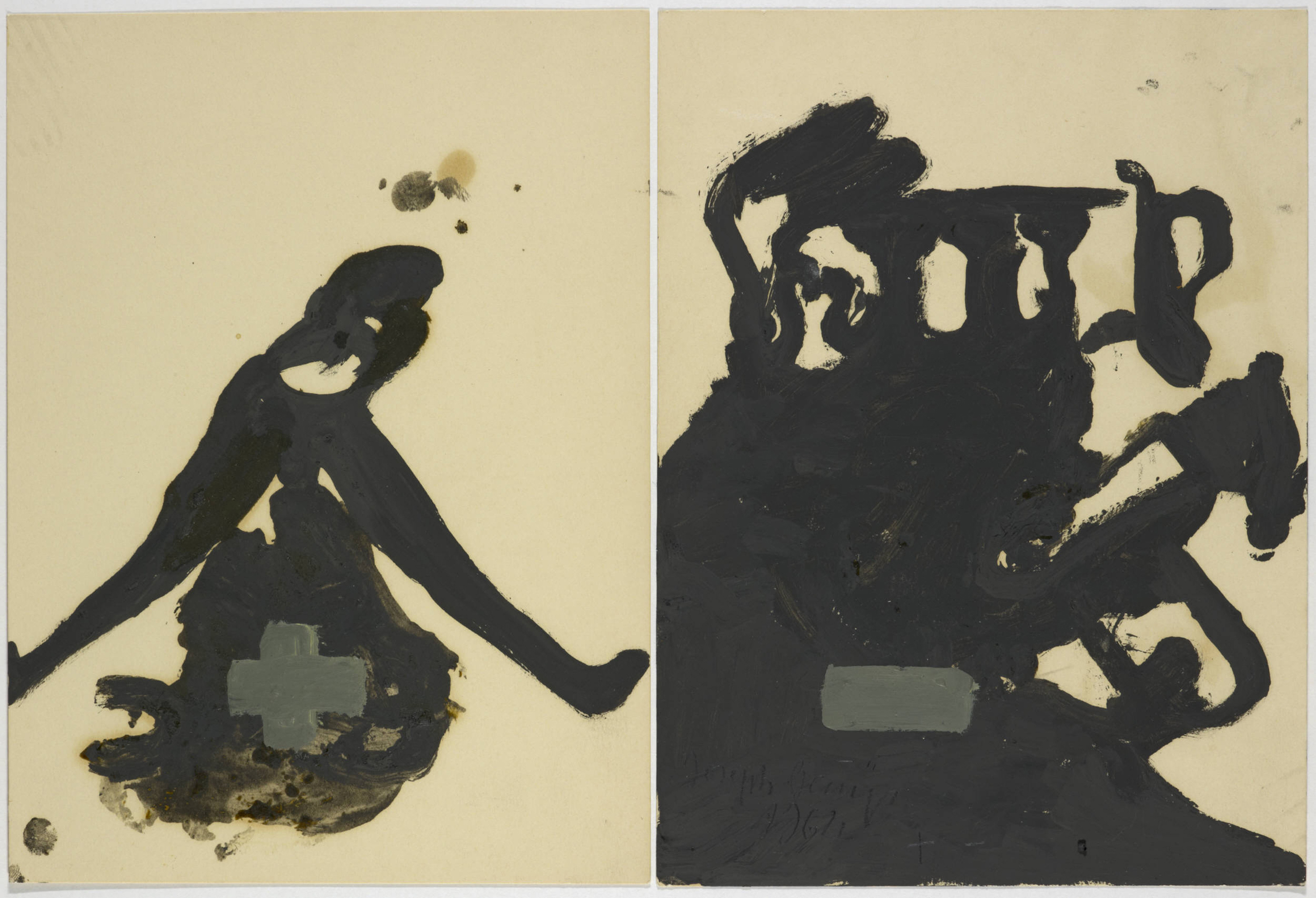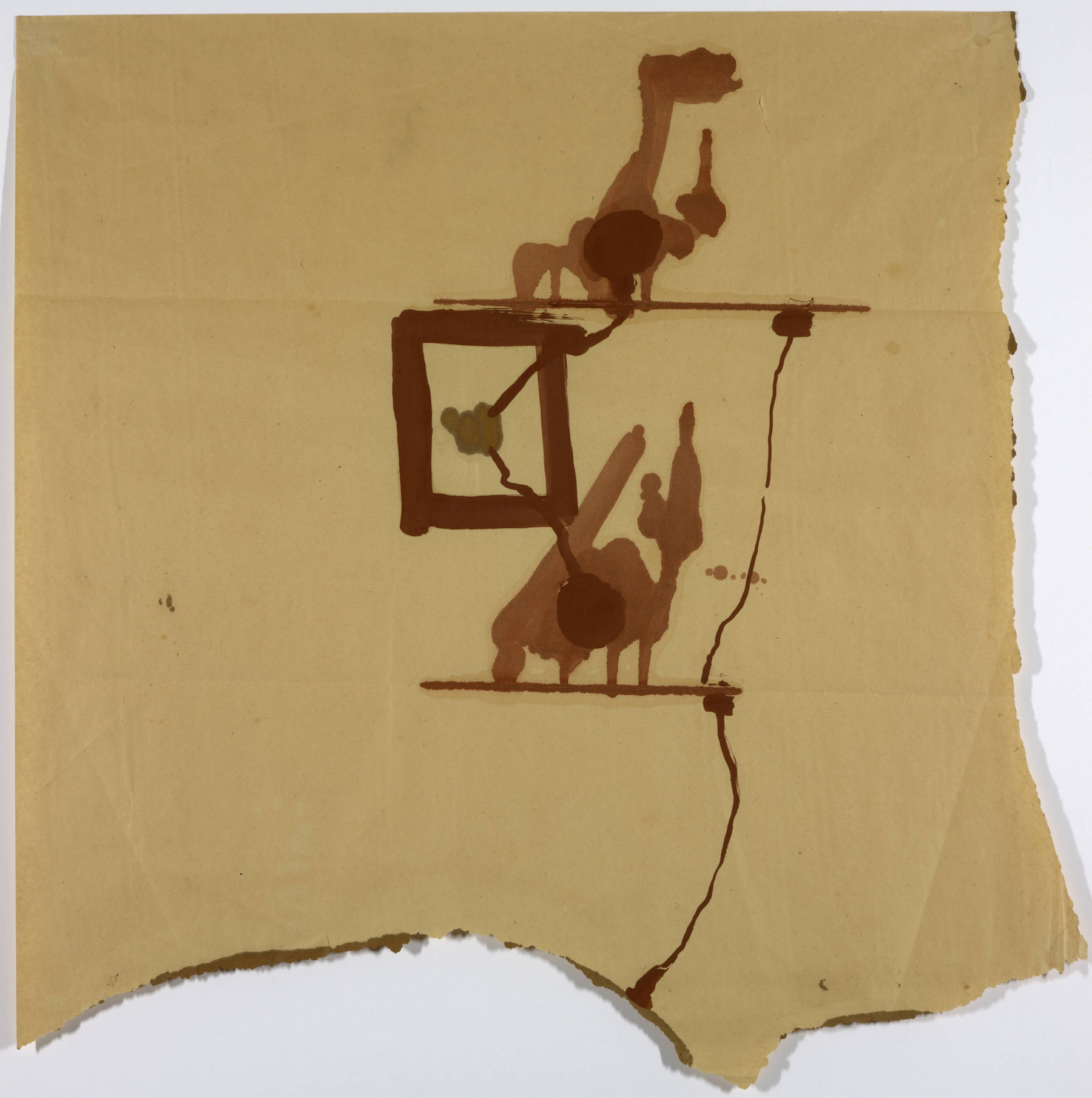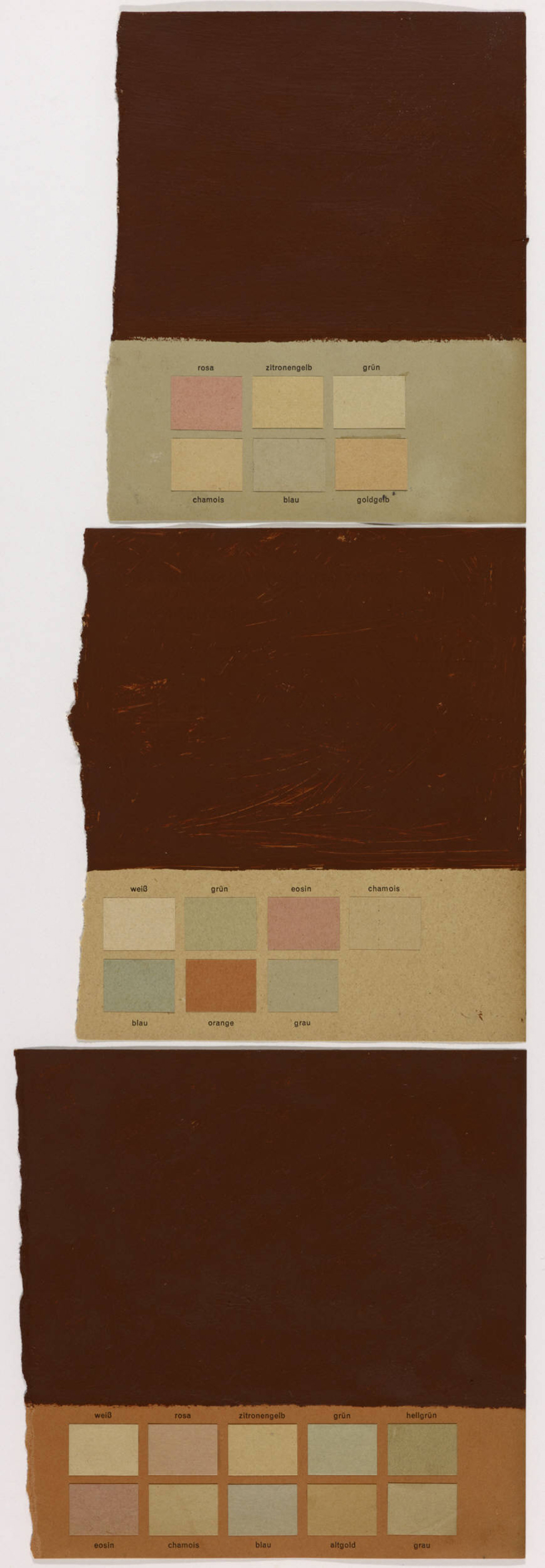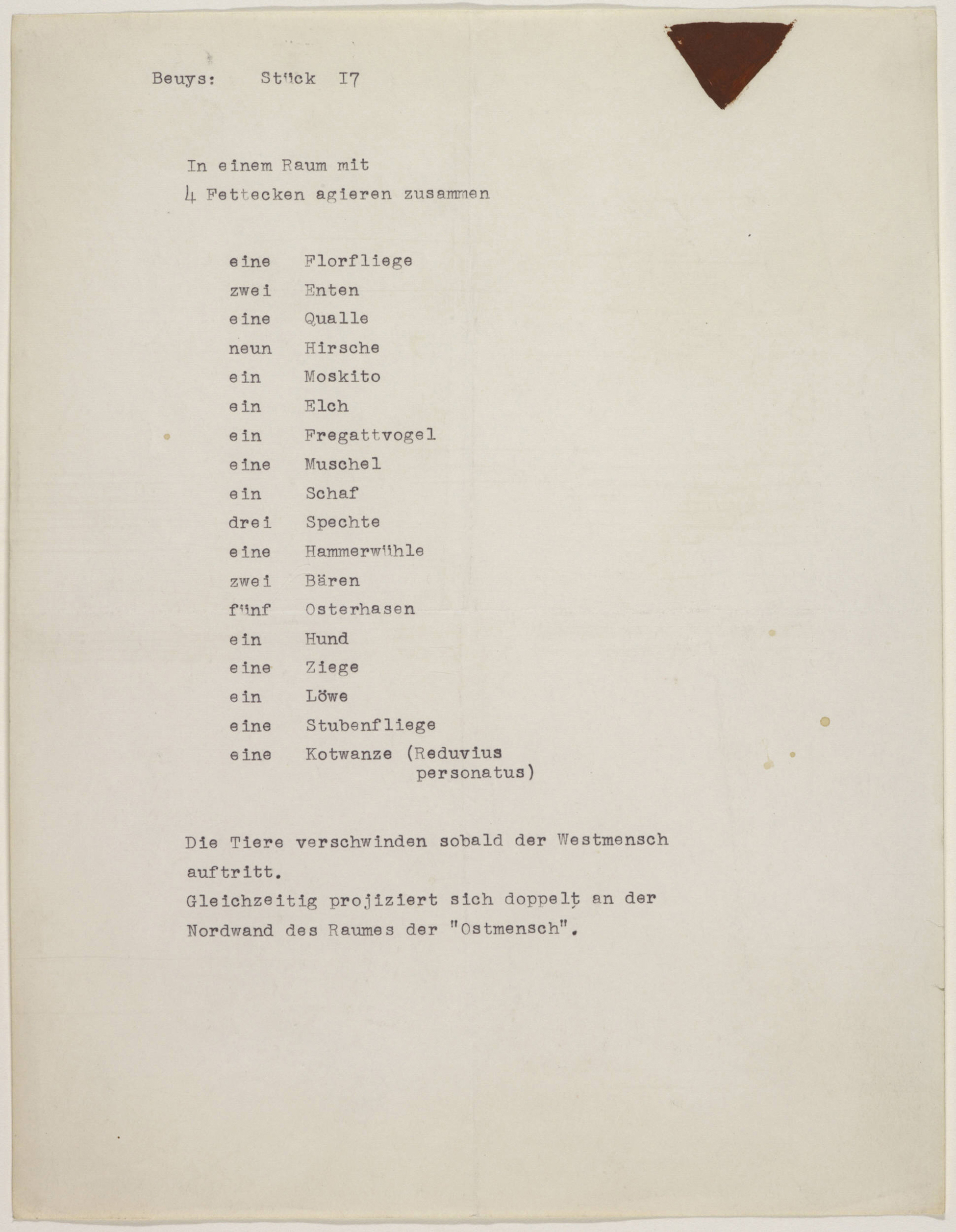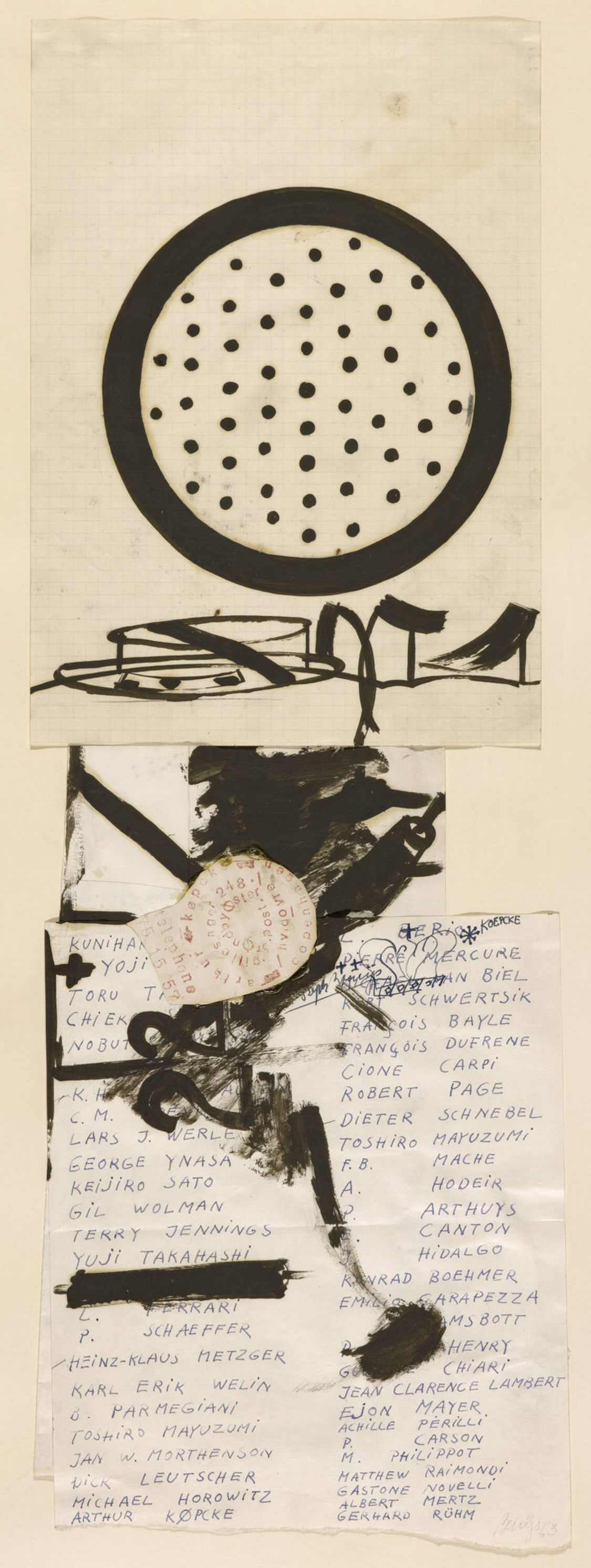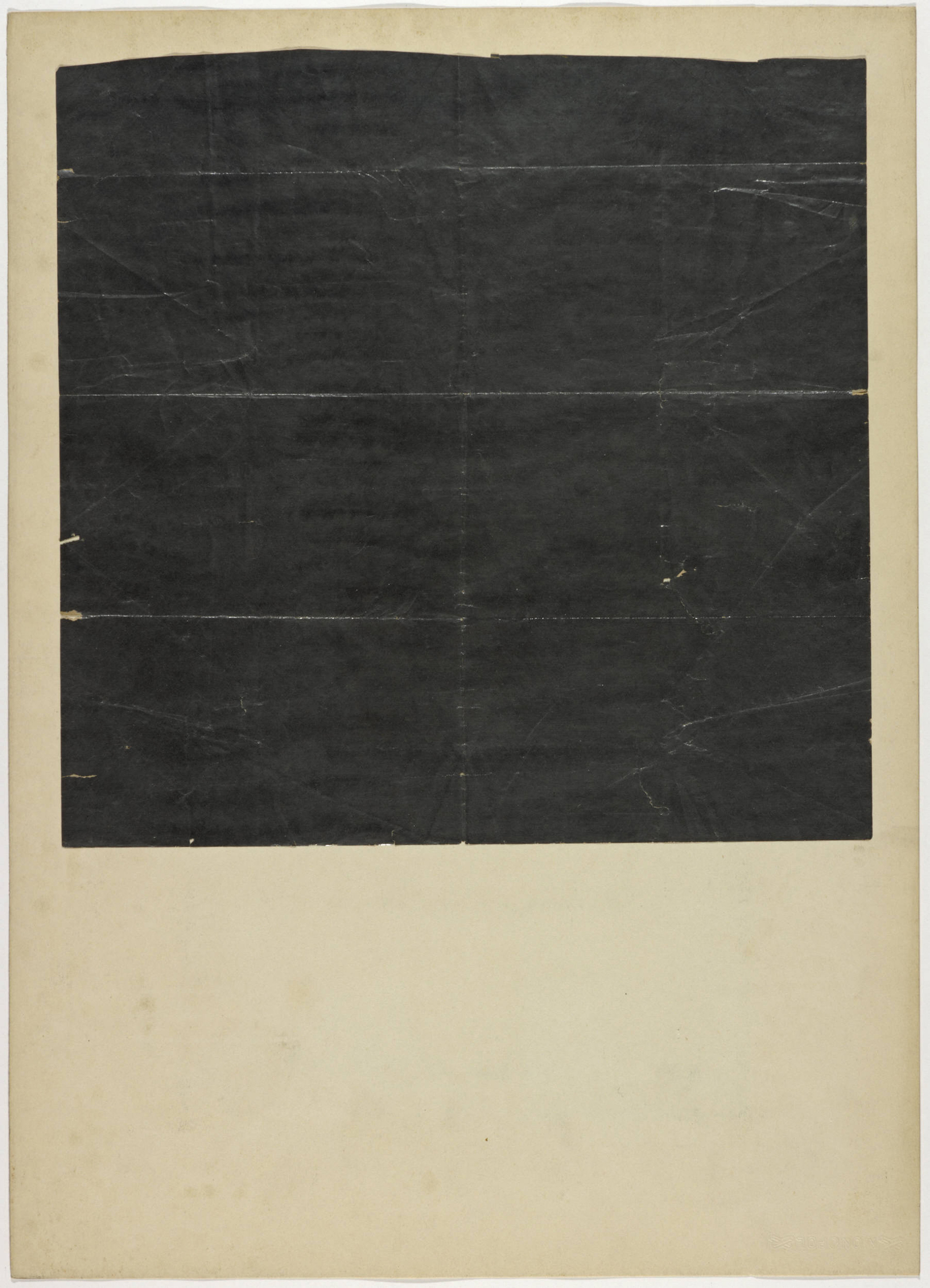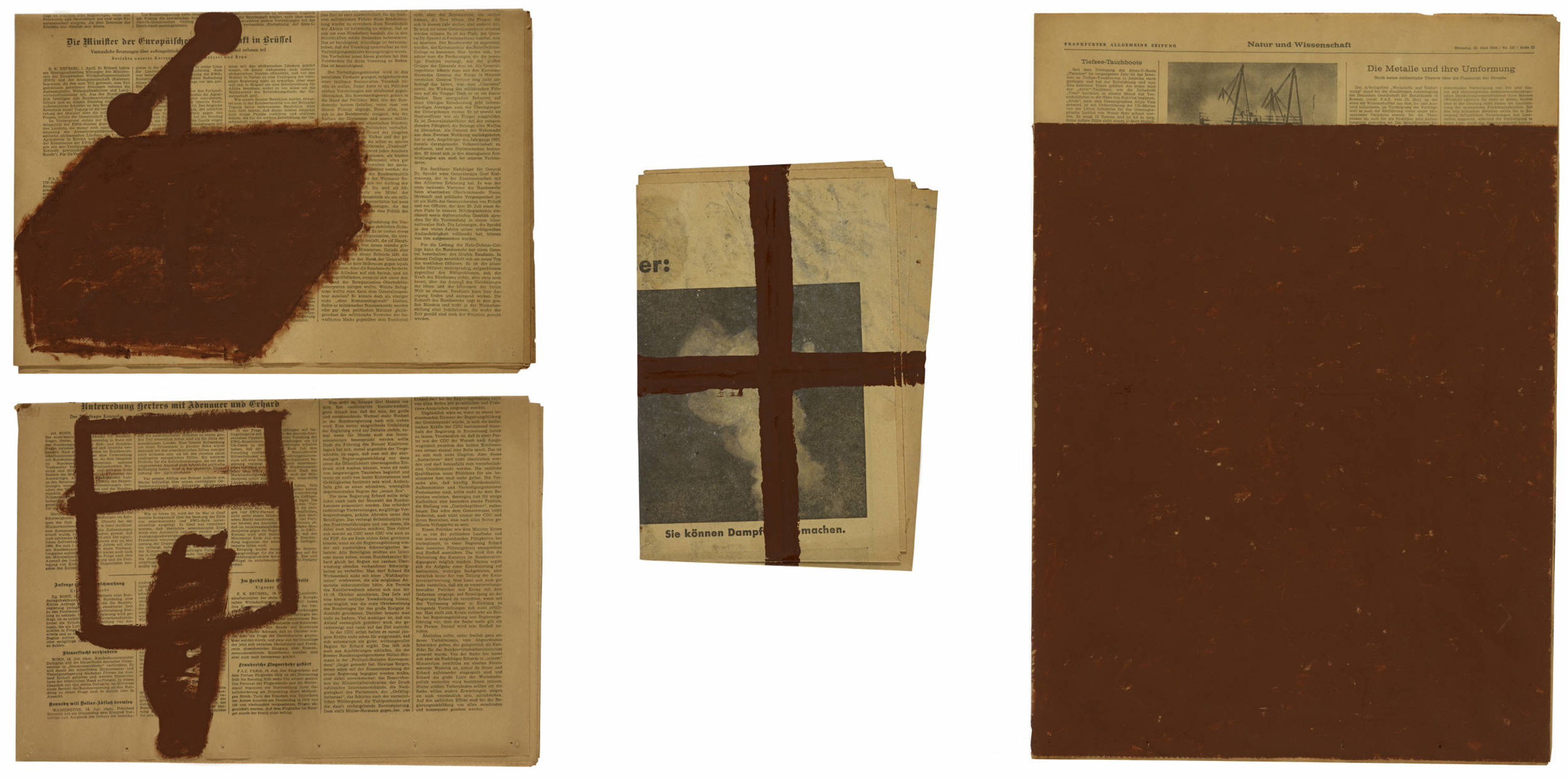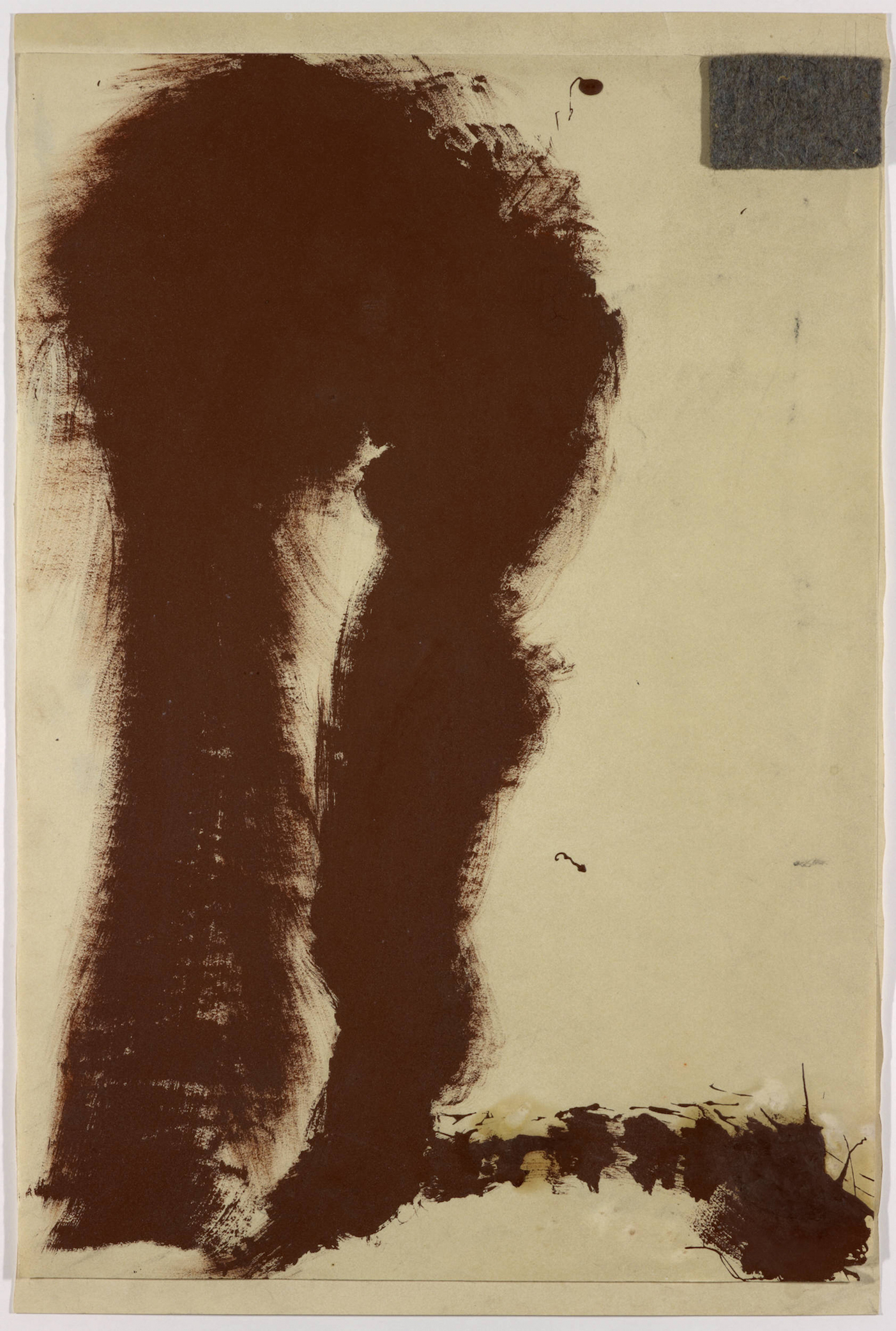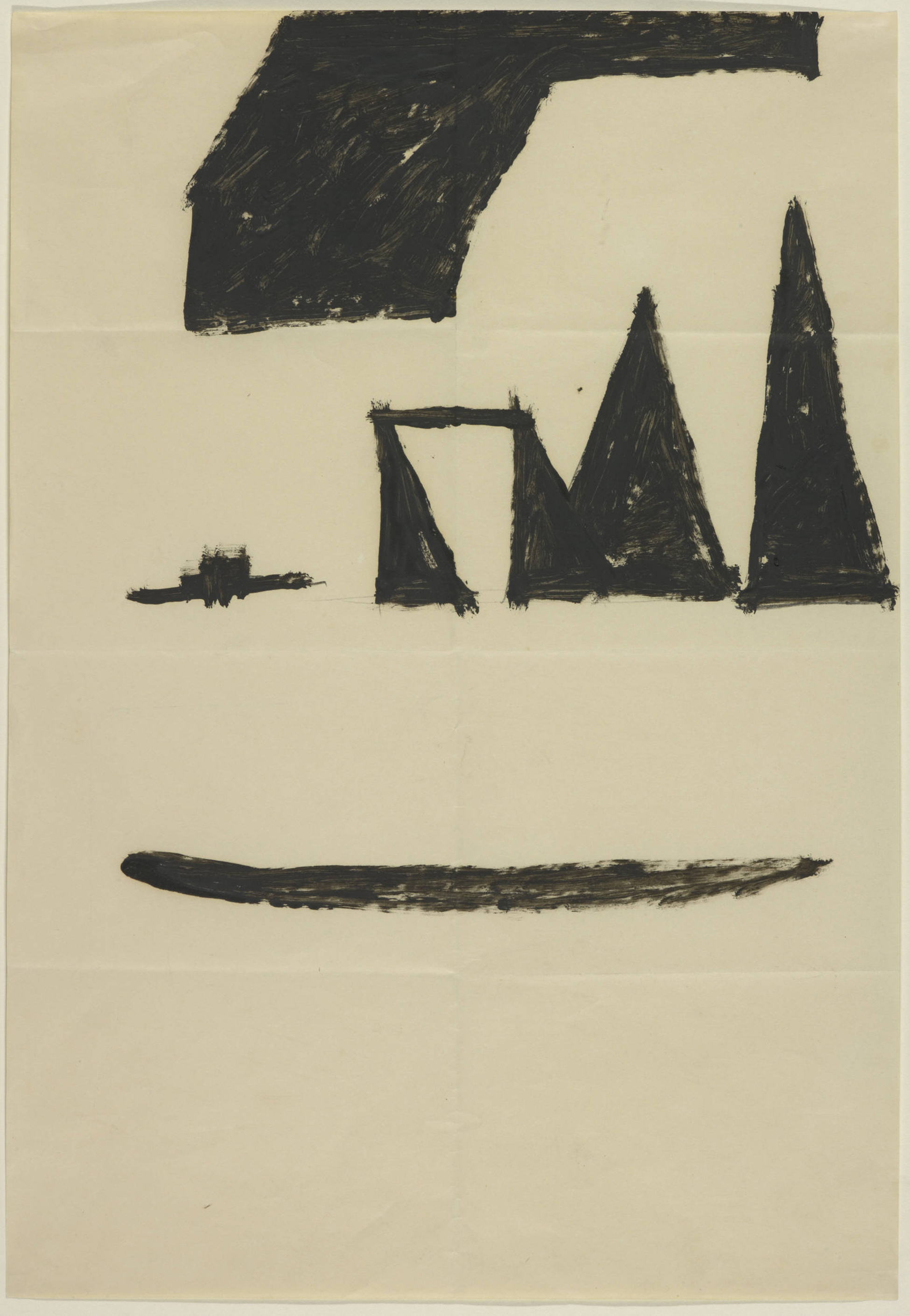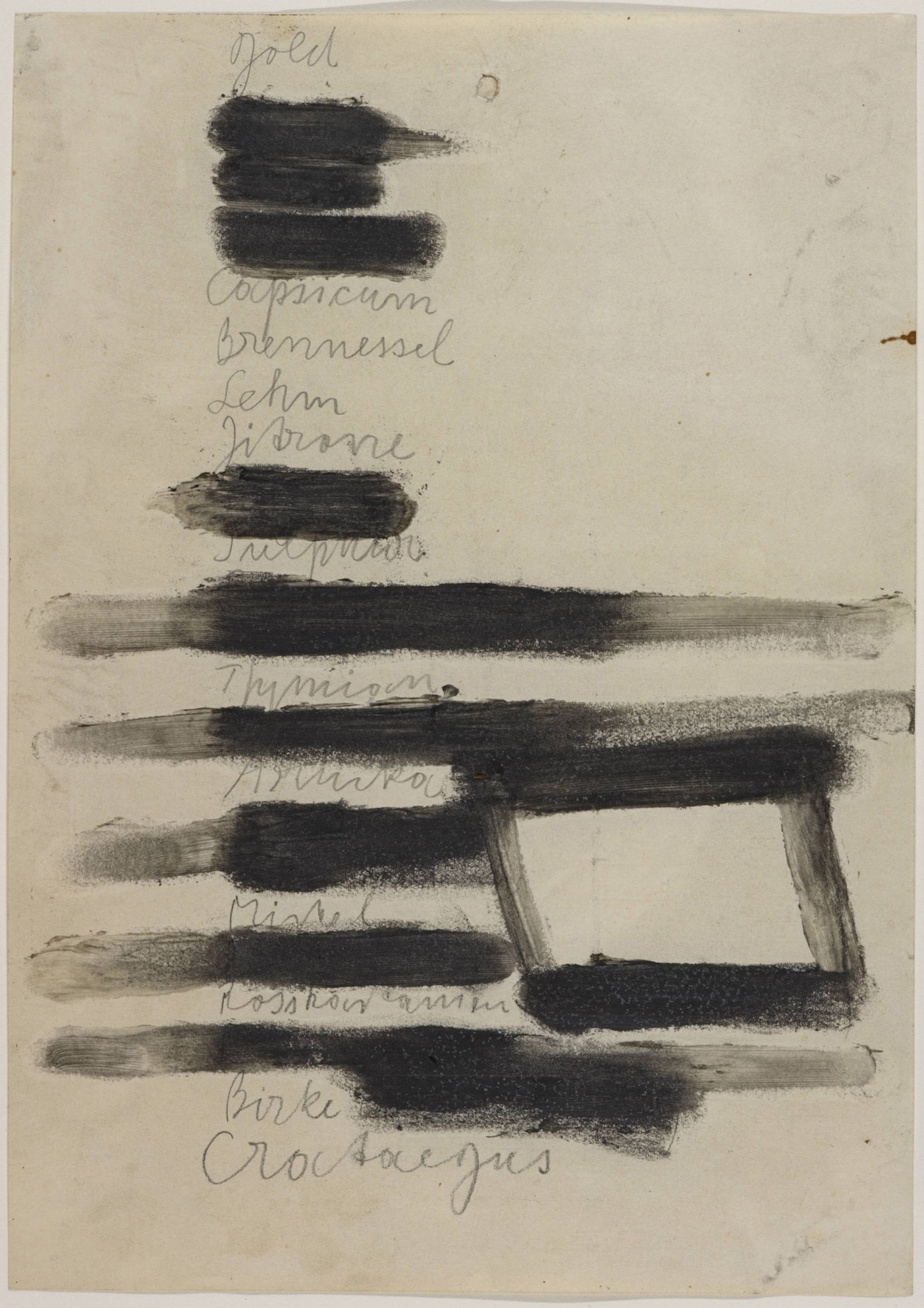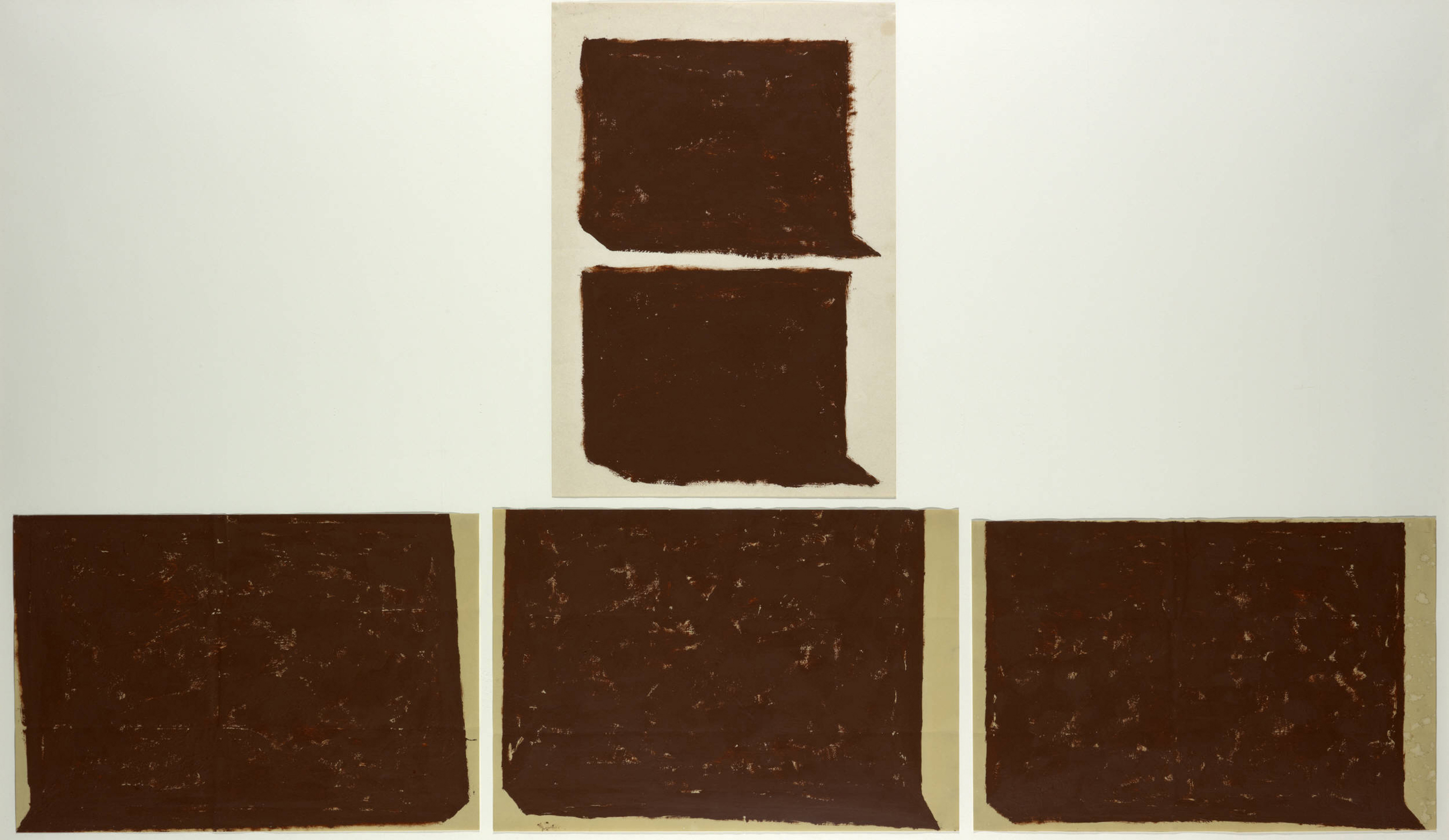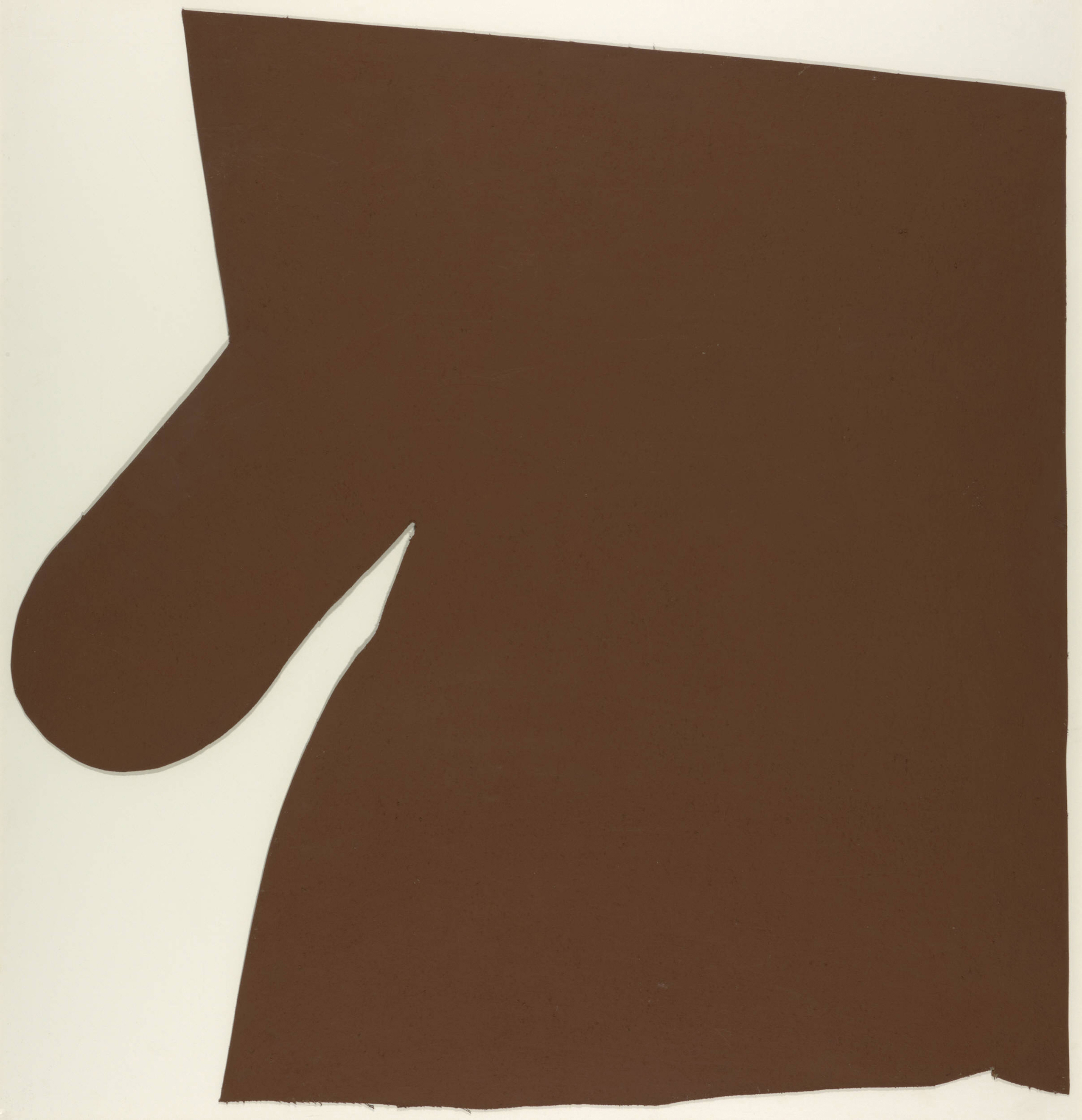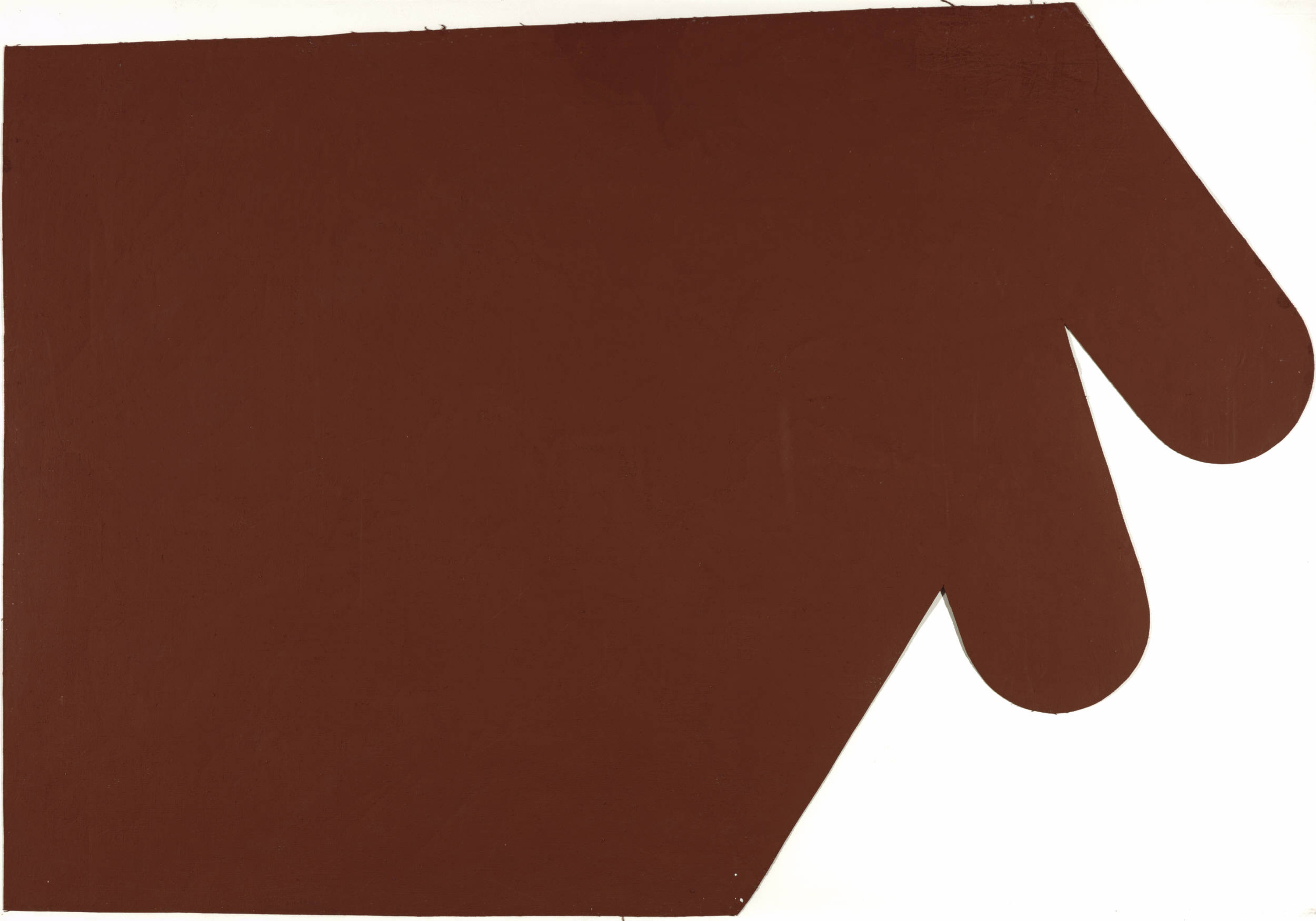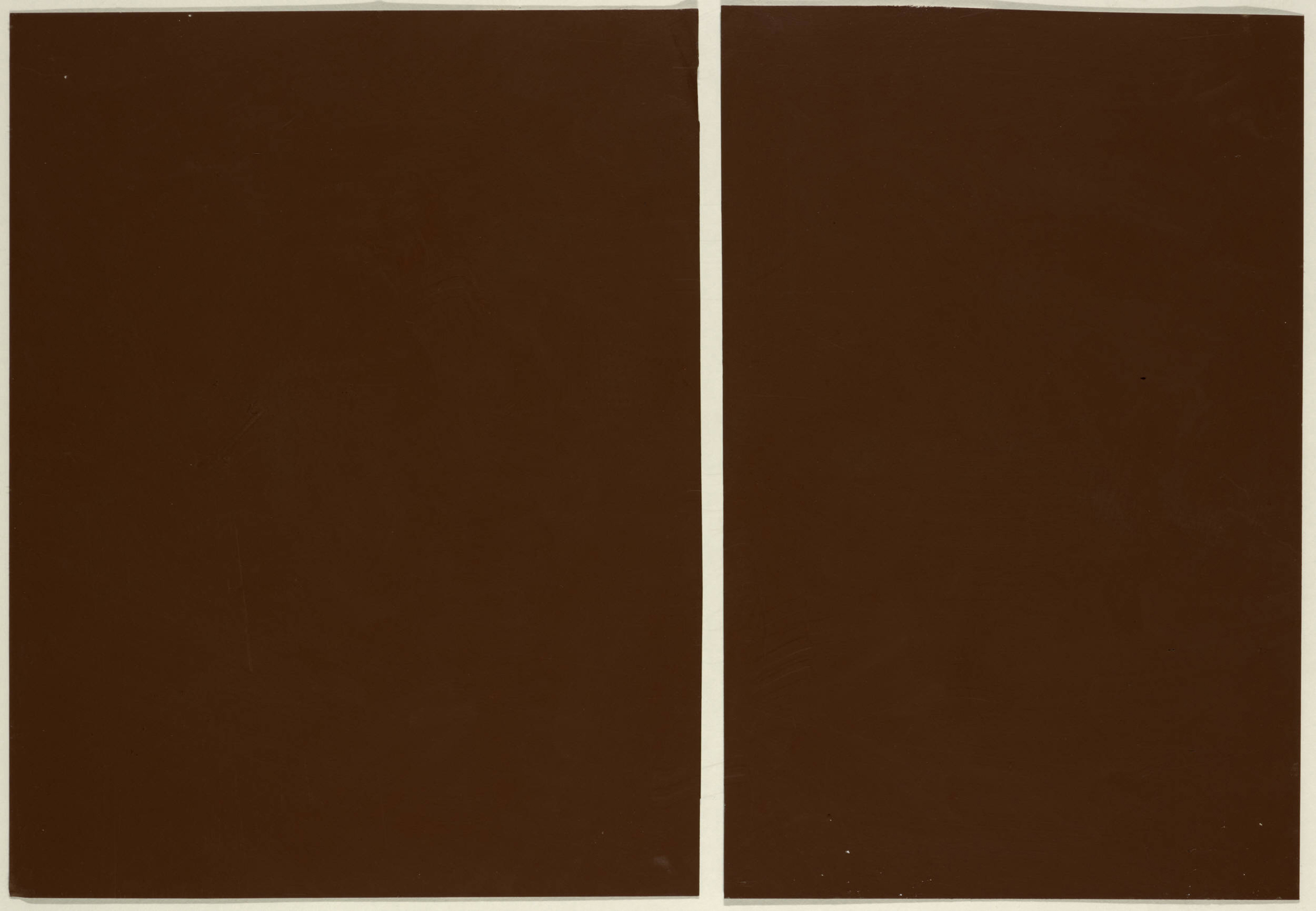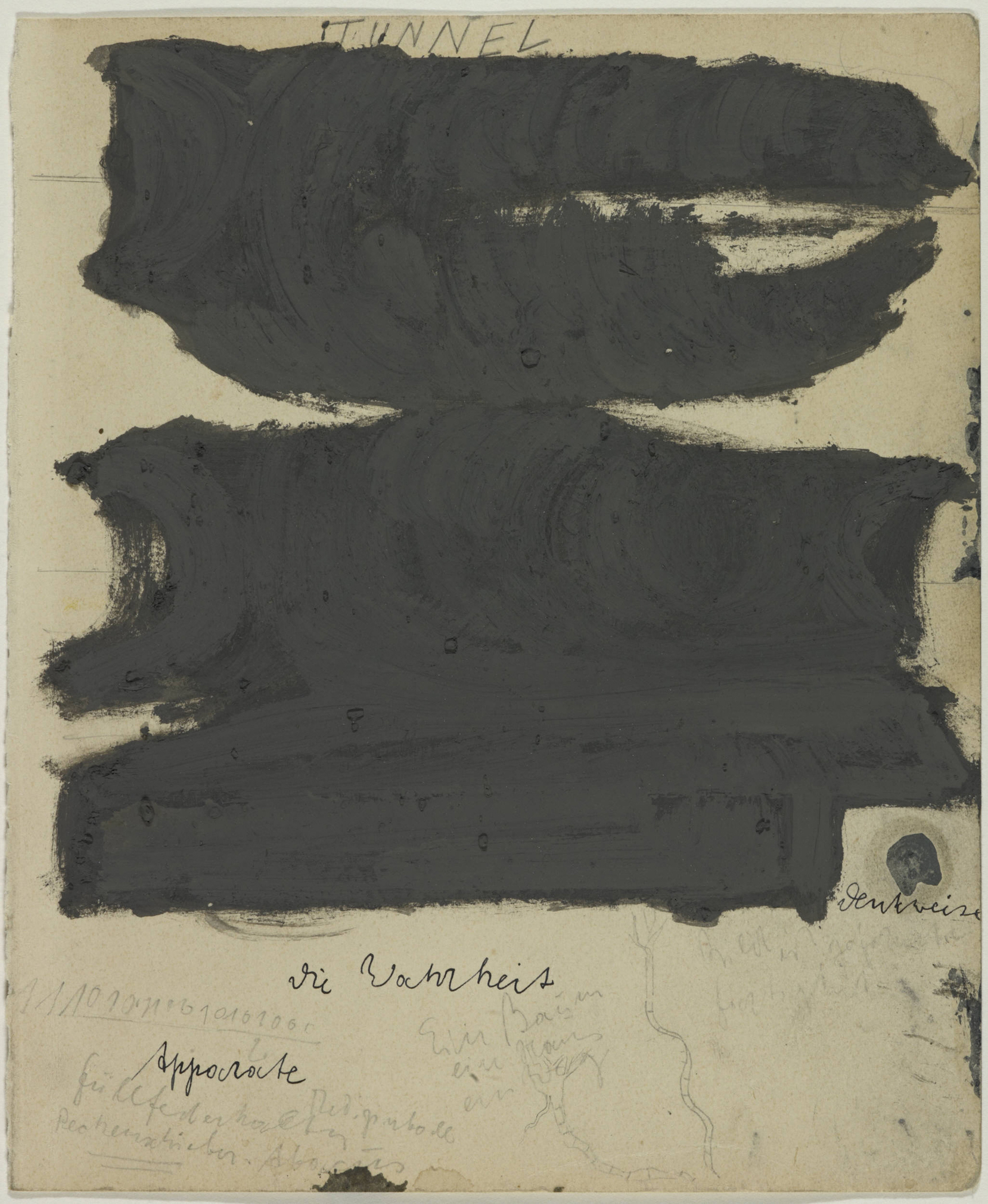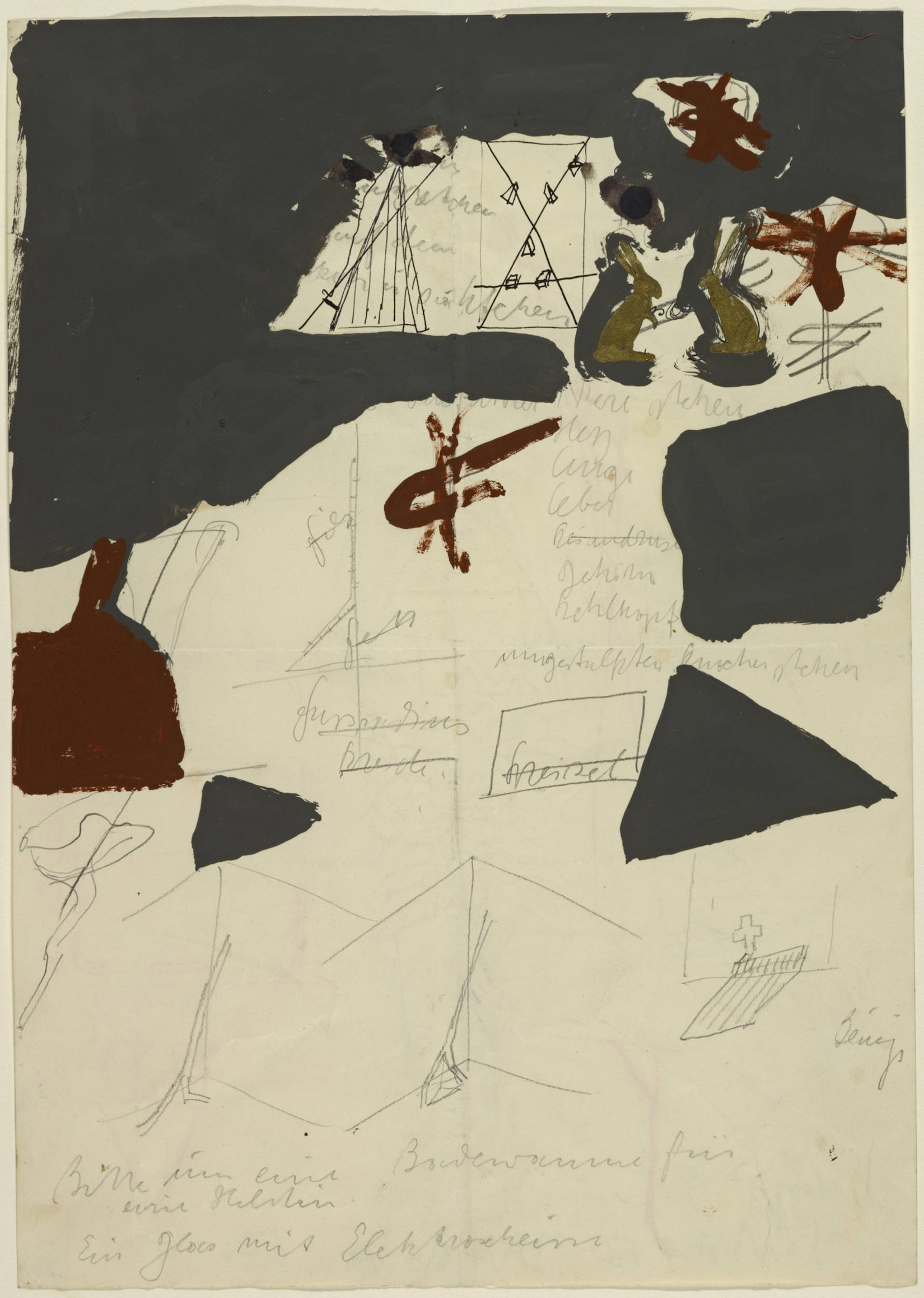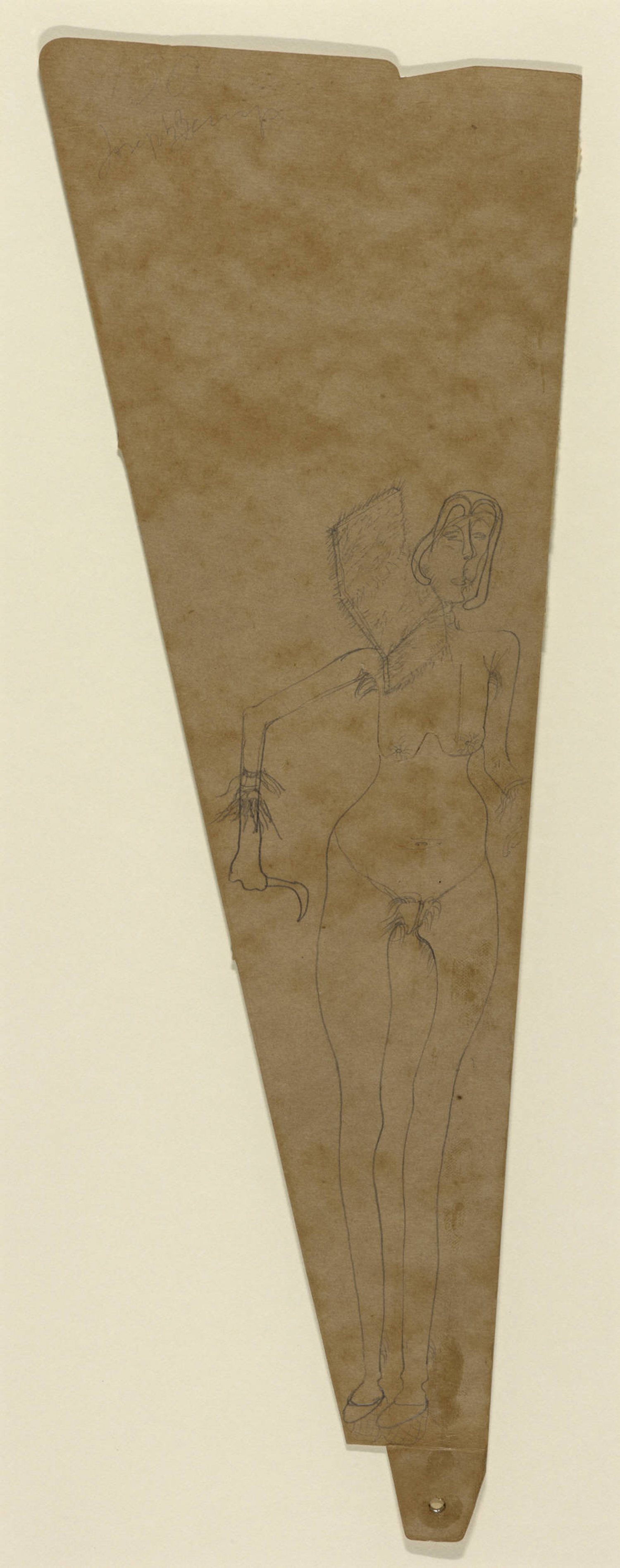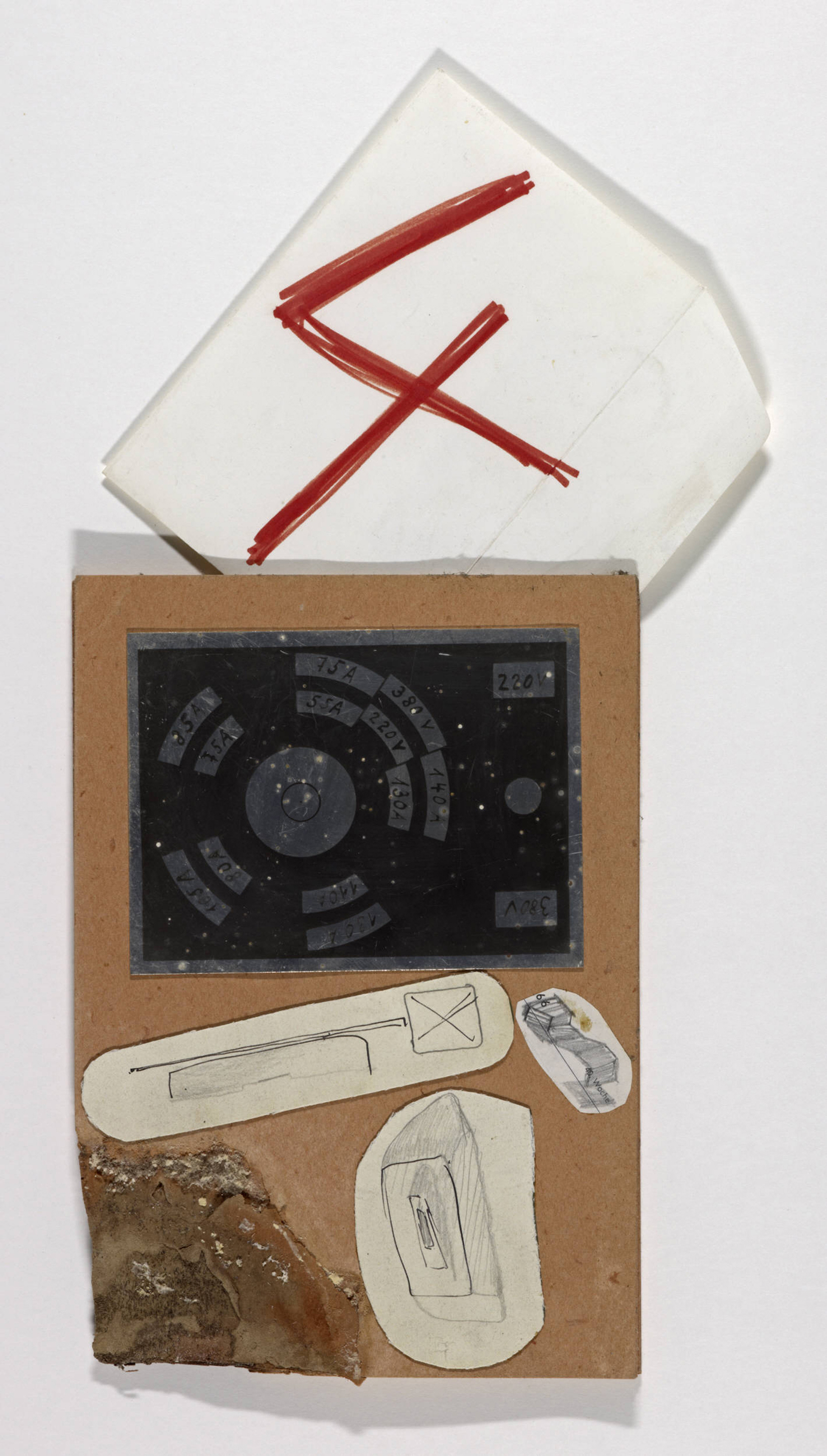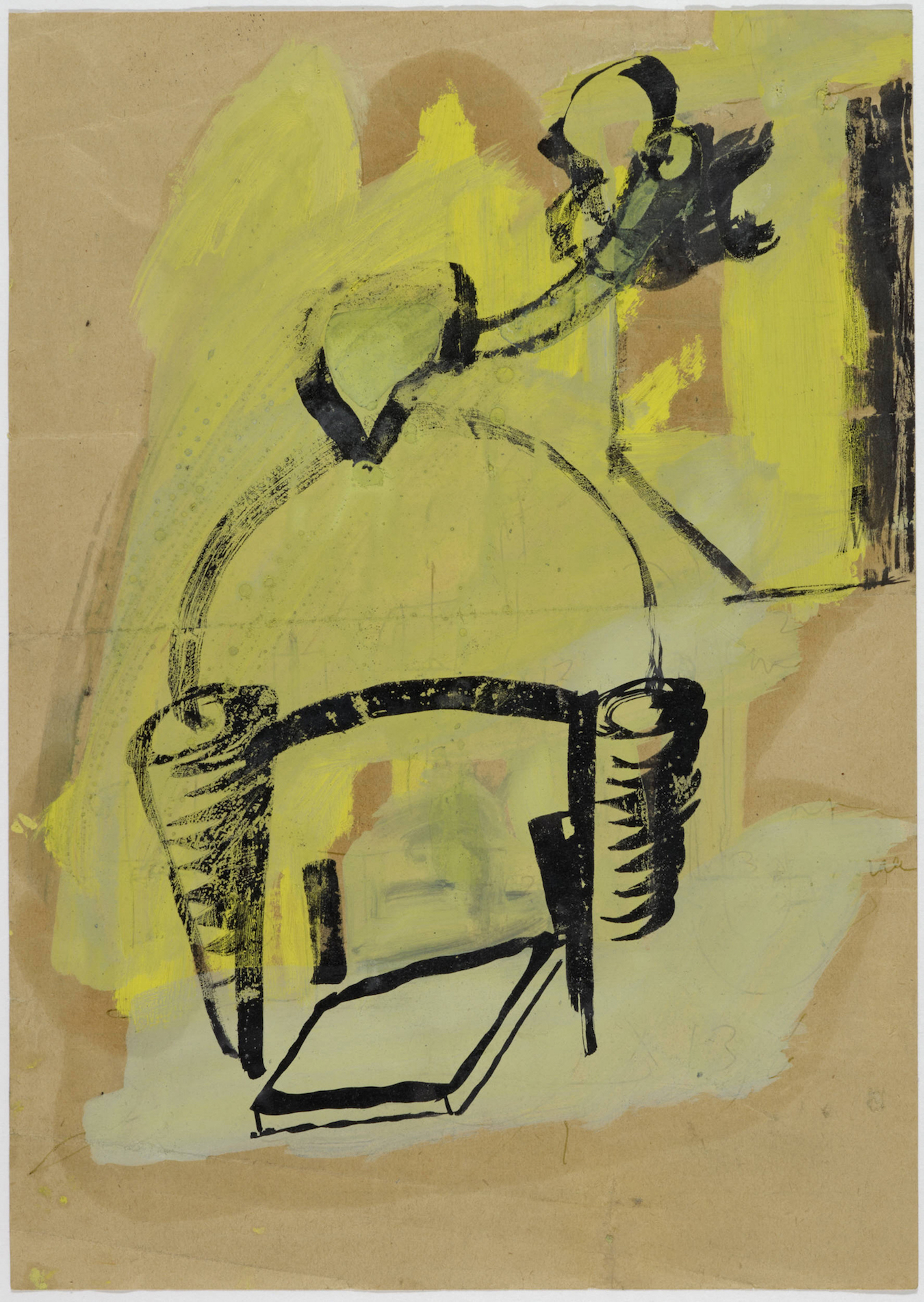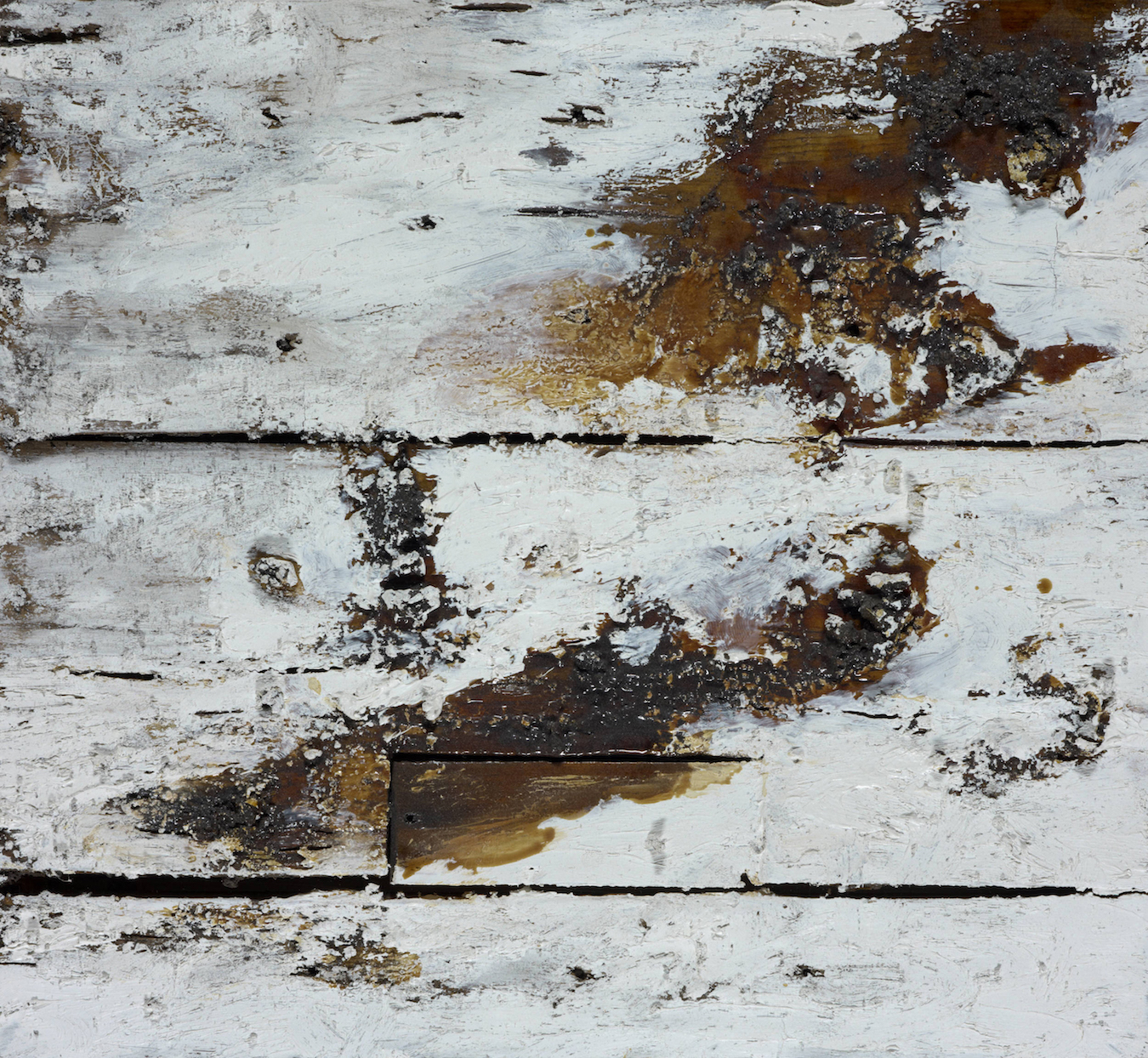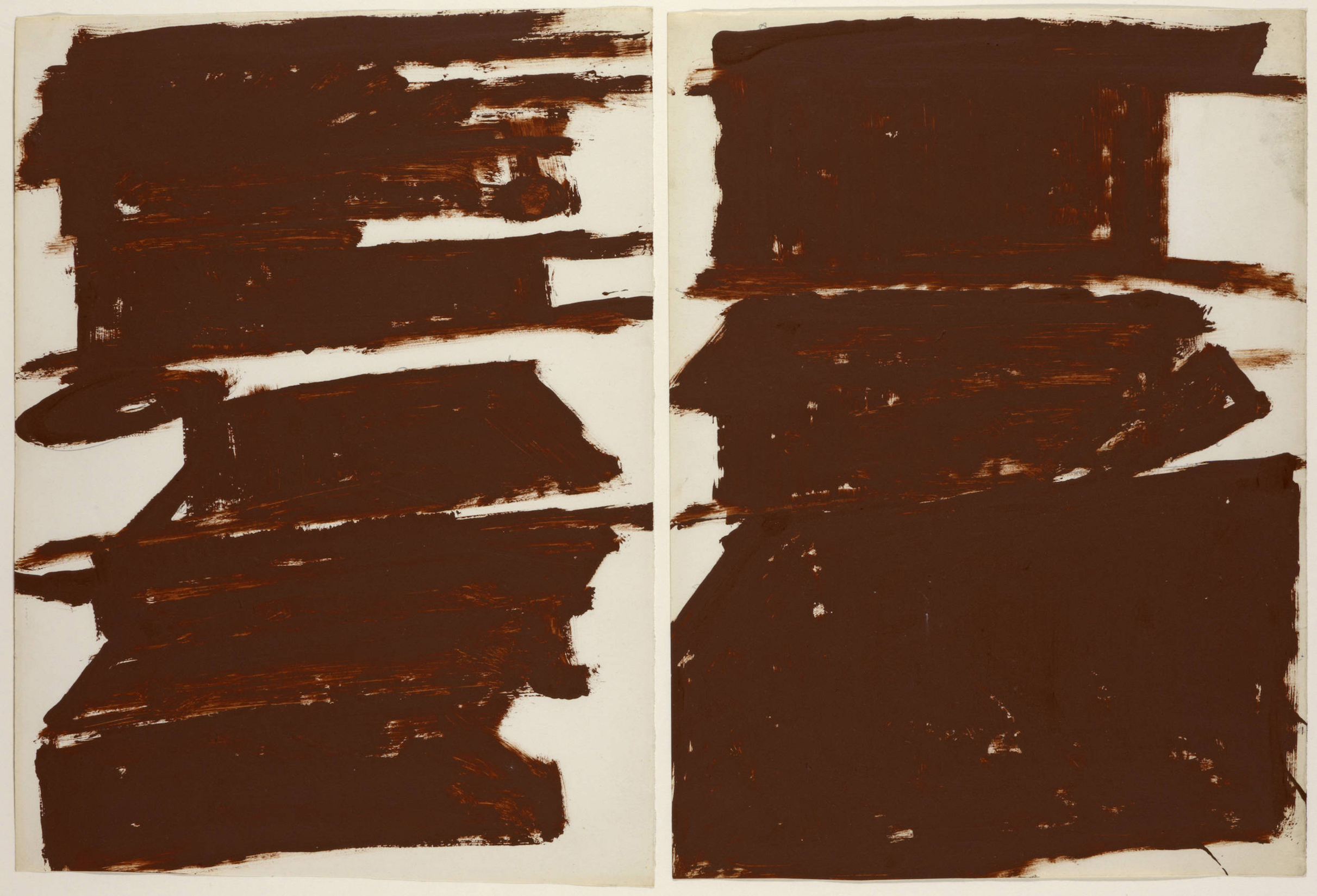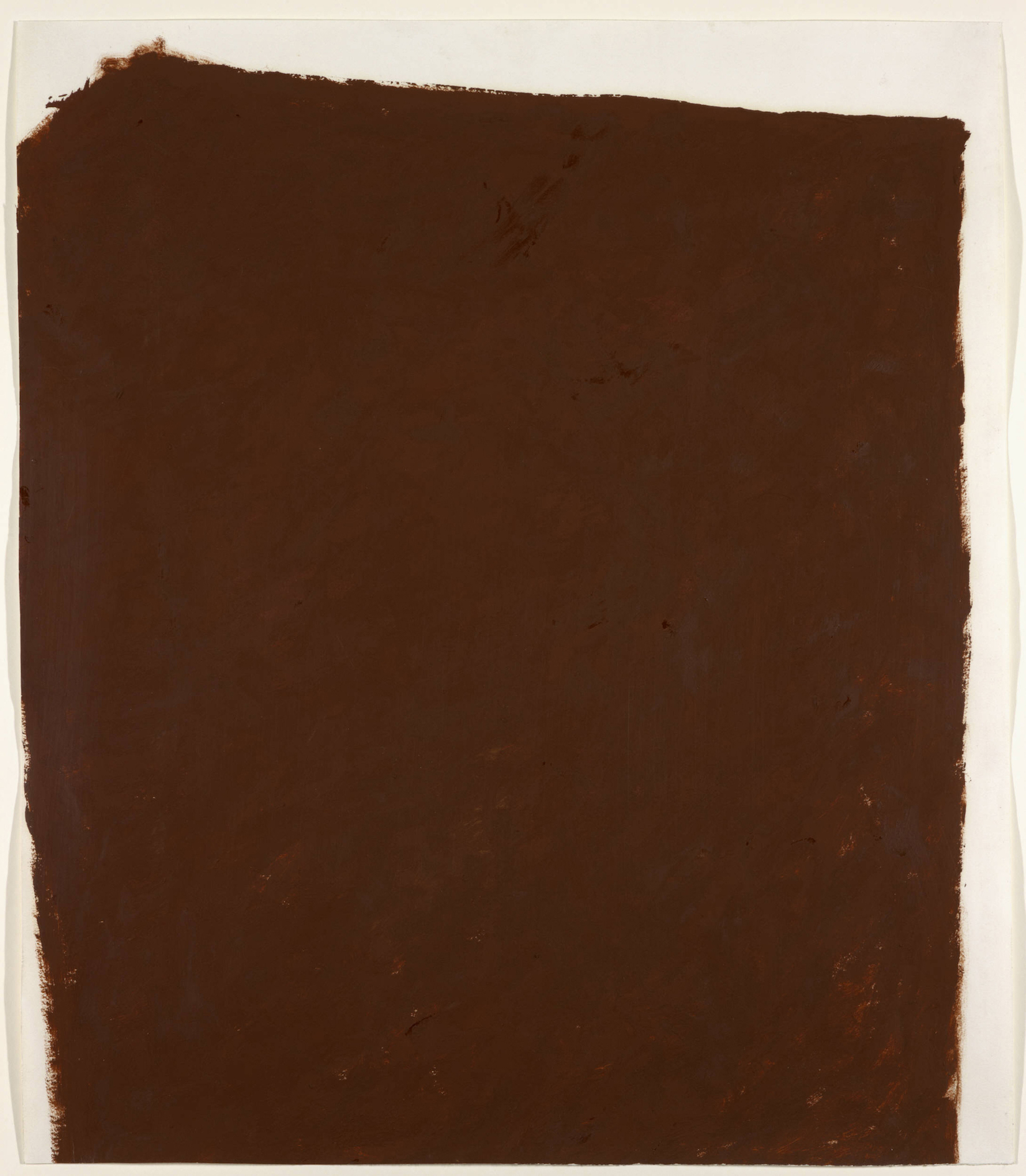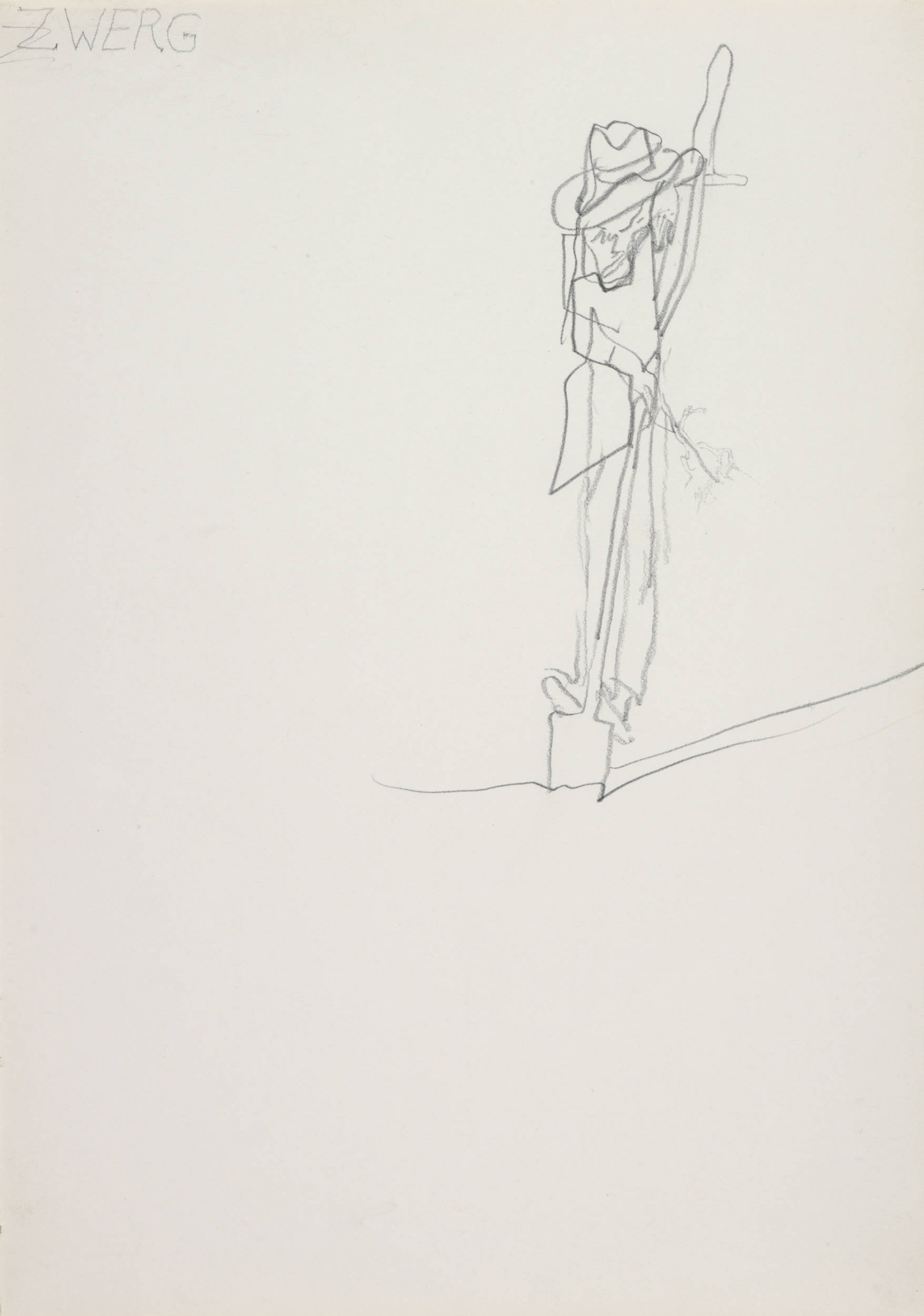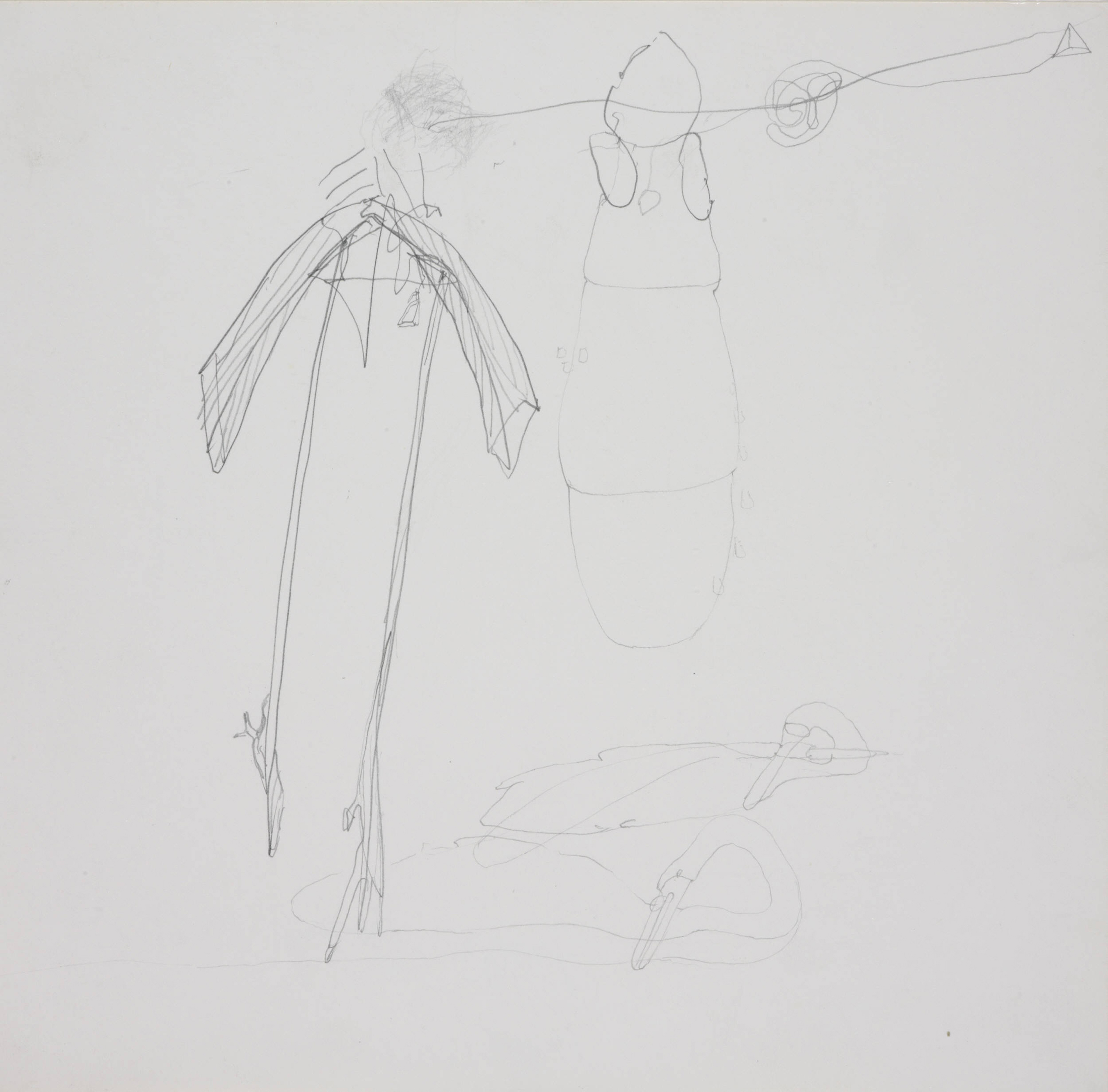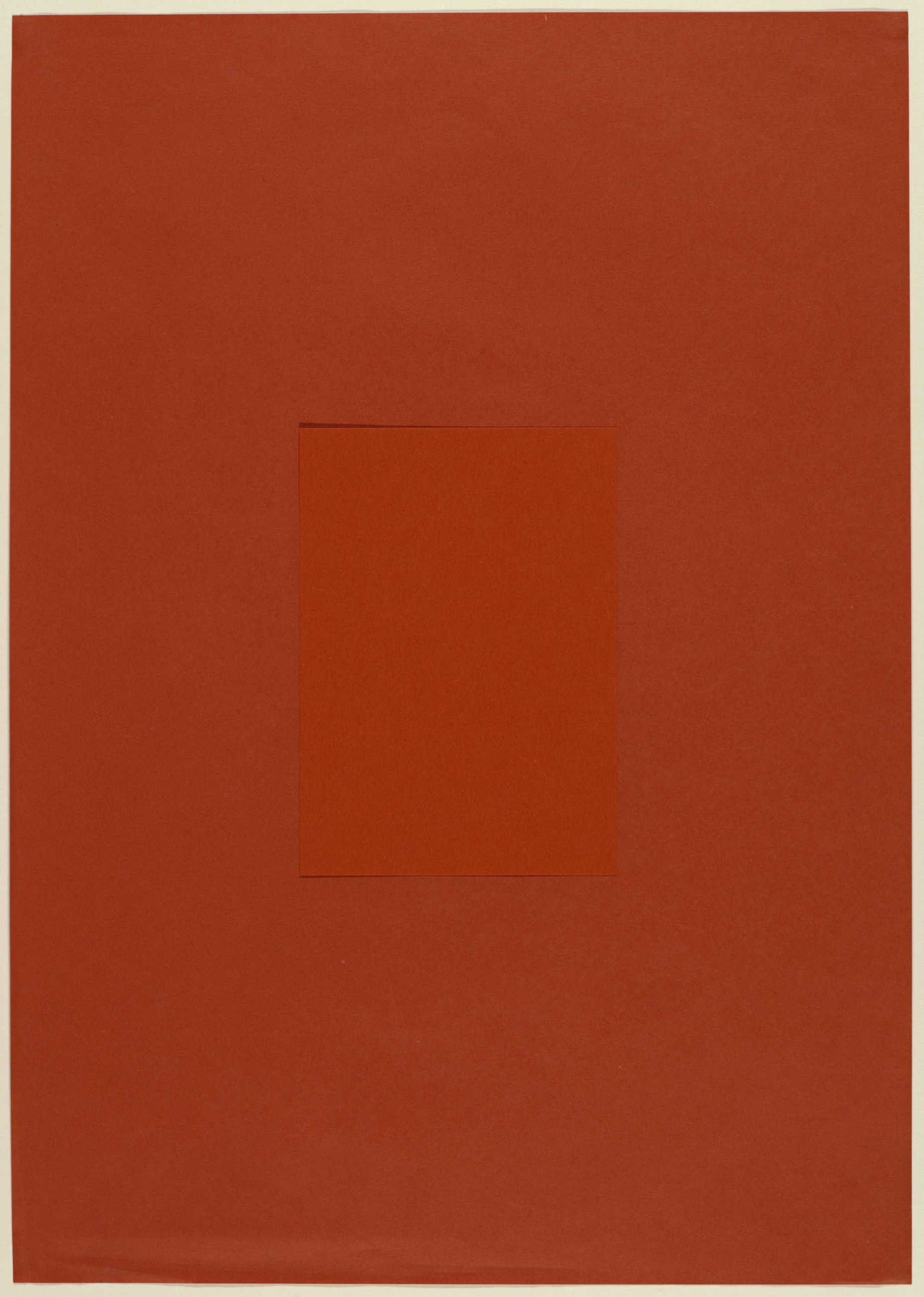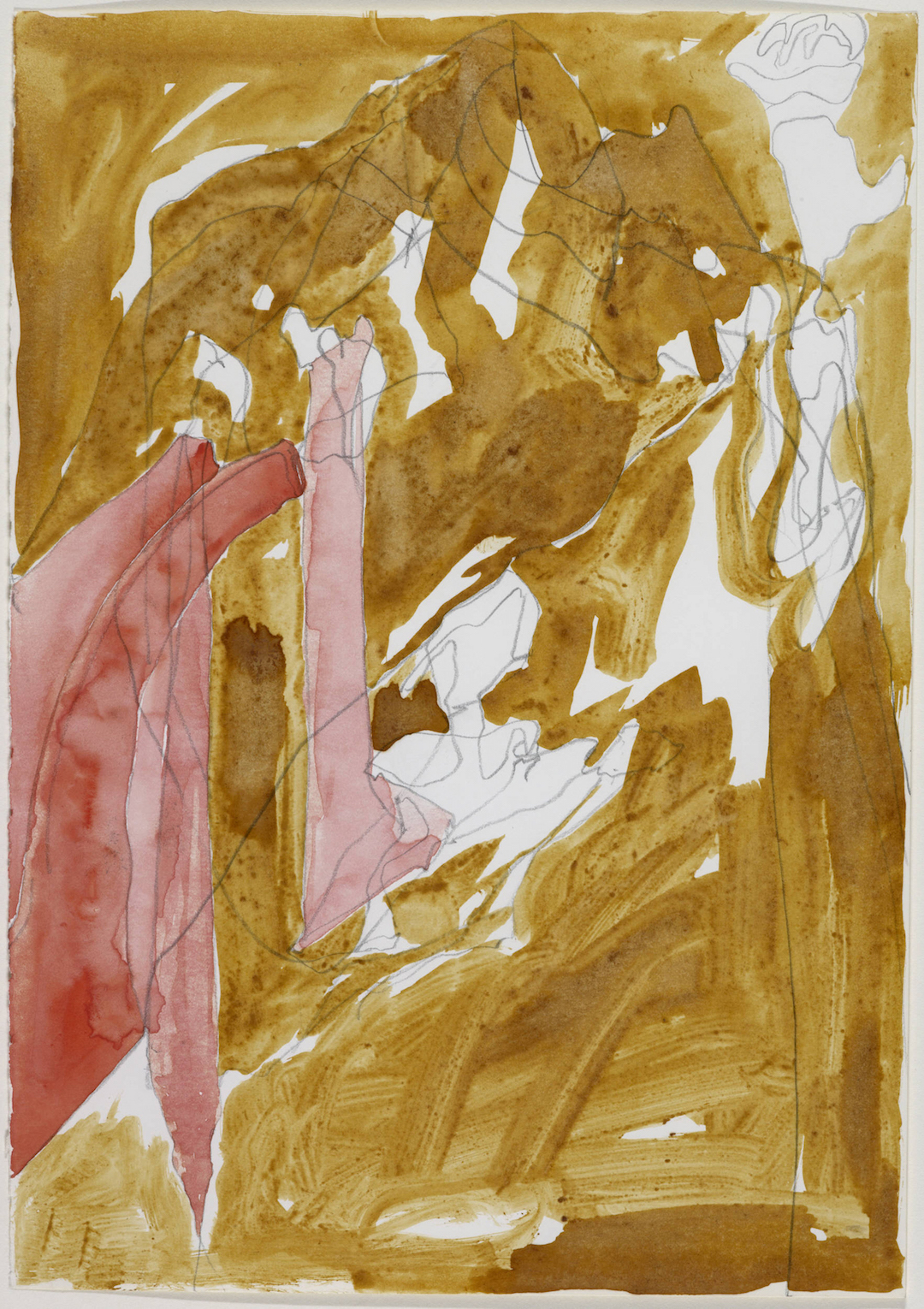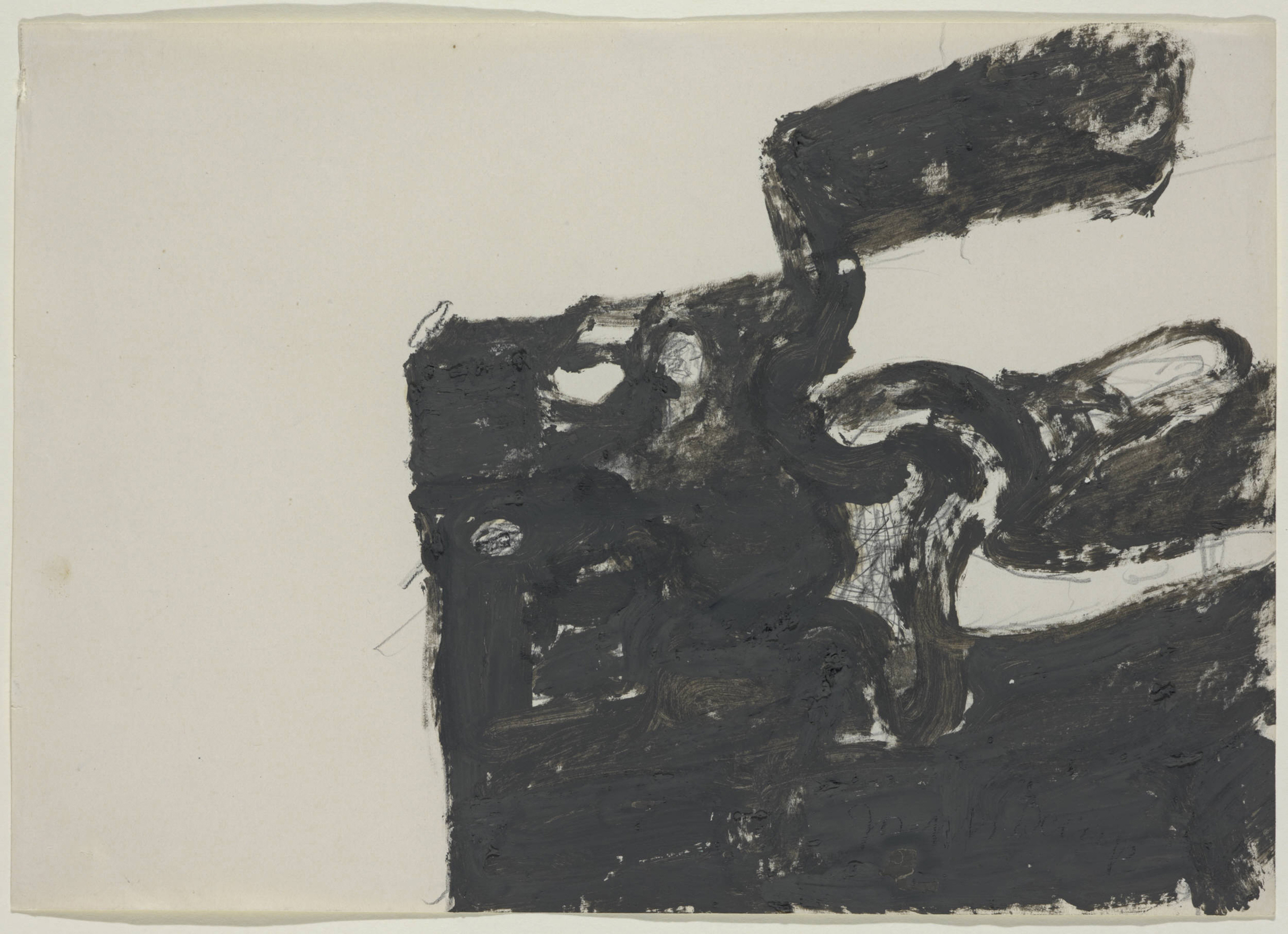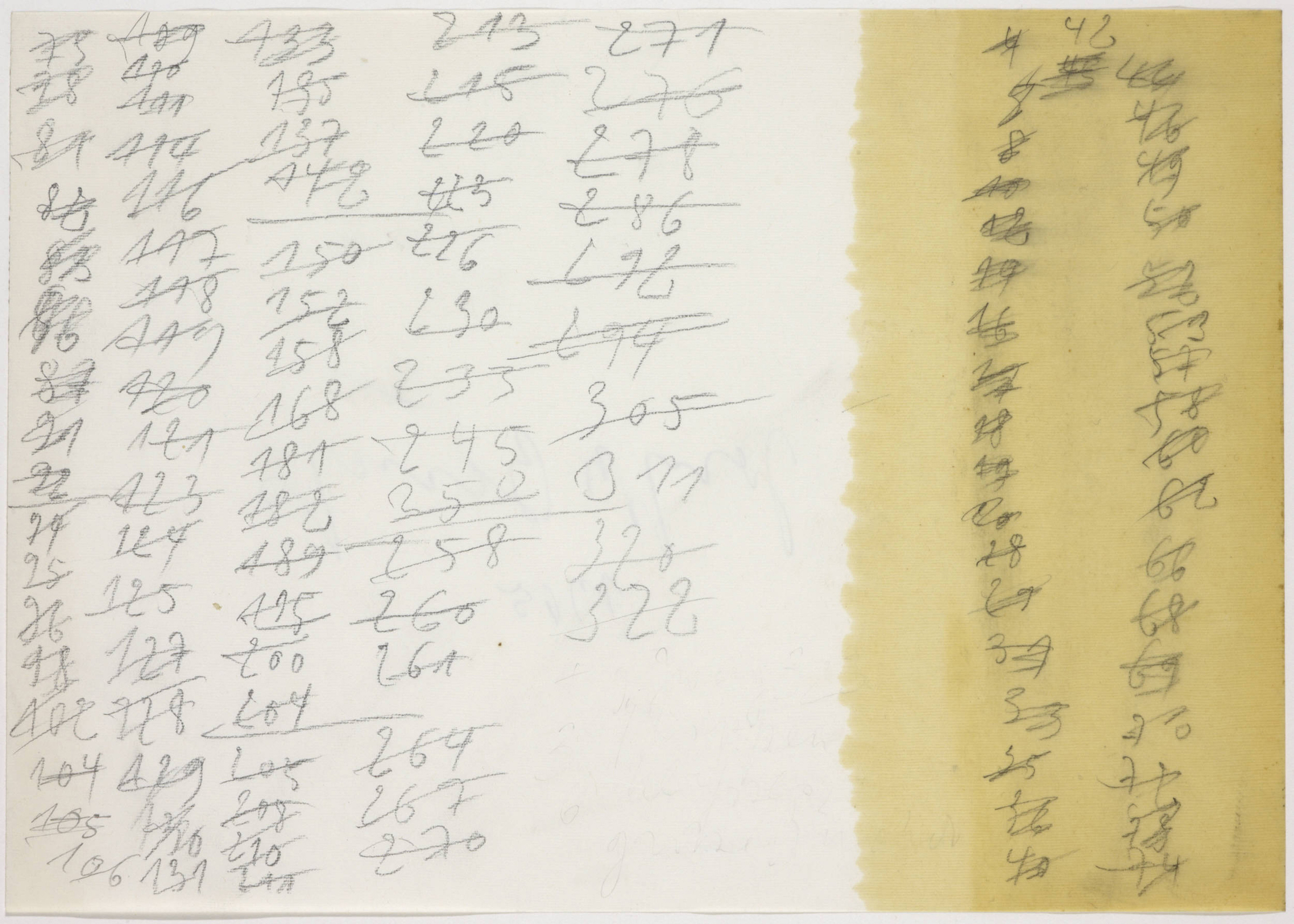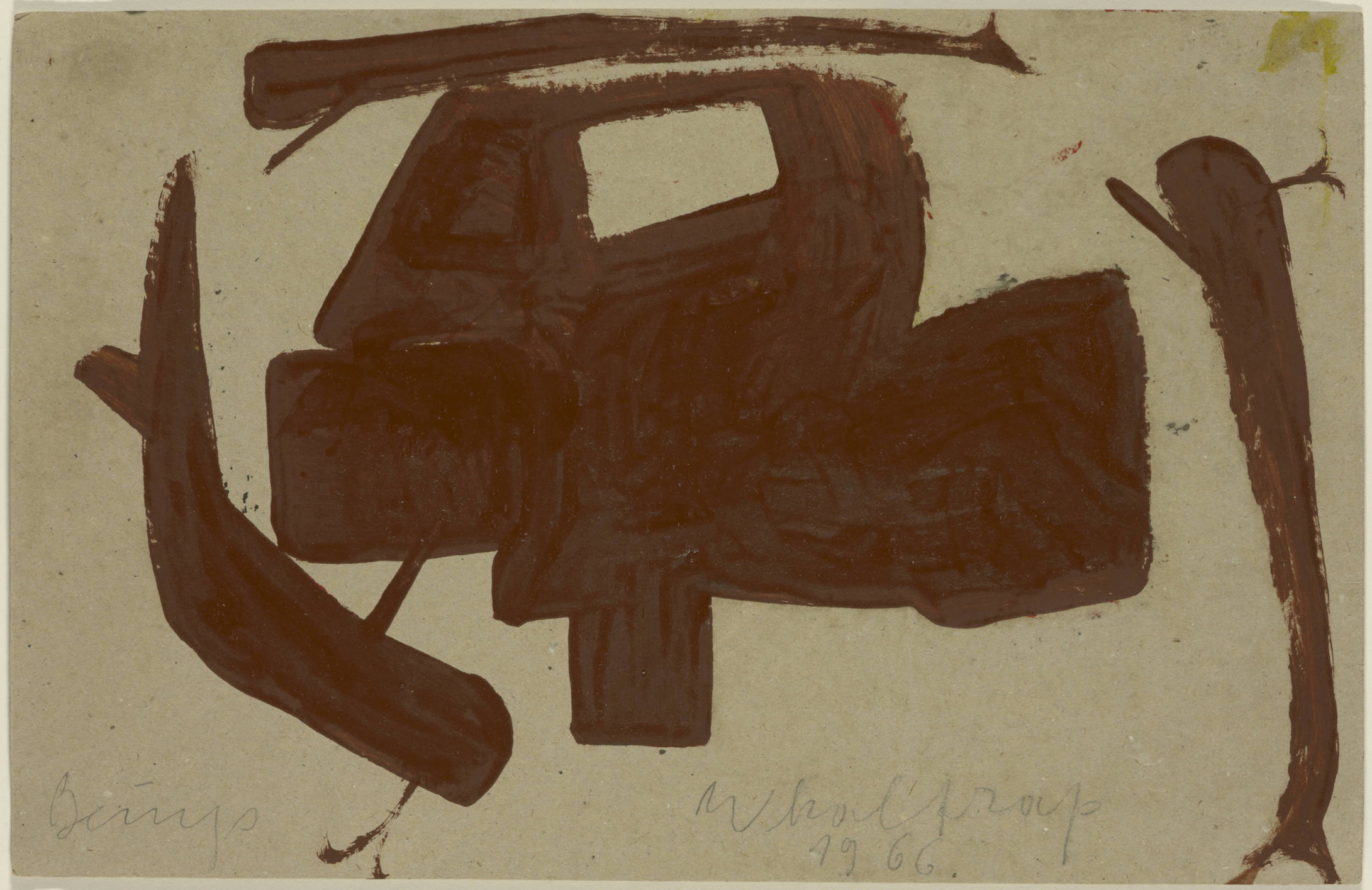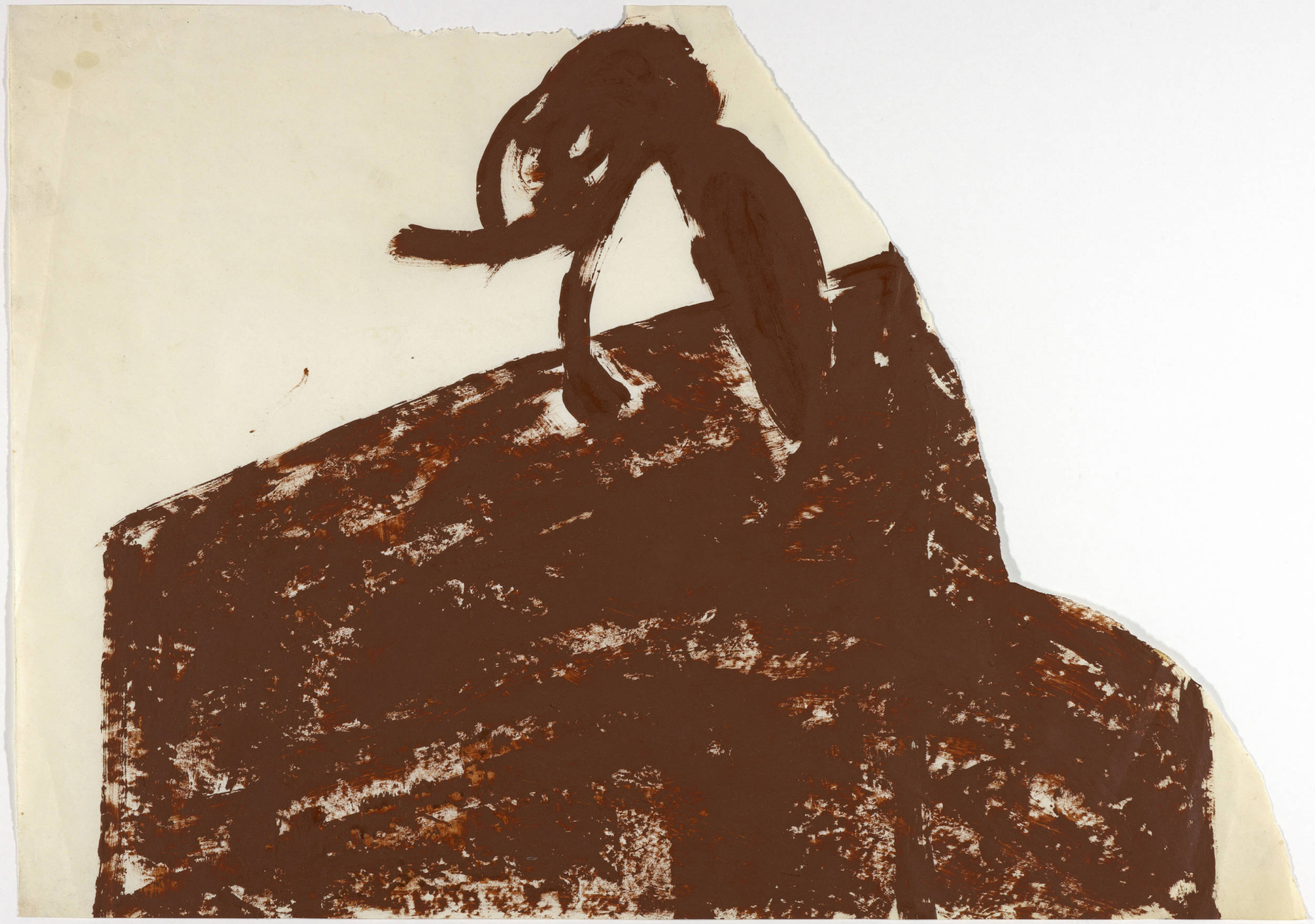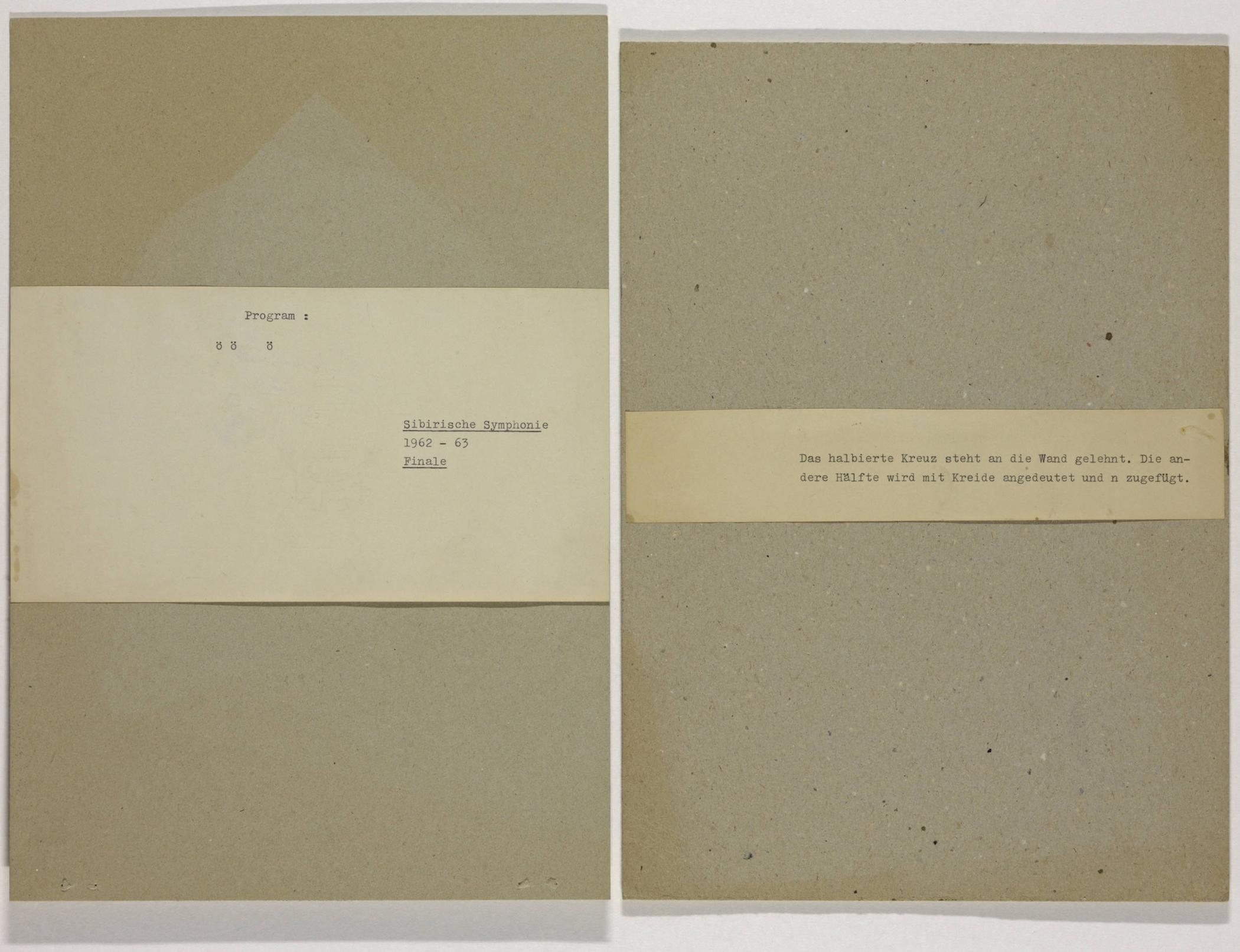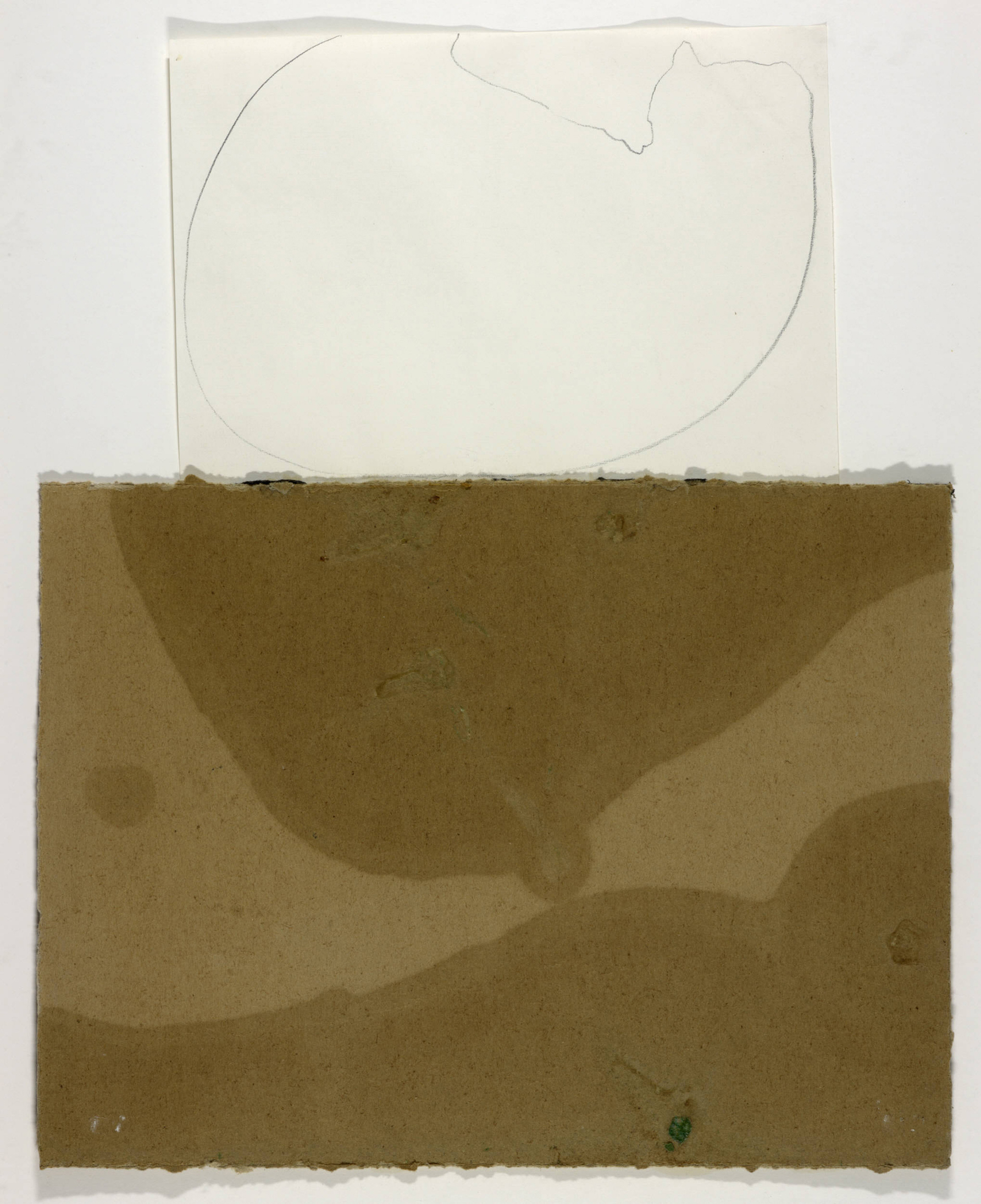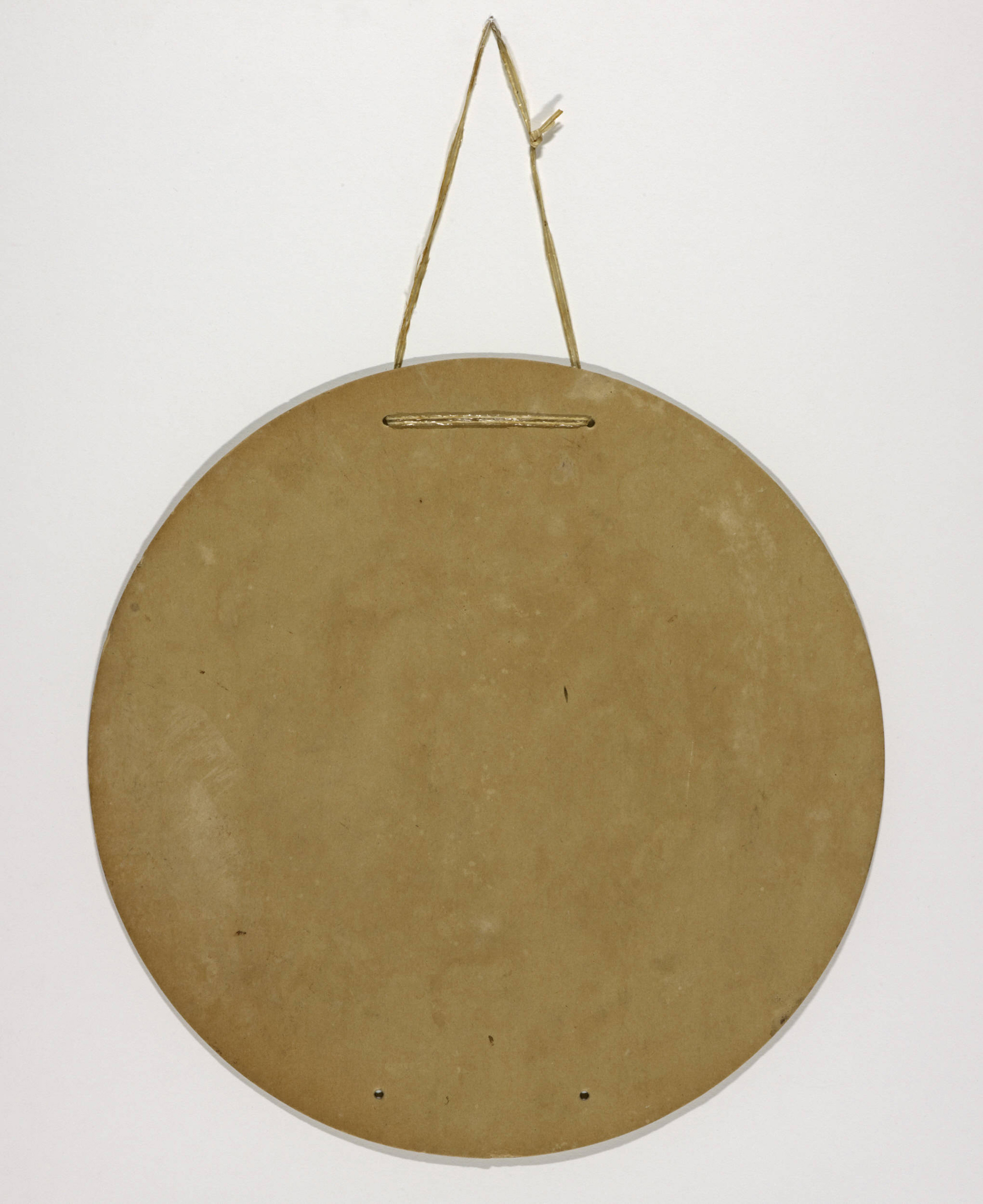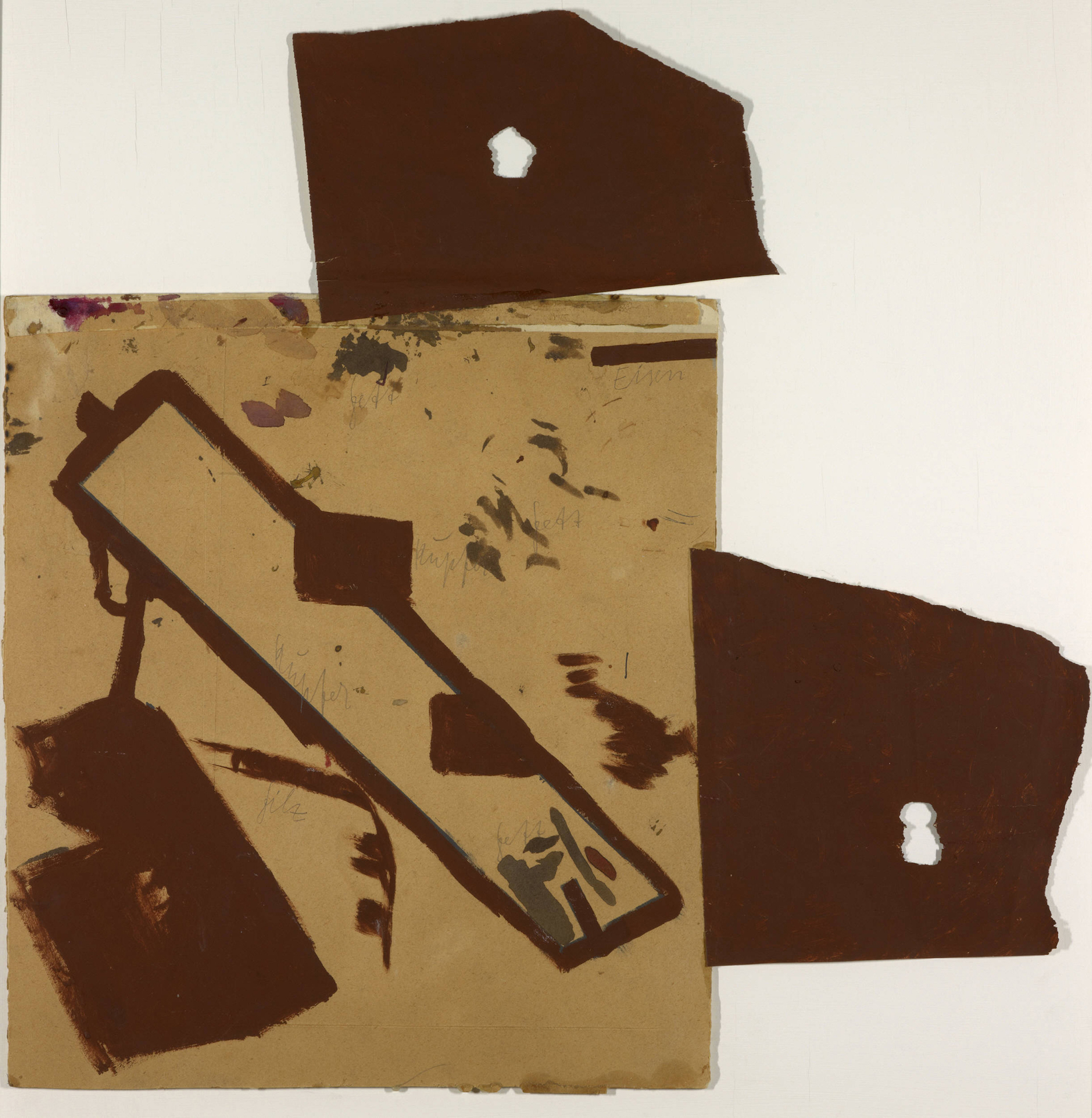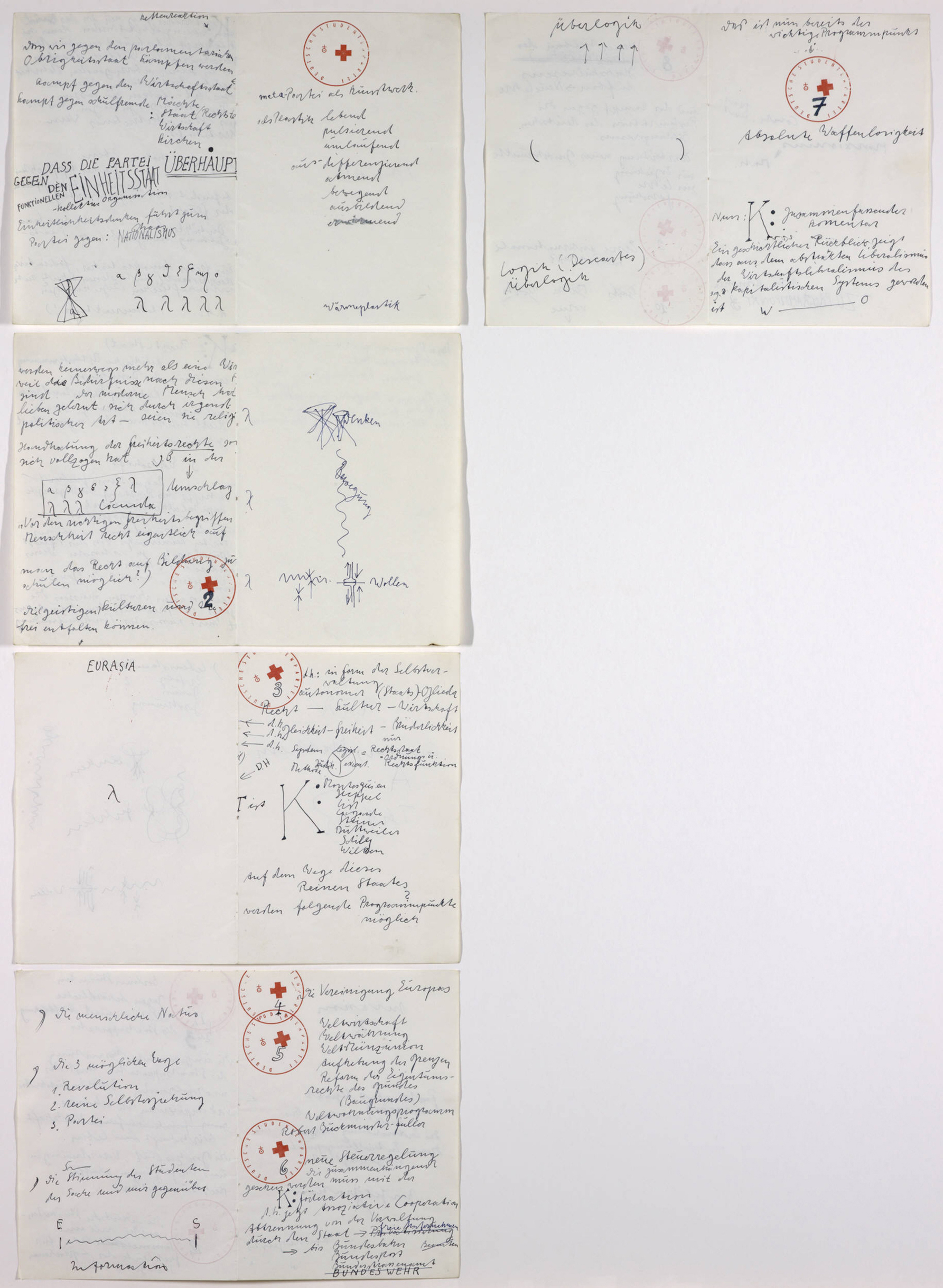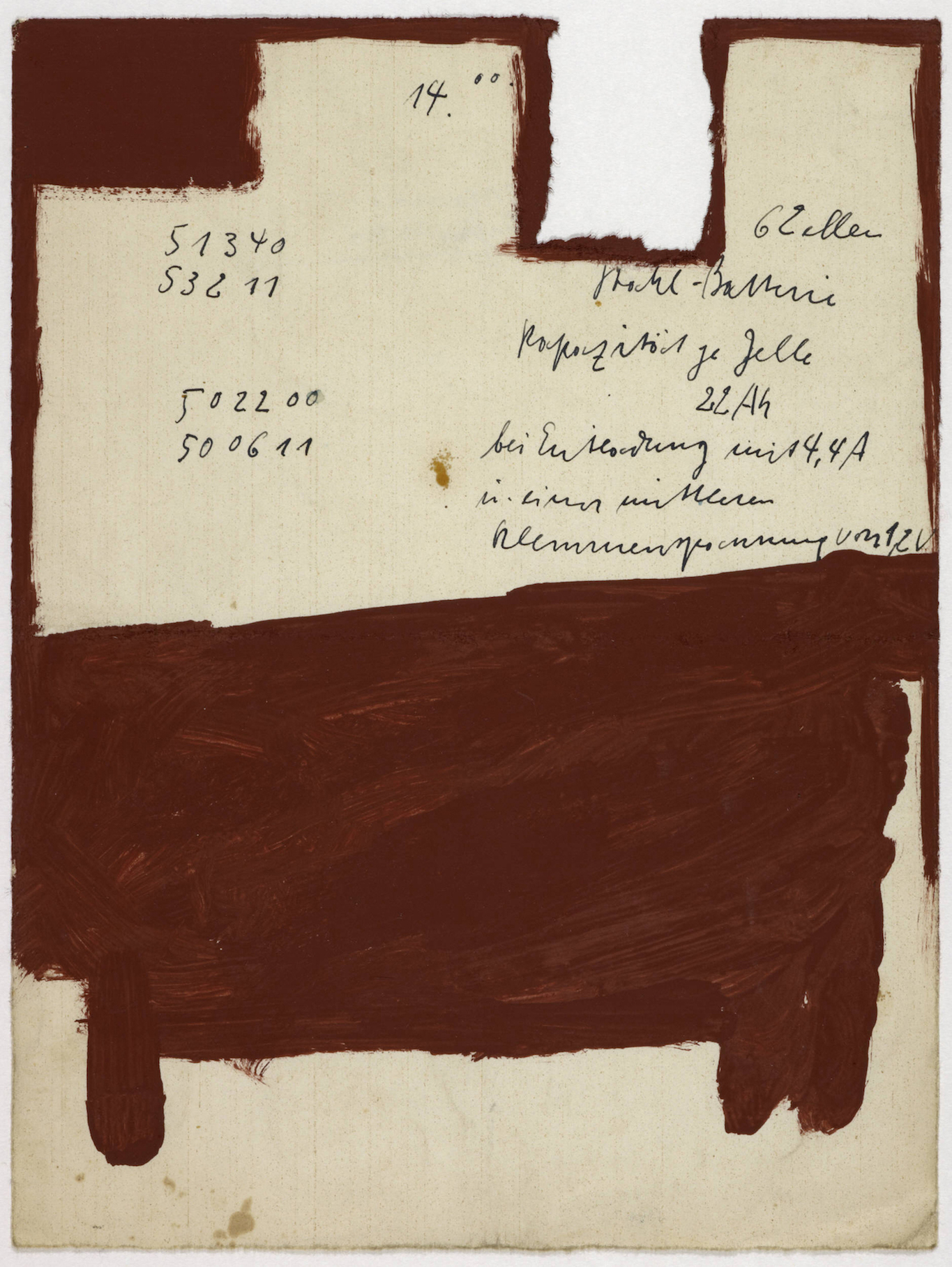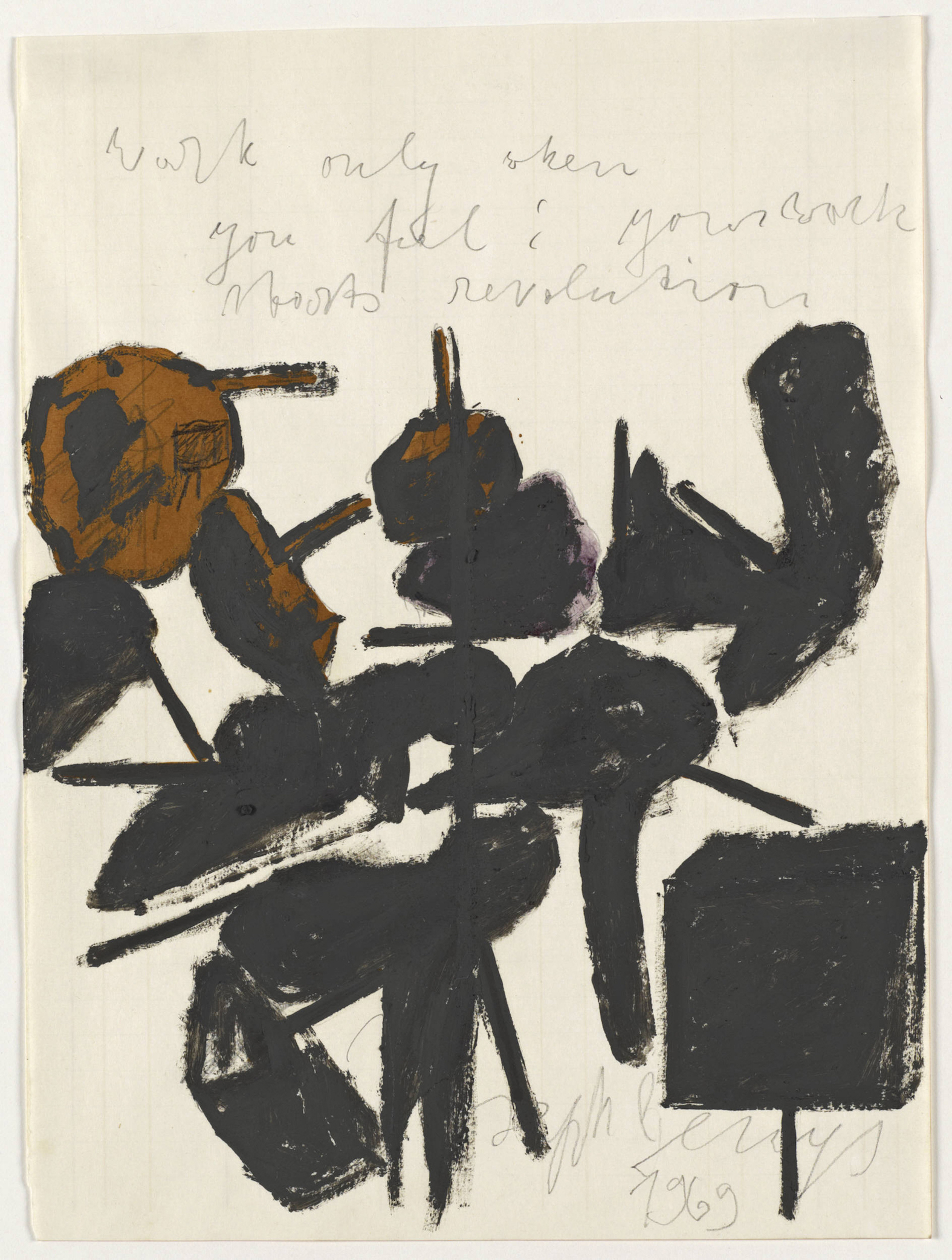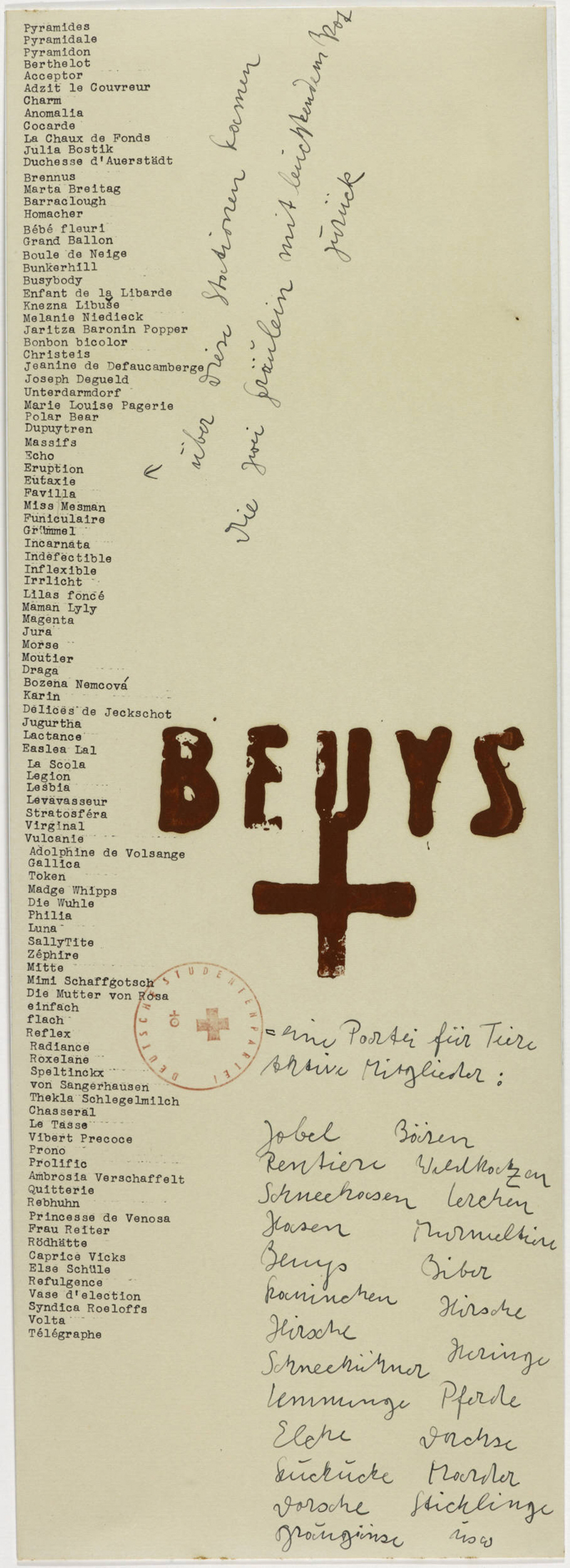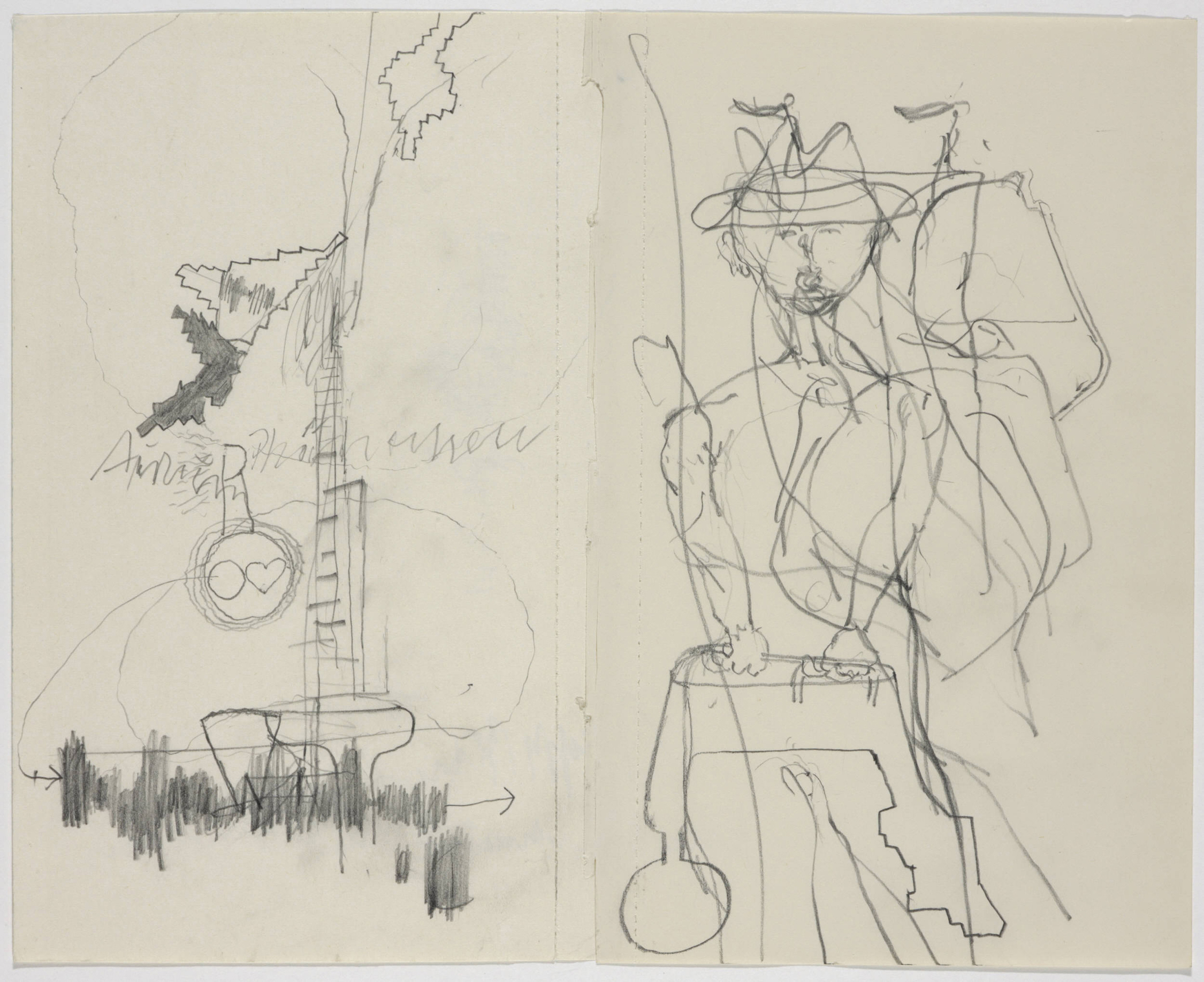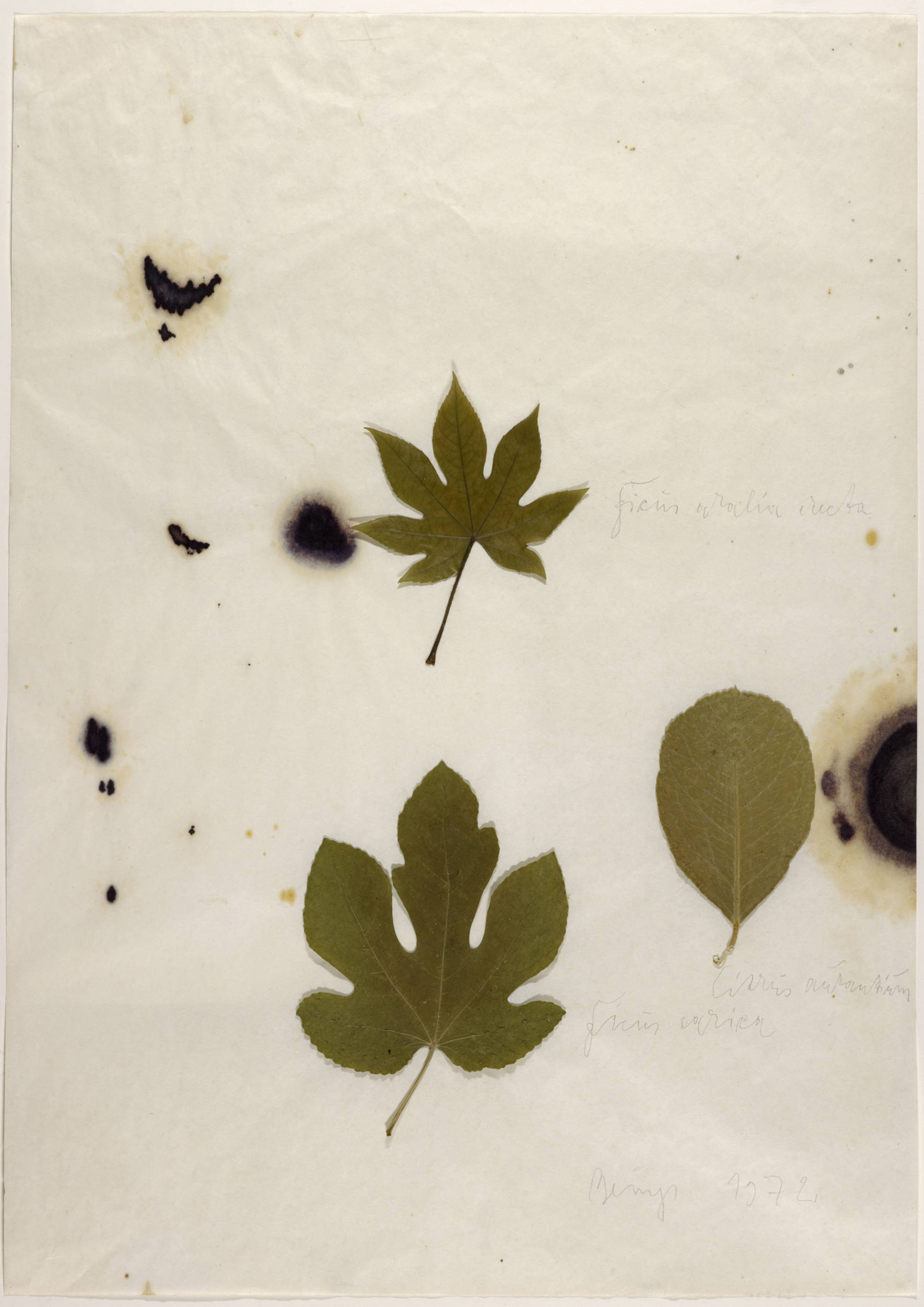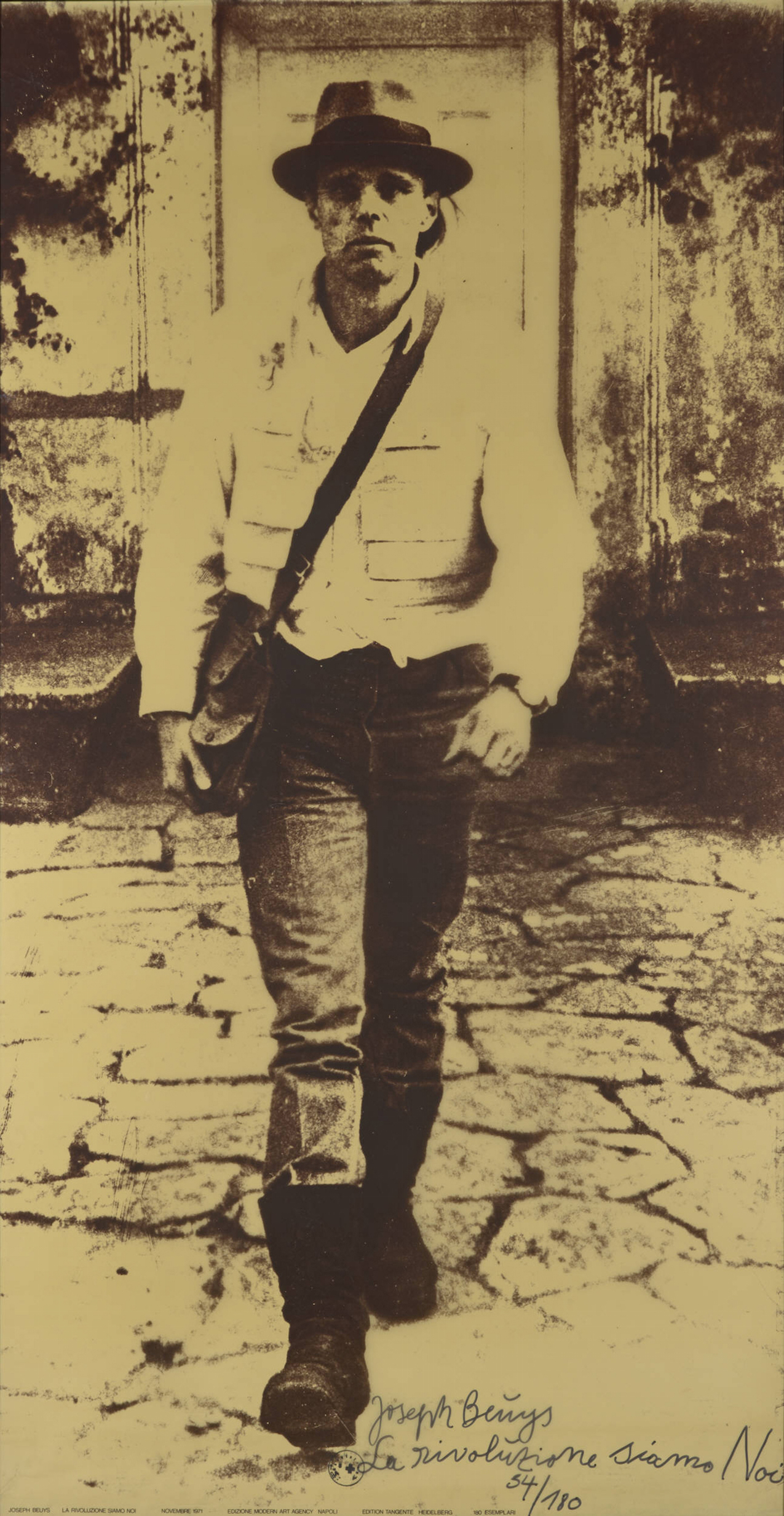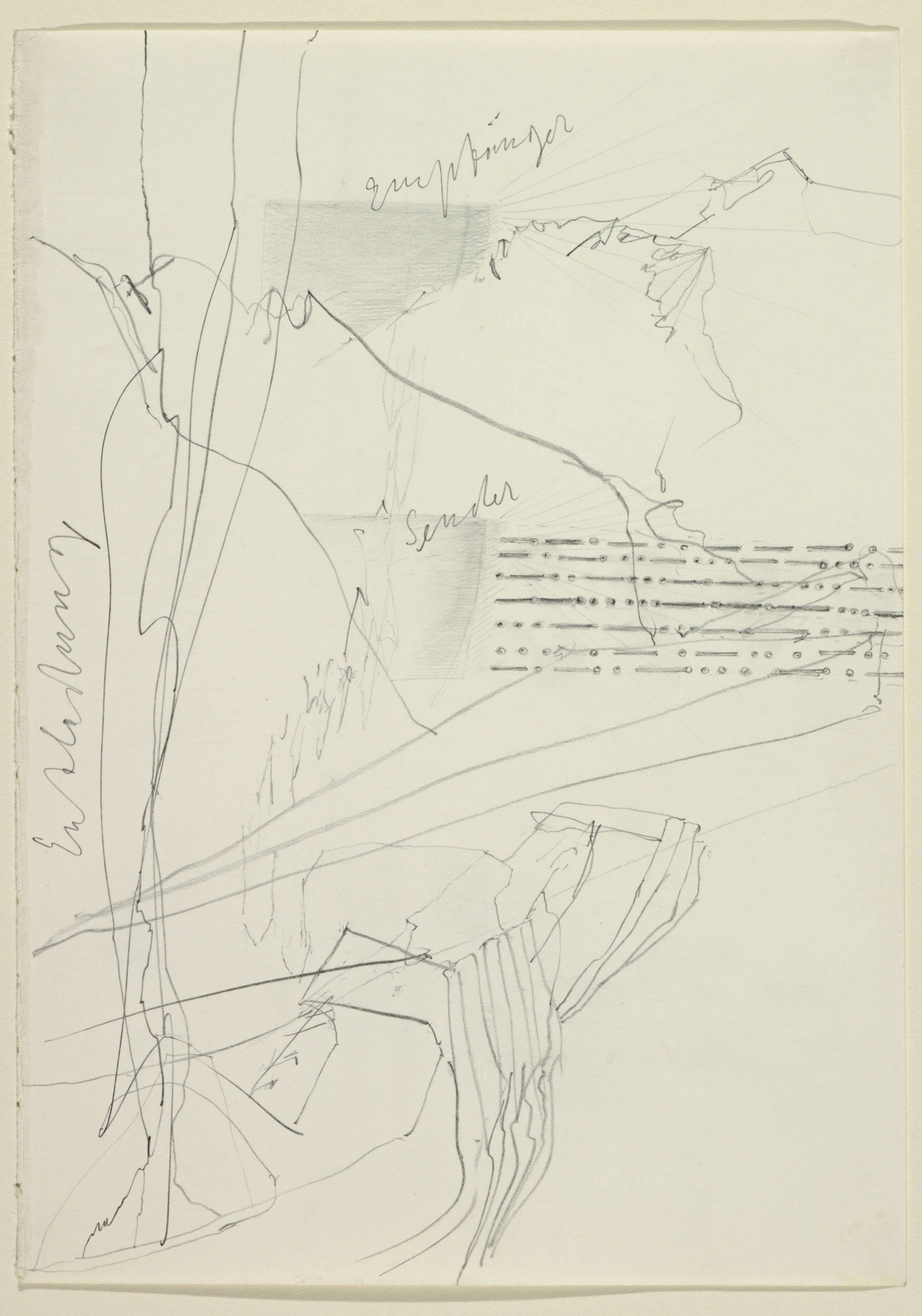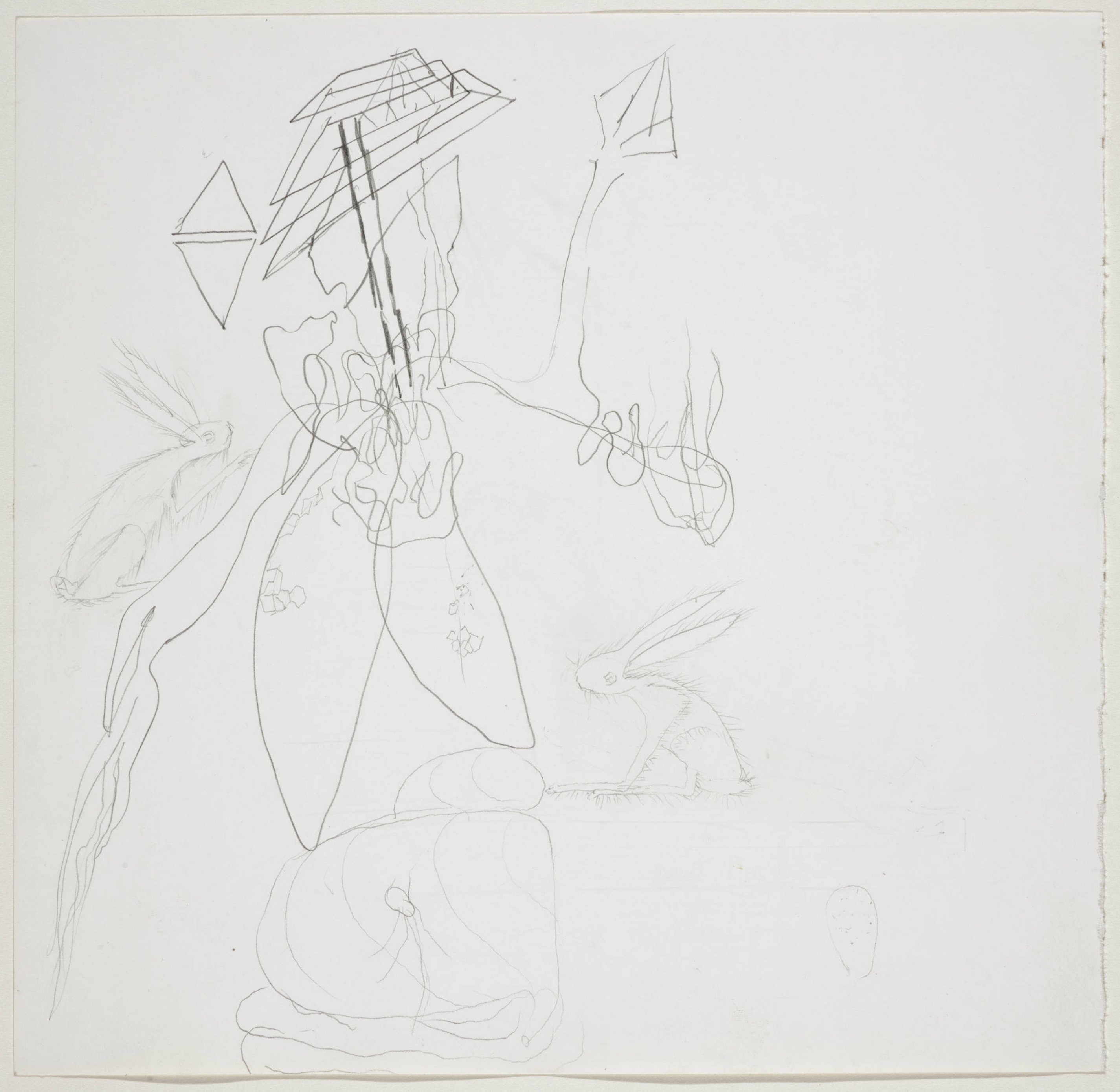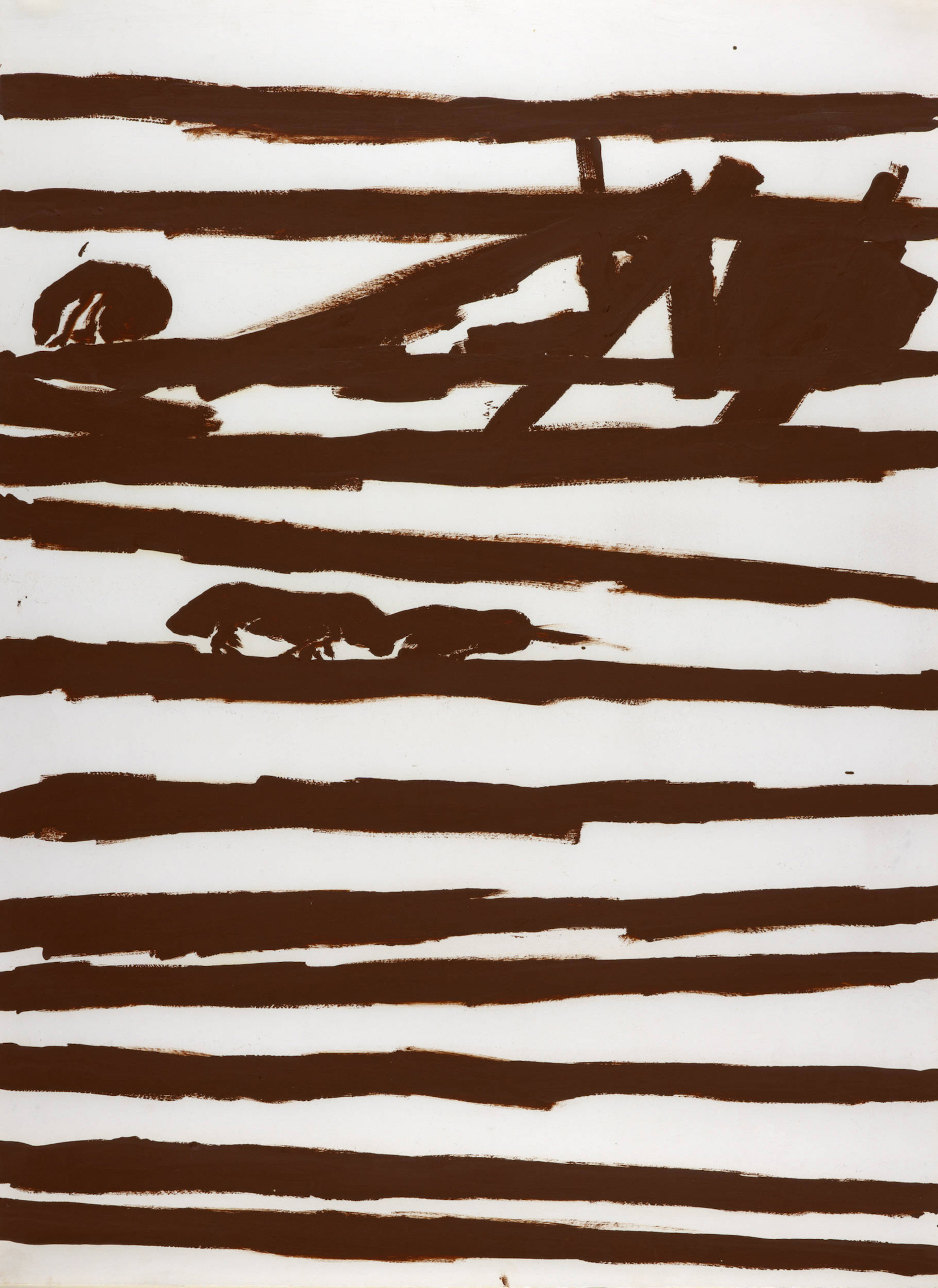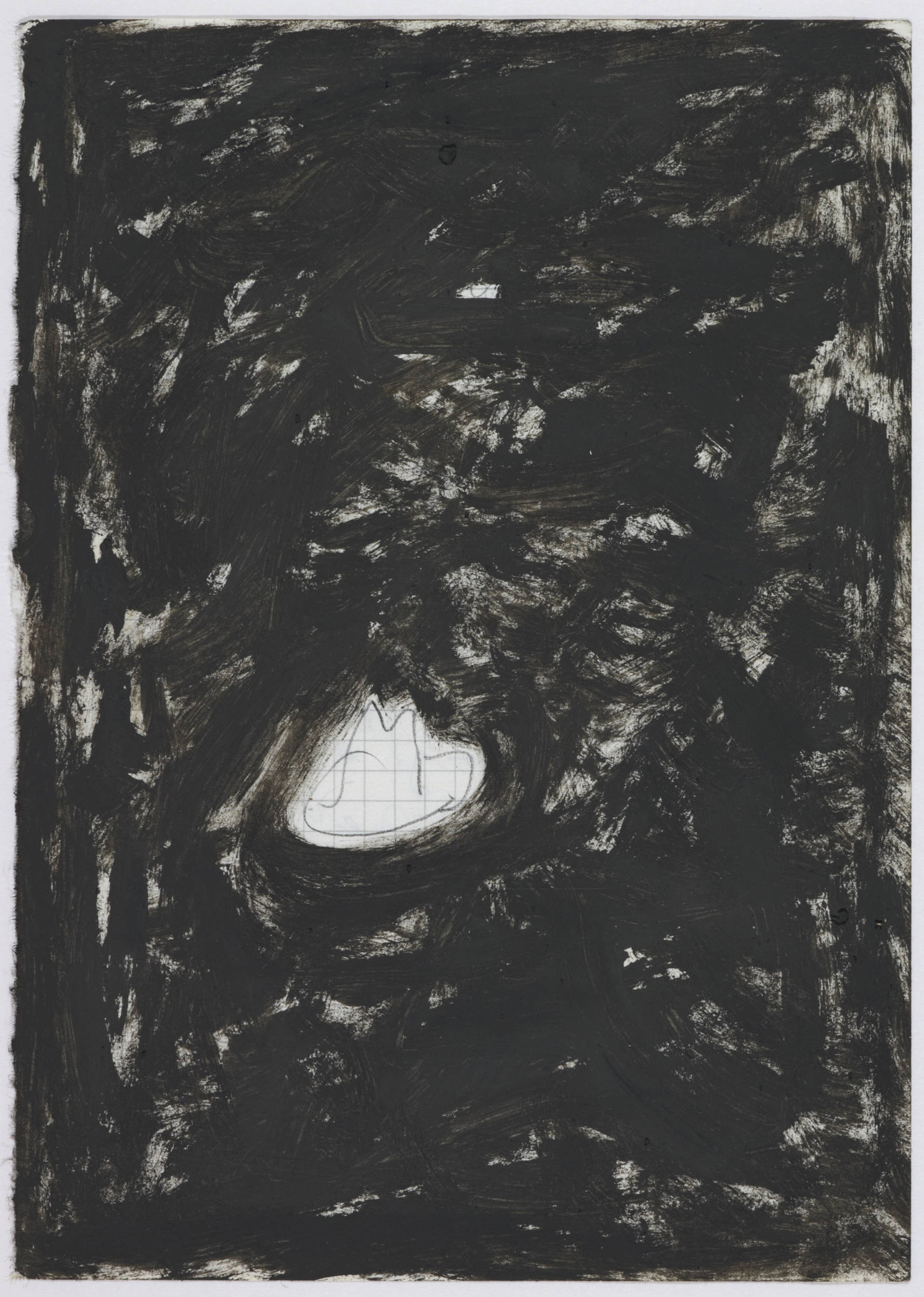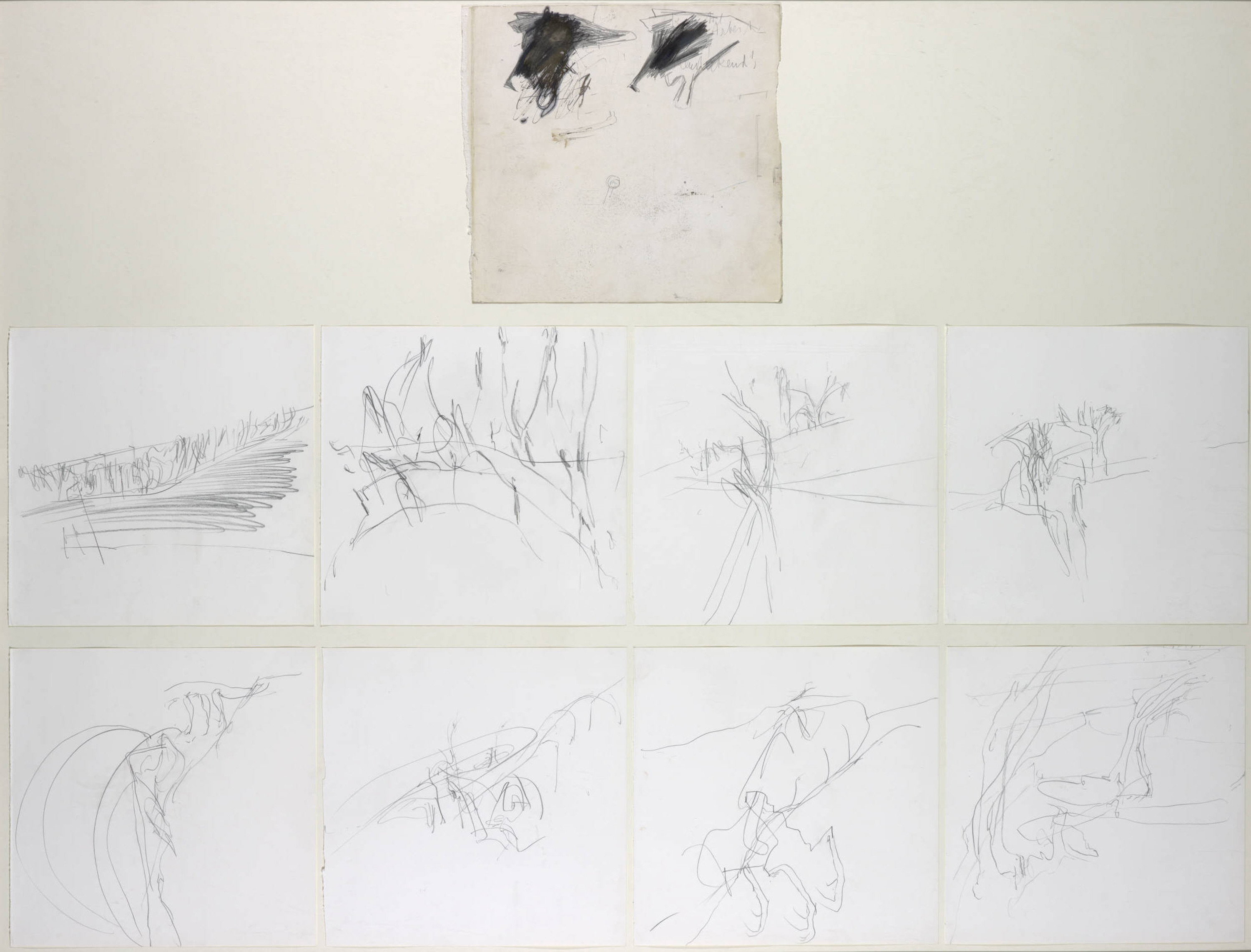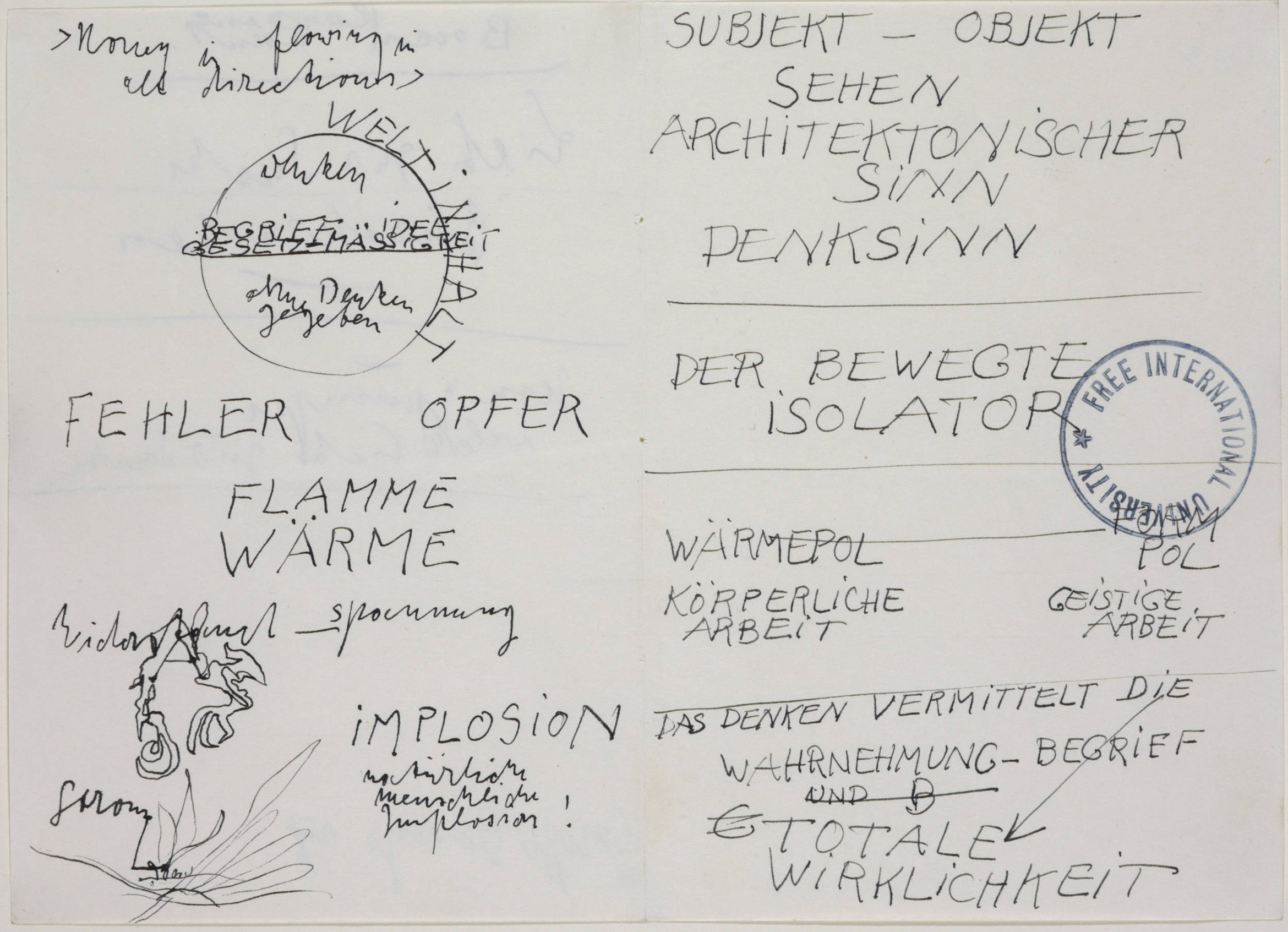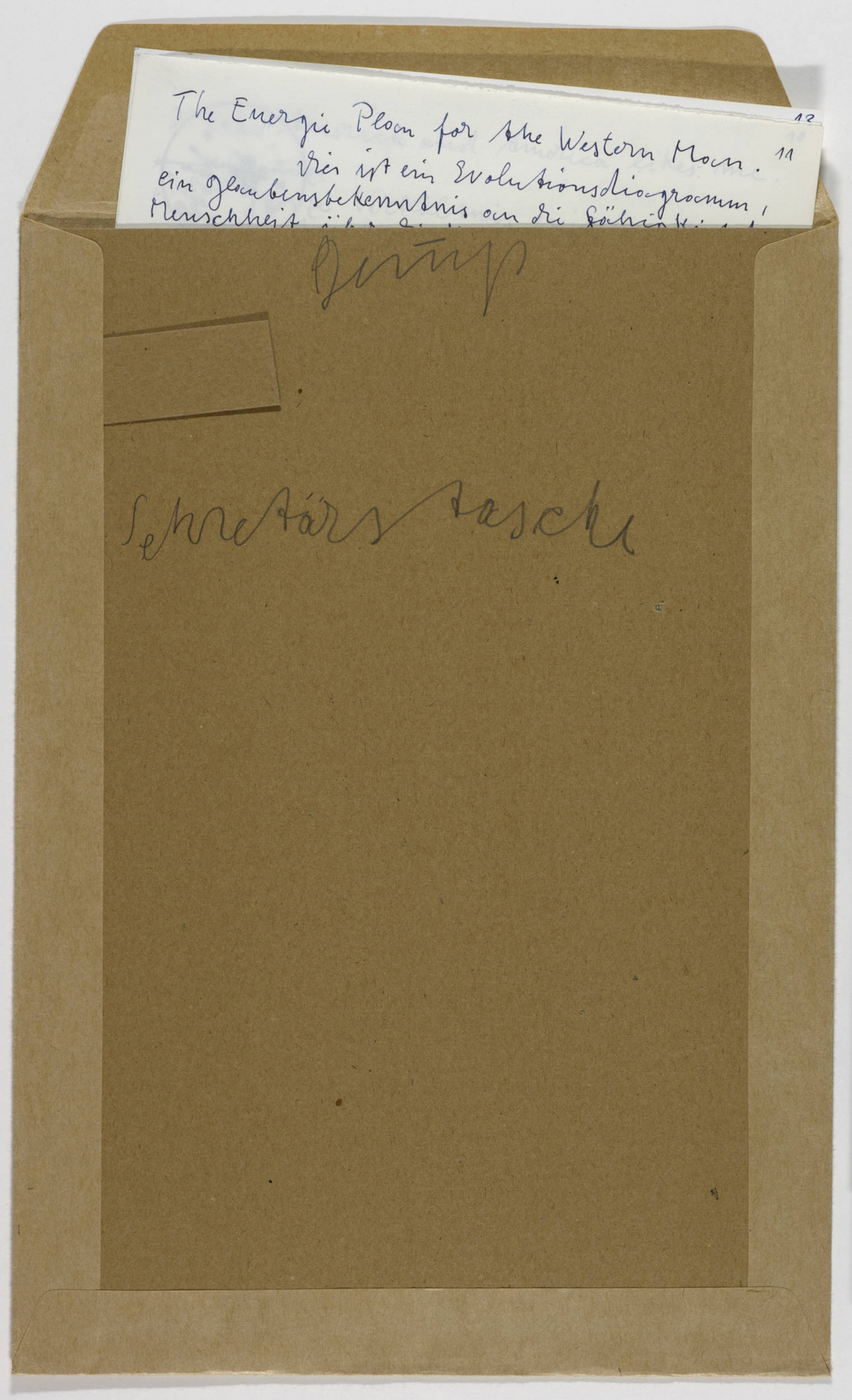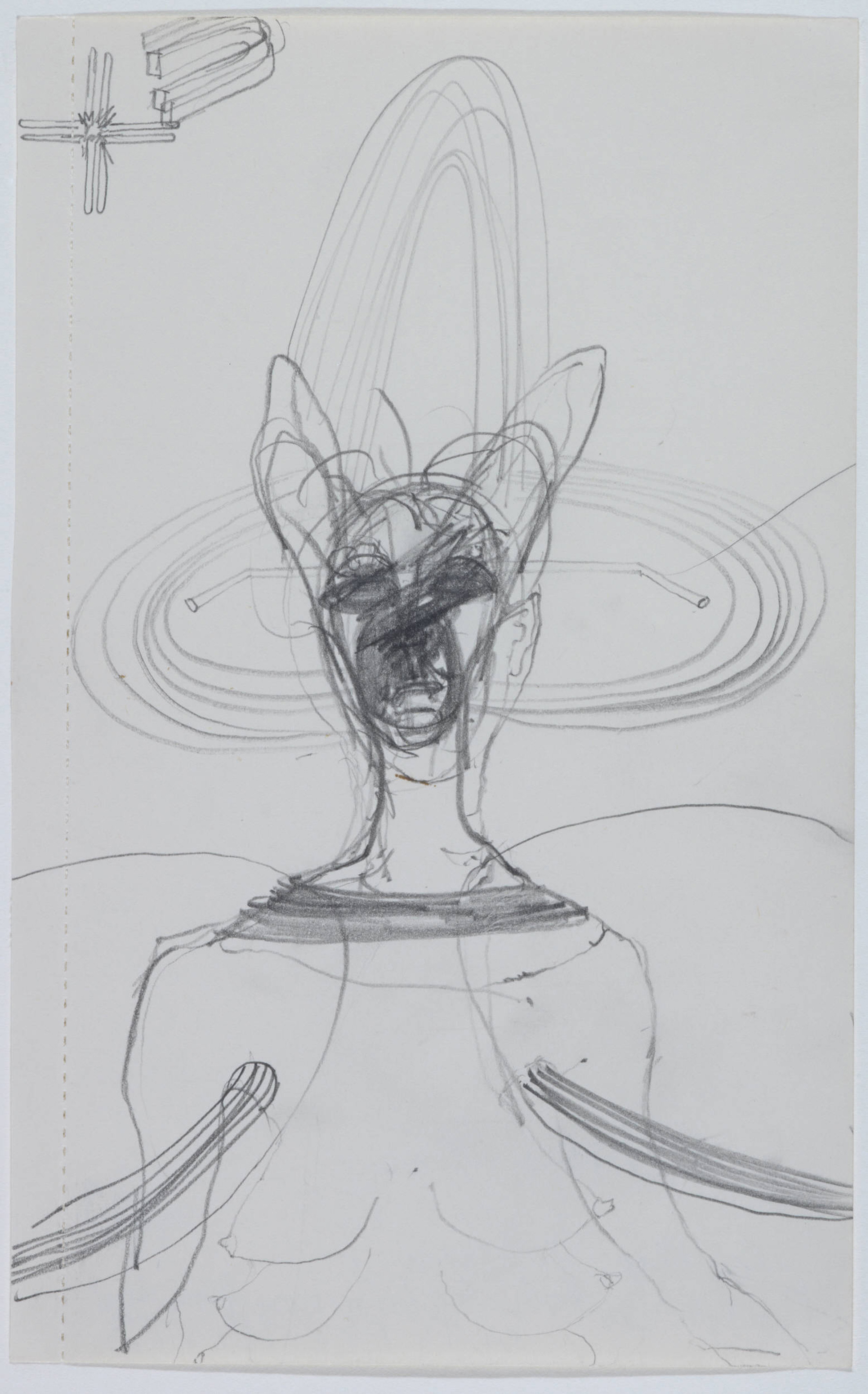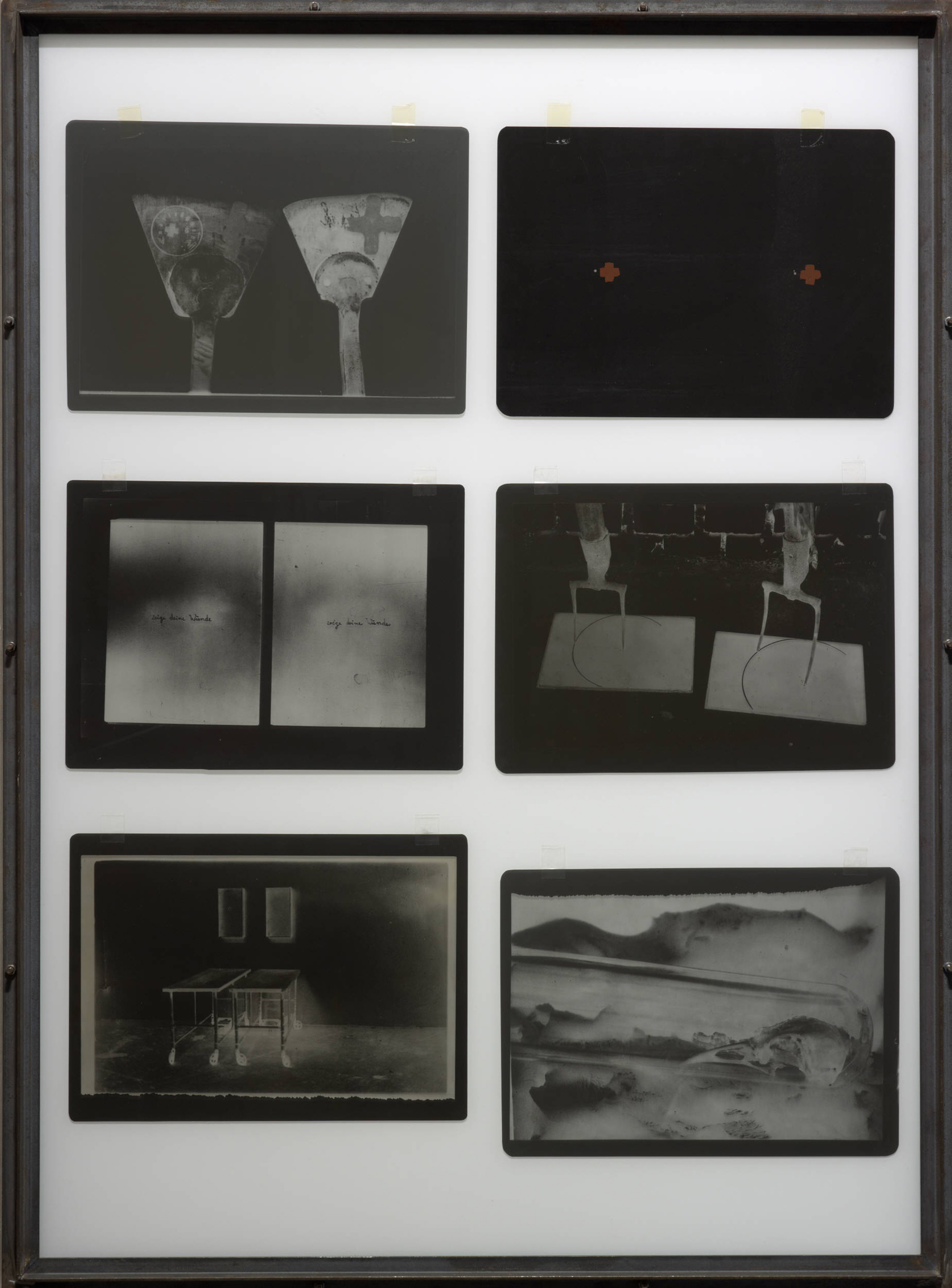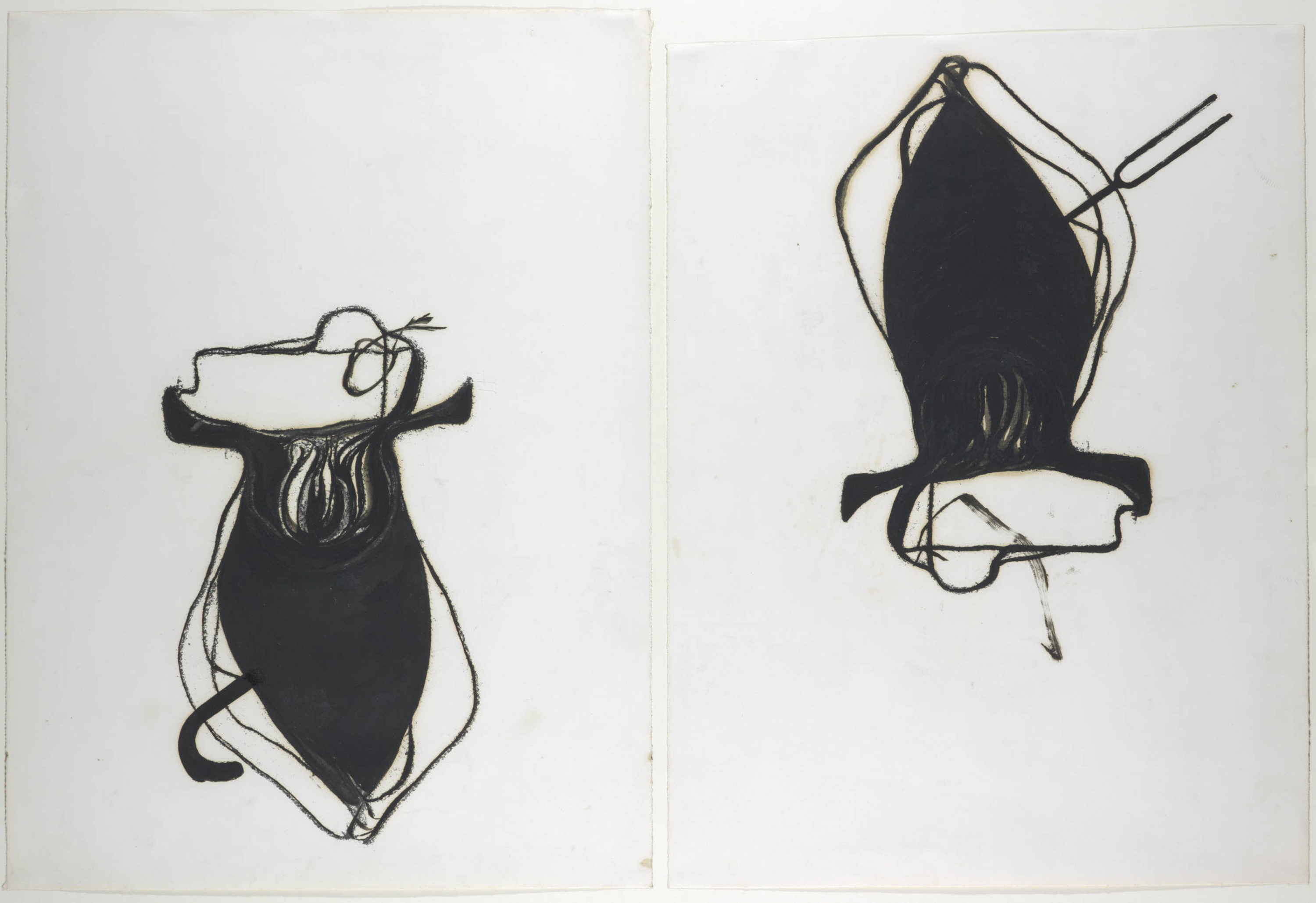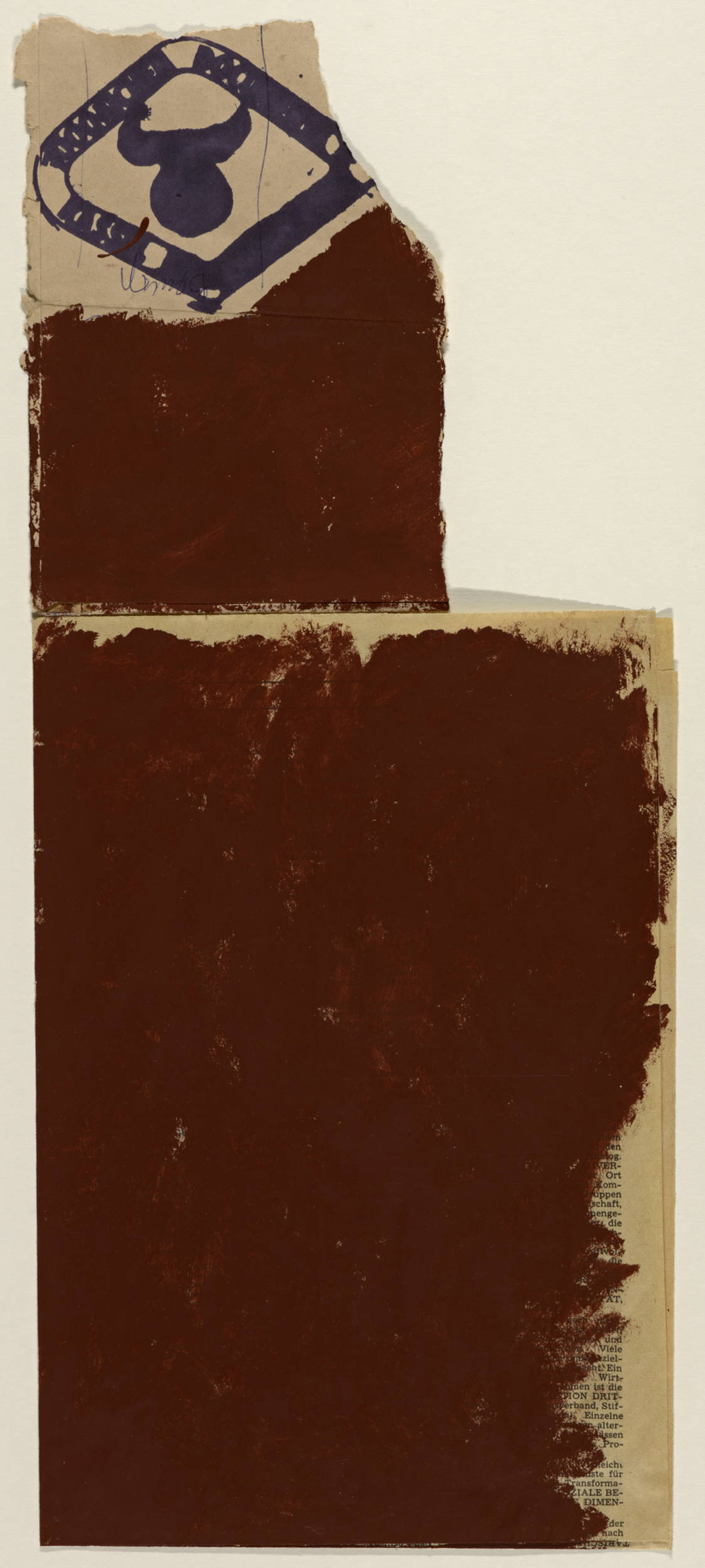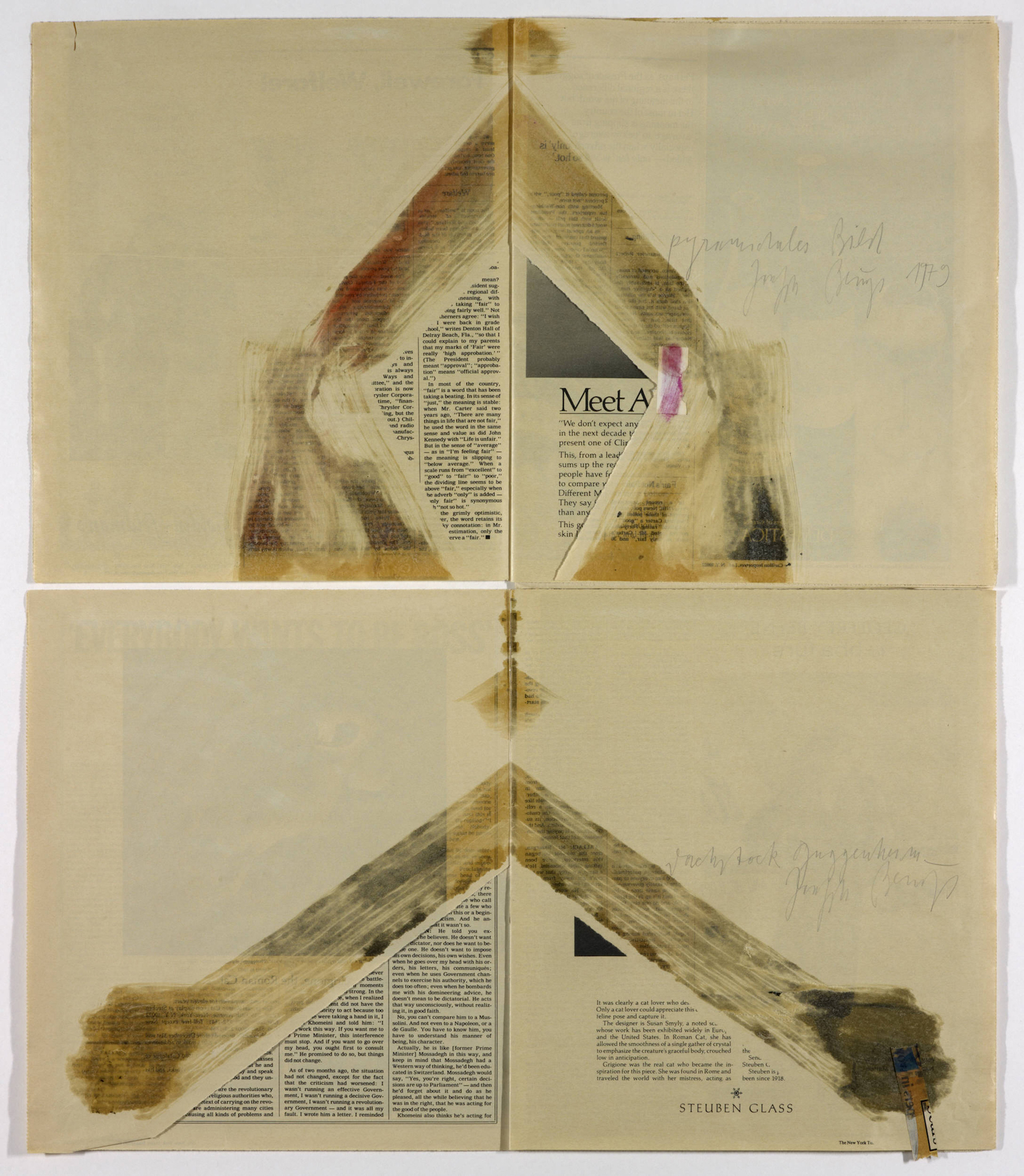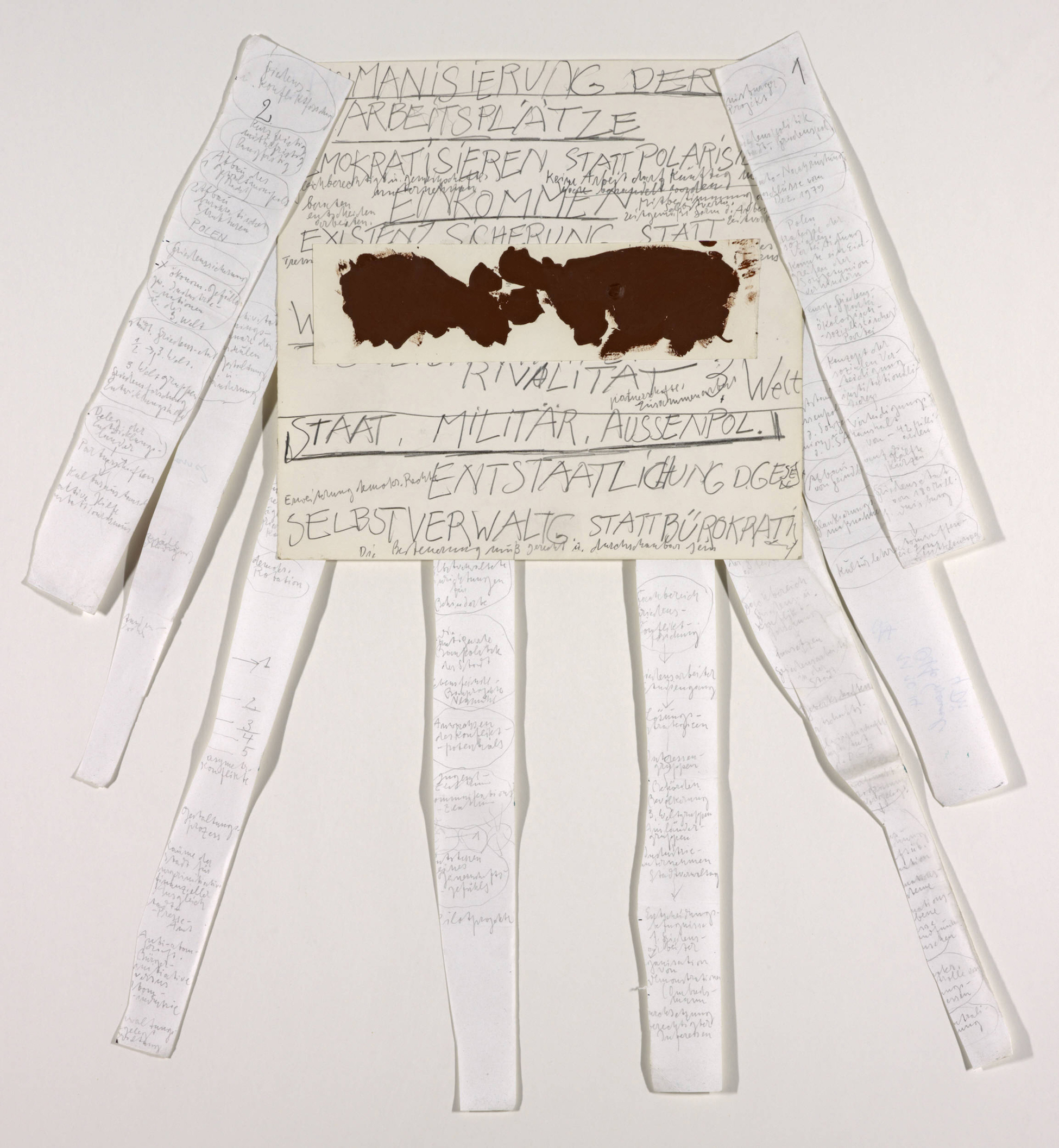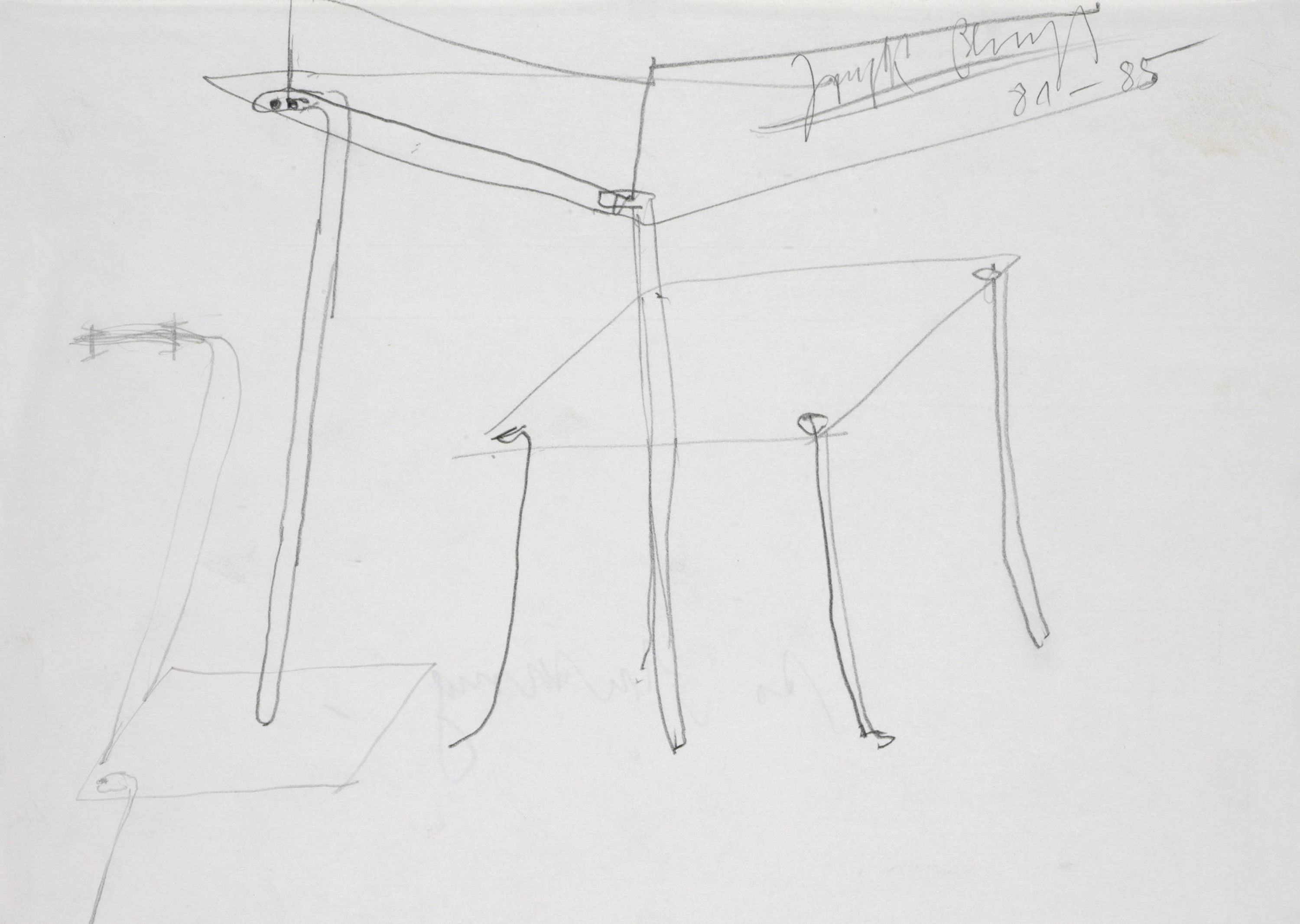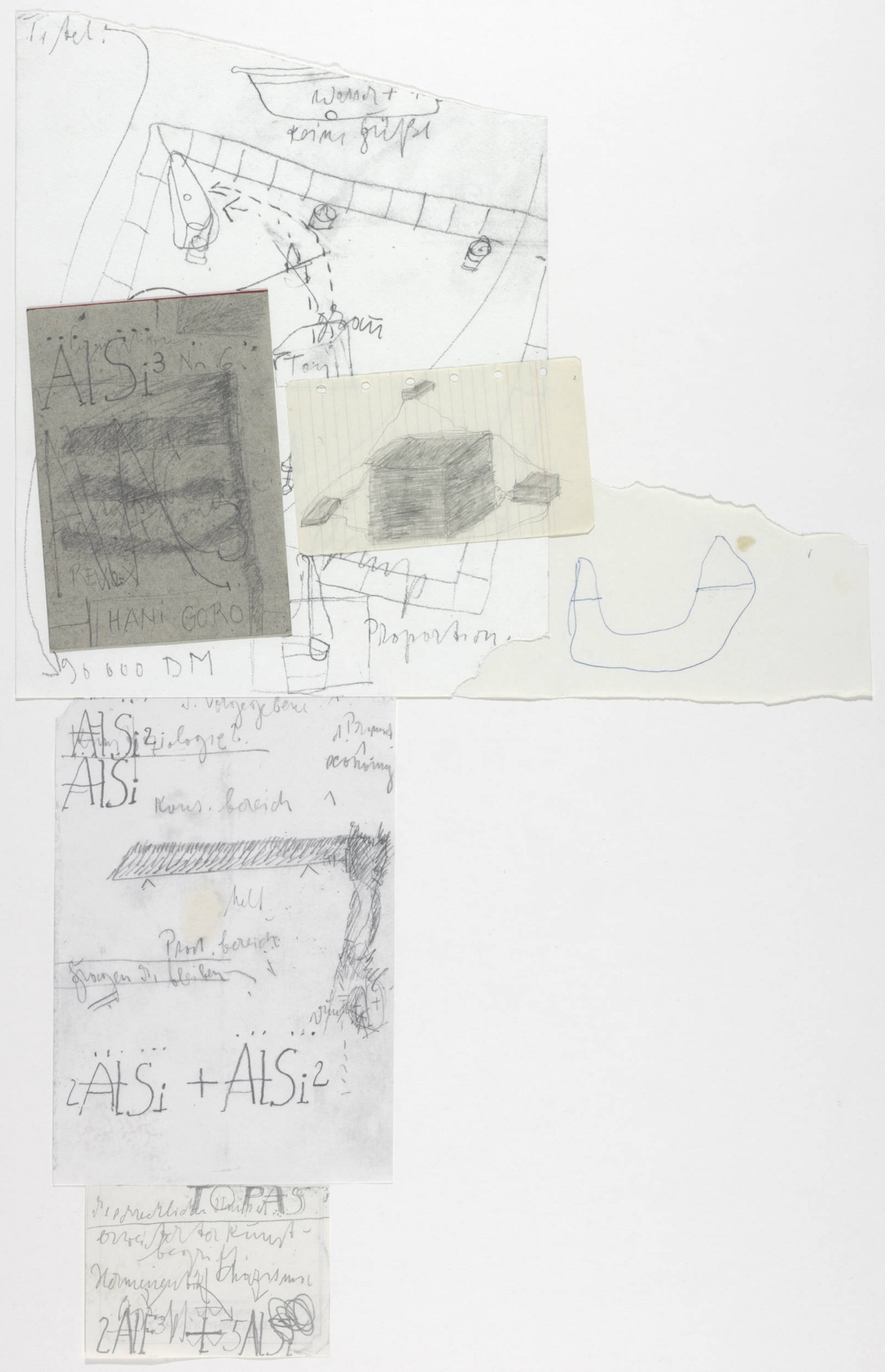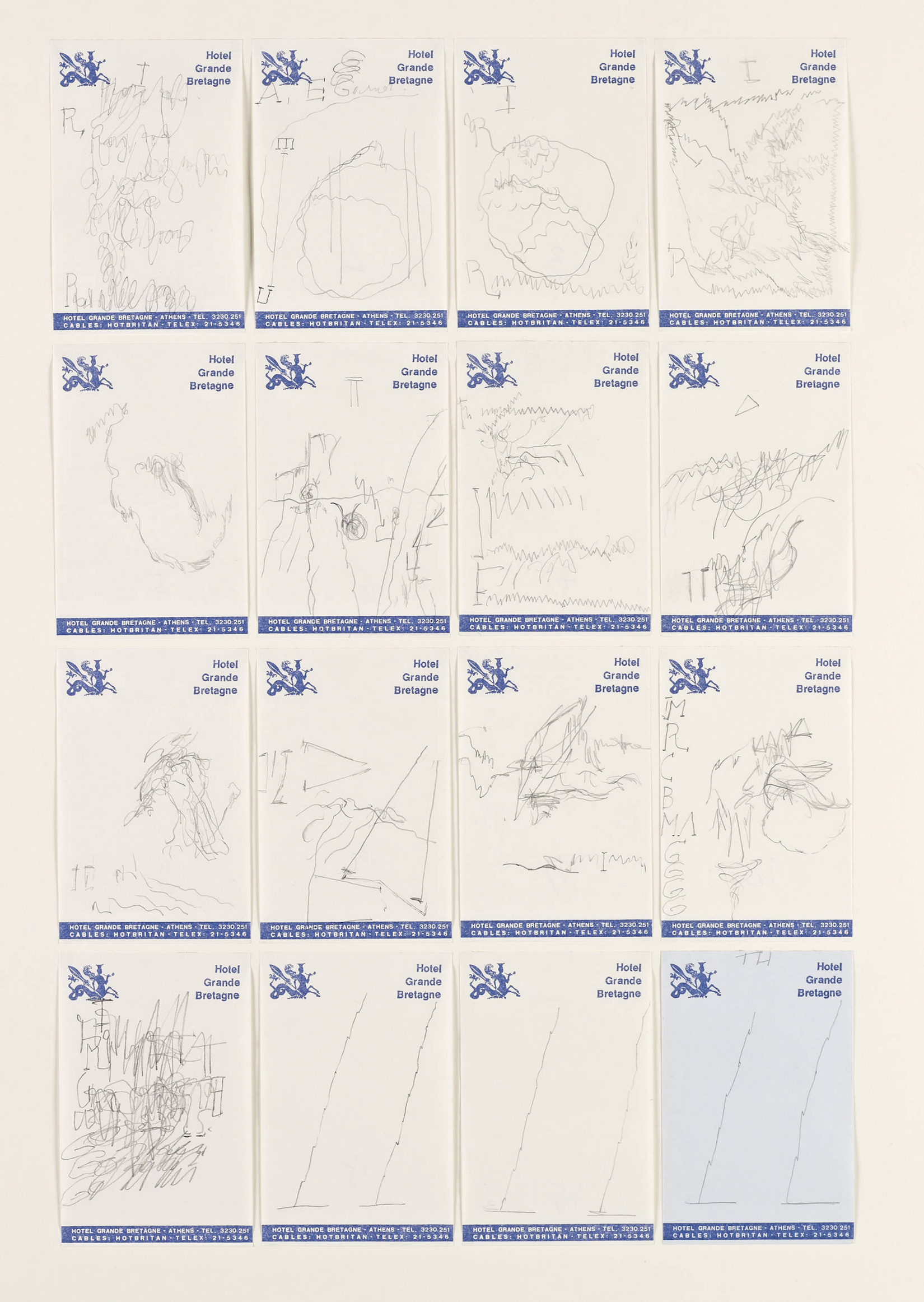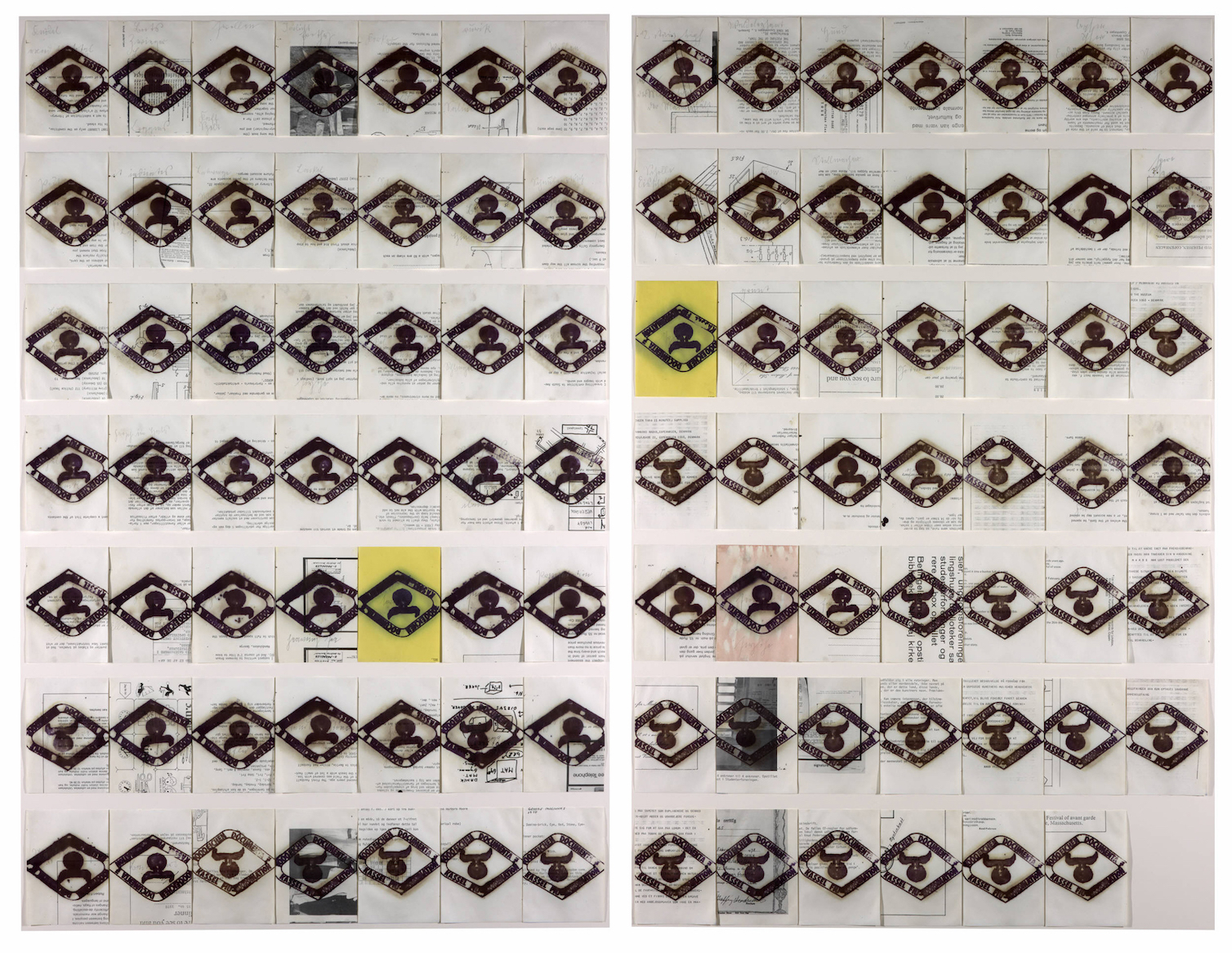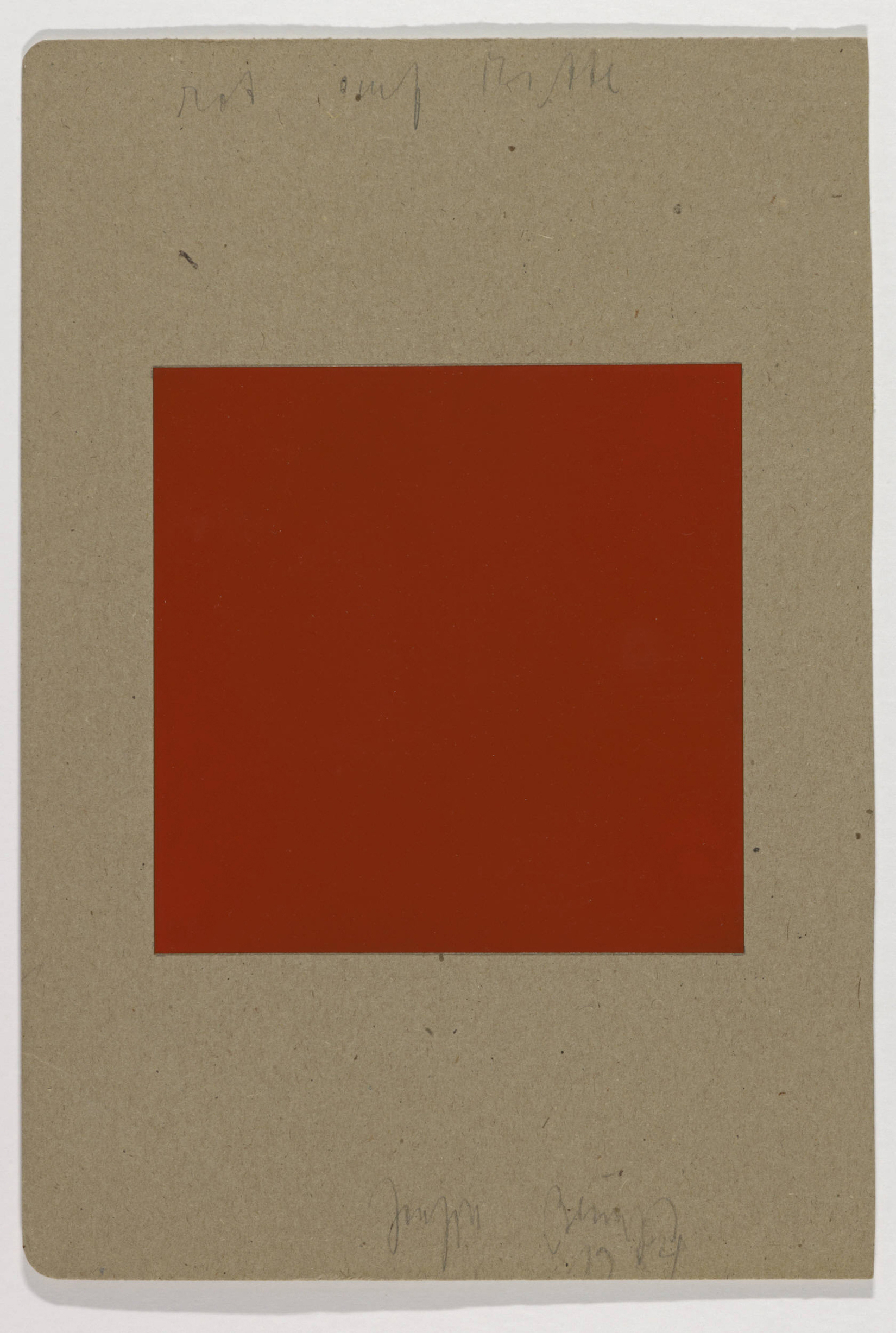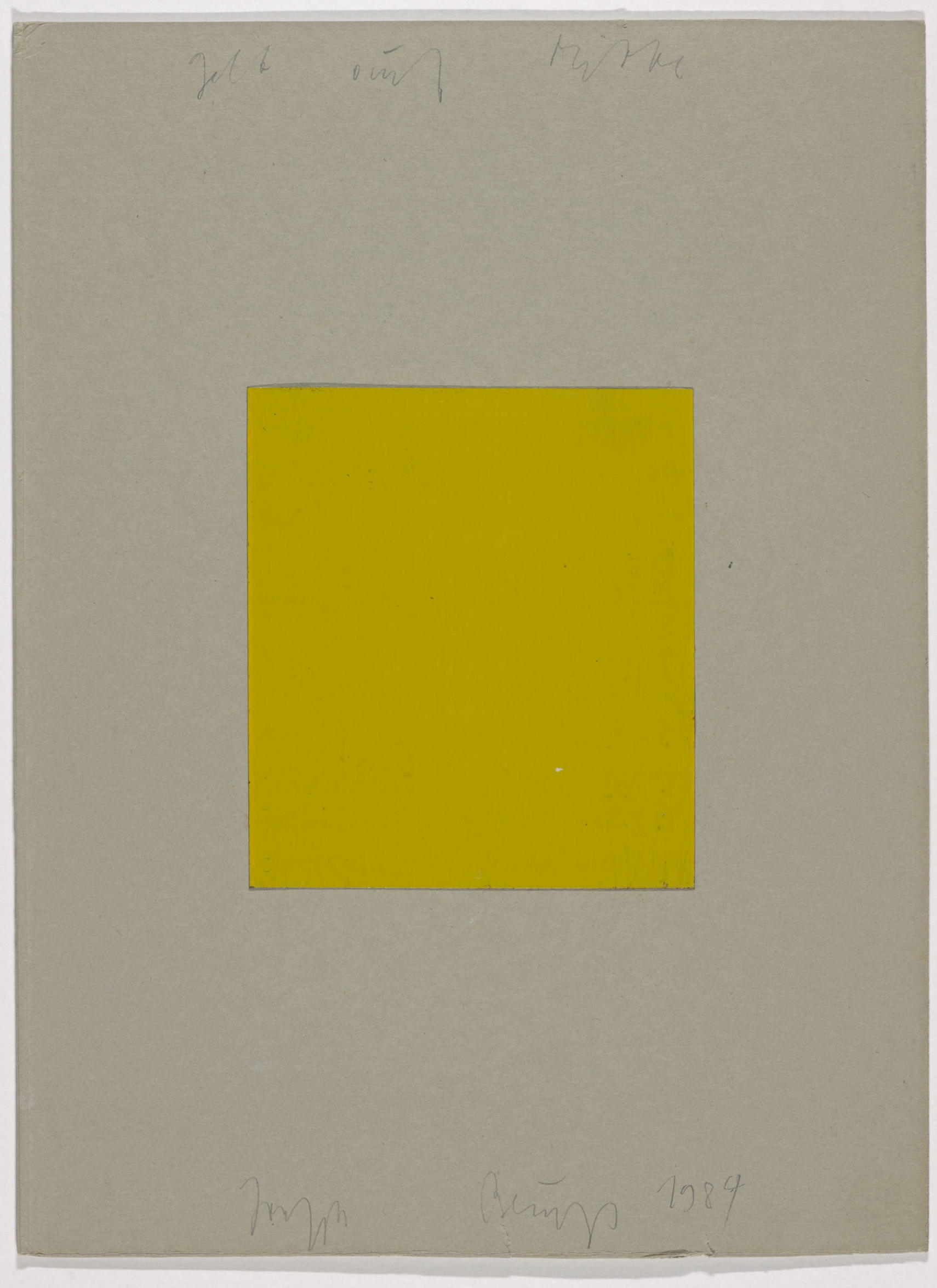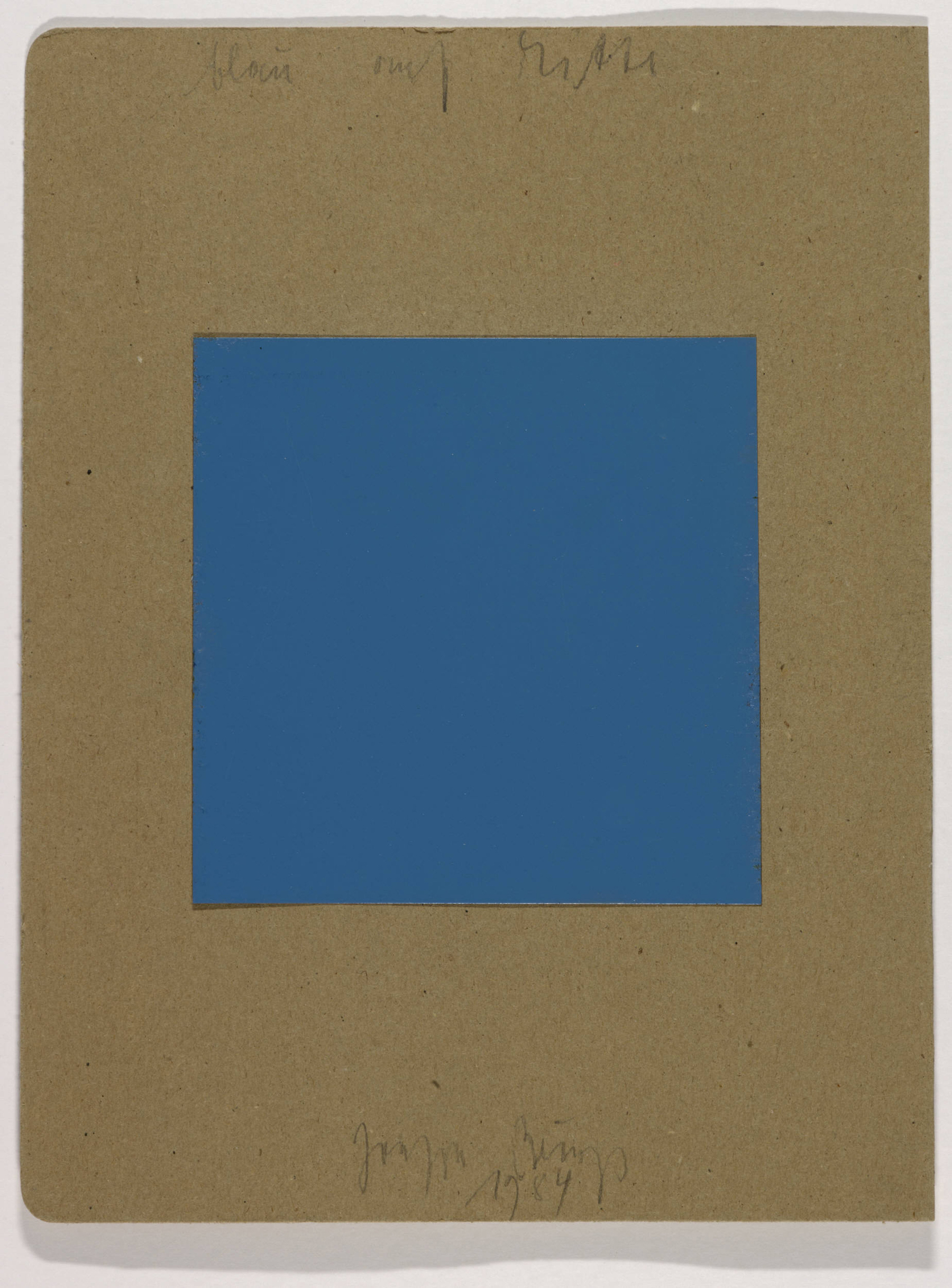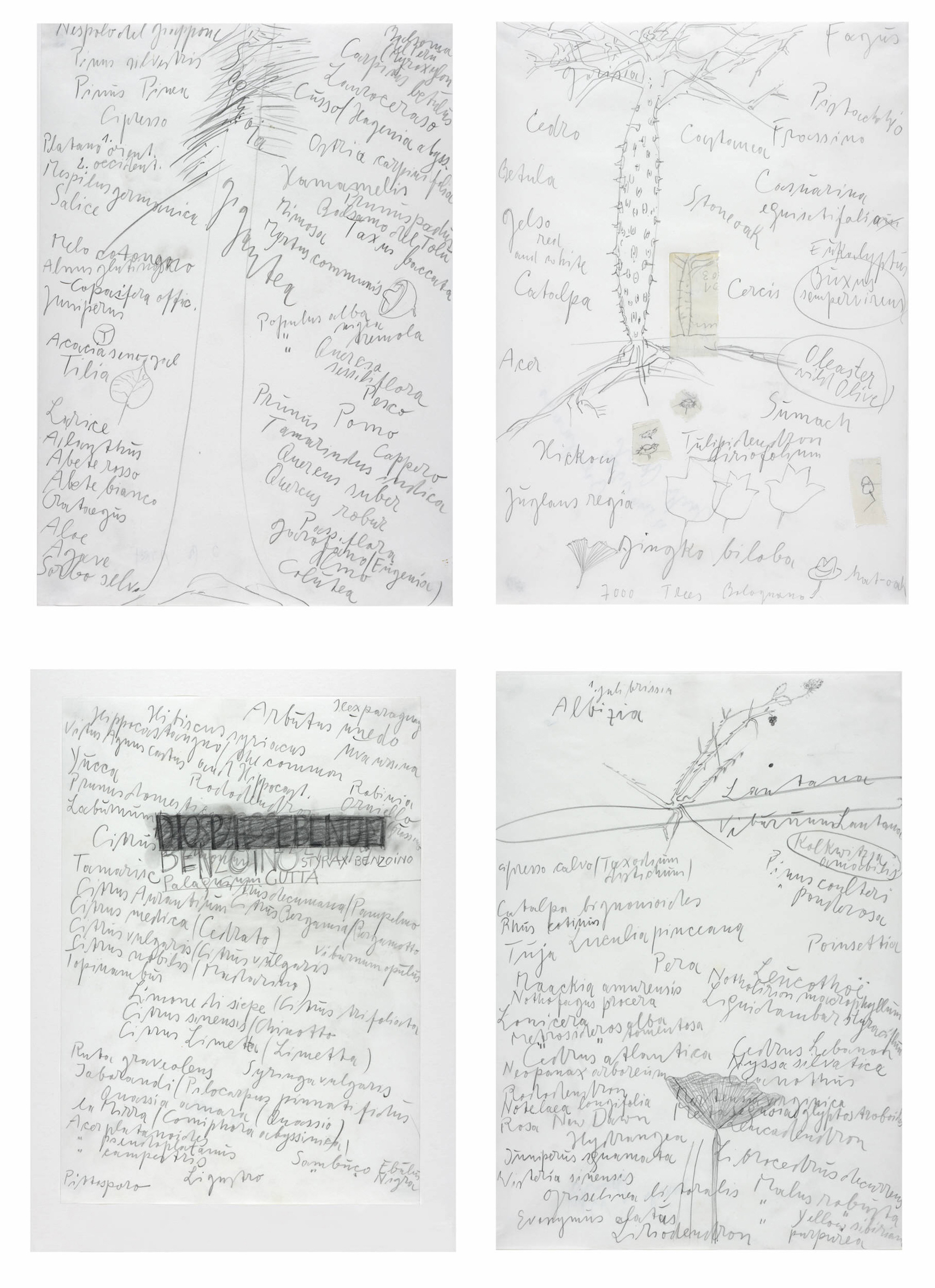Langhaus, 1953-62
1953-62, Wood, glass, felt, oil paint and paper, 1830 x 1545 x 640 mm
Hirschdenkmal, 1958-65
1958-65, Wood, iron and copper, 925 x 1280 x 2575 mm
Tisch mit Aggregat, 1958-65
1958-85, Wood, accumulator, clay and wire, 985 x 580 x 565 cm
Weiße Trübung, 1963
1963, 2 boards, zinc and glass, 485 x 729 x 80 mm
Fettstuhl, 1964-85
1964-85, Wood, glass, metal, fabric, paint, fat and thermometer, 1830 x 1550 x 640 mm
Entwurf für ein Filzenvironment, 1964
1964, Wood, glass, felt, oil paint and lead, 1840 x 1680 x 840 mm
Damp Value, 1964-75
1964-75, Graphite on paper, paint on glass and wire, 811 x 591 x 31 mm
Fettecke (Prozess), 1968
1968, Wood, glass, 2 cardboard boxes and fat, 1835 x 1680 x 840 mm
Filzanzug, 1970
1970, Felt and wood, 1660 x 660 x 260 mm
So kann die Parteiendiktatur überwunden werden, 1971
1971, Felt, wood and glass, 1150 x 850 x 78 mm
Hases Blut, 1974-7
1974-7, Graphite, blood and stamp on aluminium plate, 795 x 1077 x 51 mm
Zu dem Vortrag: Der Soziale Organismus - ein Kunstwerk, Bochum 2.03.1974
1974, Chalk on blackboard, 1000 x 1300 x 20 mm
Zeige deine Wunde, 1977-84
1977-84, Photographic negative, 327 x 450 mm
Gegenuber dem Fixsternhimmel, 1978
1978, 2 paper bags, graphite and stamp on glass support (left): 186 x 127 mm support (right) 187 x 127 mm
Untitled, 1980
1980, Zinc, glass and fish skin on cardboard, 785 x 650 x 150 mm
Celtic Object 2, 1980
1980, Records sleeve, record, jaw bone and wood, 841 x 645 x 56 mm
Domenica delle Palme, 1981
1981, Palm fronds, blossom, sulphur, cardboard, metal and glass, 860 x 1450 x 990 mm
Dumme Kiste, 1982
1982, Copper and felt, 470 x 1080 x 630 mm
Scala Napoletana, 1985
1985, Wood, steel wire and lead, 11000 x 10000 x 6000 mm
Ohne Titel, 1970
1970, Photograph, gelatine silver print on canvas, 2330 x 2275 mm
Coyote I, 1980
1980 Photograph, black and white, on canvas with oil paint 452 x 702 mm
Coyote II, 1980
1980, Photograph, black and white, on canvas with oil paint, 466 x 703 mm
Acer platanoides, 1945
1945, Leaf on paper, 474 x 317 mm
Sun and Pylon, 1946
1946, Graphite, watercolour and chloride on paper, 208 x 297 mm
Dove, Food, Rainbow, 1949
1949 Graphite and watercolour on card 207 x 297 mm
Ice Age, 1951
1951, Graphite and oil paint on paper, 622 x 297 mm
Roses, 1952
1952, Graphite and watercolour on paper, 209 x 254 mm
The Table, 1952
1952, Graphite, watercolour and stamp on paper, 209 x 297 mm
Weird Sister, 1953-62
1953-62, Graphite and oil paint on acetate, 391 x 474 mm
Angel Whale, 1953
1953, Graphite on paper, 298 x 414 mm
The Centrifugal Forces of the Mountains, 1953
1953 Graphite on paper, 3 parts 286 x 210 mm
Geysir, 1953
1953, Watercolour, support (left): 226 x 218 mm support (right): 224 x 219 mm
Weiße Frau in Gras (Fairy), 1954
1954, Graphite and watercolour on card, 193 x 122 mm
Sculptures, 1954
1954, Graphite and watercolour on paper, support (upper): 245 x 347 mm support (lower): 241 x 346 mm
Crystal Measurement, 1954
1954, Watercolour on paper, 276 x 305 mm
2 rote Fische, 1954
1954 Watercolour on paper 399 x 466 mm
Aus dem Leben der Bienen, 1954
1954 Watercolour on paper 502 x 685 mm
Badezimmer der Circe, 1954-8
1954-8 Watercolour and gold paint on paper and board 213 x 304 mm
Passage der Zukunftplanetoiden, 1955
1955, Watercolour on card, 295 x 490 mm
Untitled, 1955
1955 Leaf and lime on cardboard 302 x 244 mm
Actress, 1956
1956 Crayon and watercolour on paper 252 x 200 mm
Beobachtung für Katze, 1956
1956, Graphite on paper, 316 x 241 mm
Untitled, 1957
1957, Stone dust and clay on paper, 316 x 241 mm
Brightly-Lit Stag Chair, 1957-71
1957-71, 2 works on paper, oil paint, graphite and masking tape, 1390 x 963 mm
Aktricen, 1958
1958, Graphite and watercolour on paper, 207 x 290 mm
Clan, 1958
1958, Oil paint and watercolour on paper, 207 x 285 mm
Schmied II, 1958
1958, Graphite on card, 210 x 297 mm
Hexen Feuer Speiend, 1959
1959, Graphite and oil paint on paper, 207 x 297 mm
Hirschdenkmal, 1959
1959, Graphite on paper, 429 x 395 mm
Battery, 1959
1959, Graphite on board on oil paint on paper, 240 x 252 mm
Sonde im Blutkreislauf des Eiches, 1958
1958, Envelope, tempera, graphite and pin on paper, 238 x 532 mm
Filter, 1958
1958, Graphite and gold paint on paper, 287 x 203 mm
Untitled, 1958
1958, Watercolour and tempera on paper, 351 x 475 mm
Jungfrau (Holz), 1958
1958 Oil paint on paper 180 x 237 mm
Untitled (Frauendarstellung), 1958
1958, Oil paint and gouache on paper, 428 x 301 mm
Untitled, 1958
1958 Oil and collage on paper 210 x 297 mm
Die Elektricität, 1959
1959, 3 works on paper, oil paint and watercolour, support (upper): 238 x 336 mm support (centre): 238 x 338 mm support (lower): 238 x 337 mm
Schwangere und Schwan, 1959
1959, Oil paint and watercolour on paper, 276 x 214 mm
Untitled, 1959-60
1959-60, Graphite and oil paint on paper mounted between Perspex in zinc frame, 200 x 292 mm
Untitled, 1959
1959 Graphite, oil paint and typescript on paper 210 x 297 mm
Untitled, 1959
1959, Oil paint and graphite on paper, 279 x 214 mm
Woman with falling stone, 1959
1959, Graphite on paper, 296 x 207 mm
Mädchen drucht elastiche Plastik ein, 1961
1961, Printed paper and oil paint on paper, 238 x 339 mm
2 Schafsköpfe, 1961-75
1961-75, 2 works on paper, oil paint and fat, 755 x 774 mm
Demonstration: Hand 1961
1961, Collage and oil on paper and cardboard, 220 x 220 mm
Untitled, 1961
1961, Graphite on paper, 297 x 209 mm
Kreuz, 1961
1961, Collage and graphite on paper, 177 x 164 mm
Trance in the House of the Shaman, 1961
1961, Collage and graphite on paper, 177 x 164 mm
Braunkreuz, 1962
1962, 5 works on paper, oil paint, support (upper left): 169 x 178 mm support (upper right): 125 x 179 mm support (lower left): 115 x 179 mm support (lower centre): 177 x 178 mm support (lower right): 120 x 179 mm
Physico-Chem-Zeit-Konstellation 11:00 23:00, 1962
1962, 2 works on card, oil paint and graphite, support (upper): 208 x 280 mm support (lower): 212 x 212 mm
Untitled, 1962
1962, Oil paint on paper, 388 x 279 mm
Untitled, 1962
1962, Oil, seeds and vegetable matter on vinyl record, 679 x 523 x 60 mm
+ -, 1962
1962, 2 works on card, oil paint, support (left): 309 x 228 mm support (right): 310 x 228 mm
Tails, 1962
1962, Oil paint, graphite and felt on paper, 397 x 1542 mm
For Siberian Symphony, 1962
1962, Oil paint and watercolour on paper, 636 x 633 mm
Runrig, 1962-72
1962-72, 3 works on paper, oil paint, on board, support (upper): 197 x 161 mm support (centre): 197 x 174 mm support (lower): 197 x 197 m
Stück 17, 1963
1963, Oil paint on typescript on paper, 280 x 215 mm
Fluxus-Namensliste, 1963
1963, Collage, ink and graphite on paper, 620 x 218 mm
Untitled, 1963
1963, Paper on cardboard, 508 x 363 mm
Untitled, 1963-4
1963-4, 4 works on printed paper, oil paint, support (upper left): 292 x 407 mm support (lower left): 296 x 408 mm support (centre): 304 x 225 mm support (right): 575 x 402 mm
Filz Aktion, 1963
1963, Oil paint and felt on paper, 647 x 434 mm
Felt Sculptures, 1964
1964, Graphite and oil paint on paper, 391 x 270 mm
Therapeuticum, 1964
1964, Graphite, oil paint and fat on paper, 294 x 209 mm
Für Filzplastik, 1964
1964, 4 works on paper, oil paint and fat, on board, support (lower left): 257 x 377 mm support (lower centre): 260 x 378 mm support (lower right): 250 x 378 mm support (upper): 398 x 279 mm
For Brown Environment: Giant Vessels, 1964
1964, Oil paint on paper, 766 x 741 mm
For Brown Environment: Giant Vessels, 1964
1964, Oil paint on paper, 738 x 1052 mm
Für Braun Raum, 1964
1964, 2 works on paper, oil paint, support (left): 360 x 278 mm support (right); 363 x 233 mm
Tunnel (Cathode Rays) Felt-Room Action, 1964
1964, Graphite, ink and oil paint on paper, 236 x 195 mm
Untitled, 1964
1964, Oil paint, gold paint, ink and graphite on paper, 295 x 208 mm
Aktrice, 1964
1964, Graphite on cardboard, 568 x 208 mm
Motor 4, 1964-80
1964-80, Mixed media, 344 x 184 mm
Unter Spannung, 1964
1964, Oil paint, gouache and graphite on paper, 296 x 209 mm
Naturgeschichte, 1964-82
1964-82, Household paint, shellac and sand on board, 333 x 366 mm
Houses of the Shaman, 1965
1965, 2 works on paper, oil paint and graphite, support (left): 359 x 259 mm support (right): 353 x 255 mm
Sostanza Plastica, 1965
1965, Oil paint on paper, 608 x 527 mm
Dwarf (Self-Portrait), 1965
1965, Graphite on paper, 296 x 209 mm
Intelligentia, 1965
1965, Graphite on paper, 254 x 256 mm
Untitled, 1965
1965, Paper on paper, 417 x 296 mm
Granite in Arid Chalk, 1965
1965, Graphite and watercolour on paper, 297 x 208 mm
Filz-Aktion für eine Aktrice, 1965
1965, Oil paint and graphite on paper, 210 x 298 mm
Untitled, 1965
1965, Graphite and fat on paper, 209 x 297 mm
Partitur für Manresa, 1966
1966 , Paper and graphite on paper, 209 x 296 mm
Whale Trap, 1966
1966, Graphite and oil paint on cardboard, 240 x 372 mm
Schmela, 1966
1966, Oil paint on paper, 1966 400 x 564 mm
Partitur für Sibirische Symphonie, 1966
1966, Typescript on paper on 2 cardboards, support (left): 309 x 209 mm support (right): 297 x 212 mm
Der Atem, 1966
1966, Fat, copper oxide and graphite on paper, 514 x 411 mm
Object for MANRESA, 1966
1966 Cardboard and string 447 x 311 mm
Partitur, 1967
1967, Oil paint and graphite on cardboard and paper adhered to plywood, 692 x 694 mm
Deutsche Studentenpartei, 1967
1967, Ink on paper, support, each: 208 x 295 mm
For FOND II, 1968
1968, Oil paint and ink on paper, 264 x 200 mm
Walk Only When You Feel; Your Walk Starts Revolution, 1969
1969, Oil paint, iron chloride, watercolour and graphite on paper, 279 x 207 mm
A Party for Animals, 1969
1969, Ink, oil paint and stamp on lithograph on paper, 526 x 188 mm
Young Blacksmith with his Work, 1971
1971, Graphite on paper, 214 x 268 mm
Untitled, 1972
1972, Leaves, ink and graphite on paper, 590 x 420 mm
La Rivoluzione Siamo Noi, 1972
1972, Silkscreen, ink and stamp on paper, 1896 x 987 mm
Score for Action with Transmitter (Felt) Receiver in the Mountains, 1973
1973, Graphite on paper, 241 x 172 mm
Astral Chemical Goddess, 1974
1974, Graphite on paper, 253 x 260 mm
Night in the Rafters, 1974
1974, Oil paint on paper, 758 x 557 mm
Untitled, 1984
1984, Graphite and oil paint on paper, 208 x 148 mm
The Woman with the Dog, 1975
1975, Graphite, oil paint and metal on paper and card, support (top): 254 x 264 mm support (lower, each): 254 x 60 mm
Honey is Flowing in All Directions, 1976
1976, Ink, graphite and stamp on paper, 210 x 290 mm
Sekretarstasche, 1976
1976, Envelope and ink on papers, 408 x 248 mm
Electric Sphinx, 1977
1977, Graphite on paper, 214 x 134 mm
Show Your Wound, 1977
1977, 6 photographic negatives, support (top left): 238 x 330 mm support (top right): 240 x 329 mm support (centre left): 238 x 328 mm support (centre right): 239 x 329 mm support (lower left): 237 x 828 mm support (lower right): 237 x 329 mm
The Shaman's Two Bags, 1977
1977, Graphite, crayon and ink on paper, support (left); 760 x 564 mm support (right): 745 x 599 mm
Ausruf, 1978-83
1978-83, Oil paint and ink on printed paper, 479 x 199 mm
Pyramidales Bild, 1979
1979, 2 words on printed paper, oil paint, support (upper): 324 x 546 mm support (lower): 322 x 547 mm
Kampf, 1980
1980, Collage, oil and graphite on paper, 535 x 500 mm
Drawing for Domenica delle Palme vitrine, 1981-5
1981-5, Graphite on paper, 210 x 296 mm
Mit Filzplastik, 1981
1981, Collage, crayon and ink on paper, 577 x 367 mm
To Mikis Theodorakis, 1982
1982, Graphite on paper, 16 parts, 124 x 80 mm
Untitled, 1983
1983, Ink, graphite and stamp on printed paper, support (each): 145 x 102 mm
Red on Centre, 1984
1984, Painted metal on card, 316 x 217 mm
Yellow on Centre, 1984
1984, Painted metal on card, 370 x 274 mm
Blue on Centre, 1984
1984, Painted metal on card, 316 x 240 mm
La Piantagione, 1984
1984, 4 works on paper, graphite and paper, 417 x 296 mm
